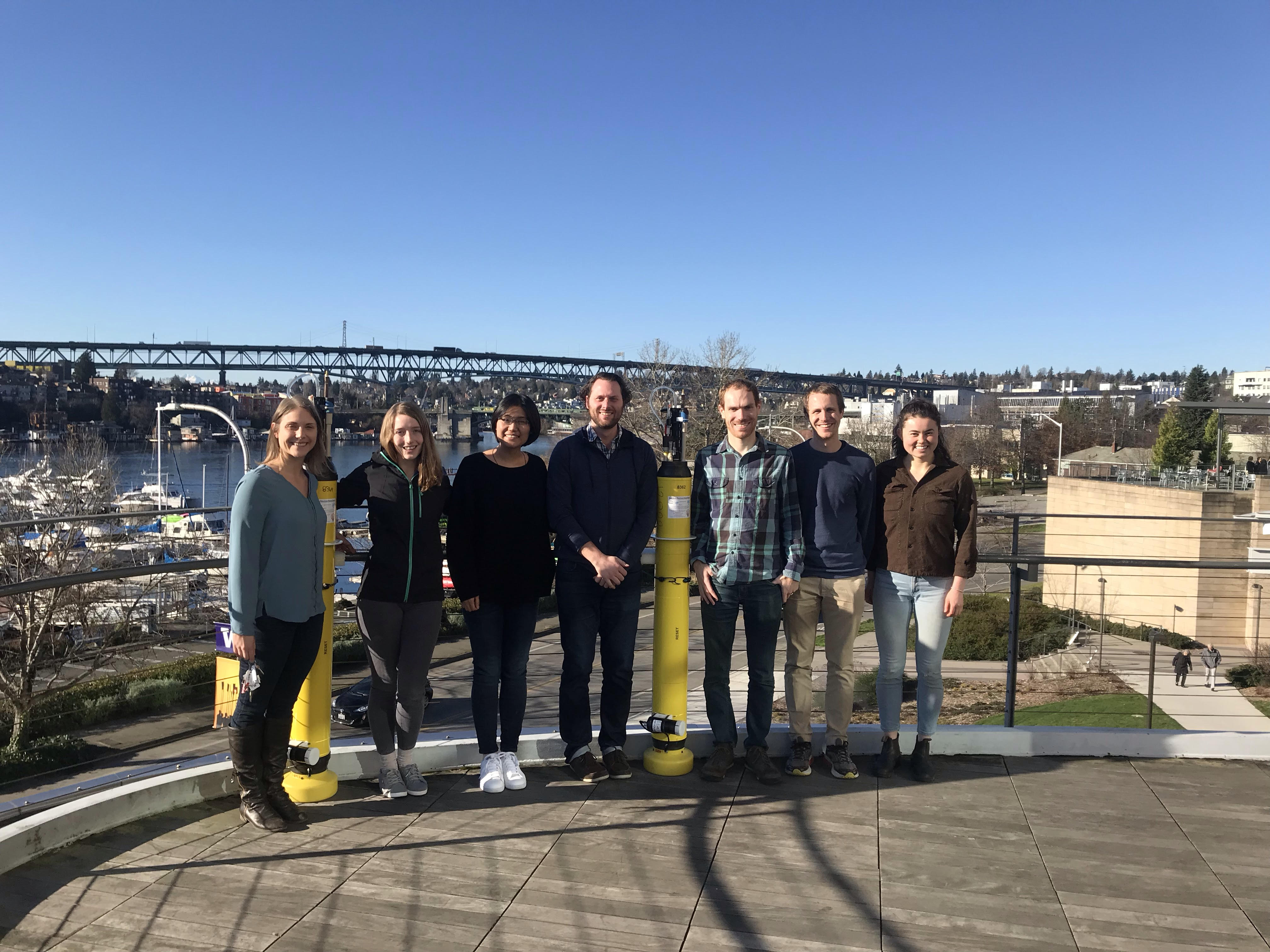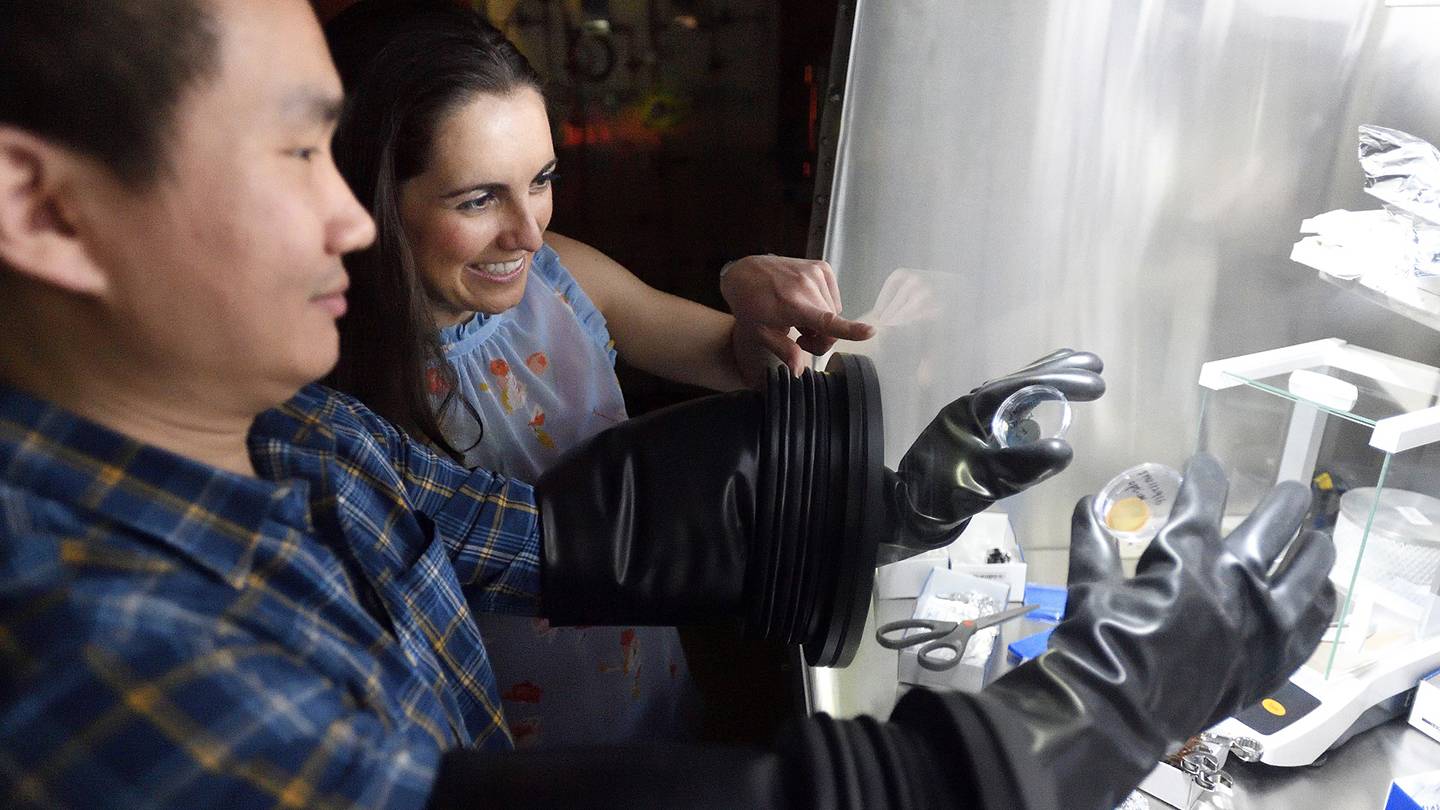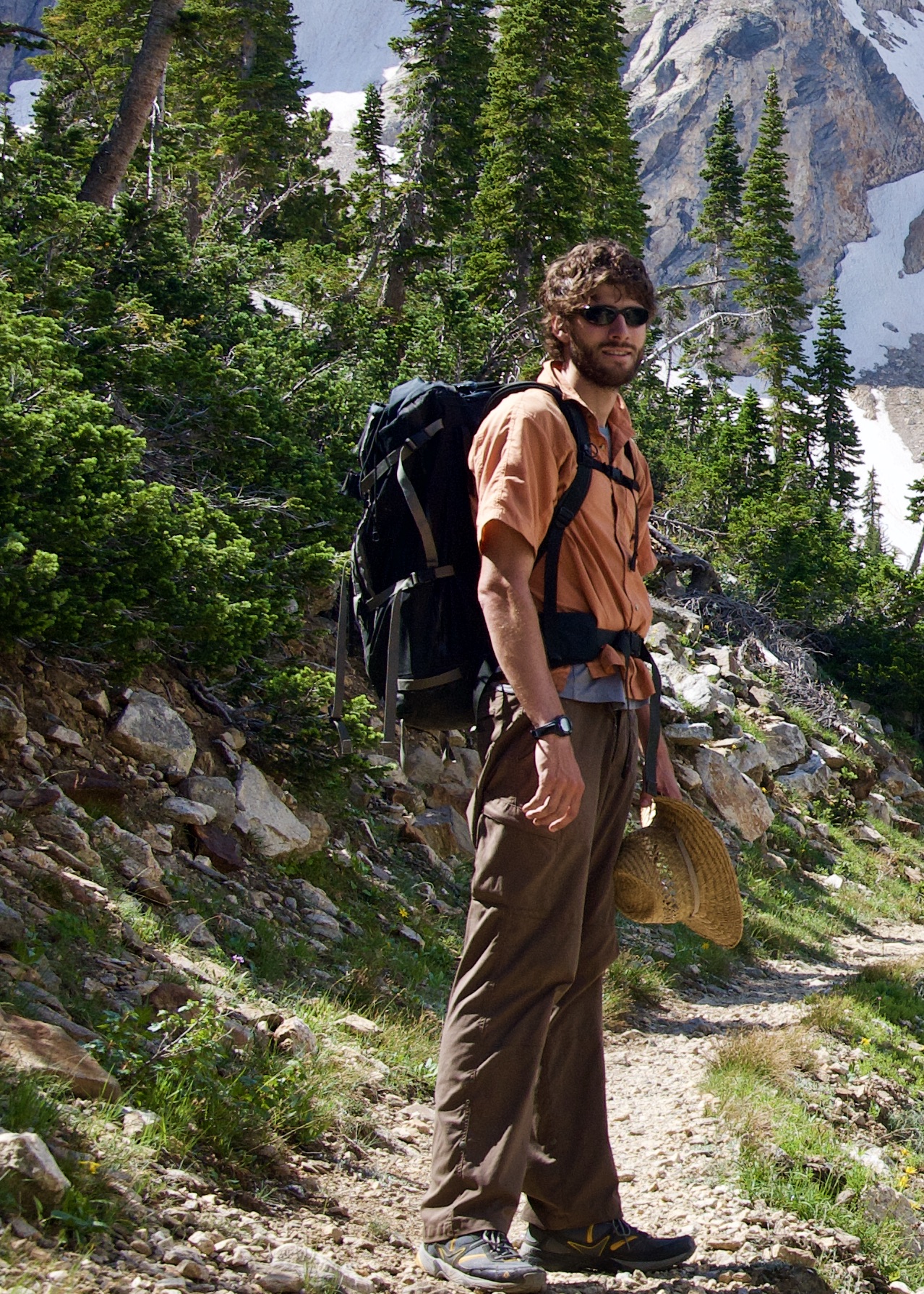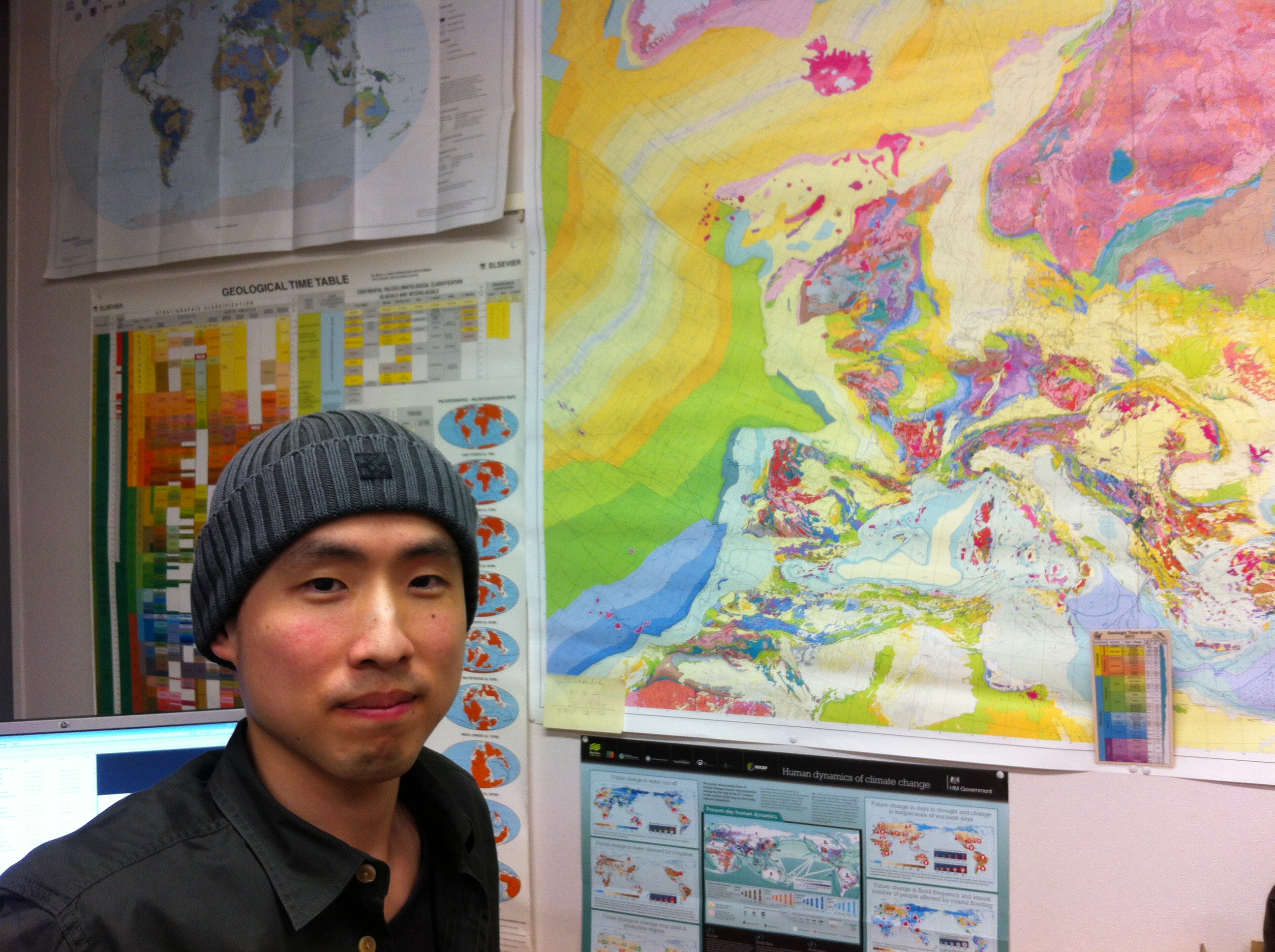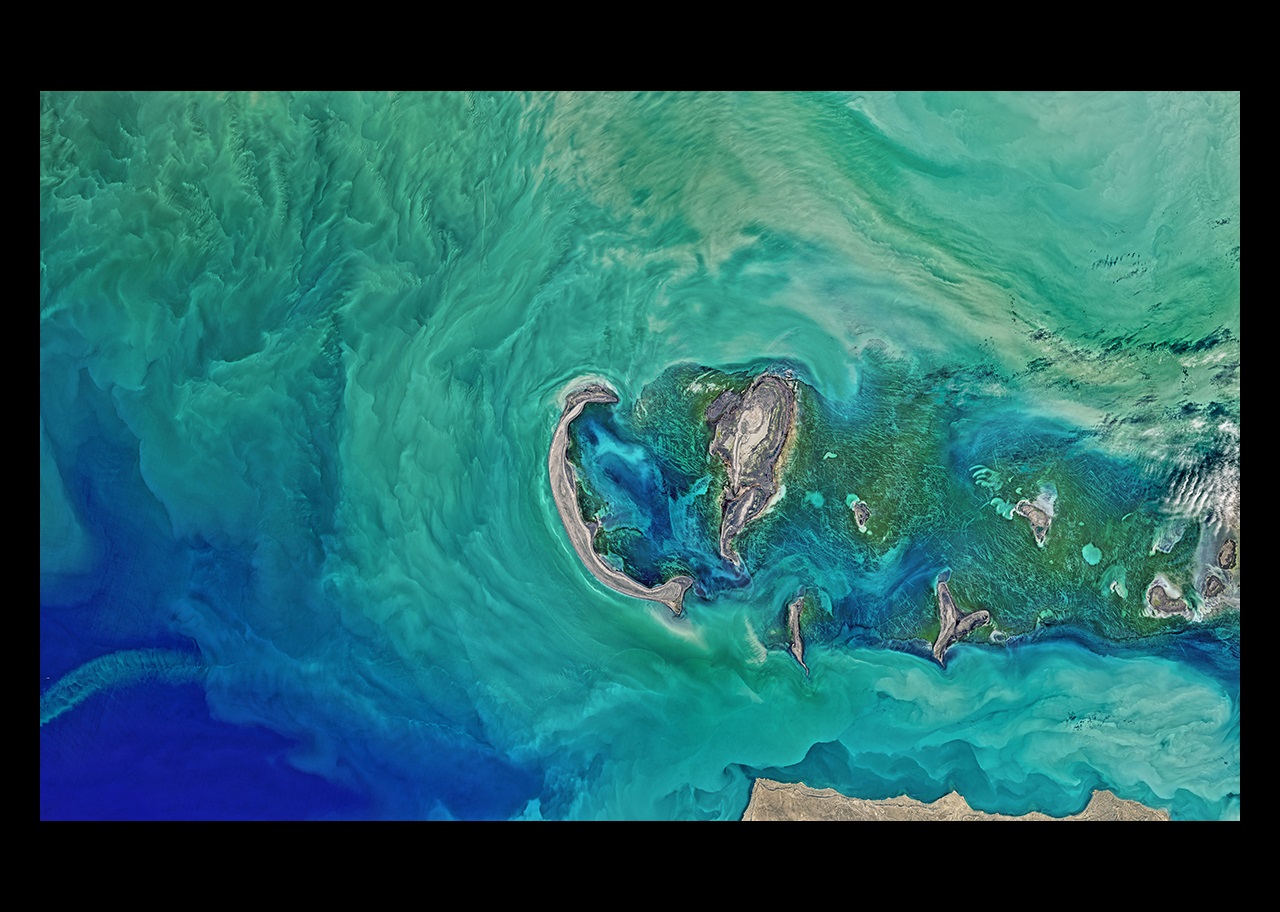
James B. Macelwane Medal
Information on the Macelwane Medal
The James B. Macelwane Medal is given annually to three to five early career scientists in recognition of their significant contributions to Earth and space science. Nominees are selected for the medal based on their depth and breadth of research, impact, creativity as well as service, outreach, and diversity.
The Macelwane Medal was named in honor of former AGU president James B. Macelwane (1953-1956) who was renowned for his contributions to geophysics. Macelwane was also deeply interested in teaching and encouraging scientists, founding the Department of Geophysics at St. Louis University and serving as Dean of the Graduate School, along with various other roles, all while always committing to teach at least one course.
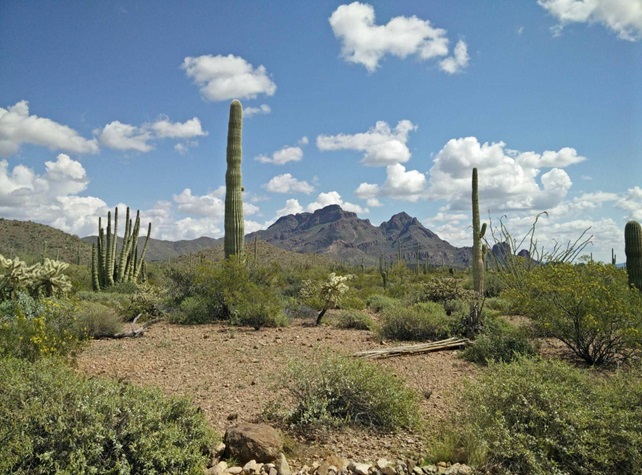
Award benefits
-
1Awardee will be made an AGU Fellow (if the honoree has been an AGU member for three consecutive years and is not already a Fellow)
-
2Recognition at the AGU Fall Meeting during the award presentation year
-
3Recognition and invitation to give a talk at the AGU Fall Meeting
-
4Four complimentary hotel nights at the AGU Fall Meeting
-
5Two complimentary tickets to the Honors Banquet at the AGU Fall Meeting
Eligibility
AGU membership is not required for nominees, however, they should be in compliance with the Conflict of Interest Policy. To better understand eligibility for nominators, supporters and committee members, review AGU’s Honors Conflict of Interest Policy.
-
1
Nominees: The nominee must be an early career scientist within 10 years of receiving their Ph.D. or the highest equivalent terminal degree as of 1 January of the year of the nomination.
AGU Honors Program Career Stage Eligibility Requirement Allowance Policy: Exceptions to this eligibility requirement can be considered based on family or medical leave circumstances, nominees whose work conditions have been impacted by the COVID-19 pandemic, or for other extenuating circumstances. All requests will be reviewed. For questions contact [email protected]. -
2Nominators: Nominators must be active AGU members and in compliance with the Conflict of Interest Policy. Duplicate nominations for the same individual will not be accepted. However, one co-nominator is permitted (but not required) per nomination.
-
3Supporters: Individuals who write letters of support for the nominee are not required to be active AGU members but must be in compliance with the Conflict of Interest Policy.
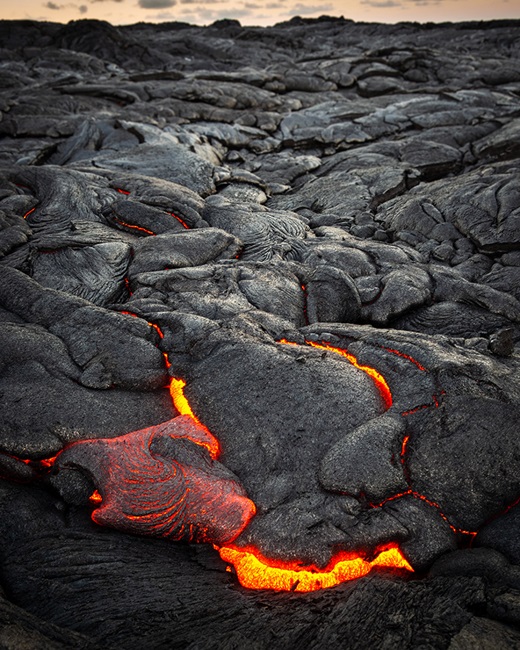
Nomination package
Your nomination package must contain all of the following files, which should be no more than two pages in length per document. For detailed information on the requirements, review the Union Awards, Medals and Prizes Frequently Asked Questions.
- A nomination letter with one-sentence citation (150 characters or less). Letterhead stationery is preferred. Nominator’s name, title, institution, and contact information are required. The citation should appear at either the beginning or end of the nomination letter.
- A curriculum vitae for the nominee. Include the candidate’s name, address and email, history of employment, degrees, research experience, honors, memberships, and service to the community through committee work, advisory boards, etc.
- A selected bibliography stating the total number, the types of publications and the number published by AGU.
- Three letters of support not including the nomination letter. Letterhead is preferred. Supporter’s name, title, institution, and contact information are required.
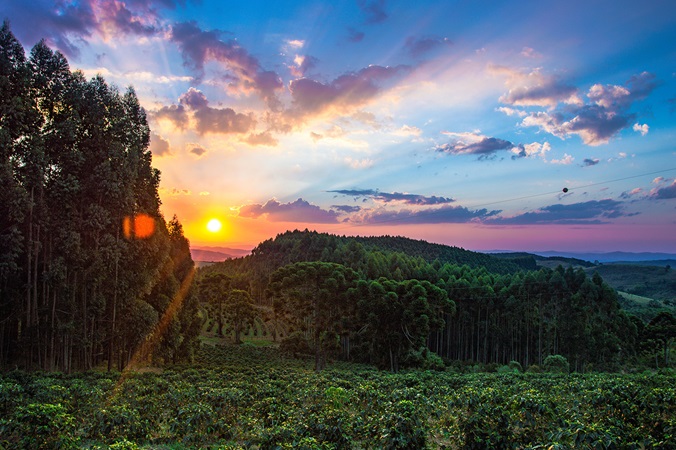
Suggestions for nomination and support letters
All letters should focus on the impact, novelty, creativity, depth, and breadth of the nominee’s research rather than quantitative metrics such as the number of publications or H-factor or biographical facts that are listed in the nominee’s CV. Nominators and supporters should provide a short description of how they know the nominee and his/her work and provide a personal perspective on how the nominee compares with other early career scientists in a broad field. Letters should include an evaluation of:
- The nominee’s stature
- The nominee’s impact on mentoring and teaching
- The nominee’s participation in high-level committees or outreach activities
Nominators and supports should include their own credentials or associations with scientific organizations such as AGU Fellow or member of the National Academies.
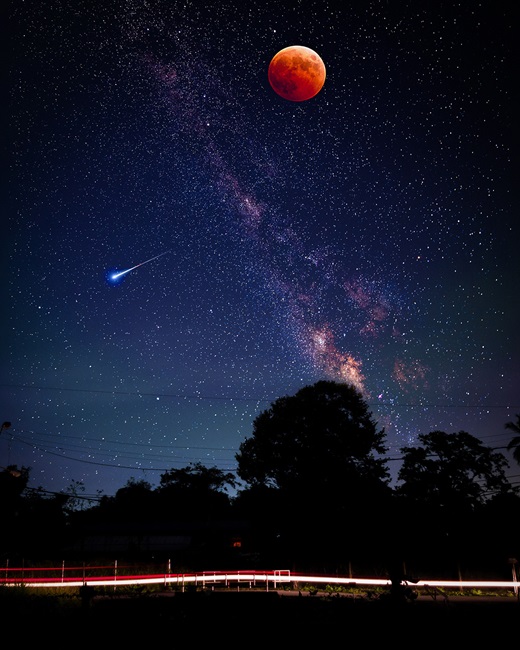
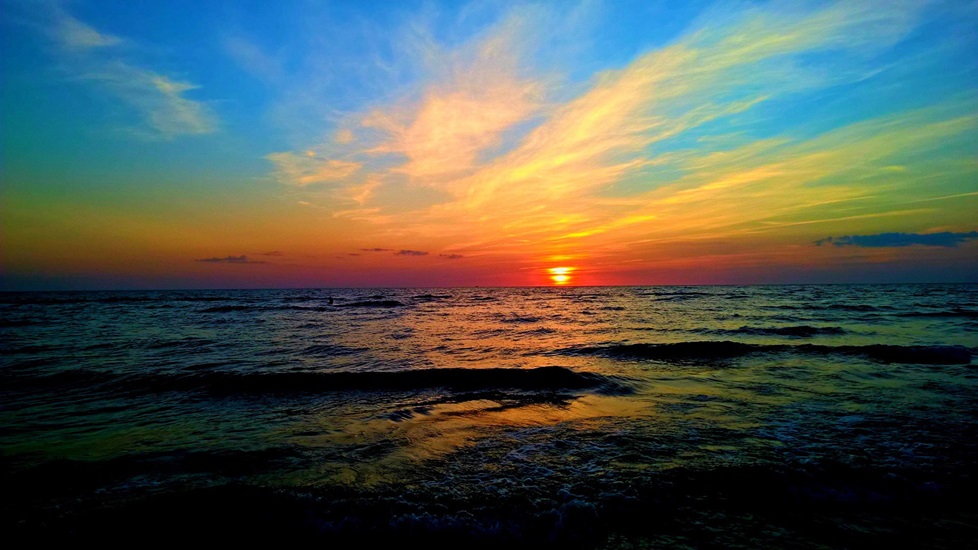
Recipients

Jessica R Creveling
Citation
Jessica “JC” Creveling’s work reflects the power of interdisciplinary research practiced through a triptych of geology, geophysics and geochemistry. She has fundamentally deepened our understanding of critical events in Earth history through a creative combination of meticulous fieldwork, computational modeling and laboratory measurements. Moreover, JC is recognized as a gifted teacher and patient mentor, building a more inclusive community by attracting underrepresented minorities and first-generation and disadvantaged college students into geoscience research. As an undergraduate at Colorado College, JC learned that elucidating processes in sedimentary geology requires facies-level interrogation of strata, and this ignited her interest in sedimentary sequences. Her Ph.D. at Harvard combined fieldwork in Australia with geochemistry to explore environmental conditions that led to dramatic phosphate preservation across the Ediacaran to Cambrian transition. Moreover, she jumped into geophysical modeling by exploring conditions on Earth’s shape necessary to drive rapid, high-amplitude oscillations in Earth’s rotation pole inferred for the Neoproterozoic. JC’s interest in the Neoproterozoic continued at the California Institute of Technology, where her field-based investigation of the Noonday cap carbonate in Death Valley uncovered significantly more complex sea level histories than expected from eustasy. She also began intense study of sea level physics to complement this work. JC’s epiphany was to realize that physical processes that drive geographic variability in sea level during the Pleistocene ice age would be active in ancient events, where eustasy has been the prevailing assumption, and she is the first to bring the full machinery of sea level physics to bear on deep time glacial events. A series of seminal papers followed, including modeling studies of the “sea level fingerprint” of snowball Earth deglaciation and Late Ordovician glaciation that reconciled enigmatic field data; comparison of coral records and modeling results to constrain sea level high stands during marine isotope stages 5a and 5c; reanalysis of karstification-driven uplift of scarps along the Atlantic coastal plain that revised the age of the features; and a study, with graduate student Meghan King, of the unique imprint of ice age dynamics on stratigraphy along the U.S. west coast during the last glacial cycle. These studies have motivated a reassessment of correlation methods used in sequence stratigraphy and significantly expanded our understanding of the complex connection between local and global mean sea level. — Jerry X. Mitrovica Harvard University Cambridge, Massachusetts
Response
Thank you, Jerry Mitrovica, for your generous remarks and Maureen Raymo, David Evans, Victoria Orphan, the James B. Macelwane Medal Committee, and the Union for the honor and the opportunity to publicly convey gratitude to many generous mentors. It’s not lost on me that the good fortune to receive such an award emerges from the greater fortune of the company that I keep. Sam Bowring mentored me to become a geoscientist deeply familiar with the questions and methods of a secondary discipline, and his words direct my career. I thank Paul Myrow, Andy Knoll, John Grotzinger and Sam for laying my geological bedrock. I thank Jerry Mitrovica and Daniel Muhs for orienting me toward the confluence of stratigraphy and geophysics. And I thank Mike Gurnis for asking me a few questions—that he likely won’t remember—that really made me think. Without geophysical collaborators Carling Hay, Jacky Austermann, Tamara Pico and Harriet Lau, my world would be much narrower and much less quantitative. Thank you all. I am indebted to Oregon State graduate students Meghan King, Schmitty Thompson, Cedric Hagen, Paige Reynolds and Harvard student Linda Pan for propelling our research forward. I thank my Oregon State colleagues for innumerable generosities, especially Andrew Meigs, Ed Brook and Peter Clark; I thank my dean, Tuba Özkan-Haller, for saying yes even when I say no; I thank my National Science Foundation program officers for taking a chance on me and my college’s exceptional administrative staff for keeping me solvent. Most importantly, I thank my dad, Brad, for reviewing the entirety of my high school physics homeworks; my mother, Linda, for sharing the joys of creative writing and staunch organization; and I thank Frank Sousa, undoubtedly the better geologist in our union, for making each day together bright. — Jessica Creveling Oregon State University Corvallis, Oregon

Pierre Gentine
Citation
We are honored to introduce Professor Pierre Gentine, who received the 2022 AGU James B. Macelwane Medal for his fundamental research on land-atmosphere interactions and pioneering contributions to integrating machine learning concepts into climate modeling. Professor Gentine’s group is known for groundbreaking advances in integrating machine learning methods with physical models/processes to advance our understanding of the Earth system. He introduced frameworks for using deep learning to improve cloud-resolving simulations for climate modeling. His group led the development of the Cloud Brain (CBRAIN), a novel deep learning framework for skillful prediction of convection in climate models. With these contributions, he transformed the dominating top-down thinking (and simulation strategy) by opening a unique avenue for a future class of convection parameterizations in climate models. Within a short period of time from these pioneering publications, many other artificial intelligence-based methods were developed by others. Arguably, Professor Gentine’s innovative work on this topic spurred a new wave of research in using deep learning for climate science. He has successfully established the National Science Foundation Science and Technology Center (STC) Learning the Earth with Artificial Intelligence and Physics (LEAP) to further advance this field. While most scientists focus, at least in the early parts of their career, on one field of study, Professor Gentine has progressed on several different fronts. His group developed a new theory for surface layer turbulence, discovered the key role of cloud albedo feedback and of the morning fog layer in determining the diurnal course of surface heat fluxes in the tropics, and revealed the power of satellite observations to provide new insights into water stress on global plant physiological response. Further, Professor Gentine’s group has shed light on the magnitude of the effect of soil moisture variability on the long-term carbon sink and the mechanisms responsible for associated carbon losses. They showed that soil moisture variability and trends induce large carbon dioxide sources on the order of the land carbon sink itself. In summary, Professor Gentine is an exceptional scientist and a dedicated mentor who has achieved an international standing through groundbreaking and high-impact contributions. We are thrilled that he was selected as one of the recipients of the 2022 James B. Macelwane Medal. Congratulations, Pierre! — Amir AghaKouchak University of California, Irvine Irvine, California — Efi Foufoula-Georgiou University of California, Irvine Irvine, California

Lars N Hansen
Citation
Lars Hansen stands apart through his integration of field-based insights, novel experimental work, innovative microstructural analyses and application of results to investigate a wide range of geodynamic processes. The impact of his work is extraordinary — and amenable to investigation by quantitative analysis of natural rocks and comparisons with geophysical data. He is a go-to expert on the application of lab data to investigate lithosphere rheology, processes that produce viscous and seismic anisotropy and the role of grain size evolution on strain localization. His most recent work on transient creep presages new understanding of why the effective viscosity of the mantle depends on the timescale of observation — a culmination of his integrative approach to process-based microphysics. Lars started his career in rock deformation by conducting experiments designed to investigate grain boundary sliding in mantle rocks. Although the importance of grain size-sensitive creep processes had been recognized for more than a decade, Lars completed the first suite of experiments designed to isolate important parameters required to quantify a flow law. His results indicate that grain boundary sliding is a dominant deformation mechanism throughout the upper mantle. Lars then developed innovative techniques to conduct large-strain torsion experiments to quantify relationships for strain localization, the development of crystallographic preferred orientation, and viscous anisotropy of mantle rocks. Much of his recent work focuses on the strength of the mantle lithosphere. Here he and his students and postdocs leveraged and developed new high-resolution microscopy techniques to study the micromechanics of deformation processes. His analysis of scale effects for dislocation interactions during low-temperature plasticity provided important insights for understanding how to apply lab data to constrain the strength of the lithosphere. Previous data for olivine showed large scatter, a problem that plagued the rock deformation and geodynamics community for years. The solution lay in the effect of grain size on strength and a better quantification of strain hardening. By leveraging the physical insights gained from these studies, Lars developed innovative models and experiments to investigate transient creep that provide a new foundation for understanding processes that control glacial isostatic adjustment, postseismic relaxation and seismic attenuation. Lars not only excels in research, but he is also a highly interactive and respected member of the broader solid Earth geophysics community. The respect he has garnered reflects both his incredible research insight and his ethos; he is a kind and thoughtful person who brings out the best in others. — Greg Hirth Brown University Providence, Rhode Island

Scott Jasechko
Citation
Scott Jasechko is leading a transformation in our understanding of hydrogeology by creating and analyzing continental- and global-scale compilations of hydrometric and isotopic data, guided by clever conceptual models of the underlying processes. Some key insights from Scott's work include that (a) global aquifers are dominated by fossil groundwater but they also contain, even at depth, a fraction of much younger waters, implying that they are vulnerable to modern contamination; (b) global rivers contain significant fractions of water that are only a few months old, implying that river waters are much younger than the aquifers that feed them, reflecting strong heterogeneities in subsurface residence times; (c) declining groundwater levels threaten the reliability of irrigation and drinking water supply across much of the United States and around the world; (d) water tables in coastal aquifers often lie below sea level, indicating significant potential for salinization; and (e) water tables near streams across the United States often lie below the stream surface, implying widespread risk of streamflow losses into underlying aquifers. Scott’s work recognizes humans as a central force in shaping large-scale hydrology. His work is alerting the world to the scale and extent of human re-plumbing of water flows and offering actionable knowledge for resource management at local to global scales. Scott Jasechko's contributions are notable not only for their scope but also for their thorough scholarship, their analytical rigor and their solid grounding in observations and data. Many of his papers have been based on first compiling all of the available data, worldwide, on a given topic. For example, for their papers on groundwater depletion and sustainability, Scott and his collaborator Debra Perrone spent years compiling water level measurements from over 39 million wells around the world. His landmark review of global isotope hydrogeology is 131 pages long, with 50 pages of references. This guy is thorough! He is also the nicest guy you could ever hope to meet. Simultaneously inspiring, humble, generous and kind, he embodies AGU's motto of "unselfish cooperation in research." Scott thinks creatively and clearly, works incredibly hard and doesn't shy away from difficult scientific problems. The end result has been a series of outstanding insights into hydrology and hydrogeology, with continental- and global-scale implications for water quality and water resources sustainability. Thus, it is fitting that AGU has recognized Scott Jasechko with the Macelwane Medal for outstanding contributions to global isotope hydrology and hydrogeology. — James W. Kirchner ETH Zurich Zurich, Switzerland
Response
I’m deeply honored to receive the Macelwane Medal. I thank Jim Kirchner for selflessly making time to nominate me. I thank Ying Fan, Jeff McDonnell and Richard Taylor for supporting this nomination. Working with each of you has been one of the greatest professional joys of my life. You’ve taught me to ask big questions, do thorough science, and be a good collaborator. I met many of my collaborators right here: at the AGU Fall Meeting. I thank each of them for working with me and for challenging me to do more than I think I can do. In 2017, I joined the Bren School of Environmental Science and Management at the University of California, Santa Barbara. It has been a supportive and energizing place to work. At Bren, I work with economists, ecologists, engineers, lawyers and political scientists who share a common goal: to solve environmental problems. I am grateful to my colleagues in Bren — students, postdocs, staff and faculty — for making this job so great. I thank my mom, dad, brother and grandmothers for their endless encouragement and inspiration. I thank my wife for her brilliance and support and for making science and life so fun. — Scott Jasechko University of California, Santa Barbara Santa Barbara, California

Zhongwen Zhan
Citation
Zhongwen Zhan is an inspiring young seismologist who has fundamentally advanced our understanding of earthquakes and Earth structure while inventing seismic ocean thermometry. Among observationalists Zhongwen has been pushing seismic methods forward at a breathtaking pace while addressing a remarkable range of geophysical problems. Emerging as a leader in the resurgence of work on deep-focus earthquakes, Zhan has made important discoveries, stitched them together with existing ones, and advanced the hypothesis that two different styles of rupture occur in concert, one in the cold core of slabs and another outside in the warm mantle. Zhongwen discovered that deep-focus earthquakes can exhibit rupture at supershear speeds and that great deep events initially rupture rapidly before propagating slowly outside of the cold core of subducted slabs. A pathfinder in the explosive growth of ambient noise seismology, Zhongwen was one of the first to demonstrate the emergence of seismic body waves from noise correlations, allowing detection of features at depth. Zhongwen Zhan has rapidly accelerated the use of fiber-optic cables as seismic sensors. Although these cables were originally developed in industry, seismologists have surged ahead to explore applications to fundamental geophysics, and many important firsts have been made by Zhongwen and his students. Illuminating dark fiber, they showed that distributed acoustic sensing could detect teleseisms and surface waves from remote earthquakes. Following the 2019 Ridgecrest, California, earthquakes, they created the largest fiber deployment to date and studied aftershocks and near-field seismic shaking in remarkable detail. But with existing methods limited to fiber lengths less than 100 kilometers, Zhongwen, never at rest, obtained access to fiber between Los Angeles and Chile and detected earthquakes and ocean-induced changes along the entire cable by monitoring anisotropy of the normal communication signals — a potentially transformative method for geophysical monitoring. A long-sought-after target of physical oceanography is the monitoring of acoustic waves in the SOFAR channel to obtain stable averages of changes in ocean temperature. In an extraordinary breakthrough with his then postdoc Wenbu Wu, Zhongwen and others demonstrated that by using small repeating earthquakes they could infer subtle changes in wave speed and ocean temperature over 3,000 kilometers — a novel tool that promises to provide averages of changes in ocean temperature over an ocean basin. — Michael Gurnis California Institute of Technology Pasadena, California
Response
Thanks, Mike, for the kind words and the nomination. I am a seismologist, so it is my great honor to receive the AGU medal named after James Macelwane, a pioneering American seismologist, the first one west of the Mississippi River. I was drawn to seismology in 2005 after hearing an excellent public lecture by then a new professor at the University of Science and Technology of China, Sidao Ni, about the 2004 Sumatra earthquake. I was amazed by how much seismologists can learn from seismograms about structures and processes deep inside the Earth. After advising me on my master’s thesis, Sidao suggested I get a Ph.D. abroad. Eventually, I chose to work with his Ph.D. adviser, Don Helmberger, at the California Institute of Technology (Caltech) Seismo Lab. I am forever grateful for my student time with Sidao and Don. Since my student time, I have been curious about many topics in seismology, such as ambient seismic noise, deep Earth structure, earthquake ruptures, deep earthquakes, the subduction zone and glaciers. I was lucky to get mentoring from various domain experts like Rob Clayton, Hiroo Kanamori, Mike Gurnis, Jennifer Jackson, Mark Simons, Victor Tsai and Peter Shearer. The curiosity has only expanded since I became a faculty member, and I am indebted to close collaborators like Jorn Callies, Alireza Marandi, Ruby Fu, Valey Kamalov, Miguel Gonzalez-Herraez, who are all outside geophysics and tolerated my ignorance in their fields. I have also been fortunate to work with an amazing team of students and postdocs at the Caltech Seismo Lab, who made all the accomplishments possible. I am super proud of them! Finally, I want to thank my family, especially my parents; my wife, Qiong; and two daughters, Sophie and Mia, for their love and support. —Zhongwen Zhan California Institute of Technology Pasadena, California

Elizabeth A Barnes
Citation
Dr. Elizabeth Barnes is an exceptionallygifted atmospheric dynamicist who is innovating the application of emerging tools in data science to uncover new insights into the physics of the climate system. In the short time since her Ph.D., Dr. Barnes has already made fundamental contributions in many areas, including dynamical understanding of the extratropical atmospheric circulation, its variability and its response to anthropogenic and natural forcings; leveraging advanced methods in artificial intelligence to improve global subseasonal weather prediction originating from tropical disturbances; and pioneering the usage of such methods to identify causal physical linkages underlying observed climate variability and to reveal the emerging influence of anthropogenic climate change.
Dr. Barnes is a prolific scholar and collaborator, with approximately 100 publications to date. Her papers are exemplary not only for their influential scientific content but also for their clarity of purpose and prose. Dr. Barnes has established herself as a dedicated and outstanding mentor and educator in the Department of Atmospheric Science at Colorado State University, where she leads a vigorous and well-funded research group. In addition to her teaching duties, Dr. Barnes provides impactful leadership to the national and international climate and data science communities. Dr. Barnes’ scholarly achievements and promise have been recognized with many prestigious awards, including the AGU James R. Holton Junior Scientist Award, the AGU Turco Lectureship, the American Meteorological Society’s Meisinger Award, a NOAA Climate and Global Change postdoctoral fellowship and a National Science Foundation CAREER award.
Thank you, Libby, for boldly innovating crosscutting connections between climate and data science in service of advancing physical understanding; your vision and commitment are a legacy in the making.
— Clara Deser
National Center for Atmospheric Research
Boulder, Colorado
— Lorenzo Polvani
Columbia University
New York, New York
— Michael Pritchard
University of California, Irvine
Irvine, California
— David Thompson
Colorado State University
Fort Collins, Colorado
Response
This award means many things to me. At the highest level, although this award is given to my name, to me this award emphasizes all of the wonderful people I have gotten to work with over the past few years. Without you all there would be no universe in which I would be up for such an award. This is especially true of the students, postdocs and researchers I get to work with on a daily basis here at Colorado State University and beyond. Thank you. Second, my ultimate science goal has always been to try and change how people think, rather than a goal of an explicit number or solution. This award suggests we may be succeeding in doing just that. And finally, this award means that the community sees value in the work that we are doing and wishes to see it continue. This is a very good thing because I am having far too much fun!
— Elizabeth A. Barnes
Colorado State University
Fort Collins, Colorado
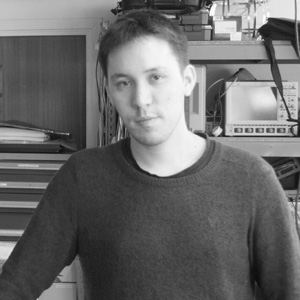
Christopher H K Chen
Elizabeth Barnes, Christopher Chen, Ciaran Harman, Christopher Reinhard, and Anja Schmidt were awarded the 2021 James B. Macelwane Medal at AGU’s Fall Meeting 2021 Honors Ceremony, held 15 December 2021 in New Orleans, LA. The medal is for “significant contributions to the geophysical sciences by an outstanding early career scientist.”
Citation
Dr. Christopher H. K. Chen exemplifies the Macelwane Medal’s emphasis on impactful, creative research by an early-career scientist. Chris has already established himself as a leader in the area of the kinetic physics of plasma turbulence in the solar wind and magnetosphere.
Chris has made innovative breakthroughs in key fundamental questions of solar wind turbulence, thereby throwing light on long-standing problems in magnetohydrodynamic (MHD) turbulence. His work is rooted in space plasma physics and how a fundamental plasma process, such as turbulence, helps shape the physics of the heliosphere. But the implications of his work are wide since MHD turbulence permeates the universe and is responsible for the structural evolution and heating of plasmas in magnetospheres, astrophysical winds, cooling flows and collisionless accretion. Chris is working to understand the 3D nature of MHD turbulence and the detailed, kinetic physics of plasma heating and energy dissipation. He uses instruments on NASA and European Space Agency spacecraft, laboratory measurements and theory, with a focus on the spacecraft measurements.
Among his collected publications are several novel analysis techniques that bring into sharp focus the nature, and ultimate fate, of turbulence at scales where simple fluid concepts break down. He pioneered calculations of the spectrum of velocity fluctuations as a complement to the more traditional magnetic field and density ones. This enabled him to connect those fluctuations directly to those at larger MHD scales. He has gone on to look at plasma kinetic waves and instabilities, showing how the dissipation of specific waves through interactions with the plasma particle populations leads to telltale features in the turbulent spectrum. He even developed new techniques to reveal the detailed phase space portrait of these interactions.
Most recently, Chris has been in the lead with the new measurements from the Parker Solar Probe (PSP) mission. PSP has already made some stunning discoveries, and Chris is one of the most productive and energetic team members.
— Steven J. Schwartz
Laboratory for Atmospheric and Space Physics
Boulder, Colorado
Imperial College London
London, United Kingdom
Response
First, I’d like to thank Steve Schwartz for nominating me for this medal and Mel Goldstein, Alex Schekochihin and Marco Velli for providing their letters of support. I truly appreciate their support for my career and their positive evaluation of my work.
I would also like to thank AGU and the Macelwane Medal Committee for choosing to present me with this award. AGU plays a significant and central role in advancing Earth and space science, so receiving this medal is a great honor.
This achievement is, of course, not an individual one but is distributed through my network of mentors, collaborators and the wider community. First, I would like to thank the key mentors who have shaped my career: my Ph.D. advisers, Tim Horbury and Alex Schekochihin, who started me in this field and went above and beyond to provide me with the scientific and career advice and support that no doubt led me to be in the position I am in now; my postdoctoral adviser, Stuart Bale, who strongly supported my further development and introduced me to the exciting missions I work on such as Parker Solar Probe; and David Burgess, who has insightfully guided me in the transition to the permanent academic position that I now hold. In addition, a large number of collaborators have also directly contributed — 47 co-authors on my first-authored papers and 451 in total. While far too many to name here, they have really made substantial contributions without which my work would not have been possible, so I would like to thank them all. Also, much of the wider scientific community has also played a role in enabling my work — from the spacecraft instrument and mission teams whose data are essential for my research to the previous and current generations of scientists upon whose work mine builds — the list is really endless. The collaborative and collective nature of science means that an achievement such as this is really the result of countless contributions.
Finally, I would like to thank my parents, who have always supported me in my pursuit of an education and career that would be the best fit for me.
I will do my best to live up to this award and to use it as an opportunity to continue advancing space science and to promote science in general for the benefit of society.
— Christopher Chen
Queen Mary University of London
London, United Kingdom
Video

Ciaran J Harman
Citation
Video

Christopher T. Reinhard
Citation
Chris Reinhard is an outstanding younggeochemist who has made critical advances across numerical, analytical and experimental approaches to understanding the impact of life on Earth’s elemental cycles. He gained early notoriety as a Ph.D. student through his pioneering research on chemical fingerprints for the rise of oxygen in the atmosphere. Specifically, Chris took trace metal data, iron speciation measurements and sulfur isotope data from 2.5-billion-year-old shales to demonstrate that the juxtaposition of hydrogen sulfide maximum zones in coastal marine settings was a response to a rise in production of biogenic oxygen (O2). That study, however, presented the community with a small problem. How could there be atmospheric O2 when the mass-independent fractionation of sulfur isotopes (MIF-S) — our most reliable indicator for an ancient reducing atmosphere — persisted until around 2.45 billion years ago? This is where Chris’ ingenuity shines through because he offered an elegant solution to this paradox: MIF-S signatures were simply recycled long after the MIF-S process in the atmosphere ceased to exist. In effect, there was a “crustal memory effect” that could be removed only through successive stages of weathering, dilution and burial on an oxygenated surface.
Chris’ subsequent work on phosphorus biogeochemistry and its implications for the evolution of bacterial phytoplankton and the rise of eukaryotic life forms remains at the forefront of the discipline. His compilation of phosphorus abundances in marine sedimentary rocks spanning the last ~3.5 billion years provided evidence for phosphorus biolimitation in the oceans until ~800 million years ago. By incorporating that phosphorus record into a quantitative biogeochemical framework Chris hypothesized that a combination of enhanced phosphorus scavenging in anoxic, iron-rich oceans and a nutrient-based bistability in atmospheric O2 levels could have resulted in a stable low-oxygen world that would have restricted the spread of multicellular life.
The broader reach of Chris’ work has included extrapolations of Earth’s early atmospheres to fundamental questions about life detection in the atmospheric gases surrounding exoplanets. Chris is among the very best in a new subfield of exoplanetary science populated by researchers gifted with deep biological and biogeochemical understandings of planetary ocean-atmosphere systems. In doing so, he has embraced the full suite of models required to propose entirely novel ways of linking atmospheric compositions to life in the oceans on early Earth and their relevance beyond. Chris’ trajectory over a relatively short amount of time from geochemist, to leading geobiologist and paleoceanographer, to astrobiologist/exoplanetary scientist is nothing short of astonishing.
I am simply honored to be Chris’ nominator, colleague and friend.
— Kurt Konhauser
University of Alberta
Edmonton, Alberta, Canada
Response
I’d like to express my deepest thanks to Kurt Konhauser, all of those who supported my nomination and AGU for honoring me with this award. There are many whose influence I would like to acknowledge, and I hope you will accept my sincerest apologies for any oversight.
I'd first like to thank my mother, Christine Reinhard, and my late father, Jeff Reinhard, who passed away 20 years ago this year. They stoked my curiosity tirelessly and taught me to always remain mindful of how fortunate I am.
I’d also like to thank my mentors, colleagues and friends from my time at the University of California, Riverside. I would particularly like to thank Nigel Hughes, Mary Droser and my Ph.D. adviser, Tim Lyons, all of whom helped me navigate the first years of graduate school with a patience and grace that I will always struggle to pay forward.
I am more or less useless on my own, and to the extent I’ve ever accomplished anything it is because I have been lucky enough to be surrounded by incredible collaborators, students and mentors. I owe a particular debt of gratitude to Noah Planavsky, who has been my closest collaborator and colleague over the years. It has been inspiring and fun to work together.
I would also like to thank the Georgia Institute of Technology for giving me a chance and the many people who have made me feel at home there, especially the phenomenal staff in School of Earth and Atmospheric Sciences — thank you for all that you do and for your patience with me.
Most importantly, I am grateful to my partner, Katy Zimmermann. You are a brilliant scientist and educator and a truly remarkable person. I don’t know where I’d be without you.
— Christopher Reinhard
Georgia Institute of Technology
Atlanta, Georgia
Video

Anja Schmidt
Citation
Anja Schmidtis one of a very smallnumber of scientists who have successfully and convincingly established a career at the boundaries between volcanology, atmospheric science and geohazards. Although trained as a geologist, she has published a series of innovative and influential papers on the atmospheric impacts of volcanic eruptions. While still a Ph.D. student, she stimulated collaboration between volcanologists, atmospheric scientists and an epidemiologist. Her papers span the impacts of eruptions on air quality, aircraft hazards and current and ancient climates.
Dr. Schmidt is dedicated to the wide dissemination of knowledge, recognizing that volcanology is of high interest to the public, governments and other agencies. She has used her knowledge and enthusiasm to give many public talks. Her codevelopment of a smartphone app on volcanic eruptions further reflects her dedication to the public understanding of science.
Unusually for such an early-career researcher, Anja Schmidt has already used her expertise to advise the U.K. government at the highest level on the risks from large Icelandic eruptions. Her research was pivotal in the government creating a new risk register item on such eruptions. On the basis of this contribution, Dr. Schmidt is now a member of the Expert Advisory Group to the U.K. government on volcanic risks and emergencies.
During the AGU Chapman Conference on Volcanism and the Atmosphere in Iceland in 2012, a film crew followed Dr. Schmidt around for a documentary they were making on the effects of volcanoes on the atmosphere. The show, Life on Fire — Icelandic Volcanoes, narrated by Jeremy Irons, premiered in the United States on 2 January 2013 on the prime science television show in the nation, NOVA, on the Public Broadcasting System. Her work was also extensively featured in the 2014 book Island on Fire: The Extraordinary Story of Laki, the Volcano That Turned Eighteenth-Century Europe Dark by Alexandra Witze and Jeff Kanipe based on interviews with Dr. Schmidt at that Chapman Conference.
In summary, Anja Schmidt is an unusually talented interdisciplinary scientist who uses her knowledge and immense enthusiasm for volcanology to create new knowledge on the atmospheric impacts of volcanic eruptions. Her notable early-career publications, her ability to stimulate fruitful collaborations, her recognition as an expert by the U.K. government and her dedication to the public’s understanding of science all contributed to her Macelwane Medal.
— Alan Robock
Rutgers University
New Brunswick, New Jersey
Response
Thank you, Alan, for the very kind citation and nomination. I feel extremely honored to receive the James B. Macelwane Medal from AGU, and I am deeply grateful to Alan, those who wrote letters, AGU and the awards committee for selecting me. I feel even more honored to receive this award when looking at the list of past awardees — many of whom are close colleagues I collaborated with in the past and who had a substantial impact on my career. I have been very lucky to work with a group of outstanding students and postdocs and with colleagues and collaborators across the world — all of whom contributed to my accomplishments and my career. I truly believe that collaboratively, we can achieve and discover more, so I would like to dedicate this medal to my fantastic students, postdocs and collaborators across the world as well as to my partner and young daughter. I would like to encourage early-career scientists to work across disciplines — as challenging as it is, it’s incredibly exciting and rewarding.
— Anja Schmidt
University of Cambridge
Cambridge, United Kingdom
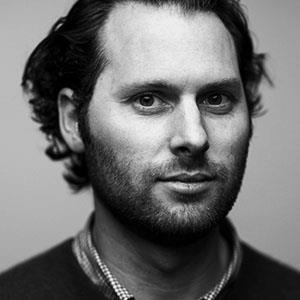
Kyle Armour
Citation
For reconciling differences between model and observed inferences of climate sensitivity, identifying how patterns of surface warming play a key role.
Field Photo
Video
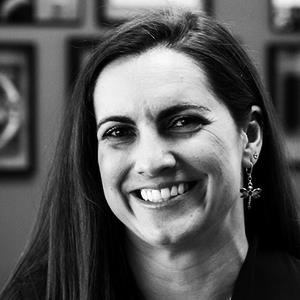
Sarah M Horst
Citation
For outstanding contributions to laboratory research on photochemical haze formation in the atmospheres of solar system and extrasolar planets.
Field Photos
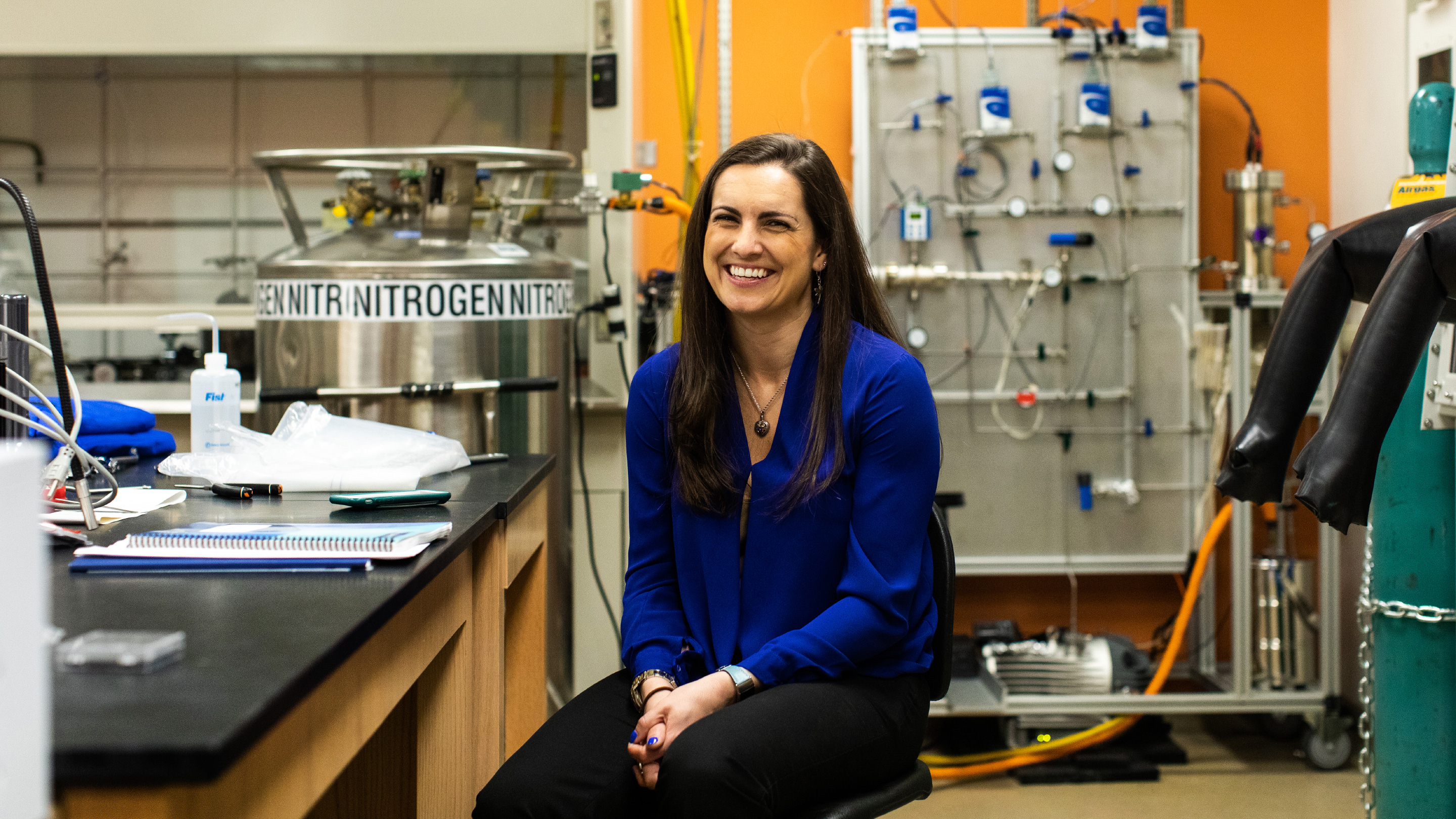
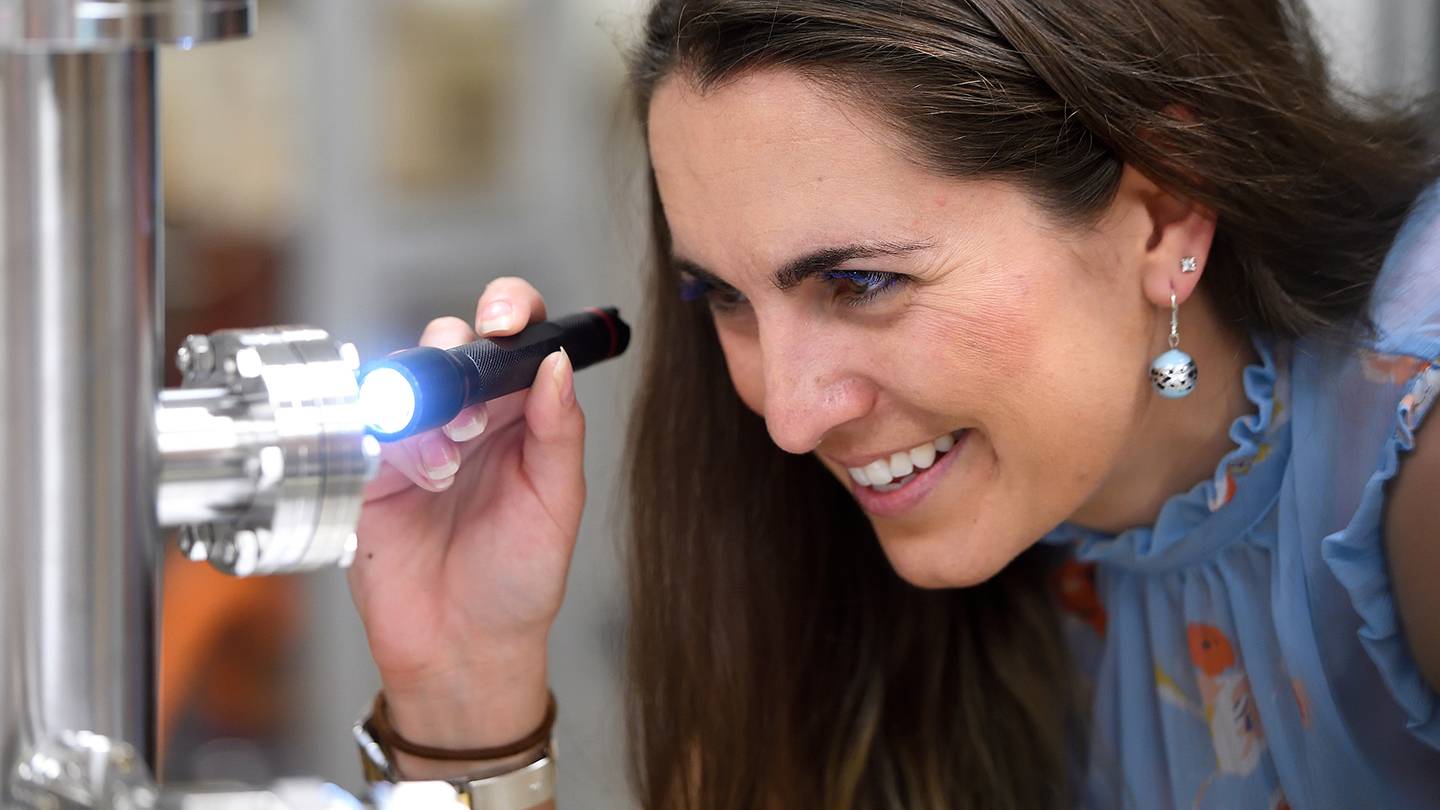
Video
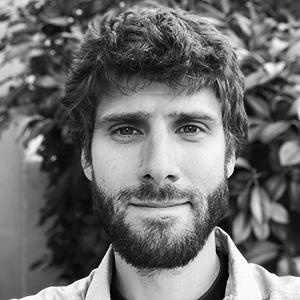
Brandon Schmandt
Citation
For seismological imaging of mantle convection and how it shapes Earth’s tectonics: across the United States, the mantle transition zone, and volcano conduits.
Field Photos
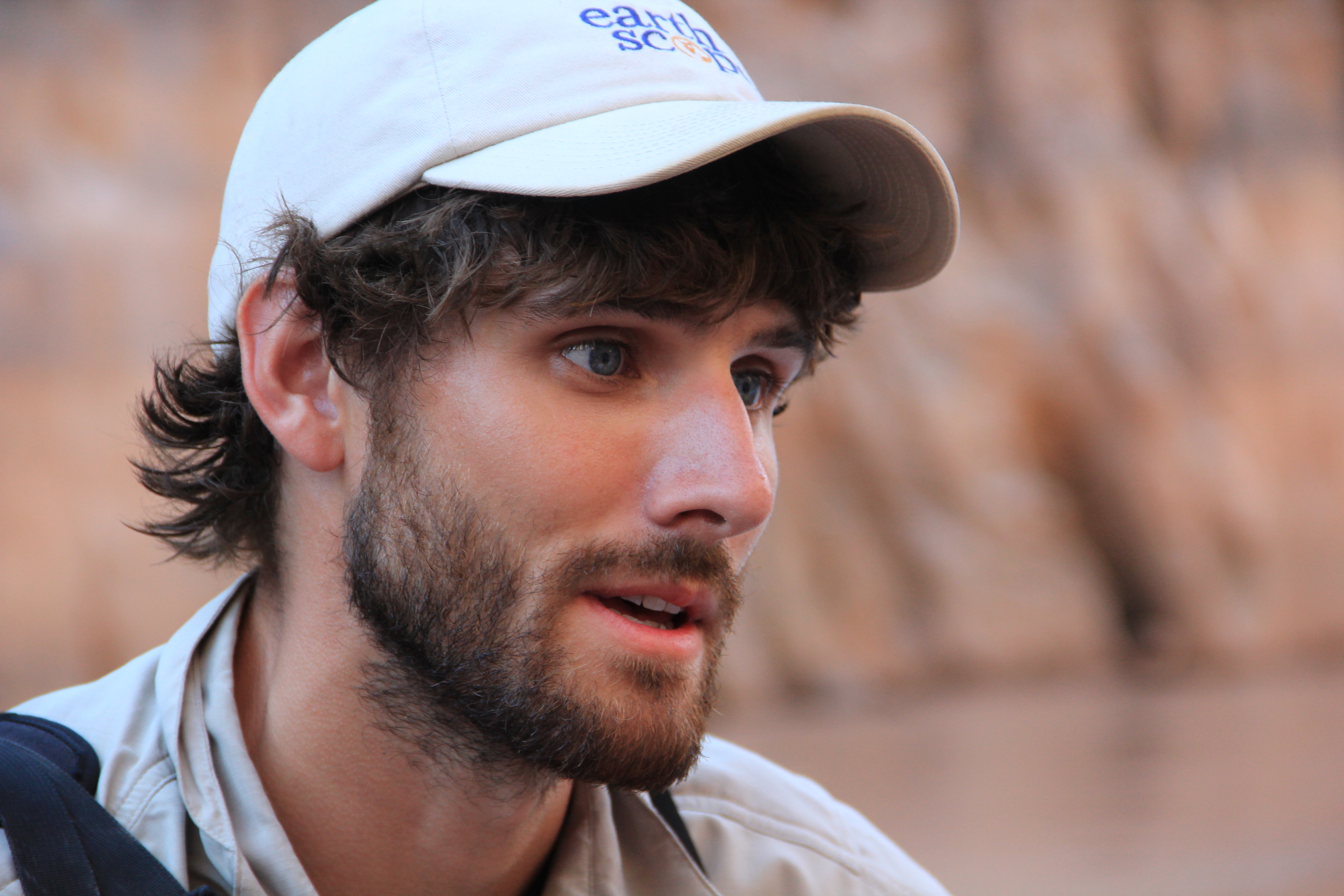
Video
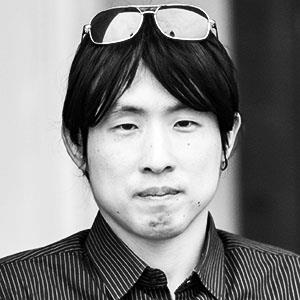
Yoshihide Wada
Citation
For his pioneering research on modeling the human footprint in the global hydrological cycle.
Field Photos
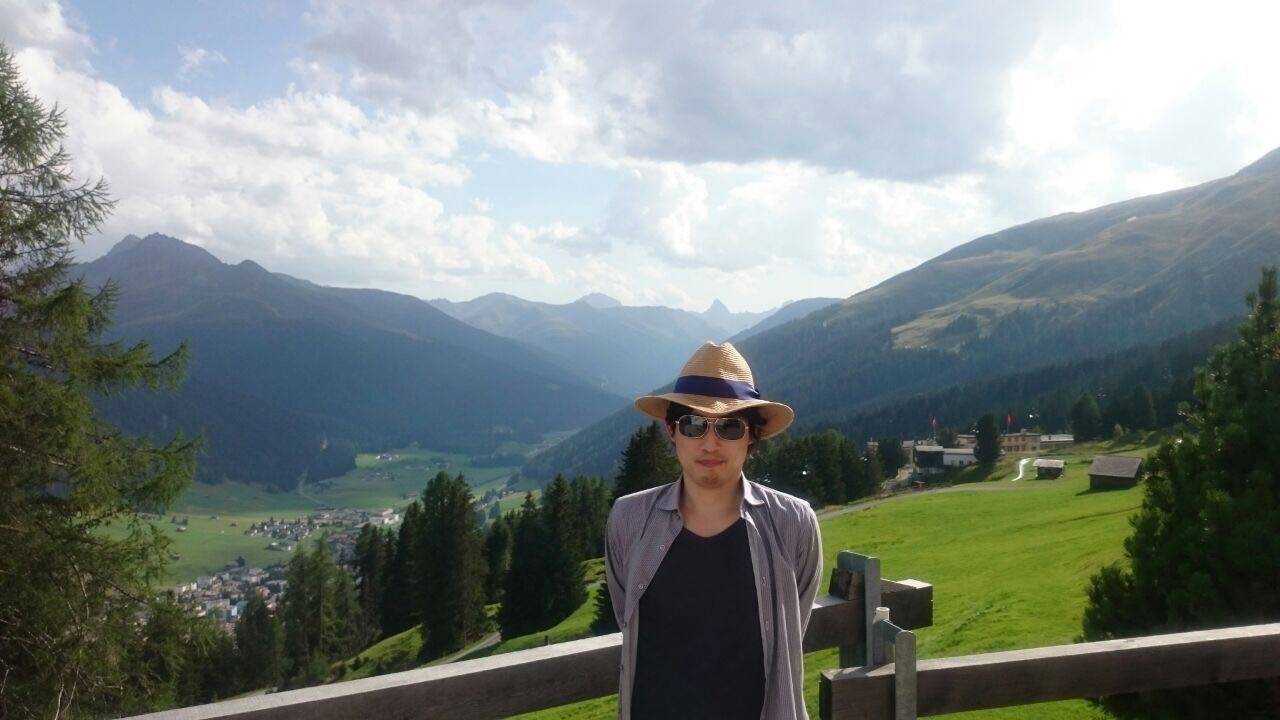
Video
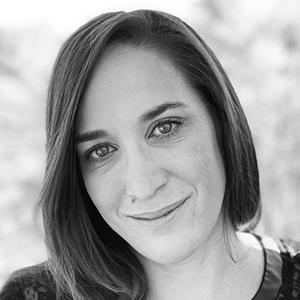
Kelly C Wrighton
Citation
For pioneering research on the role of microorganisms in carbon cycling in the deep subsurface and in controlling methane emissions from wetlands.
Field Photos
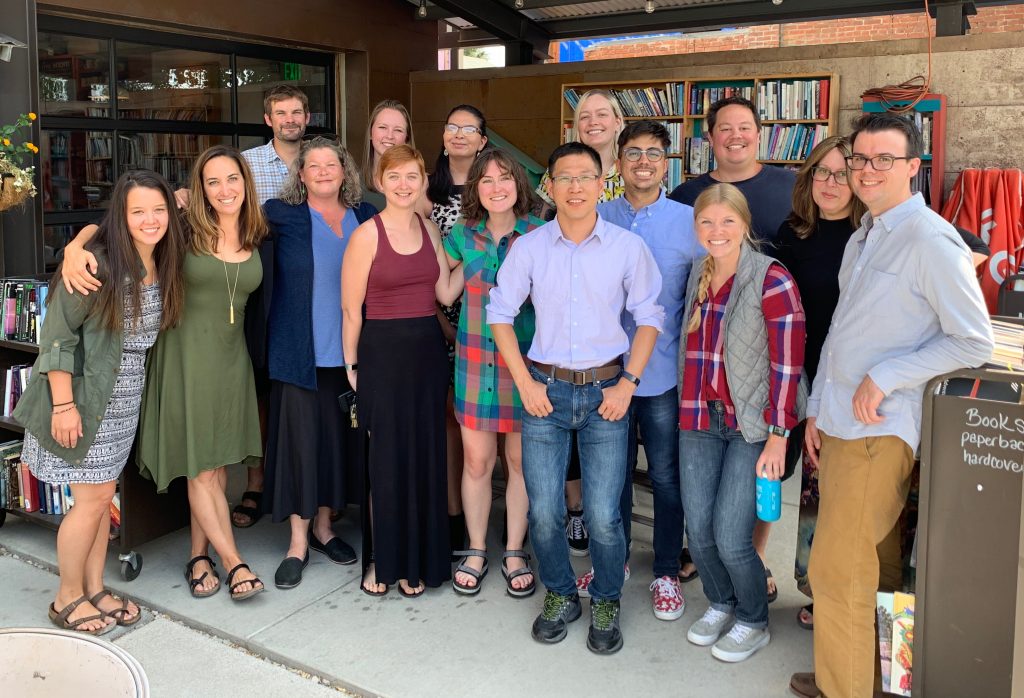
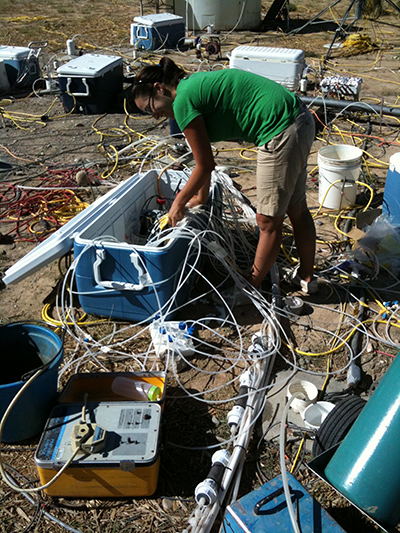
Video
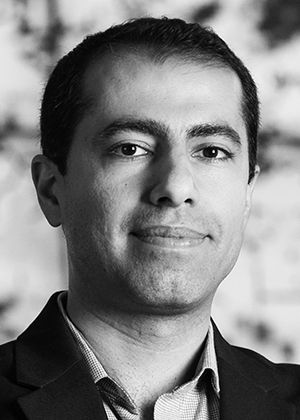
Amir AghaKouchak
Amir AghaKouchak, Anton Artemyev, Emily V. Fischer, Francis A. Macdonald, and Erik van Sebille were awarded the 2019 James B. Macelwane Medal at AGU’s Fall Meeting 2019 Honors Ceremony, held on on 11 December 2019 in San Francisco, Calif. The medal is for “significant contributions to the geophysical sciences by an outstanding early career scientist.”
Citation
Dr. AghaKouchak is among the most creative and productive young scientists in our profession, and his scholarship, international standing, outreach, and service to the community are widely acknowledged and admired at an early stage of his career. Dr. AghaKouchak’s research accomplishments in hydrology and natural hazards and service activities provide ample evidence in the two primary criteria for the James B. Macelwane Medal: (1) depth, breadth of research, impact, creativity, and novelty and (2) service, outreach, and diversity.
Dr. AghaKouchak’s research bridges the traditional disciplines of hydrology, climatology, and remote sensing to address critical global water resource issues. His research combines remote sensing techniques and physically based and statistical approaches to improve the characterization, modeling, and prediction of large-scale hydrologic systems. His group developed a multivariate multi-index drought monitoring approach, named the Multivariate Standardized Drought Indicator (MSDI). Within a short period of time, other multivariate indicators were developed on the basis of the MSDI concept. The main innovation of the approach is that it allows integrating different types of data (e.g., precipitation, soil moisture, and runoff) for composite drought assessment.
His group also developed the first methodological framework for describing socioeconomic drought. Most drought monitoring frameworks primarily focus on large-scale atmospheric–land surface conditions and ignore the human dimension. He proposed a framework for assessing water availability while explicitly considering anthropogenic water demand scenarios and water supply infrastructure designed to cope with climatic extremes. His group developed a hybrid statistical-dynamical modeling framework for improving drought prediction. In this approach, unlike previous studies where a statistical model was used for postprocessing, a dynamical and statistical model work in parallel, but they are linked through an expert advice algorithm. The uniqueness of the approach is that it combines the strength of physically based dynamical simulations and the capabilities of statistical models. Another contribution was to formulate a novel multivariate framework for evaluating the risk of compound hazards. His group showed that the current flood risk assessment methods underestimate the actual risk of coastal flooding because they do not consider the compounding effects of ocean and terrestrial flooding.
Dr. AghaKouchak has achieved an extraordinary international standing through fundamental contributions at an early stage of his career and has been very proactive in service and outreach and in promoting diversity and inclusive excellence. In just a few years, he has earned the respect and admiration of his peers, and he will continue his leadership role in the field in the future.
—Isabella Velicogna, University of California, Irvine
Response
I sincerely thank Isabella Velicogna for leading the nomination and Upmanu Lall, Balaji Rajagopalan, and Vijay Singh for supporting the case. Receiving the Macelwane Medal is a humbling pleasure, but it is not an individual recognition. It reflects the work of my amazing collaborators, students, and postdocs.
Studying and working on three continents and interacting with exceptional scientists from around the world have made my journey very exciting! When I was an undergraduate freshman, I was determined to go into design and construction engineering. An undergraduate research experience in my sophomore year with glaciologist Fariborz Vaziri changed my career path, and I became a hydrologist. I was incredibly lucky to work with Andras Bardossy and Emad Habib, who introduced me to statistical hydrology and radar science. Joining Soroosh Sorooshian’s group as a postdoctoral fellow was a life-changing and inspiring experience! Soroosh introduced me to the world of remote sensing and changed my perspective toward research. I could not have imagined a more generous mentor and role model, and I cannot thank him enough for his unwavering support, encouragement, and mentorship over the years. During my postdoc, I had the privilege of collaborating with amazing scientists, including Kuo-lin Hsu, Bisher Imam, Xiaogang Gao, and Jialun Li—a great team with endless ideas!
I thank the University of California, Irvine, for taking the leap of faith to appoint me as a faculty member, where I have had the good fortune of working with a diverse group of exceptional colleagues. Special thanks go to Brett Sanders and Stan Grant for integrating me into their interdisciplinary projects and broadening my research, to Richard Matthew and David Feldman for their insights on the broader relevance of our work, to Steven Davis for sharing his brilliant mind and stimulating ideas, to Jim Randerson for his thought-provoking views, to Bill Cooper and Phu Nguyen for their stunningly positive attitude, and to Efi Foufoula-Georgiou for her critical thoughts and the opportunities she has created.
Over the past 10 years, I have had the pleasure of working and publishing with nearly 300 phenomenal scientists. I cannot possibly mention everyone here, but I would like to acknowledge the amazing interactions and stimulating discussions that I have had with Gianfausto Salvadori, Kaveh Madani, Tom Phillips, Ali Nazemi, Andy Wood, Ali Mirchi, Ghassem Asrar, Reza Khanbilvardi, Marty Hoerling, Hamid Moradkhani, Shrad Shukla, Giuliano Di Baldassarre, Jakob Zscheischler, Hamid Norouzi, Travis Huxman, Nasrin Nasrollahi, Jay Lund, Mark Svoboda, Marzi Azarderakhsh, Brian Tarroja, Chiyuan Miao, Farshid Vahedifard, Philip Ward, Thomas Wahl, Sonia Seneviratne, Jasper Vrugt, Qingyun Duan, Brian Skahill, M. R. Kavianpour, Salvatore Grimaldi, Elmira Hassanzadeh, Ali Alaiepour, Carlo De Michele, Reza Najafi, Farhad Yazdandoost, Yue Qin, and Fabrizio Durante. I have learned much from and been influenced by many more scientists than I can list here.
Most importantly, I owe this recognition to my current and former students, postdocs, and visiting scholars whom I have had the honor to work with. I accept the Macelwane Medal with humility and gratitude on their behalf: Linyin Cheng, Ali Mehran, Elisa Ragno, Alireza Farahmand, Omid Mazdiyasni, Charlotte Love, Felicia Chiang, Hassan Anjileli, Alexandre Martinez, Aneseh Alborzi, Mohsen Niknejad, Lisa Damberg, Matin Rahnamay, Yunxia Zhao, Jiefeng Wu, Qiaohong Sun, Samaneh Ashraf, Carlos Lima, Zengchao Hao, Shahrbanou Madadgar, Hamed Moftakhari, Mojtaba Sadegh, Iman Mallakpour, Simon Papalexiou, and Laurie Huning. I wholeheartedly appreciate their hard work and dedication and want to thank them for their patience with me!
Finally, I am grateful for the tremendous support I have received from my parents. My heartfelt thanks to my lovely wife, Nasrin, who is an infinite source of support. Back in 2010, Nasrin and I attended the AGU Honors Ceremony for the first time. “I am sure I will see you on that stage 10 years from now,” Nasrin whispered into my ear while Rosalind Rickaby was giving her Macelwane Medal Lecture. I have to admit that she has always been right! I should also mention my 6-year-old son, Kian (whose favorite magazine is AGU’s Eos), and my almost 2-year-old daughter, Kimia, who often have to deal with my time away from home. I owe them so much!
—Amir AghaKouchak, University of California, Irvine

Anton Artemyev

Emily V Fischer

Francis A Macdonald
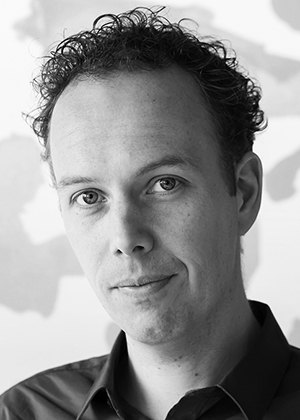
Erik van Sebille
Amir AghaKouchak, Anton Artemyev, Emily V. Fischer, Francis A. Macdonald, and Erik van Sebille were awarded the 2019 James B. Macelwane Medal at AGU’s Fall Meeting 2019 Honors Ceremony, held on on 11 December 2019 in San Francisco, Calif. The medal is for “significant contributions to the geophysical sciences by an outstanding early career scientist.”
Citation
Erik van Sebille has quickly established himself as a world-leading scientist in applying Lagrangian techniques to study a range of oceanographic problems. His work has fundamentally advanced our understanding of ocean dynamics and the global transport of plankton and plastics. Erik is a highly creative and skilled scientist, with a knack for seeing opportunities to produce new scientific analyses to address tough problems in areas that have a direct societal impact. Erik works in a highly collaborative way, engaging with many groups and communities, applying his wares to fields ranging from oceanography through to mathematics, paleoclimate, and marine ecology.
In his research, Erik combines models and data to study how currents move tracers and particulates around the global ocean. This has resulted in high-impact papers in Lagrangian oceanography and in the ocean transport of water, heat, nutrients, microbes, plankton, and plastic around the world. With a keen eye to being an enabler of research for others, Erik has led the development of a new, cutting-edge open source software framework for Lagrangian ocean analysis, known as OceanParcels (oceanparcels.org), which is now widely used by the community. Over the past decade Erik has rapidly broadened his work using Lagrangian techniques to track more than just water masses: exploring how ocean currents determine the fate of plastic, plankton, and other floating matter. Erik’s work on plastics in the ocean has had a remarkable impact on our understanding of this global environmental problem.
Apart from being an exceptional scientist, Erik is known for his strong commitment to public outreach and community engagement. He is a regular commentator in the media, a superb teacher and communicator, and a willing mentor to research students and early-career scientists. Erik has taken on leadership roles in both national and international science programs. Erik’s insights are deep, and the problems he works on are vital for protecting the world’s ocean environment.
On a personal note, I have to say that it has always been a great pleasure to work with Erik. I have marveled at his energy and passion for ocean science, his flair for coming up with exciting new problems to tackle, and his ability to devise novel applications of Lagrangian methods. I am certain that we will be hearing much more about Erik’s discoveries for many years to come. Please join me in congratulating Erik for this well-deserved honor of the James B. Macelwane Medal.
—Matthew H. England, University of New South Wales, Sydney, Australia
Response
Thank you, Matt, for these very kind words. And thanks to you and my other supporters and nominators for their time and efforts. I truly am very excited and humbled to receive this James B. Macelwane Medal.
I’ve been lucky in my career to have been surrounded by inspiring, good-natured supervisors, colleagues, and collaborators, who’ve shown me how much fun it can be to be an academic: Will de Ruijter, Peter Jan van Leeuwen, and Femke Vossepoel at Utrecht University encouraged and inspired me to find my own edge in research; Lisa Beal and Bill Johns at the University of Miami’s Rosenstiel School of Marine and Atmospheric Science instilled a huge appreciation for oceangoing research and the hardship and effort that collecting data in the field requires; Matt England at the University of New South Wales Climate Change Research Centre has encouraged me to look beyond physical oceanography and to collaborate with biologists, geneticists, mathematicians, archaeologists, ornithologists, fisheries economists, and many other fields I’ve since published with; Joanna Haigh and Martin Siegler at Imperial College London’s Grantham Institute have introduced me to policy and advocacy and shown me how to make a real impact; and Henk Dijkstra at Utrecht University gives me full freedom to explore and chase my own interests. Add to that all the fantastic and inspiring collaborators and coauthors (over 480 of them!), and I can really say I’m standing on the shoulders of giants. Looking back, it may seem like my career path was all nicely planned, but of course, much of this was serendipity and being in the right place at the right time. I am fully aware and appreciate that I’m privileged and realize that not everyone has access to these chances and opportunities.
Our global society is changing so fast right now that we scientists cannot simply keep doing our work like we’ve always done. To stay relevant, we need to change every aspect of our research: planning our research through cocreation with the broader society; conducting our research in a fully transparent, inclusive, and collaborative way; communicating our research to peers and the broader public; and getting recognized and rewarded in an unbiased way; society rightly demands radically open science. The tools and ideas for this radically open science are in place; now it’s up to us as a scientific community to embrace them. These are exciting times!
—Erik van Sebille, Utrecht University, Netherlands
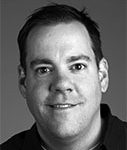
Steven J Davis
Steven J. Davis, Walter Immerzeel, Isaac Santos, Drew Turner, and Caroline C. Ummenhofer were awarded the 2018 James B. Macelwane Medal at the AGU Fall Meeting Honors Ceremony on 12 December 2018 in Washington, D. C. The medal is for “significant contributions to the geophysical sciences by an outstanding early career scientist.”
Citation
Davis’s research combines economic and geophysical approaches that are groundbreaking. He has carved a new field relating human systems, the carbon cycle, air pollution, and climate change, thus providing solutions for some of the most significant environmental challenges of the 21st century.
Davis developed the theory for tracking carbon dioxide (CO2) emissions that are embodied in all the goods and services traded internationally. Davis learned econometric methods and applied them in an analysis that was timely and salient: International climate negotiations were mired in the debate over whether developing countries should be required to reduce their CO2 emissions. By quantifying emissions that are effectively “outsourced” from developed countries, his work provides a rigorous scientific foundation that has informed ongoing policy discussions. By recognizing the interconnectedness and universally shared responsibility for these emissions, his work contributed to the success of the 2015 Paris Climate Conference, with the subsequent agreement creating a more level playing field for all nations.
Davis made another important breakthrough in tracking future global CO2 emissions from existing energy infrastructure. Even if we never build another power plant or car, assuming that existing infrastructure continues to operate for its expected lifetime causes a certain amount of emissions to be locked in. This new approach has focused the policy community on the implications of near-term plans by many developing countries to expand the number of fossil fuel–emitting power plants, given that normal operating lifetimes for these facilities can be 30–40 years. In more recent work, Davis and his colleagues have quantified the health impacts (and human mortality) associated with global trade flows, leveraging his earlier breakthrough linking CO2 emissions and trade.
Davis’s unique background combines a legal education, a dissertation on isotope geochemistry, work with nongovernmental agencies on life cycle assessment, and a postdoctoral analysis of energy systems. This gives Davis a diverse set of research methods. As a colleague in the Earth System Science Department at the University of California, Irvine, we truly value Davis’s vision and comradery.
Steve represents a new 21st century generation of geophysicists. We are thrilled that he is this year’s Macelwane Medal winner.
—James Randerson and Ellen Druffel, University of California, Irvine
Response
I’m honored and humbled to accept the Macelwane Medal. Thank you, Jim and Ellen, for nominating me and for your generous citation. I’m fortunate to have you both as role models and colleagues, and I can only hope to distinguish the award as you both have.
I’m also grateful to AGU and the medal committee for selecting me among so many deserving young scientists. In doing so, they highlight the breadth of modern geophysical research in a way that I hope encourages and emboldens others to color outside the lines.
As Jim and Ellen mention, my path has been winding, and though they portray my varied background in a flattering light, it was less strategic building of experience than following my interests and trusting they would lead me to somewhere I wanted to be. Luckily, I happened into some terrific mentors who were audacious enough to give me a chance. Without them, I would never have become the scientist I am today.
Still a corporate lawyer, I walked into Page Chamberlain’s Stanford office one afternoon and did my best to convince him that I wanted to be a geologist. In retrospect, I was incredibly naïve, and I can’t for the life of me understand what he saw in me that day, but he took me on as a graduate student and over the next 4 years transformed me from an attorney with a philosophy degree into an isotope geochemist.
Ken Caldeira enabled yet another leap, hiring me as a postdoc at the Carnegie Institution to work on CO2 embodied in international trade on the basis of a fun lunchtime conversation we had—again despite my knowing almost nothing about the subject. What was supposed to be a few months turned into nearly 5 years in productive pursuit of the interesting and important.
Perhaps as important as the opportunities these men afforded me, they taught by example how to balance careful execution of science with bold hypotheses, how to resist common knowledge, to be more critical of yourself than you are of others, and that data are lifeless without a good story. These lessons were bolstered by other outstanding collaborators and mentors like Rob Socolow, Jen Burney, David Lobell, Glen Peters, Dabo Guan, Qiang Zhang, Rob Jackson, and Noah Diffenbaugh. My colleagues at the University of California, Irvine, have also been constant supporters of my work. I am indebted to them all. I hope that my mentorship can inspire and enable other students and postdocs as theirs has me.
Most of all, though, I am thankful for the love and unwavering support of my wife, Kristen; my parents; and my daughters. They have given me both the confidence to chase big ideas and the reason for the chase.
—Steven J. Davis, University of California, Irvine

Walter W. Immerzeel
Citation
Since obtaining his Ph.D. in 2008, Walter Immerzeel has established himself as an influential scientist in the field of mountain hydrology and glaciology. He focuses his research on the impact of global warming on snow and glaciers in High Mountain Asia (HMA) and how it affects future water resources in the downstream, densely populated areas. His unique interdisciplinary research line combines innovative fieldwork techniques, remote sensing, and mesoscale meteorological modeling to elucidate glaciohydrological processes at the catchment scale. His most influential study to date (Science, 2010) uses the above techniques to show that contrary to what was previously believed, the contribution of HMA glacial melt to downstream runoff in most Southeast Asian rivers is smaller than a few percent, the exception being the Indus, for which up to 60% of the downstream discharge has its origin in HMA snow and glacial melt. This process understanding is used to predict the effects of climate change on the glaciohydrology and water resources of HMA as a whole. Walter and his group showed that for realistic climate scenarios maximal glacial melt is expected around 2050 in the western HMA, after which increased rainfall will compensate for the decreased meltwater runoff. In a 2017 study in Nature Walter’s group predicted that HMA glaciers could lose up to 65% of their mass by 2100. The research of Walter and his group has been highly visible among his colleagues and in the international press. For instance, they were the first to use unmanned airborne vehicles (UAVs, or drones) in HMA glacier research, showing that locally, debris-covered glacier melt rates can even be larger than those of debris-free glaciers as a result of lakes and exposed ice cliffs. To draw attention to the detrimental changes that await the region under climate change and how scientific research can help to mitigate these changes, he has used part of his research funds to make brief, insightful documentaries. During his years working in the region, Walter has built up a strong relation with the local Nepali people and scientists. During his Ph.D. track he was employed by the International Centre for Integrated Mountain Development (ICIMOD) and lived in Kathmandu for 2 years. Currently, he still is a guest researcher at ICIMOD. Right after the April 2015 Nepal earthquake Walter joined forces with people in his remote sensing network to provide the Nepali authorities, through his link with ICIMOD, with inventories of earthquake-induced landslides as seen from space. —Michiel R. van den Broeke, Utrecht University, Netherlands
Response
Dear Michiel, many thanks for this wonderful citation, and I look forward to link the three poles together by working with you. I am also very grateful to AGU, the Macelwane Medal Committee, and esteemed colleagues for the nomination letters. As someone from the Netherlands, where the highest point is 322.4 meters above sea level, it may seem strange to be awarded the Macelwane Medal on research in high-mountain Asia, and an explanation is justified. After trekking for 3 months through Nepal with my wife, Hilde, during our honeymoon in 1999, the mountains and its people were permanently imprinted in my system. This resulted in a job at the International Centre for Integrated Mountain Development (ICIMOD) in Kathmandu, where I lived and worked for 2 years. I met Dr. Roberto Quiroz there, who inspired me to pursue a Ph.D. in this field, and it turned out to be a life changer. I am still working closely with ICIMOD with a unique group of mountain-loving people who dedicated their careers to the understanding and protection of this beautiful region. I specifically mention David Molden, Arun Shrestha, Anna Sinasalo, and Inka Koch. Without your support, many of the scientific achievements would not have been possible. The joined expeditions in the Himalayas have also sparked new friendships and long-lasting international collaborations. Working with incredible scientists, such as Joseph Shea, Patrick Wagnon, and Francesca Pellicciotti, has been a great inspiration and motivation and a lot of fun.At Utrecht University in the Netherlands, I feel privileged to work with a great group of people. A special thanks to Marc Bierkens, who has been my mentor for years. Our brainstorm sessions formed the basis for many successful papers and proposals, and I hope we can continue like this for years! This medal is not the result of only my work, but it was true team work, and big thanks to Arthur, Emmy, Jakob, Maxime, Philip, Pleun, Remco, Sonu, and René. I also thank my family; my friends; and my wife, Hilde, in particular for making sure I realize what is really important in life and for making me realize what the red thread in my research really is.There are huge scientific and societal challenges ahead associated with mountains and the millions of people that depend on their resources. I am proud and looking forward to keep working on them. —Walter Immerzeel, Department of Physical Geography, Utrecht University, Netherlands
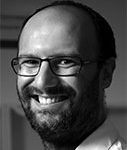
Isaac R Santos
Steven J. Davis, Walter Immerzeel, Isaac Santos, Drew Turner, and Caroline C. Ummenhofer were awarded the 2018 James B. Macelwane Medal at the AGU Fall Meeting Honors Ceremony on 12 December 2018 in Washington, D. C. The medal is for “significant contributions to the geophysical sciences by an outstanding early career scientist.”
Citation
Isaac Santos is not only an outstanding Earth scientist but also a brilliant science communicator and student mentor. With training in chemical oceanography at Florida State University under Bill Burnett, Isaac recognizes the interdisciplinary nature of our field and works collaboratively at the edge of conventional disciplinary boundaries.
Isaac uses geochemical tracers to resolve the drivers and biogeochemical implications of submarine groundwater discharge (SGD). He made elegant demonstrations that SGD is a major source of greenhouse gases and carbon to the coastal ocean and developed substantial arguments for the importance of SGD at a variety of coastal sites, including mangroves, coral reefs, estuaries, and beaches. Isaac’s innovative research relies on his vision of taking the lab to the field. He combined automated observations of radioactive and stable isotope tracers to obtain real-time and high-precision data in situ. These techniques allowed Isaac to collect unique data sets to address complicated and important interdisciplinary questions in hydrology, biogeochemistry, and oceanography. His diverse research has inspired colleagues and government agencies to consider the implications of SGD to coastal biogeochemical cycles and water quality.
Isaac’s dedication to science goes beyond the quest for new knowledge. Isaac should also be recognized for his broader contribution to our community and gregarious approach to work and student supervision. He is an unselfish colleague leading a large and productive research group. He always shares his best ideas and projects with his students. His leadership, combined with his great ability in developing collaboration and building first-class infrastructure, will help to ensure long-lasting impacts of his work. Isaac is a candid and idealistic advocate on issues of public interest. By engaging with the public and the mainstream media, his research has influenced public opinion and is helping to manage and preserve valuable coastal waterways while encouraging the fossil fuel industry to prevent greenhouse gas leakages from aging infrastructure.
With balance in research, teaching, and outreach as well as life outside academia being a desire of all, Isaac has achieved just that. Achieving balance extends his positive influence to our future generation of scientists. His outstanding track record of discovery, focus on student development, collaborative mindset, and engagement with the broader society are fully in line with AGU’s values and mission. His many and important contributions published in >100 papers, commitment to the well-being of his students, and spirit of generosity make him a well-deserved winner of the James B. Macelwane Medal.
—Ling Li, Westlake University, Hangzhou, China
Response
Winning an AGU medal makes me feel nostalgic and grateful. It brings memories from where I come from and all the people who supported me along the way. It enlightens a path to the future.
As an undergrad in Rio Grande (Brazil), I would read AGU journals as I learned English. I would dream about publishing there. I didn’t dream about winning a medal. As a Brazilian working in regional Australia, being singled out with a medal takes me a step closer to overcoming a self-diagnosed impostor syndrome.
I am thankful for Ling’s generous nomination and honored to have worked with him. He mentions the achievement of work-life balance, but I am afraid my wife, Ana, may occasionally disagree with this. On these occasions, I often apologize and remind her that a 20-year marriage requires true love. Instead of balance, I have blended work and life as I care for my young family and students at the same time. I would achieve nothing without family encouragement and understanding.
Investigating submarine groundwater discharge requires truly interdisciplinary approaches and collaboration. My lifelong mentors Bill Burnett, Jeff Chanton, Thorsten Dittmar, Felipe Niencheski, and Emmanoel Silva-Filho have been role models inspiring me along the way. Thanks to my friends and collaborators Guilherme Lima, Rick Peterson, Christian Sanders, Damien Maher, Doug Tait, and many others whom I cannot mention in 400 words.
It is an exciting time to work on submarine groundwater discharge! I often say that submarine groundwater discharge has been put on the “to-do list” or in the “too hard basket” for long enough. Our new tools are revealing leaky shorelines worldwide, helping us to quantify the invisible, and demonstrating major implications to marine biogeochemistry. We are learning how the underground routes of biogeochemical cycles provide climatic feedbacks as groundwater releases soil carbon and nutrients to the oceans.
Macelwane was deeply interested in education. He saw himself as a servant to students, and I am proud to be associated with his vision. As researchers, we often strive for independence and can easily become too self-centered. Students unconsciously remind me of what research is all about. Their seemingly simple but penetrating questions, fresh perspectives, and full commitment to improving our world give real meaning to my research. Thanks to current and past students for raising the bar every day, keeping me grounded, and pushing me outside comfort zones—I owe this medal to you!
—Isaac Santos, Southern Cross University, Lismore, Australia

Drew L Turner
Steven J. Davis, Walter Immerzeel, Isaac Santos, Drew Turner, and Caroline C. Ummenhofer were awarded the 2018 James B. Macelwane Medal at the AGU Fall Meeting Honors Ceremony on 12 December 2018 in Washington, D. C. The medal is for “significant contributions to the geophysical sciences by an outstanding early career scientist.”
Citation
Drew Turner is widely recognized for his outstanding contributions to understanding energetic charged particles in the Earth’s magnetosphere. Changes in energetic particle populations illuminate how energy from the Sun couples to our local space environment. Drew’s work revealed how those processes work in systems from the Van Allen radiation belts to the boundaries of the magnetosphere and solar wind.
Drew Turner began his work at the University of Colorado under the supervision of Xinlin Li. Among many excellent students, Drew stood out for his enthusiastic questions, deep professional engagement, and creative problem solving. In those years, Drew started a string of important papers related to NASA’s Time History of Events and Macroscale Interactions during Substorms (THEMIS) and Van Allen Probes satellite missions. In particular, Drew developed novel methods for disentangling complicated co-occurring processes that can either enhance or deplete the radiation belts. That work culminated in a 2012 Nature paper just 2 years after his Ph.D.
After the University of Colorado Drew moved to the University of California, Los Angeles, and, more recently, to the Aerospace Corporation. In his career, Drew has consistently come up with creative ways to answer some of the most important questions in our field—whether it is understanding the complicated balance of acceleration, transport, and loss processes in the radiation belts, understanding particle dynamics at the magnetopause and foreshock, or unraveling the complex processes that couple fast flows, dipolarization fronts, and energetic particle injections in storms and substorms.
Drew is able to synthesize information from different measurements, different instruments, and multiple satellite missions. One recent paper combined observations from dozens of instruments on 15 satellites making up five very different space missions. Drew also draws on his experience with spaceflight hardware to develop new data reduction and analysis routines that frequently become the basis for analysis done throughout the community. As a result, Drew’s papers are able to explore, simultaneously, the important processes that happen on local scales and the global context for those processes.
In the 8 years since his Ph.D. Drew has published over 110 papers, including 3 in Science, 4 in Nature, and 32 in Geophysical Research Letters. One factor leading to his remarkable publication record is that people seek out Drew’s insights and contributions. His body of work reflects his creativity and talent but also generosity with his ideas, his time, and his energy.
Drew Turner truly embodies values that AGU promotes and the qualities that the Macelwane Medal recognizes.
—Geoffrey D. Reeves, Los Alamos National Laboratory, N.M.
Response
Let me put first things first: Geoff Reeves, Jacob Bortnik, Joe Fennell, and Xinlin Li, I can never thank you enough for your nomination and the ongoing tutelage and support you’ve offered to me throughout my career. I have learned so much from each of you, whether it be leadership skills and new physical perspectives from Geoff and Jacob, open-mindedness and spaceflight instrumentation from Joe, or good mentorship and the finer points of critical thinking and strategy from Xinlin. I owe much of my success in many ways to each of you, and I hope you each know how much that is appreciated.
Next, I would like to thank AGU and the Macelwane Medal Committee for this incredible honor. I will do my very best to live up to this distinction and embody the commitment to excellence in research, career development, and education that James B. Macelwane represented.
My research relies heavily on data provided by various satellite missions, and I know well that it takes teams of hundreds or more to ensure the successful development, launch, and operations of each mission. I want to say a special thank you to the teams for NASA’s THEMIS, Van Allen Probes, and Magnetospheric Multiscale (MMS) missions for providing such high-quality and scientifically rich data to the world.
Professionally, I wouldn’t be where I am today without the help, tutelage, and support of so many of my colleagues. It is impossible here to thank each personally, but I want several of you to know the especially positive impacts you’ve made on my life. Thank you, Drs. Angelopoulos, Azeem, Blake, O’Brien, Shprits, and Sivjee, for your mentorship. To Drs. Blum, Claudepierre, Cohen, Drozdov, Gabrielse, Gkioulidou, Hartinger, Hietala, Jaynes, Kellerman, Kiehas, Maget, Millan, Plaschke, Schiller, Tu, Ukhorskiy, Usanova, and Wilson, thank you so much not only for your professional advice and contributions to my research but also for your invaluable friendship.
With the few words I have left here, I must thank my family and friends for their unending and unconditional support. Mom, Dad, Shona, and my full extended family: thank you all so very much for your love and encouragement. Mom and Dad, I have pursued a career that makes me happy, just like you told us.
Finally, Krista, my love, partner, and best friend, thank you so much for the love, positivity, and kindness that you give me every day.
—Drew Turner, The Aerospace Corporation, El Segundo, Calif.
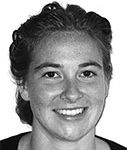
Caroline Ummenhofer
Steven J. Davis, Walter Immerzeel, Isaac Santos, Drew Turner, and Caroline C. Ummenhofer were awarded the 2018 James B. Macelwane Medal at the AGU Fall Meeting Honors Ceremony on 12 December 2018 in Washington, D. C. The medal is for “significant contributions to the geophysical sciences by an outstanding early career scientist.”
Citation
Caroline Ummenhofer is at the forefront of developing a dynamic understanding of how the ocean affects the climate system. She has done particularly creative work in helping to understand the mechanisms of how ocean properties give rise to changes in large-scale atmospheric circulation that impact rainfall on land. Her core research discoveries have been in tropical climate variability, particularly in the Indian Ocean; the linkages between ocean variability and atmospheric blocking outside the tropics; and the connections between the Hadley Circulation and the ocean’s eastern boundaries. In each area, Caroline has made very substantial contributions. For example, prior to her highly cited 2009 paper in Geophysical Research Letters, it was thought that the most damaging droughts experienced in Australia were caused by Pacific Ocean conditions. However, she showed convincingly that conditions in the Indian Ocean were the real cause.
Caroline has worked with a variety of colleagues on a wide array of climate problems over millennial timescales to modern seasonal predictions. She introduces new techniques and concepts in her work and always has an eye toward the implications for society. She has taken a particular interest in showing the connections between ocean conditions and the extremes of drought and flood that influence crop yields. She has made exceptional contributions to understanding the ocean’s influence on rainfall in Australia, the United States, Southeast Asia, and Africa. She is a leading expert on the expansion of the tropics and drying of the subtropics predicted with global warming. She has taken on leadership roles in national and international projects like Climate and Ocean: Variability, Predictability and Change (CLIVAR) while maintaining a truly remarkable production rate of original scientific research. Her dynamical insights are deep, the problems she tackles are hard, and her approaches are novel and creative. She is a rising star in ocean and climate science and has already had a global impact.
On a personal level, I have to say that it has been a wonderful experience to have Caroline as a colleague for the past 6 years. I marvel at her productivity, her prodigious travel schedule, her skill at building collaborative teams, her teaching ability, and her generosity to students, colleagues, and the community at large. I am certain that you will be hearing her name in connection with important discoveries about the climate system for many years to come. Please join me in congratulating Caroline for her well-deserved honor of the James B. Macelwane Medal.
—Raymond W. Schmitt, Woods Hole Oceanographic Institution, Mass.
Response
Thanks, Ray, for your kind words—and your relentless support and encouragement over the years. I also want to thank my nominators and the AGU Macelwane selection committee for their time and efforts.
Science, and especially climate science, has become an intrinsically collaborative effort. The research leading to this medal was only possible through contributions from many colleagues around the world. I am continuously inspired by the wealth of groundbreaking research findings by the climate and geoscience community—many of whom are at least as deserving of this medal.
The interdisciplinary nature of the field is what first drew me to ocean sciences and my degree in marine biology/oceanography at the School of Ocean Sciences, University of Wales, United Kingdom. Three individuals there in particular opened my eyes to the attraction of interdisciplinary research in biophysical interactions and paleoclimate that I enjoy at the Woods Hole Oceanographic Institution (WHOI) today, namely, Dave Bowers, David Thomas, and James Scourse.
From north Wales to New South Wales, half way around the globe, an 8-week internship in Sydney, Australia, turned unexpectedly into the best 8-year Ph.D. and postdoc experience I could have wished for. I am deeply grateful to my adviser, Matthew England, for his unstinting support and generous mentorship ever since that email about hosting my internship—and for teaching me how to be a productive, creative, and collaborative scientist. I also found a wonderful team of close colleagues-turned-friends at the University of New South Wales, particularly with Alex Sen Gupta and Andrea Taschetto.
My research on Australian rainfall and Indian Ocean dynamics was greatly enriched by interactions with colleagues at CSIRO (Peter McIntosh, Gary Meyers, Mike Pook, James Risbey). Long-standing collaborations with colleagues at the Lamont Doherty Earth Observatory (Rosanne D’Arrigo, Brendan Buckley), Claus Böning and Arne Biastoch (GEOMAR Helmholtz-Zentrum für Ozeanforschung Kiel), Jerry Meehl (National Center for Atmospheric Research), and Rhawn Denniston (Cornell College) also shaped my research.
I’ve been fortunate over the years to be able to rely on wonderful administrative staff and would like to thank them for all their hard work that supports all our scientific endeavors.
At WHOI, I found a stimulating collaborative environment ideal for exciting new interdisciplinary research, made so by the individuals working there. Too numerous to all name here, I am indebted to Ray Schmitt as my key mentor and also thank my close collaborators Young-Oh Kwon and Hyodae Seo, as well as a dynamic group of postdocs and students.
It feels like I receive this award as a representative of a larger collective—and I constantly cherish the opportunities to work with many inspiring researchers from different disciplines to tackle key questions in the field of climate science and its societal applications.
—Caroline C. Ummenhofer, Woods Hole Oceanographic Institution, Mass.
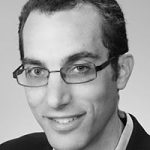
Robert E Kopp
Robert E. Kopp, Michael P. Lamb, Yan Lavallée, Wen Li, and Tiffany A. Shaw were awarded the 2017 James B. Macelwane Medal at the AGU Fall Meeting Honors Ceremony, held on 13 December 2017 in New Orleans, La. The medal is for “significant contributions to the geophysical sciences by an outstanding early career scientist.”
Citation
Dr. Robert E. Kopp is an outstanding young scientist who has already achieved a remarkable record of sustained research excellence in geobiology, climate policy, and sea level change. The James B. Macelwane Medal is intended to honor scientists who display exceptional depth and breadth of research. In this respect, Bob’s research program is unprecedented. Bob is brilliant, quantitatively adept, extraordinarily collegial and collaborative, and focused on research, teaching, and public service.
Certainly, the impact and quality of Bob’s publication record alone qualify him for the James B. Macelwane Medal, including one article on paleo–sea level that is, perhaps, the best and most original in its field in many, many years. Bob is the key inventor and innovator of Bayesian Gaussian process modeling of sea level, an application that has revolutionized the field of sea level rise reconstruction and projection. Beyond the high quality and sheer number of his scholarly contributions, Bob exemplifies many additional qualities that speak to his promise for continued leadership, including his talent as an educator—both within academia and beyond—and as a leader in interdisciplinary science teams. Bob has built a highly successful research group at Rutgers, and he did so at an impressive speed. There is no doubt that Bob already has had a significant impact on training scientists of the future.
Bob’s continued engagement in policy and outreach—such as working with individual states on sea level risk analyses and coauthoring technical aspects of the excellent Risky Business reports to the National Academy of Sciences and the Intergovernmental Panel on Climate Change—illustrates his ability to make contributions in diverse areas of climate science and communicate his scientific expertise into relevant policy advice. His service record would be exemplary for a senior scientist; for an early-career researcher, it is truly remarkable.
I would like to conclude by saying that Bob has emerged as one of the most energetic and productive scientists of his generation. His accomplishments as a scholar, educator, and citizen of AGU’s academic community make him more than deserving to receive the James B. Macelwane Medal. Please join me in congratulating Dr. Robert E. Kopp on his accomplishments.
—Benjamin P. Horton, Asian School of the Environment, Nanyang Technological University, Singapore
Response
Thank you, Ben, for the nomination, and thanks to AGU for this great and humbling honor.
My career has depended intensely on the support of family, friends, mentors, and collaborators. My parents fostered a love of inquiry and provided boundless support. David Morrow, my longest-standing collaborator, has exchanged ideas with me since middle school. At the University of Chicago, Munir Humayun brought me into geosciences by way of astrobiology and let me work with a tiny piece of Mars. At the California Institute of Technology (Caltech), Joe Kirschvink brought me to his quirky Earth, taking me around the world to study the Precambrian rise of oxygen and the fossils of magnetotactic bacteria. At Princeton, Adam Maloof dove with me into the weird North American coastal waters of the Paleocene–Eocene Thermal Maximum, Frederik Simons helped me hone my statistical skills, and Michael Oppenheimer grounded me in the challenges that arise when humans start tinkering with the Earth system. During my first venture outside of academia, Rick Duke gave a policy-inexperienced young scientist the challenge of helping the U.S. government figure out how to value climate damages.
For the last 7 years, my colleagues at Rutgers have been great supporters and collaborators. From unearthing and interpreting paleo–sea level records to building coastal resilience in the aftermath of Hurricane Sandy, I’ve been in the right place and time to work with colleagues like Ben Horton and Ken Miller and outstanding students and postdocs on both the fundamentals and the applications of sea level science. I’ve come into the paleo–sea level community at a time when that community, through PALSEA, has been organized into one of the most welcoming and collegial small scientific associations I’ve ever encountered. I’ve been extremely fortunate to have worked over the last 4 years with outstanding economists like Solomon Hsiang to build the multi-institutional collaboration that is now the Climate Impact Lab. To top it off, most recently, I’ve been blessed to have met my wonderful, compassionate, supportive wife, Farrin Anello. And there are so many more family members, friends, and colleagues I’d like to thank but cannot name.
I’d like to express my appreciation to AGU for valuing the winding road I’ve taken. I’d like to accept this award on behalf of all the young scientists in our community who are trying to be both excellent researchers and active participants in addressing the societal challenges revealed by the geosciences.
—Robert E. Kopp, Institute of Earth, Ocean, and Atmospheric Sciences, Rutgers University–New Brunswick, N.J.
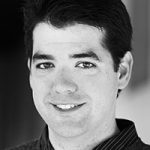
Michael P Lamb
Robert E. Kopp, Michael P. Lamb, Yan Lavallée, Wen Li, and Tiffany A. Shaw were awarded the 2017 James B. Macelwane Medal at the AGU Fall Meeting Honors Ceremony, held on 13 December 2017 in New Orleans, La. The medal is for “significant contributions to the geophysical sciences by an outstanding early career scientist.”
Citation
Michael Lamb’s research activities and his influence on other geoscientists are together transforming studies of land-forming mechanisms and their sedimentary record in terrestrial, submarine, and extraterrestrial landscapes. With his students and postdocs he has opened up new avenues of research by tackling head-on long-standing, unresolved questions through theory, field observation, experimentation, and numerical simulation. The results are striking advances in the understanding and modeling of landscape-shaping mechanisms in mountainous terrain and on alluvial plains and deltas, the seafloor, and extraterrestrial bodies.
Remarkably, Mike has already made fundamental contributions in multiple fields: geomorphology, sedimentology, and planetary science. His work has deepened our understanding of river incision in mountainous landscapes, including the roles of sediment transport, megafloods, and waterfall genesis, with implications for interpretation of landforms on Earth and Mars. He has fundamentally changed our understanding of the transport of large clasts by rivers, demonstrating and explaining the nonintuitive finding that higher fluid shear stresses are required for clast transport on steeper slopes. On continental margins, Mike has significantly advanced understanding of coastal alluvial rivers and their linkage to sedimentation in the nearshore environment and their role in the development of seafloor stratigraphy and bed forms. He has extended his work on sedimentary bed forms to include extreme environmental conditions experienced during Snowball Earth or on Mars; his work augments the capacity to interpret environmental conditions recorded by landforms, sediments, and bed forms throughout the solar system.
The powerful guiding approach in all these advances is the integration of physical insight, critical field observations, innovative experimentation, and numerical simulation with the development of parsimonious theories of the behavior of flows, granular disturbance transport processes, geotechnical material properties, and their geomorphic or sedimentary products. Mike had the foresight and fortitude to build an extraordinary experimental flume—one with the capacity to enable the extreme experiments required to test and elaborate his early theoretical ideas on river incision by suspended particles, erosion by waterfalls, and initiation of motion of large clasts in steep rivers. The risk has paid off handsomely.
Mike is an avid and effective collaborator, generous with his time and in granting credit to others. His creativity is widely felt, is generously shared, and has already begun to generate a stream of inspired and well-trained students and postdocs who have embarked on their own productive research careers. Mike is destined to have a singular impact on the study of landscape evolution on Earth and other planetary bodies.
—Kelin X. Whipple, Arizona State University, Tempe
Response
Thank you, Kelin, for those overly kind words and thanks to Tom Dunne, John Grotzinger, and Alan Howard for your nomination. I am honored to be recognized by AGU and to be part of the generous community of Earth surface processes. It is sharing ideas with students, mentors, and colleagues that renews my curiosity and drive. And it certainly helps to work in a discipline that is realizing major discoveries about Earth’s dynamic surface. There are many people to thank.
It is my good fortune, being Minnesotan, that my local university hired a captivating and well-bearded instructor, Chris Paola. Chris inspired me to switch majors from engineering to geology and pursue graduate school. He also introduced me to Gary Parker, and I am grateful to Gary for leading me through my first scientific investigation and his continuing mentorship and intellectual generosity. I am indebted to Bill Dietrich, my Ph.D. adviser, for teaching me how to interrogate the Earth with new eyes and giving me the tools to be a scientist. As I was leaving Berkeley, Bill told me, while eating nuts, to be curious, question everything, and take notes, and, Bill, I try my best to do the first two. Alan Howard is my example of a modern-day explorer, and Jeff Parsons helped me navigate turbulence. I am continually inspired by Paul Myrow, who taught me, among other things, that fieldwork is always fun regardless of itchy skin. And I always find myself trying to mimic David Mohrig, not in wardrobe but in time travel between modern and ancient environments. Acknowledging others requires cheating the word limit: PerronVendittiNittrouerFischerTsaiMcElroyEwingDiBiaseGantietal.
I enjoy my job, and I feel very fortunate to be able to say that. At the California Institute of Technology (Caltech), it has been a great pleasure to have worked with many brilliant students, postdocs, and colleagues in an extremely engaging, challenging, and fun environment. This award reflects our collaborative work. Brian Fuller brought flume experiments back to Caltech, and John Grotzinger has broadened my thinking and taught me to shoot with both eyes open. I look forward to years to come.
Although my parents still think I am an engineer, I thank them for always encouraging me. And most important, I simply would not have survived the trials of tenure without the love and friendship of my wife, Anna, and hugs from our amazing girls, Evelyn and Rhea.
—Michael P. Lamb, California Institute of Technology, Pasadena
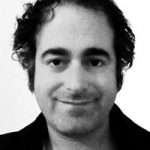
Yan Lavallée
Robert E. Kopp, Michael P. Lamb, Yan Lavallée, Wen Li, and Tiffany A. Shaw were awarded the 2017 James B. Macelwane Medal at the AGU Fall Meeting Honors Ceremony, held on 13 December 2017 in New Orleans, La. The medal is for “significant contributions to the geophysical sciences by an outstanding early career scientist.”
Citation
Professor Yan Lavallée is recognized for his innovative high-temperature experimentation in the solid Earth sciences. His laboratory is devoted to experiments performed at the extreme conditions relevant in volcanic systems. The experiments are designed to advance understanding of volcanic, geothermal, and other dynamic geological processes. His research program leads the world in elucidating linkages between magma properties and rheology and the behavior (explosive versus effusive) of volcanic systems.
Lavallée obtained his B.Sc. honors degree from McGill University in Canada, and his early research involved analogue modeling of caldera subsidence. He continued his research on calderas with a study of a Peruvian volcano to earn his M.Sc. in space studies at the University of North Dakota in the United States. His passion for high-temperature experimentation, however, derives from his Ph.D. studies at Ludwig Maximilian University in Munich, Germany.
His Ph.D. studies focused on lava dome–producing volcanoes; these eruptions are unpredictable and can rapidly switch from quiescent effusive behavior to catastrophic explosive activity. Understanding the switching mechanisms has been a topical line of research for 20+ years. Lavallée has provided a quantitative understanding of how the porosity, permeability, and crystallinity of dome magmas affect rheology and, together with effusion rates, dictate volcanic consequences. His experimental data on crystal-rich dome lavas demonstrated the non-Newtonian strain rate dependence of magma viscosity and showed the commonly employed Einstein–Roscoe equation to be totally inappropriate for crystal-rich magmas. This result launched an industry of studies into the effects of crystals and bubbles on magma rheology. His work also made connections between field observations on lava domes, experimental deformation of natural dome magmas, and geophysical signals expressed in nature and captured in the lab. His insightful analysis of these data sets produced a means of forecasting lava dome collapse events based on seismic signals.
Lavallée is now a professor of volcanology in the Department of Earth, Ocean and Ecological Sciences, where he has established a vibrant, well-equipped (approximately US$2.5 million) laboratory for experimentation on volcanic materials. Recent high-impact studies have explored the interplay of frictional heating and vesiculation, suggesting that thermal heating may play a larger role in explosive eruptions than previously recognized. His experiments also explored the capacity of “tuffisite networks” (veins of pyroclastic particles) within lava domes to control permeability and thus explosivity. His experiments showed how the timescale of “healing” of the tuffisite veins provides a means of transitioning to, and cycling between, effusive to explosive eruption by gas repressurization. Lavallée has made, and will continue to make, high-impact, important contributions to our understanding of volcanic processes through thoughtful experimentation.
—Kelly Russell, University of British Columbia, Vancouver, Canada
Response
It is with great gratitude that I receive the James B. Macelwane Medal; I extend my thanks to Kelly and my nominators, who certainly expressed generous words in favor of my contributions to geophysical sciences! I am most delighted to accept this prestigious honor and humbly stand alongside the illustrious scholars who have received it before me.
I was 5 years of age when, one summer afternoon in the province of Quebec, I asked my mother, “Maman, qu’est ce qu’on est?” Gobsmacked, she knew very well that the question I (and I imagine many of you) was troubled with could not be answered, at least, not simply. She looked at me, shrugged her shoulders, and replied that she didn’t know. That initiated my search for answers—answers I sought in geosciences. It’s been nearly 20 years since I began to study the Earth, and I count myself lucky to have faced very few problems that have cast a shadow large enough to darken a week at work. We’re privileged in that we get to see the world through our work, and we all agree, it’s a wonderful place, well worth knowing.
In my career to date, I have had the rewarding opportunity to work with well over 100 collaborators—in laboratories, at observatories, in factories, and everyone I met in the field—so I may not be able to thank all of you here, but please see these words as a kind reminder of the superb times we have spent together and of the findings we have achieved together. You have contributed in a million ways, and I share this honor with you.
My undergraduate years at McGill University taught me that everything can be achieved with dedication, hard work, and, of course, fun! Thanks to John Stix, Ben Kennedy, Alain Garand, and Don Francis for teaching me that important bit of wisdom, mixed with a great deal of geology! During my master’s degree in space studies at the University of North Dakota, I was lucky enough to work alongside great mentors, Shanaka de Silva, Bob Andres, Mike Gaffey, Stephen Johnson, and Jeff Byrnes, who taught me as much about being a versatile and balanced scientist as about volcanoes, space, and history.
During my doctoral studies at the Ludwig Maximilian University in Munich, Germany, the field of geosciences exploded before my eyes. The technological revolution we are now witnessing has opened up countless possibilities, and I feel fortunate to have met a body of scientists to undertake work on the new challenges of modern volcanology. First, thanks to Don Dingwell for providing the best supervision and mentoring I needed: I owe the vast majority of my knowledge about life as an academic to you, a true friend and a great inspiration! Thanks also to the many I met in my time in Munich: Ulli Kueppers, Kai-Uwe Hess, Betty Scheu, Basti Müller, Jon Castro, Hugh Tuffen, Alex Nichols, Oliver Spieler, Jeremie Vasseur, Fabian Wadsworth, and many more.
In 2012, I moved to the University of Liverpool and established the Experimental Volcanology and Geothermal Research Laboratory to discover that even “Eight Days a Week” (as put forth by the Beatles) were not enough to maximize the scientific opportunities that were yet again growing in number. I thank Felix von Aulock, Silvio de Angelis, and more colleagues in the Faculty of Science and Engineering than I can begin to mention.
I would also like to take the opportunity to thank all those who push larger-than-life initiatives in geosciences, in particular, the Krafla Magma Testbed; I’m proud to be among such company as we aim to establish the first magma observatory. It is a reminder that “the wall between reality and fantasy is sometimes so small and not so tall” when we collectively join efforts for the advancement of our field (as pondered by Raphael Gualazzi in “Reality and Fantasy”).
Finally, a very sincere thanks to my partner, Jackie Kendrick, whom I’m fortunate enough to work alongside. And thanks to all of my friends and family, scattered around this beautiful Earth.
In closing, many thanks to the AGU community for this heart-warming honor. In return, I promise to keep you entertained by publishing science as provocative as it is insightful and inspirational for many years to come.
—Yan Lavallée, University of Liverpool, Liverpool, U.K.
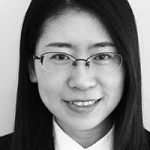
Wen Li
Robert E. Kopp, Michael P. Lamb, Yan Lavallée, Wen Li, and Tiffany A. Shaw were awarded the 2017 James B. Macelwane Medal at the AGU Fall Meeting Honors Ceremony, held on 13 December 2017 in New Orleans, La. The medal is for “significant contributions to the geophysical sciences by an outstanding early career scientist.”
Citation
Wen Li has published several outstanding research papers showing how wave–particle interactions play a key role in controlling the dynamic evolution of the Earth’s Van Allen radiation belts. She has pioneered the use of low-altitude satellite data as a proxy for the global distribution of plasma waves at much higher altitudes.
Wen Li started her work on the Earth’s radiation belts as a Ph.D. student at the University of California, Los Angeles. One of her greatest achievements is to show that a particular class of plasma waves, known as electromagnetic ion cyclotron waves, can cause rapid loss of relativistic electrons that are otherwise trapped inside the external magnetic field of the Earth, a region known as the Van Allen radiation belts. She showed that most of the losses occur during the main part of a geomagnetic storm and that later on, as conditions recover from the storm, there is another class of plasma waves that can accelerate electrons to relativistic energies. Thus, she was able to show how wave–particle interactions play a key role in controlling the dynamic variability of the belts.
In order to quantify acceleration and loss on a global scale, one needs to know the global distribution of plasma waves. However, the properties of these waves vary considerably in space and time, making this a challenging problem. Wen Li developed a novel technique of using particle data from satellites in low-Earth orbit to calculate the properties of plasma waves along the geomagnetic field near the equatorial region. Because there are several satellites in low-Earth orbit, Wen was able to develop a global distribution of plasma waves with much higher spatial and temporal resolution than ever before. This technique has been adopted by other research groups and incorporated into global radiation belt models, which have shown a vast improvement. Wen’s work has had a major impact and illustrates her creativity and lateral thinking.
Wen Li has published 120 papers, including 2 in Nature and 1 in Science. This is astonishing for an early-career scientist with only 7 years since her Ph.D. She is a member of the NASA Time History of Events and Macroscale Interactions during Substorms (THEMIS), Van Allen Probes, and now Juno mission science teams, and collaborates widely.
Wen Li has recently taken up a new position as assistant professor at Boston University. She is a shining example of excellent research, international collaboration, and leadership for the next generation.
—Richard Horne, British Antarctic Survey, Cambridge, U.K.
Response
I would like to thank Richard Horne for his generous citation and nomination. I am deeply grateful to Vassilis Angelopoulos, Mary Hudson, and Craig Kletzing for their strong support in this nomination process. I also really thank the Macelwane Medal Committee and AGU for this distinct honor.
My career has significantly benefited from support and encouragement from many of my dear colleagues, to whom I can never express my gratitude sufficiently. As a student, I was very fortunate to work under the guidance of professors who are passionate and dedicated to research and teaching: my Ph.D. adviser, Richard Thorne, at the University of California, Los Angeles (UCLA), and my undergraduate adviser, Youqiu Hu, at the University of Science and Technology of China. They taught me how to have fun in the wonderful world of space physics with their keen scientific insight, enthusiasm for science, and great sense of humor in life.
My Ph.D. research at UCLA started when the new NASA THEMIS mission led by Vassilis Angelopoulos was launched. The THEMIS mission opened the door for me to learn how to find and solve interesting scientific problems from the satellite data. Over this period, I also received generous help from the theoreticians and modelers, particularly Richard Thorne, Richard Horne, Jacob Bornik, and Yuri Shprits. During my postdoctoral research, I was truly fortunate to work on the Van Allen Probes data with many excellent team members, particularly Mary Hudson and Craig Kletzing, who have been warmly supporting my career development. My early career at UCLA greatly benefited from an extremely productive research atmosphere by working with my outstanding colleagues and friends, particularly Jacob Bortnik, Qianli Ma, Lunjin Chen, Zin Tao, and Binbin Ni, as well as many other colleagues with whom I have had a chance to work.
I am also really grateful to my colleagues at Boston University, who are very supportive of my research and teaching in the present early stage of my career as a faculty member by sharing their valuable experience and providing insightful suggestions. It has also been a great pleasure to work with my dear students and postdocs at Boston University, and I believe the best is yet to come.
Finally, I would like to give my special thanks to my family, in particular, my dearest colleague and husband, Toshi Nishimura, who was a recipient of the Macelwane Medal last year, for sharing numerous precious moments with me both academically and personally.
—Wen Li, Boston University, Boston, Mass.
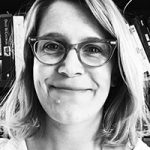
Tiffany Shaw
Robert E. Kopp, Michael P. Lamb, Yan Lavallée, Wen Li, and Tiffany A. Shaw were awarded the 2017 James B. Macelwane Medal at the AGU Fall Meeting Honors Ceremony, held on 13 December 2017 in New Orleans, La. The medal is for “significant contributions to the geophysical sciences by an outstanding early career scientist.”
Citation
Tiffany Shaw has done fundamental work explaining the atmospheric dynamics of tropospheric and stratospheric processes using a combination of numerical modeling, basic theory, and analysis of observations. Her work has had a broad impact beyond atmospheric dynamics, including improving global climate models, which are used in climate, paleoclimate, planetary science, and exoplanet research, and explaining important aspects of the Indian monsoon and jet streams, which are important for agriculture, geology, and geochemistry.
Tiffany began her career studying mathematics and atmospheric sciences at the University of British Columbia. She then did her Ph.D. in physics at the University of Toronto under the guidance of Ted Shepherd. Her Ph.D. contribution included theoretical developments related to gravity wave drag parameterization that have helped improve global climate models. Her key physical insight was that the middle atmosphere is driven by nonlocal wave forcing and is connected through it, so that violating momentum conservation can have grave, unintended consequences on the modeled circulation.
Tiffany then spent time as a research assistant professor at New York University and then as a postdoc and assistant professor at Columbia. During her time in New York, she improved our understanding of stratosphere–troposphere coupling and its role in tropospheric climate variability and anthropogenic climate change. She also advanced our understanding of tropospheric moisture and momentum transport between the tropics and the midlatitudes, especially in relation to stationary eddies and the rapid onset of the monsoon.
Since 2015, Tiffany has been on the faculty at the University of Chicago, where she recently received tenure. Here she has continued to branch out from the stratosphere to the troposphere and from the midlatitudes to the tropics. It is now fair to say that Tiffany has made significant contributions to nearly every major area of atmospheric dynamics.
Tiffany’s approach to problems has included abstract mathematical manipulation and interpretation, clever use of global climate models, and careful analysis of observational data. She has dirtied her hands with projects that had appeared too messy to many atmospheric dynamicists and has solved problems that not only have beautiful solutions but also are interesting to a wide community of researchers working in climate and other areas. Her work has already had a tremendous impact, and it will continue to do so for years to come.
—Dorian S. Abbot, University of Chicago, Chicago, Ill.
Response
Thank you, Dorian, for your kind words. It’s been a pleasure to be your colleague these past few years, and I look forward to many more. At the University of Chicago, I’ve become a better scientist because I’ve been pushed to ask big questions.
I’m truly grateful to AGU for this honor. Many people have contributed to my success, and I would like to thank each in turn. I would like to begin by thanking my collaborators, postdocs, and students for joining my quest. I share this award with you.
As an assistant professor, I received invaluable support from my colleagues at Columbia University, in particular, from Professors Arlene Fiore, Lorenzo Polvani, and Adam Sobel. I doubt I would have received this award without their support.
As a postdoctoral fellow, I had the pleasure of working with Professor Olivier Pauluis and Dr. Judith Perlwitz. They expanded my horizons and got me thinking about important processes in the troposphere.
In the very beginning I was fortunate enough to be advised by Professor Ted Shepherd at the University of Toronto. I owe much of my scientific rigor and intuition to him. He instilled in me the importance of using theory for its own sake as well as for practical purposes, for example, to improve climate models.
Finally, I want to thank my family, especially my newborn son, Henry. I look forward to exploring science and the humanities and sharing my future discoveries with you.
—Tiffany A. Shaw, University of Chicago, Chicago, Ill.
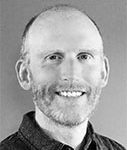
Andrew J Hooper
Andy Hooper was awarded the 2016 James B. Macelwane Medal at the AGU Fall Meeting Honors Ceremony, held on 14 December 2016 in San Francisco, Calif. The medal is for “significant contributions to the geophysical sciences by an outstanding early-career scientist.”
Citation
Andy Hooper is a specialist and innovator in geodetic imaging methods using interferometric analysis of satellite radar images (InSAR). At the same time, he has improved our understanding of magmatism and tectonics with geophysical models interpreting ground deformation. He is unusual in being at the top of his field in the technical aspects of geodetic data acquisition and processing, as well as being one of the leading modelers of geodetic data.
With InSAR analysis, the phases of radar echoes on multiple passes of a satellite over the same terrain are compared to reveal changes in the line-of-sight distance between the satellite and the ground. One approach to the problem is to identify those image pixels for which the radar echo is dominated by a single dominant scatterer. One of Andy’s contributions was to develop an approach to identify such persistent scatterers using phase stability, the parameter of interest, rather than radar brightness as in earlier methods. He also made no assumptions about the temporal nature of the deformation, rather relying on the spatial coherence of the deformation signal. His algorithms offered several significant advances and are well suited for nonurban settings such as volcanoes. This work has had major impact, with his four papers on the subject attracting over 1500 citations to date.
Andy has unselfishly shared his advanced approaches to the analysis of InSAR time series by releasing his software (Stamps) to the community as open-source code, significantly impacting the community of scientists using satellite geodesy. The software has been used in a wide range of applications spanning volcanic and tectonic deformation through to urban subsidence caused by water extraction. In 2015 alone, over 150 papers were published that used the Stamps software.
Andy’s work on volcanic and tectonic processes has also had a major impact. In particular, he has led modeling efforts to understand magmatic processes in Iceland associated with recent eruptions, as well as demonstrating how ice cap retreat in Iceland can perturb the crustal stress state sufficiently to alter the tendency for magma to be trapped within the crust as opposed to erupting. His results have been published in several high-level journal articles. Since moving to the United Kingdom in 2013, Andy has helped establish Leeds as a world-leading research center for applied satellite geodesy.
—Freysteinn Sigmundsson, University of Iceland, Reykjavík
Response
Thank you to the medal committee for this award, which I am honored to receive, and thank you, Freysteinn, for those generous words. I do feel fortunate to be in a position where I can straddle two realms, working as both engineer and scientist.
Scientific endeavor is all about people, of course, and there are many exceptional individuals responsible for my being in this position today, although I can mention only a few here. My Ph.D. advisors at Stanford, Paul Segall, himself a former Macelwane Medal recipient, and Howard Zebker, mentored me through graduate school and taught me intellectual rigor and critical thinking. Their influence continues to very much shape my own approach to scientific problems.
My time spent during a postdoc in Iceland gave me the chance to live close to volcanoes. There, from Freysteinn Sigmundsson, I learned the importance of collaboration and working across disciplines, and I continue to work closely with colleagues there today.
Ramon Hanssen was instrumental then in getting me hired at Delft, where I spent several years in an engineering faculty, learning how to deal robustly with observations and errors. Ramon also taught me much about strategic thinking.
Now I am back in a geoscience-focused environment at Leeds, where I work with many talented individuals. Tim Wright, with whom I collaborate particularly closely, deserves special mention, and I have learned a great deal about leadership from him.
One of the most enjoyable aspects of my job has been working with graduate students. I have gained much from two former students, in particular, David Bekaert and Karsten Spaans, whom I had the pleasure of advising both during their master’s degrees at Delft and then during their Ph.D. studies at Leeds.
There have been many others who have shaped the way I think about science and have contributed to this award. My wife, Julia, deserves special thanks for her advice on all aspects of scientific life, from dealing with colleagues to wrestling with gritty scientific problems. Last, I thank my children for keeping me grounded. When I told my 8-year-old son Tom, a keen runner, I had been awarded a medal, he was pretty impressed—until he found out that I had not actually won a race.
—Andy Hooper, University of Leeds, Leeds, U.K.
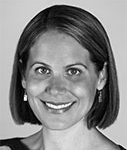
Maureen D Long
Maureen D. Long was awarded the 2016 James B. Macelwane Medal at the AGU Fall Meeting Honors Ceremony, held on 14 December 2016 in San Francisco, Calif. The medal is for “significant contributions to the geophysical sciences by an outstanding early-career scientist.”
Citation
Maureen Long has made seminal contributions to our understanding of circulation in the Earth’s mantle by combining seismology, mineral physics, and geodynamics. Much of Maureen’s work concerns subduction zones, which are delineated by deep ocean trenches, where tectonic plates sink, or subduct into the Earth’s mantle. The direction of mantle flow driven by convection, plate motion, and sinking slabs is best detected with seismic anisotropy that is caused by deformation-induced fabric in minerals. Maureen Long is a pioneer and leader in using seismic anisotropy to reveal how slabs subduct and the mantle circulates.
For her graduate work at the Massachusetts Institute of Technology, Maureen combined seismic observations with numerical models and mineralogical experiments to study anisotropy beneath Japan. With her multidisciplinary tool kit, she then began her major research thrust on subduction zones, first as a postdoctoral fellow at the Carnegie Institution of Washington’s Department of Terrestrial Magnetism and later as a faculty member at Yale. Maureen led or co-led seismological field deployments in Oregon, the Appalachians, and Peru and an oceanographic survey over the U.S. Atlantic continental shelf. Her work resulted in key insights on subduction anisotropy and mantle flow near, for example, Japan, Tonga, Alaska, Oregon, Peru, and the Caribbean and Scotia Arcs.
Maureen’s early studies showed that anisotropic fabric in the mantle beneath subduction zones is pervasively trench parallel, which suggests a component of flow perpendicular to plate motion. This discovery implied that slabs do not merely sink vertically but roll backward, squeezing the mantle out of the way and parallel to the
trench. However, with new data, Maureen showed that while subduction zones attached to old plates have trench-parallel fabric, younger ones have trench-perpendicular fabric; this suggests that subducting plates transition from steadily subducting to foundering backward, depending on their age.
Maureen’s contributions extend beyond studying subduction zone flow. She and colleagues used their Peru data to show that shallow slabs are weak and undergo extensive internal deformation. Her analysis of anisotropy in the lower mantle indicates flow deflected by chemically stable “piles” (large low shear velocity provinces) at the core-mantle boundary. Her recent work on anisotropy in the mantle transition zone and the lithosphere beneath continents has yielded new insights into deformation in these regions of the mantle.
Maureen Long is a rising star of mantle seismology and dynamics. With her field programs and interdisciplinary approach, she has made, and will continue to make, lasting discoveries about subduction zones and how the Earth’s mantle convection engine works.
—David Bercovici, Yale University, New Haven, Conn.
Response
Thank you to AGU for this tremendous honor and to Dave Bercovici for the generous citation, for spearheading my nomination, and for years of mentorship and support. I am delighted to be named as a recipient of the Macelwane Medal, not least because I am grateful for the rare privilege of being able to thank my mentors, students, and collaborators in a public forum.
I decided that I wanted to become a geophysicist in middle school, after learning about plate tectonics in science class and realizing that it was the coolest thing I had ever heard of. Not many people see their career dreams at the age of 12 realized, and the fact that I have is due to my good fortune in having a string of extraordinary teachers and mentors. My professors at Rensselaer Polytechnic Institute treated me like a scientist from the day I walked in the door as a freshman, and two summers as a summer intern in Shun Karato’s lab introduced me to seismic anisotropy—I’ve been hooked ever since. I pursued my Ph.D. in the fantastically rich environment of the Department of Earth, Atmospheric and Planetary Sciences at Massachusetts Institute of Technology; Rob van der Hilst was a consummate thesis advisor, and I’m grateful for his mentorship. My time in postdoc paradise at Carnegie was a joy, and working with David James and the late Paul Silver—whom I miss dearly—was a privilege. Since moving to Yale, I’ve been fortunate to be part of an outstanding department and an exceptional cohort of fellow junior faculty.
I share this recognition with a large group of collaborators with whom I’ve worked and adventured—thanks to all of you for your brilliance, your friendship, and for making my science better. It has been an honor to work with my extraordinary students and postdocs, especially Juan Aragon, Neala Creasy, Caroline Eakin, Heather Ford, Xiaobo He, Colton Lynner, Karen Paczkowski, and Erin Wirth. As a seismologist, I feel fortunate to be part of a scientific community that encourages early-career scientists, fosters collaboration and cooperation, and increasingly values diversity.
Most important, I am grateful to my parents, siblings, and family for their love and support over the years. Above all, a huge thank you to my husband, Tony, and our children, Patrick and Caroline; you are the light of my life and I would never be able to do the work I do without you.
—Maureen D. Long, Yale University, New Haven, Conn.
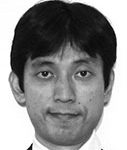
Toshi Nishimura
Toshi Nishimura was awarded the 2016 James B. Macelwane Medal at the AGU Fall Meeting Honors Ceremony, held on 14 December 2016 in San Francisco, Calif. The medal is for “significant contributions to the geophysical sciences by an outstanding early-career scientist.”
Citation
Yukitoshi “Toshi” Nishimura has transformed our understanding of plasma processes in near-Earth space. His research into substorms led the geospace research community to see this dynamic process as system-wide, wherein plasma is transported hundreds of thousands of kilometers from the dayside magnetopause to the magnetotail and then the inner magnetosphere, leading to an instability that creates beautiful auroras and changes Earth’s plasma environment. Using NASA Time History of Events and Macroscale Interactions during Substorms (THEMIS) satellite plasma observations, together with images from ground-based auroral cameras, Toshi made the first unequivocal causal connection between a space plasma process and a specific type of aurora. With that same research, Toshi also made the first testable magnetic mapping between deep in the magnetosphere and the auroral ionosphere. I will limit my citation to the substorm work, but suffice it to say that I consider his auroral and mapping results to be equally important.
At the heart of Toshi’s research is innovative use of data from multiple observational platforms. He has combined plasma and wave observations from an international fleet of satellites with ground-based observations from auroral imagers, radars, and magnetometers to “see” geospace in fundamentally new ways. Where the rest of our field looked at the data from the perspective of the leading paradigms, Toshi found something new that did not fit existing ideas. What Toshi had found were north–south auroral forms stretching from the poleward to the equatorward edge of the auroral oval during, he argued, every substorm. This was perplexing, as neither dominant paradigm required anything that might correspond to these streamers.
Toshi faced a tough crowd not at all receptive to his ideas. He had to explain what the streamer signified in terms of magnetospheric dynamics, and so he did. He had to discover what the arrival of the streamer at the equatorward edge of the oval signified in terms of stability of the system, and so he did. Throughout, Toshi did the necessary work and injected his judicious creativity.
The influence of Toshi’s substorm research has been profound. Now substorm onset is seen as part of a larger process, where flux tubes move from the dayside, across the polar cap and the inner edge of the plasma sheet, carrying plasma with different physical properties that pushes a stable magnetotail into instability. Toshi brought open-mindedness and creativity to the problem and opened our eyes to a more comprehensive and self-consistent picture. In a very real sense, his work on the substorm has been paradigm shifting.
Response
Thank you, Eric, for your generous citation and nomination. I am truly grateful to the members of AGU for this honor, and I am humbled to join the company of the many prestigious scientists who have received the Macelwane Medal. This could not have happened without strong support and encouragement from my close colleagues, and I would like to take this opportunity to express my deep gratitude to them.
Unlike many of the past recipients in space physics and possibly in other fields, I did not build any instruments or large simulation codes by myself. My research almost always relies on hard work from my kind collaborators who invest a countless amount of time and effort making data available. My postdoctoral research at University of California, Los Angeles started when new science from NASA’s THEMIS mission led by Vassilis Angelopoulos was blooming. Eric Donovan and colleagues at University of Calgary and University of California, Berkeley built world-class imaging networks, and my postdoctoral advisor, Larry Lyons, shared with me his enthusiasm and ambition to solve the substorm problem. My part of the work was just to make things happen by cooking data. It was, of course, not easy, but I have been extremely fortunate to interact with the experts in the field who have paved the way for my research. I am also thankful to strong supporters in the community, particularly Bob Lysak.
Back when I worked in Japan, my advisors, Takayuki Ono and Takashi Kikuchi, as well as their lab members, opened the door for me to the exciting science of space physics. Their enthusiasm for science, deep knowledge, and dedication to education made me think that I wanted to be such a professional scientist. Sometimes they were a bit intense; we spent hours just to discuss a figure, and group meetings lasted until midnight. But all those became precious memories and still influence me.
I have also been privileged to work with talented students, most recently with Ying Zou, Bea Gallardo-Lacourt, Boyi Wang, and Cheng Zhen. I am grateful for their hard work, and it has been a great pleasure to witness their tremendous growth both academically and personally; I believe more is yet to come.
Finally, I wish to thank my family, in particular, my wife and fellow space physicist, Wen Li, for her kind support and sharing joy in life and science.
—Toshi Nishimura, University of California, Los Angeles
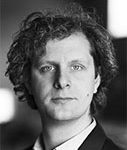
Appy Sluijs
Appy Sluijs was awarded the 2016 James B. Macelwane Medal at the AGU Fall Meeting Honors Ceremony, held on 14 December 2016 in San Francisco, Calif. The medal is for “significant contributions to the geophysical sciences by an outstanding early-career scientist.”
Citation
It is my honor to introduce Appy Sluijs, a recipient of the 2016 James B. Macelwane Medal. Appy, a geobiologist, is being recognized for his prolific and leading-edge contributions to resolving the nature of extreme climate change and impacts on marine biota in Earth’s past.
Appy’s scientific achievements come as no surprise. His deep passion and aptitude for his craft were evident early on when, as an undergraduate at Utrecht, he participated in Ocean Drilling Program (ODP) Leg 208 to the South Atlantic. Despite his inexperience, he made the most of the opportunity, becoming a valued member of the scientific party and eventually contributing to several seminal publications that defined the scale and timing of Eocene hyperthermals and ocean acidification, including the Paleocene-Eocene Thermal Maximum (PETM). Building on this foundation, as a graduate student under the tutelage of Henk Brinkhuis and later as a postdoc, he produced a series of landmark papers involving dinoflagellate taxonomy and geochemical proxies to constrain changes in ocean temperatures, salinity, and ecology of the Arctic and lower-latitude coastal oceans. Key to this effort was his creative use of organic biomarker proxies which he and colleagues at the Royal Netherlands Institute for Sea Research, J. Sinninghe Damsté and S. Schouten, began to apply to Paleogene archives across the globe. This work not only established the extreme warmth and stratification of the Arctic during the PETM but also served as a cornerstone for subsequent reconstructions of global meridional temperature gradients for the Paleogene. In addition to the landmark work on Eocene hyperthermals, Appy contributed to high-impact studies of several other key climate events of the Paleogene, including the middle Eocene Climatic Optimum and the Eocene-Oligocene transition.
Not long after these very early career accomplishments, Appy was appointed full professor, one of the youngest to achieve the rank at Utrecht University. He has since established a major research program and continues to address fundamental issues on the character and impacts of major changes in climate during the Cenozoic. He is also recognized for his extensive service to the scientific community and for exceptional public outreach and education, particularly his work with students in the Young Academy of the Royal Society of the Netherlands.
—James C. Zachos, University of California, Santa Cruz
Response
Thank you, Jim, for this generous citation. I also thank you and my colleagues who wrote letters for the nomination. I thank the members of the Macelwane Medal Committee and AGU for this great honor.
Similar to many of us, my story is one of remarkable serendipity. Coming from a nature-loving family and focusing on biology during my undergraduate studies, I miraculously ran into Henk Brinkhuis at Utrecht University, who introduced me to the wonderful world of dinoflagellates, micropaleontology, and paleoceanography. I would not be where I am without his generosity and inspiration. After my first micropaleontological work, Henk sent me to University of California, Santa Cruz to work with Jim and Stephen Schellenberg, who introduced me to geochemistry. During my graduate work I had the pleasure to collaborate with a set of truly unique, diverse, and creative scientific innovators. Along with Henk and Jim, these were Jerry Dickens, Jaap Sinninghe Damsté, Stefan Schouten, Lucas Lourens, Matt Huber, Ellen Thomas, and many others, discovering, describing, and understanding Paleocene-Eocene transient global warming events. Later on, Gert-Jan Reichart helped me design biogeochemical culturing experiments for dinoflagellate proxy development. I consider all of these people to be incredible scientists and great friends. I also thank my parents and the rest of my family and friends for their unconditional support and Margriet for being who she is.
I cannot name all colleagues who inspired me and with whom I have had the pleasure to work (even Scopus stops counting at 150 collaborators). I would, however, like to mention that much of my work was driven by two institutes: the International Ocean Discovery Program and the Urbino Summer School on Paleoclimatology, dominantly initiated by Henk and Simone Galeotti, which by now has taught over 800 international graduate students.
Our field of science, multidisciplinary paleoclimatology and paleoceanography, had barely started when Father James Macelwane was the AGU president. Now it is a crucial field in improving projections of future change. The rapid progress over the past decades is the accomplishment of a critical but constructive community with excellent leadership in the past and the present. I therefore feel that this medal, although awarded to me, rather marks the success of this research community as a whole, which includes students, postdocs, and faculty, all standing on the shoulders of past giants. And as many grand scientific and societal challenges lie ahead of us, I’m proud to be part of it.
—Appy Sluijs, Utrecht University, Netherlands
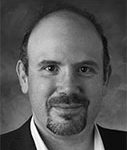
Gabriele Villarini
Gabriele Villarini was awarded the 2016 James B. Macelwane Medal at the AGU Fall Meeting Honors Ceremony, held on 14 December 2016 in San Francisco, Calif. The medal is for “significant contributions to the geophysical sciences by an outstanding early-career scientist.”
Citation
Gabriele Villarini bridges hydrometeorology, climate dynamics, and disaster science in an innovative way. He has explored the meteorological context of floods as it relates to storm tracks, atmospheric rivers, and tropical cyclones, developing consistent and insightful diagnoses and a fundamental building block for understanding how future climate changes may lead to changed event frequency and spatial structure of floods. His work has also led to a better understanding of storm structure, inferences from radar, and the hydrologic response associated with floods. Collectively, he provides the seminal contribution of his generation to this subject area that is worthy of the Macelwane Medal.
His contributions are diverse and impressive. His graduate work laid the foundation of uncertainty analysis of radar-based rainfall fields and was perhaps the most comprehensive such work. His postdoctoral work on flood hydrology extended his contributions in hydrometeorology by developing and applying tools to identify different forms of nonstationarity in extreme rainfall and flood fields and relating these to specific forms of changes in the driving hydrometeorological mechanisms. This work represents a significant departure from his earlier work and demonstrates considerable dedication to working on an important topic and addressing it in depth. One of his colleagues at the time mentioned that she does not believe that Gabriele ever sleeps. His tenure as a faculty member at the University of Iowa has been equally impressive. He has built a wide array of collaborations with practicing and academic hydrologists, meteorologists, climate modelers, and statisticians. These collaborations have led to a series of interesting papers that connect large-scale atmospheric dynamics and their predictability to local and regional extremes. He has become extremely influential in this area and has been a leading contributor to the U.S. Army Corps of Engineers study on how future flood frequency changes can be diagnosed and risk profiled.
I especially like the humility and dedication with which Gabriele approaches the profession and scholarship. He is an outstanding role model for the future of our interdisciplinary field. I fully expect him to shape the directions of research and practice in the field, as he continues to grow and embrace new topics.
—Upmanu Lall, International Research Institute for Climate and Society, Palisades, N. Y.
Response
Thank you, Manu, for your kind words in the citation, and thanks to AGU and to the colleagues who have supported my nomination. This award arguably represents the highest honor for an early-career scientist in the geophysical sciences, and I am thrilled to have been selected to receive it; it is also very humbling given the caliber of scientists who received it before me. Being selected has given me the opportunity to look back at my career so far and to acknowledge how fortunate I have been.
My career wouldn’t have been the same if I hadn’t had the good fortune to work with my Ph.D. adviser at the University of Iowa, Prof. Witold Krajewski. Witek was the best adviser I could have asked for, and has always been there for me, during my graduate work and afterward. He supported and challenged me at every step, allowing me to develop into the scientist I have become. He taught me never to cut corners or take the easy way out. I take pride in considering Witek a life-long mentor and colleague, but more important a friend.
After completing my Ph.D., I was once again really fortunate to be able to work with Prof. James Smith at Princeton University. Jim was a fantastic mentor, who provided me with great guidance and exposed me to a large number of research topics that I probably wouldn’t have dealt with otherwise. Learning from him was instrumental in shaping my current research interests. Overall, I wish everybody could be as lucky as I have been to work with mentors like Witek and Jim.
During my career, I have met and befriended many great scientists. Enrico Scoccimarro, Gabriel Vecchi, and Rhawn Denniston deserve a special mention for their support and friendship over the years and for making our collaborative research fun, exciting, and enriching.
None of this would have been possible, though, without the continued support from my family. My parents and brother have always given me endless love, and they have taught me never to give up and that hard work always pays off. My wife, Amie, is my rock, and she has always been my number-one supporter. And nothing compares to coming home to my daughters, Eleonora and Camilla, after a long day at work, and being asked “How was work, Papá?” followed by hugs and kisses. Thank you!
—Gabriele Villarini, University of Iowa, Iowa City
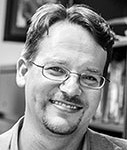
Paul Cassak
Paul Cassak, Bethany List Ehlmann, Colette L. Heald, Matt Jackson, and Kate Maher were awarded the 2015 James B. Macelwane Medal at the AGU Fall Meeting Honors Ceremony, held on 16 December 2015 in San Francisco, Calif. The medal is for “significant contributions to the geophysical sciences by an outstanding early career scientist.”
Citation
Paul Cassak has made groundbreaking contributions to our understanding of magnetic reconnection, which operates in the boundary regions of planetary magnetospheres and the solar corona as well as having great significance in laboratory plasma physics and plasma astrophysics. Good examples of Paul’s groundbreaking research are his work on asymmetric reconnection and reconnection with a flow shear. Early models of reconnection, where magnetic fields effectively break and release their stored energy, treated symmetric systems for simplicity. However, most realistic systems, especially planetary magnetospheres, have different magnetic fields, densities, and/or bulk flow speeds across the boundary region. Just as simulation studies on the topic were beginning in earnest, Paul performed a first-principles calculation predicting the properties of reconnection in asymmetric systems for generic conditions and has since included the effects of plasma flow. These results have facilitated the analysis of satellite data and may be important for predicting solar wind–magnetosphere coupling, a key aspect of space weather phenomena.
In the solar context, his work on the initiation of reconnection through which built-up magnetic energy is released explosively has been influential. It was generally assumed that reconnection, when it happens, is always fast (matching solar flare and magnetospheric substorm time scales), but if it’s always fast, how can it be explosive? Paul’s research answered this question, which had lingered for decades. In a series of papers, Paul showed that when a current sheet separating opposing magnetic fields forms and has large width, resistive effects dominate, and the fields reconnect relatively slowly. When the sheet thins to kinetic scales, collisionless effects abruptly become dominant, and reconnection becomes much faster. Paul’s research showed that there exists a vast parameter regime in which both types of reconnection are stable. He developed several innovative tests of this hypothesis and successfully validated it; the results may be crucial for understanding solar flares.
These and other unique new results in Paul’s impressive body of work have helped revitalize the field of magnetic reconnection and have significantly changed its course.
As an associate professor at West Virginia University, Paul is an active mentor in the fields of space and plasma physics, publishing important papers with his students. As a teacher, he developed novel active-learning materials for graduate courses in plasma physics. His service activities for AGU include chairing the Scarf Award Committee, being an associate editor for Journal of Geophysical Research, and serving on the Space Physics and Aeronomy Policy Committee.
—James L. Burch, Southwest Research Institute, San Antonio, Texas
Response
Thank you, Jim, for the kind citation. I guess all those years of not being popular in high school really paid off! My sincere thanks to the Macelwane Medal Committee, my nominators, and AGU for their efforts for the community.
An honor like this is truly humbling and makes me reflect on the people who contributed to my career, especially four people I’ve never even written papers with. Jim Burch is the principal investigator of the Magnetospheric Multiscale (MMS) mission, which successfully launched in March 2015. In his “spare” time, he was the lead on my nomination. As long as our community has science-driven and civic-minded people like Jim, we’ll be in good shape. Joe Borovsky shared my work with many people, Jim Klimchuk opened doors for me, and Kile Baker believed in me. All of you give the community something to aspire to.
Words cannot express my gratitude to my mentors, especially my doctoral and postdoctoral advisers Jim Drake (Maryland) and Mike Shay (Delaware). I met you accidentally in 2002 and feel extremely lucky to be able to call you mentors, colleagues, and friends.
I have learned much from my colleagues in solar and space physics; an incomplete list includes Dr. Dorelli, Dr. Eriksson, Dr. Fuselier, Dr. Glocer, Dr. Gosling, Dr. Matthaeus, Dr. Mullan, Dr. Murphy, Dr. Phan, Dr. Servidio, Dr. Swisdak, and Dr. Wilder.
I am grateful to my supportive colleagues at West Virginia University, especially Earl Scime. I am forever indebted to you for your guidance and support.
I have been fortunate to have a supportive family throughout my life. My mother, Kit, my father, Barry, and my brother, Todd, have been there for me through thick and thin.
To my love, Julie Bryan, I’ll never know how I got such a great wife. You are funny and serious, patient and encouraging, thoughtful, sweet, smart, and, most of all, supportive. Did I mention smart? And funny? It’s been a pleasure and privilege to go through time with you. Thank you for making me a better person.
Finally, James Macelwane treasured his students. I too have collaborated with outstanding students (Dr. Malakit, Dr. Parashar, Dr. Shepherd, Dr. Komar, Dr. Beidler, and the future Dr. Haggerty, Dr. Doss, and Dr. French), who have enriched my scientific pursuits immeasurably. To all the students reading this—know that you can make important contributions to science and be successful with a lot of hard work and a little luck. Remember that devoting a career to the pursuit of knowledge is an honor.
—Paul Cassak, West Virginia University, Morgantown
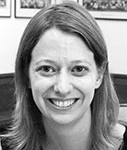
Bethany L Ehlmann
Paul Cassak, Bethany List Ehlmann, Colette L. Heald, Matt Jackson, and Kate Maher were awarded the 2015 James B. Macelwane Medal at the AGU Fall Meeting Honors Ceremony, held on 16 December 2015 in San Francisco, Calif. The medal is for “significant contributions to the geophysical sciences by an outstanding early career scientist.”
Citation
Bethany Ehlmann has made exceptional contributions to the identification and understanding of the alteration mineralogy of Mars, linking surface composition to its geologic context and the implications for the planet’s habitable past. She has made major new mineralogical discoveries on Mars, including carbonates, clay minerals, and other aqueous alteration phases. She has demonstrated that geologic associations of these minerals suggest their production through hydrothermal and groundwater processes occurring in the shallow or middle crust. This is among the most important unanticipated discoveries of the last decade of Mars exploration, as it reveals the nature of the crustal reservoir of mineral-bound water and associated alteration phases and points us toward new terrestrial analog models of the Mars water cycle.
While her dissertation and postdoctoral work has emphasized orbital spectral data analyses from the Compact Reconnaissance Imaging Spectrometer for Mars (CRISM) and the Observatoire pour la Minéralogie, l’Eau, les Glaces et l’Activité (OMEGA), Bethany’s contributions to Mars rover missions began when she was an undergraduate at Washington University. She served in many indispensable mission operations roles on the Mars Exploration Rovers, Spirit and Opportunity, and honed her already formidable scientific skills by contributing to team publications in Science and Nature. Her rover involvement continues to this day with mission-critical leadership roles on the Mars Science Laboratory (MSL) rover Curiosity, including the fact that the results of her orbital data analysis influenced the landing site selection for MSL.
As evidence of Bethany’s far-ranging intellectual interests, she began in an undergraduate program for students with interests in scientific, political, cultural, and ethical issues associated with the environment. She was selected as a Rhodes Scholar, completing two master’s degrees in environmental change and management and geography at the University of Oxford before her Ph.D. in geological sciences at Brown University. Following her Ph.D., she completed a Marie Curie Fellowship at Université Paris-Sud in Orsay. Her extensive publication list (more than 65 peer–reviewed papers) includes topics in astrobiology, polar processes, terrestrial analogs, and advanced instrumentation for future landed missions.
In a field that attracts highly capable scientists, Bethany is clearly a standout, with the technical sophistication, intellectual rigor, and leadership abilities to be at the vanguard of the scientific and technical challenges that await the future of Mars and planetary exploration.
—Wendy Calvin, University of Nevada, Reno
Response
It was a surprise and honor to receive this award. Many thanks to my nominator, Wendy Calvin, whom I’ve had the privilege of working with and learning from on two mission teams.
About 15 years ago—it does not seem so long ago—I attended my first fall AGU meeting as an undergrad. Surfing between remote sensing, biogeochemisty, mineralogy, geomorphology, and planetary sciences, I remember thinking “This is where the fun science is at.”
It remains both fun and a privilege to be part of this community today. Mars science has been an exciting scientific ride, fueled in no small part by the superb data generated by two dedicated Mars imaging spectrometer teams, OMEGA and CRISM, led by Jean-Pierre Bibring and Scott Murchie, along with numerous other amazing friends and colleagues on the Mars Exploration Rover (MER), Mars Reconnaissance Orbiter (MRO), and MSL missions. One of the lessons I’ve learned is that doing great science takes technical skills, commitment, and intuition but also surrounding yourself with a supportive community of mentors. Special thanks go to Ray Arvidson at Washington University for setting me off on this path of exploration as an undergrad, as well as to my mentors on the MER mission—I wouldn’t have found my way to planetary science without you. My thanks also go to John Boardman and Heather Viles at Oxford for honing my skills as an independent researcher and to Jack Mustard, my awesomely supportive Ph.D. adviser at Brown, who encouraged me to dive deeply into the data. Thanks also go to the cohort at Institut -d’Astrophysique Spatiale–Orsay for support during my second foray over the Atlantic and to many supportive faculty, postdoc, graduate student, and staff colleagues at the California Institute of Technology and Jet Propulsion Laboratory. Special thanks go to John Grotzinger, Ray, and Scott for writing letters in support of this citation.
Looking to the future, it is an exciting time to be in planetary science. Having at least flown by all the major bodies in the solar system, we now have to test our understanding of how planets work and evolve against data from the telescopic discoveries of exoplanets. MSL is climbing a mountain on Mars, we’re preparing to examine and sample the most primitive asteroids, and we’re gearing up to explore icy worlds with subsurface oceans. Armed with ever–expanding tools for doing science in situ, there is a revolution in understanding each time we send robotic landers and rovers to unexplored locales. I’m looking forward to the next decades of discoveries. Thank you.
—Bethany List Ehlmann, California Institute of Technology, Pasadena
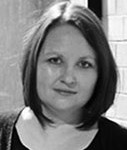
Colette L Heald
Paul Cassak, Bethany List Ehlmann, Colette L. Heald, Matt Jackson, and Kate Maher were awarded the 2015 James B. Macelwane Medal at the AGU Fall Meeting Honors Ceremony, held on 16 December 2015 in San Francisco, Calif. The medal is for “significant contributions to the geophysical sciences by an outstanding early career scientist.”
Citation
Colette Heald is a greatly respected and influential young leader in atmospheric chemistry. Her work has broken new ground in a number of areas, including the use of satellite data to quantify emissions and track intercontinental transport of pollution; methods for investigating aerosol aging processes; and insights into the factors controlling the abundances of organic aerosols, dust, and primary biological particles.
One of Colette’s great strengths is her ability to effectively interact with experimentalists, synthesizing observations and modeling into new provocative concepts. In one of her most cited papers, she used aircraft data and modeling to demonstrate the woeful inadequacy of current understanding of organic aerosol sources in the remote atmosphere. This paper triggered a decade of research to improve models and observations. Colette’s own subsequent excellent work on the topic established her as an authority on secondary organic aerosols. She documented in particular the unique interactions between natural and anthropogenic emissions in the formation of organic aerosol, and she applied her knowledge of satellite remote sensing to place new constraints on the global budget of organic aerosol, dramatically reducing the previous range of uncertainty.
Colette has a talent for innovative thinking that leads to new ways of approaching problems. An outstanding example is her proposal of the van Krevelen diagram to quantitatively track the evolution of the composition of organic aerosol during its aging in the atmosphere. The van Krevelen diagram has its origin in the petrochemical processing field. Colette’s idea to apply it to field data to track the progress of atmospheric oxidation was simply brilliant!
Colette distinguishes herself also by her service to the research community. She has chaired the Aerosols Working Group of the GEOS-Chem atmospheric model for many years, leading a group of over 50 aerosol scientists worldwide in identifying and implementing priorities in model development. She has convened five AGU Fall Meeting sessions.
Colette’s vision for the importance of aerosols in the Earth system, combined with her strong grounding in aerosol chemistry and physics, puts her in a powerful position to lead the development of new understanding on the connected roles of aerosols in affecting climate, air quality, and biogeochemical cycles.
—Sonia Kreidenweis, Colorado State University, Fort Collins
Response
My deepest thanks to my colleagues for supporting this nomination and AGU for the tremendous honor. In particular, I’d like to thank Sonia Kreidenweis for her kind nomination and her support as a colleague and mentor.
The Macelwane Medal represents the highest honor of my career. It is especially humbling to receive this as a recognition of contributions to geosciences. Atmospheric chemistry is a fairly young discipline in the geosciences; it brings together scientists with a range of backgrounds to study what I consider to be the science behind the Earth’s most pressing environmental issues. This makes for a magical combination of multidisciplinary problem solving within a friendly and collaborative community. I count myself lucky to be a part of it. And I am grateful for AGU’s recognition of our field.
It has been my privilege to work with inspiring people within outstanding institutions. My Ph.D. adviser Daniel Jacob taught me how to put together a compelling scientific argument; he also taught me that boring talks and papers are the scourge of academia! Harvard showed me how motivating it is to be surrounded by smart people. As a postdoc at Berkeley, I learned to appreciate the diversity of scientific perspectives and approaches. Allen Goldstein taught me how to believe in my own scientific vision, and I’ve benefited tremendously from his generosity ever since. I can’t say enough about the support and encouragement I received from my colleagues at the Department of Atmospheric Science at Colorado State University; they truly helped launch my faculty career. Finally, it’s a privilege and inspiration to be at the Massachusetts Institute of Technology (MIT). I’d like to thank my colleagues in the Department of Civil and Environmental Engineering and the Department of Earth, Atmospheric and Planetary Sciences for their support. Living up to this institution is a daily challenge!
I would also like to thank all of the women in science who have made it possible for me to receive this award and whose own accomplishments are far too rarely recognized. I hope that AGU continues to support and honor the work of women in the geosciences. For myself, I cannot overstate the importance of having a support network of women colleagues whose advice, commiseration, and “gold stars” are invaluable to me: Arlene Fiore, Allison Steiner, Julie Fry, Delphine Farmer, Annmarie Carlton, and Jen Murphy.
Finally, I’d like to thank my research group, past and present, for making it such a wonderful experience to come to the office and work with you every day.
—Colette L. Heald, Massachusetts Institute of Technology, Cambridge
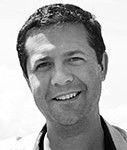
Matthew G Jackson
Paul Cassak, Bethany List Ehlmann, Colette L. Heald, Matt Jackson, and Kate Maher were awarded the 2015 James B. Macelwane Medal at the AGU Fall Meeting Honors Ceremony, held on 16 December 2015 in San Francisco, Calif. The medal is for “significant contributions to the geophysical sciences by an outstanding early career scientist.”
Citation
Matt Jackson reinvigorated the type of mantle geochemistry studies pioneered by his Ph.D. adviser Stan Hart through a combination of analytical advances and a focus on -global-scale issues as revealed by extraordinarily fine details of the chemistry of ocean island volcanic rocks.
For his Ph.D., Matt perfected in situ analyses of the strontium isotopic composition of melt inclusions protected within early–crystallizing minerals in oceanic basalts. His results showed beyond doubt that the mantle source of Samoan lavas contains a component of recycled continental crust carried by the deep mantle plume that feeds Samoan hot spot volcanism. Matt, with student Rita Cabral, provided definitive evidence for the presence of recycled sediment in the mantle through their discovery of mass independently fractionated sulfur isotopic composition in basalts from the island of Mangaia. These data confirm a role for recycled sediment but also show that the sediment involved was at Earth’s surface over 2.4 billion years ago. Placing time constraints on the transit time of subducted material through the mantle has been an elusive goal for decades. Matt, working with colleague Rajdeep Dasgupta, showed that mantle compositional variation as reflected in basalt composition is not just expressed in a few obscure trace elements but instead reflects general major element compositional variation in the mantle. As such, the compositional variability has consequences for mantle dynamics because of the contribution of composition to rheology, density, and radiogenic heat production. Matt’s discoveries thus provide a major step forward in the information needed to better understand the forces driving the dynamics of Earth’s interior.
Another of his contributions is a series of papers that attempt to define the characteristics of the hypothetical primitive mantle. Matt first suggested that the high helium-3 mantle source, which most associate with primitive undegassed mantle, has some chemical and isotope characteristics inconsistent with traditional models that invoke chondritic relative abundances of the refractory lithophile elements in the bulk Earth. Matt then matched his model for the “not-so-primitive” primitive mantle to the compositional characteristics of major flood basalt provinces to suggest that the largest volcanic events on Earth sample a mantle reservoir created by differentiation events that accompanied Earth formation.
Matt’s work has dramatically impacted our understanding of the composition of Earth’s interior, the processes accompanying Earth formation that drove initial differentiation, and the longer-term consequences of continent formation and crustal recycling through plate tectonics in creating the Earth we know today.
—Richard Carlson, Carnegie Institution for Science, Washington, D.C.
Response
Thank you, Rick, for your generous citation. And thanks to the cadre of supporters who contributed to my nomination. This really provides an opportunity to thank some of the people who have inspired me over the years.
In my high school days in Montana, Dave Mogk gave me the opportunity to pack his rocks around in the Beartooth Mountains, and I was hooked on geology. Thus primed, I took an introductory geology course from Jeff Park during my freshman year in college. I loved it. Interactions with other folks at Yale—Jay Ague, Karl Turekian, and Brian Skinner—convinced me that I had chosen the right major. Phil Ihinger introduced me to research, and I will forever be thankful for his enthusiasm and the time he invested in shaping my thinking about hot spot volcanoes.
The Woods Hole Oceanographic Institution–Massachusetts Institute of Technology Joint Program was a terrific place to explore hot spot volcanism, so I signed up for 5 years with Stan Hart. I couldn’t have chosen a better adviser and mentor, and he set a wonderful example for how one should mentor students. Nobu Shimizu and Mark Kurz were unofficial thesis advisers and geochemical coconspirators: many ideas were born during conversations in their labs.
A postdoc at Carnegie can only be described as “geochemical paradise.” Rick Carlson was supportive of exploring a lot of neat ideas, and I am lucky to have his mentorship. Rick, Steve Shirey, and Erik Hauri opened up Pandora’s box—unlimited geochemical resources and facilities—and I will always be grateful.
Al Hofmann has been omnipresent in my short career: He’s a gentleman and keeps me on the straight and narrow. Janne Blichert-Toft, Jurek Blusztajn, and Josh Curtice were generous with time and resources when I had no lab, and I am forever indebted.
My graduate and undergraduate students—my academic family—have inspired me to be a better teacher and mentor. In particular, I thank Rita Cabral, Ellie Price, and Drew Reinhard. Your ideas and hard work are the reason I am here today.
My grandfather, a bricklayer and a cowboy, taught me the value of a hard day’s work. I owe a lot to the example he set for me and to the support that I received from my parents, brother, and sister. This medal should really be presented to my wife, Anna, who is infinitely patient and has been my closest friend and my strongest supporter. Thank you, Anna.
—Matt Jackson, University of California, Santa Barbara
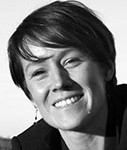
Katharine Maher
Paul Cassak, Bethany List Ehlmann, Colette L. Heald, Matt Jackson, and Kate Maher were awarded the 2015 James B. Macelwane Medal at the AGU Fall Meeting Honors Ceremony, held on 16 December 2015 in San Francisco, Calif. The medal is for “significant contributions to the geophysical sciences by an outstanding early career scientist.”
Citation
Kate Maher has made extraordinary contributions to our understanding of the geochemistry of critical zone processes. Her achievements have impacted our understanding of silicate weathering, soil formation, groundwater flow and transport, and the global carbon dioxide cycle.
Kate’s research specifically focuses on the rates of chemical reactions that occur at Earth’s surface and down to shallow depths. She has used her expertise in isotope geochemistry and reactive transport modeling to understand how water moves through rock materials, transforming it chemically. Her insightful analysis of how to interpret the disequilibrium of uranium isotopes is informing the interpretation of erosion and soil production.
Her impactful work began during her graduate work at Berkeley and has developed into a more generalized use of isotope systematics in hydrologic systems during her tenure at Stanford. She and her students are now bridging the divide between hydrological and geochemical modeling to push forward the understanding of flow and transport in soils, aquifers, and deeper reservoirs. Geochemical measurements hold the promise of constraining hydrologic modeling at a variety of spatial and temporal scales, and Kate’s work is pushing forward this frontier both from a theoretical point of view and in application to real systems.
Her models and data have elucidated several -long--standing puzzles. She clarified one of the main reasons why the kinetics of reactions are observed to be slower in the laboratory than the field. She presented quantitative models explaining paradoxes related to solutes and stream flow in catchments. Her latest work is elucidating the thermostat for the global carbon cycle. At the same time, she is contributing to more applied problems related to the geological sequestration of carbon dioxide and radionuclides in the environment.
Kate has the quantitative skills, geological insights, and leadership talent needed to tackle the biggest problems in Earth surface processes. We currently know more about modeling the movements of air masses and ocean waters globally than we know about modeling the movements of water, solutes, and particles in the highly heterogeneous critical zone. Kate will be at the forefront as we evolve in our understanding of this frontier.
—Susan L. Brantley, Pennsylvania State University, University Park
Response
Thank you, Sue, for your generous citation and for your support and encouragement over the years. You have been a role model for so many young scientists, and on behalf of all of us, I thank you for the myriad roles that you have played in our careers.
It is a tremendous honor to receive the James B. Macelwane
medal, and I thank AGU, the nominations committee, and my nominators for creating this special moment that I will cherish for the remainder of my career.
I have had the good fortune to stand on the shoulders of several giants in my field. First, I would like to acknowledge my Ph.D. adviser, Don DePaolo of the University of California, Berkeley, whose infinite understanding of Earth processes and unique ability to envision even the most complex as simple “chemical reactors” have always challenged me to evaluate the most simple case first as it is often where the central challenges become apparent. I would also like to thank Carl Steefel at Lawrence Berkeley National Laboratory for his ceaseless patience in converting an engineer into a geochemical modeler and for leading me into the field of reactive transport. I would also like to thank the U.S. Geological Survey Mendenhall program and Jennifer Harden, Art White, and David Miller for introducing me to the fascinating world of soils.
At Stanford University, I encountered another cast of giants who have offered new shoulders and new views. I chose Professor Gordon Brown as my faculty mentor, hoping he would be honest and fair in providing feedback. This turned out to be quite an underestimate. Gordon not only introduced me to the beautiful world of surface chemistry but provided boundless advice, as well a few prescient nudges. I could not imagine a better mentor. Dennis Bird, Page Chamberlain, and Scott Fendorf at Stanford have also been outstanding mentors and teachers, as have the many postdocs, students, and staff who have crossed paths with our research group. The latter are too numerous to name; however, I am sincerely grateful to all of them for their intelligence, spirited natures, and hard work.
Finally, I wish to thank my family for their patience, encouragement, and support. My mother, Celia Kathleen (CK), has always been my anchor, and without her I could not have become a geoscientist. My husband, Matthew, is a true giant upon whose shoulders I stand every day.
—Katharine Maher, Stanford University, Stanford, Calif.
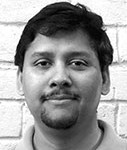
Rajdeep Dasgupta
Rajdeep Dasgupta, Christian Frankenberg, J. Taylor Perron, David Lawrence Shuster, and Jessica Erin Tierney were awarded the 2014 James B. Macelwane Medal at the AGU Fall Meeting Honors Ceremony, held on 17 December 2014 in San Francisco, Calif. The medal is for “significant contributions to the geophysical sciences by an outstanding early career scientist.”
Citation
It is fitting that one of this year’s Macelwane awards is being given to Rajdeep Dasgupta. There are but a handful of people who have accomplished so much and have had such an impact on the scientific community at such a young age.
Together with his students, he has published a series of papers that have defined him and his laboratory at Rice University as one of the world leaders in understanding the role of volatiles in phase equilibria. His work is now the gold standard for the melting of rocks in carbon dioxide–rich systems, and he has provided new models and data for carbon dioxide solubility in melts. He has also provided new constraints on carbon solubility in the core and has given us a deeper understanding of how melting happens in the mantle, with implications for the physical properties of the asthenosphere.
On top of all the experimental work, he has still managed to find time to synthesize observations with experiments, providing the community with comprehensive and, at times, provocative views of how the whole Earth carbon cycle operated, from magma oceans in the Hadean to the plate tectonics at present. These are clearly hot topics in the Earth science community right now, but it is clear that Raj has played a dominant role in defining these research directions, rather than being someone who follows fads. Thus, it is no surprise that he is continuing to push new frontiers as we speak. He is currently working on sulfur solubility in a variety of petrologic systems in order to understand sulfur transport in subduction zones and even during Martian magmatism.
On top of his research accomplishments, Raj has also carved a niche for himself as a great mentor and educator, inspiring and working with numerous graduate students and undergraduates. His ability to pay attention to important details and, at the same time, maintain the big picture is a skill that all desire but few have. Raj is the quintessential role model for a new generation of petrologists.
—Cin-Ty Lee, Rice University, Houston, Texas
Response
Thank you, Cin-Ty, for the kind and generous citation and thanks to the Macelwane committee and those who contributed toward my nomination for their time and consideration. I am deeply honored to receive this recognition from AGU. Especially, looking at the list of illustrious scientists who received this award in the past, I feel humbled.
It is usual for the honorees to thank some key people and recall a few defining moments in occasions like this, and my response, in many ways, is not going to be different. Without the tutelage and encouragement of Somnath Dasgupta, Pulak Sengupta, Sudipta Sengupta, Pradip Bose, the late Prasanta Bhattacharya, Subir Ghosh, and many others at Jadavpur University during my B.Sc. and M.Sc. days; the guidance of Marc Hirschmann at University of Minnesota during my Ph.D. work; and the supervision of Dave Walker during my postdoc research at Lamont, I would not be standing here. In particular, getting a taste of the full course of geological sciences at Jadavpur, learning how to ask important questions and connect small-scale experiments to big-scale processes from Marc, and the out-of-the-box and free thinking under the support of Dave were all essential for me.
When I wrote similar responses even 2–3 years ago, I could have stopped with more or less what I have written thus far. But for this particular recognition, I feel it is really my time at Rice University since 2008 that made this happen. I am grateful to the Department of Earth Science for providing me with the much-needed support to build my experimental lab and group plus supportive colleagues. Not too many young investigators can say with confidence that it is the work of their current and past advisees that brought them the recognition. But it is certainly the hard work, dedication, and accomplishments of Ananya Mallik, Kyusei Tsuno, Justin Filiberto, Veronique Le Roux, Han Chi, Megan Duncan, Echo Ding, Sébastien Jégo, Laura Carter, Yuan Li, James Eguchi, Sriparna Saha, and several undergraduate researchers that made my scientific career flourish in recent years. So I am standing here simply on behalf of all of them, and they should feel as proud as I do today.
Finally, the adventure with geology and life would have been impossible without Sushmita and so much less fun to look forward to without Pritthij, Aurno, and Odri. So this is to all of you as well.
—Rajdeep Dasgupta, Rice University, Houston, Texas
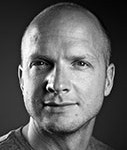
Christian Frankenberg
Rajdeep Dasgupta, Christian Frankenberg, J. Taylor Perron, David Lawrence Shuster, and Jessica Erin Tierney were awarded the 2014 James B. Macelwane Medal at the AGU Fall Meeting Honors Ceremony, held on 17 December 2014 in San Francisco, Calif. The medal is for “significant contributions to the geophysical sciences by an outstanding early career scientist.”
Citation
Christian Frankenberg is pioneering the development and use of satellite remote sensing for new and original scientific research coupling ecology with the larger-scale physical processes of the Earth system carbon and water cycles. He is one of the discoverers of the new remote sensing technique for solar-induced fluorescence that is providing new global data on the terrestrial biosphere. This is one of the most important discoveries in remote sensing in recent years.
He began his early research as an undergraduate and graduate student in Germany, moving from geoecology to remote sensing. He provided algorithms to derive atmospheric carbon monoxide and methane from Scanning Imaging Absorption Spectrometer for Atmospheric Cartography (SCIAMACHY) spectral observations and analyzed these data to estimate global emissions. When he moved to the Institute of Environmental Physics in Heidelberg and then the Netherlands Institute for Space Research in Utrecht, he continued developing new satellite data products, extending them to water vapor and the important isotopologue, HDO. His research on the fractionation of HDO provided new insights into the dynamical processes regulating water vapor in the lower troposphere and thus the global water cycle.
Currently at the Jet Propulsion Laboratory at the California Institute of Technology, Christian has been an integral part of the Orbiting Carbon Observatory 2 (OCO-2) team involved in the challenge of measuring atmospheric carbon dioxide concentrations from space with the sensitivity to infer patterns of the underlying exchange of carbon dioxide with the surface. In analyzing the Japanese Greenhouse Gases Observing Satellite (GOSAT) high spectral resolution data intended for greenhouse gas measurements, he and others discovered that the fluorescence photons emitted by chlorophyll during photosynthesis, even though small in number, could be detected as the filling in of the solar Fraunhofer lines. This unexpected by-product offers new information about global plant primary productivity, complementing existing light interception observations.
An impressive characteristic of Christian’s research is his ability to bring together an understanding of fundamental atmospheric radiative transfer, spectroscopy, and nuances of the performance characteristics of the instruments to first tease out these new data sets and then later to analyze them for new understanding of global biophysical processes. He has more than 64 peer-reviewed multidisciplinary publications to his credit since 2004, an impressive body of work that will no doubt continue to expand. These publications have already had both high impact factors as measured by their frequent citation and the more telling impact of stimulating new directions for satellite observations of the Earth system.
—Michael Gunson, California Institute of Technology, Pasadena, Calif.
Response
Thank you, Mike, for your kind words, and thank you, AGU, the Macelwane committee, and my nominators, for this unexpected and overwhelming honor. Going through the list of previous recipients is stimulating and intimidating at the same time. I feel very lucky and honored.
Like life itself and the Earth system, careers are often nonlinear, and I am indebted to many scientists and friends who shaped mine. I was fortunate to start my Ph.D. work at the University of Heidelberg at a time when the ENVISAT satellite was just launched and the SCIAMACHY instrument started shaping my research path. After working with the inspirational Ulrich Platt at Heidelberg, I continued my research in Utrecht with a Veni postdoc fellowship and enjoyed working with a great group of scientists under Ilse Aben.
For various reasons, I may not have made the big jump across the pond to the Jet Propulsion Laboratory (JPL) but for my childhood friend Kai Buchholz. Working for the United Nations, he died tragically during the earthquake in Haiti, just when I started working for JPL in the United States. In many ways, he was the most extraordinary person I knew and has always been an inspiration and moral compass for me. I would not be standing here without him.
I came to JPL about half a year after the OCO launch failure, but we were lucky to be able to work with the Japanese GOSAT satellite and the National Institute for Environmental Studies and Japan Aerospace Exploration Agency teams. Kuze-san, Yokota-san, Dave Crisp, and Mike, thank you for all your support. Again, I was somewhat lucky and at the right place at the right time. Over the last few years, I drifted back to the roots by studying chlorophyll fluorescence from space. This not only was an exciting topic but also gave me the chance to meet and collaborate with great scientists, such as Joe Berry, who probably is one of the most original and knowledgeable yet humble scientists I know. Over the last few years I had the pleasure of working work with and being influenced by many others, including Chris O’Dell, Luis Guanter, Andre Butz, Joanna Joiner, and many others. I learned a lot from many more people than I could possibly mention here.
Last but not least, I want to thank my parents for providing me all the freedom I could wish for; my wife, Suniti, for all her support; and my son, Neal, for teaching me again how powerful curiosity is.
—Christian Frankenberg, Jet Propulsion Laboratory, California Institute of Technology, Pasadena, Calif.
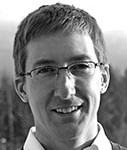
J Taylor Perron
Rajdeep Dasgupta, Christian Frankenberg, J. Taylor Perron, David Lawrence Shuster, and Jessica Erin Tierney were awarded the 2014 James B. Macelwane Medal at the AGU Fall Meeting Honors Ceremony, held on 17 December 2014 in San Francisco, Calif. The medal is for “significant contributions to the geophysical sciences by an outstanding early career scientist.”
Citation
Pioneering research in geomorphology requires breadth and deep physical insight. The puzzles to be solved extend over vast ranges of spatial and temporal scales and include a wide spectrum of surface features on Earth and other planets. Finding solutions requires mathematical analysis, numerical modeling, field observations, laboratory experiments, and high-resolution remote sensing. This complexity is motivating a new generation of remarkably talented planetary scientists, and J. Taylor Perron’s elegant and transformative research has placed him at the forefront of that group.
Innovation builds on fundamentals. After receiving undergraduate degrees in Earth and planetary sciences and in archeology at Harvard, Taylor moved to University of California, Berkeley, to join Dietrich’s and Kirchner’s legendary geomorphology groups. Working in this thriving intellectual community—with fellow graduate student Mike Lamb and Professors Manga, Fung, Richards, De Pater (astronomy), and others—he developed the extraordinary breadth of interest and skill that remains a defining character of his research. As a graduate student, Taylor worked on problems as varied as hillslope erosion, valley formation by methane rain and rivers on Titan, polar wander on Mars, and topographic signatures of life. These interests broadened while he was a Daly Postdoctoral Fellow at Harvard, where he explored (with Professor Huybers) the possibility that polar deposits on Mars record Milankovitch cyclicity and continued his seminal study of the regular spacing of ridges and valleys.
Taylor returned to the latter problem after joining the faculty of the Massachusetts Institute of Technology (MIT). In a remarkable study published in 2012, he demonstrated how competition between soil transport and river incision controls the spatial scale of river networks, one of the most striking and pervasive features on Earth’s surface. His work elucidated how these networks record the influences of rock strength, rainfall, and even life and provided a universal framework for understanding drainage networks on other terrestrial bodies. Many other important contributions could be mentioned, but we end by looking back a century, to Darwin’s classic model of the progression from coral reef to atoll. Many islands do not follow this sequence, and providing an alternative has long been a goal in geomorphology. Taylor and his group resolved this enigma by using a model that links reef accretion with island vertical motion and by establishing that coral reefs bear the imprint of ice age sea level cycles—a perturbation to the Earth system of which Darwin was unaware.
This medal recognizes Taylor’s landmark achievements and the promise of discoveries yet to come.
—Jerry X. Mitrovica, Harvard University, Cambridge, Mass.
—Robert D. van der Hilst, Massachusetts Institute of Technology, Cambridge, Mass.
Response
Thank you, Rob and Jerry, for the kind words. I am grateful to AGU for this honor and also for shining a light on the field of geomorphology. It is remarkable that landscapes, which are so eminently observable, can be so full of mystery. And there is no shortage of mysteries: from the ancient Appalachians to the spidery networks of methane rivers on Titan, there are many landscapes we have yet to fully explore.
But I didn’t realize at first how many stories the geological landscape has to tell. As an undergraduate, I spent a lot of time wondering how and when humans migrated to the Americas. Through a stroke of luck, I migrated from the east side of North America to the west side. There, in Berkeley, Jim Kirchner, master analyst, and Bill Dietrich, insightful questioner, found a kid with an archaeology degree on their doorstep and taught him to think quantitatively about Earth’s surface. Around the same time, Alan Howard, Jerry Mitrovica, and Michael Manga sparked my interest in planetary landscapes, which never fail to surprise.
In the years since, new institutions have brought new friends. Colleagues at MIT and Woods Hole have drawn my attention to new problems, introduced me to stellar students, and made time to learn about my work. I especially thank Dan Rothman, Rob van der Hilst, Maria Zuber, Leigh Royden, Sam Bowring, Andrew Ashton, John Southard, Paul O’Gorman, Tanja Bosak, and Ben Weiss. Many others have helped me as collaborators, kindred spirits, or both. I am particularly indebted to Mike Lamb, Kelin Whipple, Paul Myrow, Peter Huybers, Ken Ferrier, Sean Willett, Steve Martel, Sujoy Mukhopadhyay, Devon Burr, Josh Roering, Noah Snyder, Sergio Fagherazzi, John Grotzinger, Mike Church, and Tom Dunne.
I will end by mentioning three groups who deserve their own medals. First, to the students and postdocs who have fueled our work, I look forward to counting you as colleagues for many years to come. Second, I thank my parents, who fostered my curiosity, invested in my education, and kept open minds about what they would get in return. Finally, and most importantly, I thank my wife, Lisa, who makes all my work possible, and our daughters, Mia and Ada, who have inspired me in ways I never anticipated.
—J. Taylor Perron, Massachusetts Institute of Technology, Cambridge, Mass.
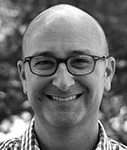
David L Shuster
Rajdeep Dasgupta, Christian Frankenberg, J. Taylor Perron, David Lawrence Shuster, and Jessica Erin Tierney were awarded the 2014 James B. Macelwane Medal at the AGU Fall Meeting Honors Ceremony, held on 17 December 2014 in San Francisco, Calif. The medal is for “significant contributions to the geophysical sciences by an outstanding early career scientist.”
Citation
It is with great delight and surprise that I introduce David Shuster as a recipient of the Macelwane Medal—it is a great delight to recognize a young scientist who has brought unique gifts to the emerging field of thermochronology but also a great surprise to be David’s citationist after having contributed essentially nothing to his intellectual growth. My role instead appears to have been that of his number one fan. I became aware of David’s work while reviewing his early manuscripts, but we didn’t meet until years later when I approached him at a meeting to say how profoundly impressed I was with his thoughtful approach and extraordinary experimental skills. I mention this here to underscore my deep admiration of David as, to the best of my recollection, I have never done that before or since.
The development of (U + Th)/He dating of accessory minerals provided new thermochronometers for investigations of tectonic and landscape evolution but was notably limited by near-surface recoil effects and the need for bulk analysis. The former interferes with recognition of high-frequency diffusion information, and the latter precludes obtaining continuous thermal histories. David’s pioneering development of 4He/3He profiling transcended both limitations, opening up entirely new avenues of research. His investigations of time-varying erosion rates in orogenic terranes have provided the clearest views of how tectonics and climate may be linked. His discovery of proton-induced neon during sample irradiation led to a novel method to determine Ne diffusion in silicates—data essential to understanding the thermal behavior of cosmogenic chronometers. He made significant contributions to developing dating methods to assess the timing of pedogenic processes with a view to better understanding past changes in environmental conditions at the Earth’s surface. In particular, his pioneering application to iron oxides opened up the possibility of directly dating soil formation and thus the calibration of paleosol records with which to examine evidence of past climate change. Although it would have been tempting to simply reproduce the tools he had already developed when commissioning his Berkeley laboratory, David adopted the complimentary capabilities of 40Ar/39Ar dating for revealing intragrain thermochronological variations. His clever application of this method to reveal thermal histories of lunar and Martian samples resulted in standout papers documenting impact events, the effects of solar heating, and timing constraints on the lunar dynamo that are revitalizing the field.
David’s career is characterized by a unique style: an idea for a novel or refined dating method is realized through an equally inspired laboratory development that yields data understood by sophisticated application of physical modeling, ultimately leading to a new view of how a planetary body works. Thus, I believe that this award both recognizes David Shuster’s outstanding early career achievements and presages his emergence as the leading international figure in his field. Congratulations, Professor Shuster!
—Mark Harrison, University of California, Los Angeles, Calif.
Response
Thank you, Mark, for your generous citation. I am grateful to those who nominated me and to the members of AGU for this honor. I am humbled to be in the company of four outstanding scientists who are also receiving the Macelwane Medal this year and many of my academic heroes who are past recipients.
The science I pursue is an interdisciplinary and collaborative endeavor, which benefits from colleagues and mentors too numerous to fully acknowledge here. My friend and colleague Don DePaolo first introduced me to isotope geochemistry and the joys of scientific inquiry as an undergraduate at the University of California (UC), Berkeley. Don taught me how to simplify a problem’s complexity to gain an intuitive understanding of it and the importance of the words “I don’t understand.” Don then enabled me to freely pursue my curiosity as a 21-year-old, with a research position at Lawrence Berkeley National Laboratory, where I learned noble gas geochemistry and mass spectrometry from Mack Kennedy while studying geothermal fluids and volcanic gases. Those early experiences with noble gases defined the trajectory of my career.
As a graduate student at the California Institute of Technology (Caltech), I received mentorship of outstanding geochemists, including John Eiler, Don Burnett, Ed Stolper, Jerry Wasserburg, Jess Adkins, and, of course, my Ph.D. advisor, Ken Farley. I will always appreciate their influence, and I especially thank Ken for teaching me to be rigorous, fearless, and persistent with my science. To this day, Ken is my close colleague, my friend, and always my advisor. And since we began studying meteorites and lunar rocks together as graduate students, I’ve learned much about thermochronology in trying to answer Ben Weiss’s seemingly limitless questions beginning with the word why.
Since my return to UC Berkeley, my work has benefited from the creativity of outstanding graduate students and postdocs in my research group, the penetrating questions of undergraduates in my classes, the creativity and generosity of Greg Balco, and my exceptional colleagues in the Department of Earth and Planetary Science, most especially Kurt Cuffey and Bill Dietrich. I am grateful to the Berkeley Geochronology Center and the Ann and Gordon Getty Foundation for continuing to support my laboratory at a level that is essential but increasingly uncommon and to Tim Becker for world-class laboratory support.
Finally, the love of my wife, Erin, and our beautiful daughter, Nora, provide the most gratifying balance to my life that anyone could hope for. However, when we first met in middle school, Erin could not have predicted that she would later in life become so inadvertently knowledgeable in geochemistry.
—David L. Shuster, University of California, Berkeley, Calif.
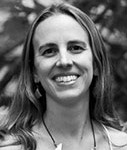
Jessica E Tierney
Rajdeep Dasgupta, Christian Frankenberg, J. Taylor Perron, David Lawrence Shuster, and Jessica Erin Tierney were awarded the 2014 James B. Macelwane Medal at the AGU Fall Meeting Honors Ceremony, held on 17 December 2014 in San Francisco, Calif. The medal is for “significant contributions to the geophysical sciences by an outstanding early career scientist.”
Citation
Jess Tierney has made lasting contributions to paleoclimate research through the development, testing, and application of organic biomarkers in key regions of the tropics. Her records provide valuable estimates of past hydrological variability in areas where traditional paleoclimate records are sparse, best illustrated by her extensive work in tropical Africa. Such reconstructions serve to constrain the bounds of natural climate variability while characterizing the sensitivity of the climate system to past climate forcings—information of vital interest to society under continued climate change.
During her graduate work at Brown, she generated several important tropical paleoclimate records and began to work through the complexities of multiproxy records in earnest. Seeking to increase the utility of organic biomarker records like those she generated during her dissertation research, she completed an ambitious effort to refine the community’s understanding of such records. It was during her postdoctoral tenure that she began to work with climate model output, collaborating with a range of top climate modelers on questions at the interface of paleoclimate and climate dynamics.
Early investments in expanding her conceptual and analytical tool kits has equipped Jess to tackle the most pressing questions in paleoclimate, which often require collaborations with climate modelers. Her latest achievements include a sophisticated comparison of paleoclimate data with output from models, demonstrating the potential for paleoclimate data to provide much-needed tests of model accuracy. Increasingly, climate scientists are turning to paleoclimate data sets to test the accuracy of the complex numerical climate models that are used to simulate future climate trends. Jess is a true pioneer in such data-model comparisons and has already made seminal contributions in this rapidly evolving field. In this regard, the quantification and representation of uncertainty in paleoclimate data lie at the core of her research endeavors, and her contributions in this area are helping to define best practices across the field. The fact that much of her published work has appeared in high-profile journals is a testament to the excellence and relevance of her research.
Jess combines a strong vision for paleoclimate science with the skills and leadership qualities necessary to move the field to its next level of evolution—one focused on delivering rigorous constraints on climate variability and change in sensitive areas of the Earth’s climate system.
—Kim Cobb, Georgia Institute of Technology, Atlanta, Ga.
Response
Thank you, Kim, and my thanks to the Macelwane committee and to AGU. It is truly an honor to receive this award and to join the company of the many prestigious colleagues who are past recipients of this medal.
My love of studying past climate change began with a deep appreciation for history. Historical precedence and legacy can explain the present state of world affairs and can shed light on the future evolution of society. Similarly, Earth history reveals much about the present behavior and future state of the climate system. Through my research, I strive to understand past climates, with an eye toward placing the fate of our Earth in a greater context. I believe that new and evolving techniques, geochemical and statistical, can move us forward in this respect.
I would not be receiving this award without the encouragement and support of many wonderful mentors and collaborators. During my time as a postdoctoral scholar at the Lamont-Doherty Earth Observatory, I was fortunate to be mentored by Peter deMenocal, who went above and beyond to support me, to help me meet top researchers in the field, and to engage me in interesting questions in paleoclimatology. While at Lamont, I also had the privilege to collaborate with Ben Cook, Allegra LeGrande, Gavin Schmidt, Richard Seager, and Jason Smerdon, who expanded my knowledge of climate dynamics and climate modeling. I continue to learn new things from my research with my talented collaborators and friends Pedro DiNezio and Martin Tingley.
I owe a huge debt to the organic geochemistry field, a discipline that has been so welcoming to young researchers. In particular, I want to thank Kate Freeman and Ann Pearson—two visionary scientists who, as leaders in the field, are role models for me. I also want to thank Rich Pancost, Jaap Sinninghe Damsté, and Mark Pagani, who have always generously provided analytical resources, their unique insights, and invaluable advice.
I also want to thank my family, in particular my wonderful husband and fellow paleoclimatologist, Kevin Anchukaitis, with whom I am truly blessed to share my life and science.
Finally, I would like to thank all of the women in science who have made it possible, through their perseverance, strength, and example, for me to receive this award. I hope that AGU will continue to recognize, support, and honor the extraordinary achievements of women in the geosciences.
—Jessica Erin Tierney, Woods Hole Oceanographic Institution, Woods Hole, Mass.
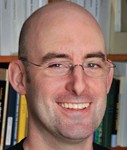
Jesse H Kroll
Jesse H. Kroll was awarded the 2013 James B. Macelwane Medal at the AGU Fall Meeting Honors Ceremony, held on 11 December 2013 in San Francisco, Calif. The medal is for “significant contributions to the geophysical sciences by an outstanding early career scientist.”
Citation
Jesse Kroll is playing a leading role in unraveling the extremely complex multiphase atmospheric chemistry of organic molecules emitted by both anthropogenic activities and biogenic processes. His work is particularly important because atmospheric organic species form a large fraction of airborne submicron particulate matter (PM), which is responsible for most of the adverse human health effects, including premature mortality, attributed to poor air quality. Submicron aerosol PM also drives important direct and indirect impacts on atmospheric radiative transfer, causing much of the uncertainty in our understanding of current, and predictions of future, climate change.
Jesse started his mastery of atmospheric organic chemistry as a very productive student in Jim Anderson’s lab at Harvard, focusing on gas phase reaction mechanisms and kinetics of volatile organic compounds with atmospheric oxidants. After a short postdoctoral stint at Harvard he moved on to John Seinfeld’s California Institute of Technology (Caltech) laboratory, where he played a major role in developing and utilizing advanced environmental chambers and a wide range of analytical instrumentation to determine mechanisms and yields of secondary organic aerosol (SOA) particle formation, simulating a range of atmospheric conditions for the photooxidation and condensation of a wide variety of organic vapor precursors.
After three years at Caltech, Jesse returned to the Boston area, joining Aerodyne Research, Inc. (ARI), where he played a leading role in groundbreaking collaborative laboratory measurements using a range of specialized environmental chambers and flow reactors combined with advanced aerosol mass spectrometers and other instruments that better defined the oxidation kinetics and SOA yields for a wide variety of individual organic compounds as well as complex emission sources. This work involved collaborative experiments with colleagues at Harvard University, Boston College, Colorado State University, Lawrence Berkeley National Laboratory, Carnegie Mellon University, and the University of Helsinki.
Since moving on to the Massachusetts Institute of Technology (MIT) in 2009, Jesse has continued many of the collaborations initiated at ARI and established important new ones. He has continued designing and performing a wide range of laboratory and field experiments, many focused on understanding and quantifying the heterogeneous mechanisms and kinetics of SOA particle oxidative aging. He is also engaged in important instrument development work, including the design and field use of a novel method to quantify gas phase emissions of low-volatility organic molecules that are powerful SOA precursors but avoid detection by current gas phase organics monitoring methods. He has also worked with MIT engineers and ARI scientists to develop and utilize advanced aerosol mass spectrometric techniques to better quantify the soot and primary organic aerosol emissions from automotive and aircraft engines.
Just 10 years past his Ph.D., Jesse has an amazing publication record, including 66 archival papers with a collective citation count over 4000, a dozen cited 100 times or more. Several of these papers are fast becoming classics; I anticipate that many of Jesse’s future papers will as well. His Macelwane Medal recognizes extraordinary early career achievements that I expect will be eclipsed by Jesse’s future discoveries.
—CHARLES KOLB, Aerodyne Research, Inc., Billerica, Mass.
Response
Thanks, Chuck, for the kind words and for the nomination, and thanks to AGU for this great honor. I consider myself extremely lucky to have received this award and luckier still to have worked (and to continue to work) with so many impressive and generous people throughout the atmospheric chemistry community. I owe them all a great deal of thanks.
First are my various advisors and mentors—all were hugely important in my scientific training and, happily, all continue to be important in my career today. My Ph.D. advisor, Jim Anderson, provided an ideal environment for learning how to think about and carry out research in atmospheric chemistry. It was also Jim who suggested that I give aerosol chemistry a try; I thought he was nuts at the time, but (as usual) he was right. My experience as a postdoc, focused on secondary organic aerosol, was extremely exciting and rewarding; I owe that to my postdoctoral advisor, John Seinfeld, who (despite being busier than probably anyone I know) is infinitely generous with his time, support, and ideas. My time at Aerodyne was equally special, thanks to Doug Worsnop as well as John Jayne and Chuck Kolb, terrific bosses who run one of the most intellectually dynamic research communities I know of. And probably most important is Neil Donahue, someone who was never my advisor in a formal sense but who has been my primary mentor throughout my entire scientific career. The advice and support he’s given me, starting back in my undergraduate days, are the main reasons I’m in science today.
I also feel fortunate to have worked with, and learned from, so many wonderful lab mates, coworkers, and colleagues over the years. I can’t possibly mention everyone here, but people whom I specifically want to acknowledge include Jim Clarke, Sally Ng, Manjula Canagaratna, and Tim Onasch. More recently, my collaboration with Kevin Wilson has resulted in the most fun, challenging, and productive research I’ve been involved in. And having Colette Heald as a colleague is a real pleasure—without her collaboration and her friendship, I’d like my job far less than I do now. (I’d certainly be much worse at it.) I also want to thank all the members of my group—Sean Kessler, Anthony Carrasquillo, Kelly Daumit, James Hunter, Eben Cross, Ellie Browne, Kelsey Boulanger, Jon Franklin, and Chris Lim—who made starting up and running a lab about as easy and enjoyable as it could possibly be.
Most generally, I’m grateful to the atmospheric chemistry community as a whole for providing such a friendly, open, and collaborative environment and for being so supportive of junior scientists. It’s a special community, and I feel very lucky to be a part of it.
Finally, my biggest thanks go to my wife, Amy. I used up all my husband points long ago, but Amy remains a continual source of strong support, great advice, and endless fun, and I owe her a lot.
—JESSE H. KROLL, Massachusetts Institute of Technology, Cambridge, Mass.
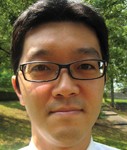
Motohiko Murakami
Motohiko Murakami was awarded the 2013 James B. Macelwane Medal at the AGU Fall Meeting Honors Ceremony, held on 11 December 2013 in San Francisco, Calif. The medal is for “significant contributions to the geophysical sciences by an outstanding early career scientist.”
Citation
The James B. Macelwane Medal of AGU is presented to Motohiko Murakami for his discovery of the postperovskite phase of MgSiO3, for a new class of sound velocity measurements under lower mantle pressure-temperature conditions that have changed our view of whole-Earth chemistry, and for other fundamental contributions that have furthered our understanding of the Earth’s deep interior.
As part of his Ph.D. research, Dr. Murakami discovered that MgSiO3-perovskite, the most abundant component of the lower mantle, transforms to a “postperovskite” phase under P-T conditions corresponding to the D” seismic zone, just above the core-mantle boundary. This work, published in a 2004 Science paper, instantly provided an explanation for anomalous seismic features in D”, including the D” seismic discontinuity. Equally important, the phase relations of postperovskite give us an absolute temperature above the core-mantle boundary. This is the only measured anchor point for the lowermost mantle geotherm. Murakami’s pioneering work with his advisor Kei Hirose triggered an instantaneous flood of theoretical and experimental research in laboratories worldwide, quickly confirming his discovery. Murakami followed this up with experiments to establish the stability of postperovskite for a more realistic mantle composition and the partitioning of Fe among coexisting phases. His results have stimulated a new generation of models for the dynamics and chemistry of the lowermost mantle and for the heat flux across the core-mantle boundary. It is hard to imagine a single contribution that could have exceeded the impact of the discovery of postperovskite for deep interior research; it is one of the most important discoveries of the past several decades in solid Earth geophysics.
Most recently, Murakami changed research directions to design and build a Brillouin spectrometer with laser heating on an X-ray beam line of the SPring-8 synchrotron. The aim was to measure acoustic velocities on minerals under actual lower mantle P-T conditions. Recent results on perovskite and ferropericlase give compelling, direct evidence that the lower mantle is perovskite and silica enriched compared with a lherzolite or “pyrolite” upper mantle. Thus, Earth’s mantle appears to be chemically stratified, but with a whole-mantle composition that is more compatible with cosmochemical models than previously thought. Murakami has been following up this groundbreaking work with similar measurements on other likely components of the lower mantle, such as calcium silicate perovskite and sodium silicate high-pressure phases.
The seminal contributions of Motohiko Murakami have had profound implications for mineral physics, seismology, geodynamics, and geochemistry. The earmark of Murakami’s research is to tackle the most important problems he can think of, even if it takes years to build equipment needed for experiments and entirely new skill sets. Although this is an excellent game plan, it is a risky one that takes dedication, focus, and an unusual amount of sheer skill for success. Motohiko has these qualities and has produced a body of work of exceptional impact that cuts across disciplinary boundaries. It is a pleasure to honor him with the 2013 Macelwane Medal of AGU.
—JAY BASS, Consortium for Materials Properties Research in Earth Sciences (COMPRES), Champaign, Ill., and University of Illinois at Urbana-Champaign
Response
Thank you very much, Jay, for your generous citation and for all of your support. It is a great honor for me to receive this medal. First, I sincerely thank AGU for this recognition and my nominators for their support and time.
I would certainly not be standing here today if I had not met many teachers, mentors, colleagues, and friends who have always helped and encouraged me along the way, and I really appreciate this great opportunity to express my gratitude to them.
As a student, I was very fortunate to work under the guidance of two great mentors, Shigenori Maruyama, my undergraduate advisor, and Kei Hirose, my Ph.D. advisor, at Tokyo Institute of Technology, who strongly inspired and encouraged my research interest in the deep Earth’s interior. I learned a lot from Maruyama-sensei and Kei concerning their enthusiasm and attitude toward science. I would also like to thank my young and brilliant colleagues at Tokyo Institute of Technology for their energy and passion for pushing Earth science forward.
After my Ph.D., I had the great luck to work with Jay Bass at the University of Illinois. Jay has always been exceptionally generous with his support, time, and knowledge, and I learned so much from Jay on the special experimental techniques for sound wave velocity measurements under high pressure through a collaboration with Stas Sinogeikin, who is a master of all those tricks. Through Jay, I was also given the tremendous opportunity to interact with many excellent young people, including Carmen Sanchez-Valle, Dmitry Lakshtanov, and Jennifer Jackson.
At the Institute for Study of the Earth’s Interior, Okayama University, I had the privilege to join the group of many talented scientists in high-pressure mineral physics led by Eiji Ito, a great master of high-pressure experiments. I have particularly enjoyed interacting with Ito-sensei, Tomoo Katsura, Masami Kanzaki, Akira Yoneda, and Xianyu Xue and have also learned a great deal from amazing young scientists such as Daisuke Yamazaki and Takashi Yoshino. Thank you for your energy and enthusiasm.
I have been working at Tohoku University for almost 6 years now, with many talented scientists and young brilliant students. My special thanks go to Eiji Ohtani for his guidance and continuous encouragement throughout my academic carrier. It has been my great privilege to closely work with Ohtani-sensei.
Over the last few years, I have had the wonderful opportunity to meet a number of outstanding mentors and scientists who have influenced and taught me much such as Shun-ichiro Karato, Guillaume Fiquet, Alex Goncharov, Jan Matas, John Hernlund, Naohisa Hirao, Yasuo Ohishi, Shinji Kohara, and John Sandercock. I am so grateful to them all for their guidance, mentorship, and enthusiasm.
Most important, I thank my wife, Michiyo, for her patience and encouragement and our two wonderful kids, Setoka and Haruhiko, for giving me an invaluable perspective on life. Finally, I want to thank my parents, Katsuhiko and Yumiko, whose support made it possible for me to become an Earth scientist.
Once again, thank you, AGU, for this great honor.
—MOTOHIKO MURAKAMI, Tohoku University, Sendai, Japan
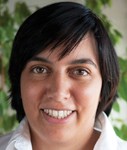
Sonia I Seneviratne
Sonia I. Seneviratne was awarded the 2013 James B. Macelwane Medal at the AGU Fall Meeting Honors Ceremony, held on 11 December 2013 in San Francisco, Calif. The medal is for “significant contributions to the geophysical sciences by an outstanding early career scientist.”
Citation
If you have ever wondered why heat waves can last that long and whether future climate change will increase droughts, then you should contact Sonia Seneviratne, a talented young scientist whose research is characterized by vigor, deep insight, and a keen eye for the important research questions. In her young career, Sonia has become one of the world’s leading experts in the field of atmosphere–land surface interactions. She has already contributed a number of outstanding papers to this rapidly growing field, thereby shaping and influencing it in a defining matter. Sonia has tackled important and fascinating problems associated with the exchange of energy, momentum, and water between the atmosphere and the land surface and identified the key role of soil moisture in controlling heat waves and the onset and duration of droughts. Working at the interface between atmospheric, vegetation, and soil sciences and combining models with data analyses, she has written a number of exceptional papers that are not only novel and interesting but also hugely important for many people and institutions that are affected by droughts and heat waves.
Sonia’s research accomplishments are astonishing. In 2006, she published the paper for which she always will be remembered, i.e., her Nature study “Land-Atmosphere Coupling and Climate Change in Europe,” where she demonstrated for the first time how important soil moisture is for the development of heat spells in Europe. Relying on simulations with a regional climate model, she was able to demonstrate that the lack of an evaporative supply of moisture to the atmosphere as a result of dry soils was critical in generating extremely hot conditions over most of Europe, contrary to the prevailing opinion that heat waves are only a result of anomalies in large-scale circulation patterns. Sonia has followed up with a large number of studies where she continued to refine and extend this basic tenet. Her review article in 2010 summarizes the arguments and makes a very convincing case across a wider range of conditions. Moreover, in her more recent research, she also expanded and widened the tools and methods, especially by more deeply integrating observational data. In summary, Sonia has been the driving force behind the recognition of the importance of soil moisture for controlling summer climate, in particular for climate extremes.
She has also contributed a large share of her time to the community, most notably by acting as the coordinating lead author of one of the chapters of the Intergovernmental Panel on Climate Change (IPCC) special report Managing the Risks of Extreme Events and Disasters to Advance Climate Change Adaptation (IPCC SREX). All in all, she serves as a role model for young female scientists in our field, particularly when considering that she recently went through the tenure process with flying colors while becoming pregnant and giving birth to her daughter three years ago. Sonia’s outstanding contributions, her impact on the field, and her scientific leadership make Sonia an excellent and well-deserving recipient for one of this year’s Macelwane medals.
—NICOLAS GRUBER, ETH Zurich, Zurich, Switzerland
Response
Thank you, Niki, for this very kind citation. Not only are you generous in your support, you are also an outstanding and inspiring scientist as well as a great colleague at ETH Zurich. I would also like to thank all those who supported my nomination and AGU’s Macelwane committee for choosing me for this great honor. This means a lot to me: The first scientific conference I ever attended was organized by AGU and gave me a lasting motivation to work in science.
I know that I was extremely lucky to cross the paths of many people who enabled me to be where I am right now. I can only mention a few here. Christoph Schär was my Ph.D. advisor at ETH and strongly encouraged me to pursue an academic career. Besides my love for research, it was also his support that helped me find the confidence to apply for a professorship. An early academic visit in the group of Fatih Eltahir at MIT also durably impacted my career and provided me with lasting contacts in the scientific community.
During my postdoctoral time, I was extremely fortunate to work at NASA Goddard Space Flight Center with Randy Koster, a scientist I have learned so much from and who continues to be a role model for me. He taught me the beauty of simple (but not easy) answers to difficult questions. I always appreciated his modesty despite his great talent and exceptional career.
Another great experience was my involvement as coordinating lead author of the 2012 IPCC SREX report, during which I had the chance to get to know a number of exceptional scientists. I am particularly grateful that I had the chance to work with Neville Nicholls from Monash University, a person with so much knowledge and experience and who is also extremely generous and kind. I am also very thankful to Thomas Stocker at Bern University for his trust in giving me this responsibility.
I was blessed with a large number of very talented students and postdocs who have worked in my group over the last few years, in particular Martin Hirschi, Ryan Teuling, Brigitte Mueller, Edouard Davin, Boris Orlowsky, Heidi Mittelbach, Ruth Lorenz, Rene Orth, Benoit Guillod, and Lukas Gudmundsson. Thanks to all of you for your hard work and dedication to research!
I feel very fortunate to work at ETH Zurich. We have a fantastic atmosphere at the Department of Environmental Systems Science, and I have felt constant support from my colleagues. I would especially like to also mention here Ulrike Lohmann, Thomas Peter, Heini Wernli, Dani Or, Nina Buchmann, and Peter Edwards for their support in the last few years.
Finally, I would like to thank my husband, Ludovic, for his constant love and support. His dedication with our little Daphne allows me to find sufficient time to think, the greatest luxury for a scientist. Both Daphne and he also help me remember the important things in life and that our commitment to climate research is essential for future generations.
—SONIA I. SENEVIRATNE, Institute for Atmospheric and Climate Science, ETH Zürich, Zurich, Switzerland
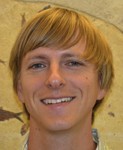
Gabriel J Bowen
Gabriel J. Bowen was awarded the 2012 James B. Macelwane Medal at the AGU Fall Meeting Honors Ceremony, held on 5 December 2012 in San Francisco, Calif. The medal is for “significant contributions to the geophysical sciences by an outstanding young scientist.”
Citation
It is my honor to introduce Gabriel Bowen, a recipient of the 2012 James B. Macelwane Medal. Gabe is a talented geochemist and geologist who is being recognized for his prolific contributions across a broad range of disciplines including hydrology, ecology, biogeochemistry, forensic anthropology, and paleoclimatology. His primary contributions to these disciplines have come largely through the creative use of stable isotope tracers in combination with numerical modeling.
Gabe’s potential was evident from an early stage. As an undergraduate at the University of Michigan under the tutelage of Bruce Wilkinson and K. C. Lohmann, he developed a statistical model to produce the first detailed map of the oxygen isotopic composition of precipitation on a global scale. This initial experience set Gabe on a career path that would soon lead him to the forefront of Earth sciences, tackling questions on the dynamics of Earth’s climate, geochemical cycles, and biosphere, both past and present. His first stop was the University of California, Santa Cruz, where with Paul Koch and myself, he took on one of the more prominent questions of the time, how transient global warming at the Paleocene-Eocene boundary contributed to the major radiation of land mammals. His research, which involved three years of challenging field sampling and lab work, ultimately proved that the earliest ancestors of several major modern orders of mammals originated in Asia. It was at this time that Gabe’s full range of talents became apparent. Because this work hinged largely on carbon isotope stratigraphy, with minimal guidance, he modified a version of the Walker-Kasting carbon cycle model to quantitatively assess how in a rapidly warming climate, changes in plant and soil respiration rates influence the fractionation of carbon isotopes between the atmosphere and continental carbon reservoirs.
For his postdoctoral research, Gabe moved on to Utah where he, along with James Ehleringer and others, began pioneering work to solidify the foundation for applying the spatiotemporal isotope patterns in meteoric water to a broad scope of questions. This included expansion of the existing precipitation database through the clever use of substitute tap and ground water samples, and the initial development of integrated isomapping tools. Gabe understood how such a well-documented and accessible database could be used to advance many disciplines, and took the lead in a community effort to develop the online application “Isoscapes.” Utilizing this capability, he and his colleagues performed a comprehensive analysis, which verified the influence of temperature and precipitation intensity on the seasonal patterns in isotopes within specific geographic zones. This was a significant advance in applying proxy isotope records to reconstruct past variations in seasonality. Gabe also contributed to the design of a strategy utilizing O and D/H isotopes as a means of determining origin and migration of animals.
In this era of specialization, Gabe is among a select group of talented young scientists who possess the creativity, breadth and skills to tackle a wide range of interdisciplinary problems. He is a reminder of how a broad foundation in Earth sciences can facilitate solutions to some of the more challenging problems of our time.
–James Zachos, University of California, Santa Cruz, California
Response
Thank you, Jim, and thank you to AGU for this recognition and encouragement. In reality, this award recognizes many who have shared their knowledge, guidance, and example throughout the years.
Growing up in Michigan’s Upper Peninsula, I was surrounded by great Earth science from glacially-polished Keweenawan basalts to invasive lamprey in Lake Superior. Thank you first and foremost to my parents, Stephen and Nancy Bowen, for braving many long winters and giving me the opportunity to explore and question this unique environment. My initial development as an Earth scientist was fostered by a long list of mentors at the University of Michigan. Bruce Wilkinson taught me how important it is to ask the right questions. K. C. Lohmann introduced me to stable isotopes. Gregg Gunnell, Bill Bartels, Jon Bloch, and Phil Gingerich took me to the field and got me thinking about relationships between life and environment in geologic time. Lynn Walter answered a random knock on her door one afternoon and put me to work in her lab, where I saw collaborative research in action.
The best tip I received at Michigan was about a small public university in the Pacific coast town of Santa Cruz and a professor there named Paul Koch. Paul was and is a role model, an amazing scientist and person who can always distill the essence of a problem and always makes science fun. Working with Paul and Jim Zachos on global change at the Paleocene-Eocene boundary introduced me to a vibrant community of thinkers; interactions with Gerry Dickens, Lee Kump, Richard Zeebe, and many others during this time helped me scale my biogeochemical thinking to a global scale. A strong cohort at UCSC helped me find my way through graduate school. Many of these individuals I’m lucky to still count as friends and colleagues. Chief among them is my wife Brenda, who is an inspiration to me daily and who, along with our boys Isaac and Benjamin, makes every day a good day.
Following Brenda to the University of Utah in 2004 turned out to be another life- and career-defining experience. There I had the privilege to work closely with Jim Ehleringer and Thure Cerling, launching lasting collaborations and developing new awareness of the broader relevance of our work. During this time discussions with Jason West and others led to the elucidation of the isoscapes concept and development of a research community focused on this theme. Over the subsequent years I have been privileged to work with an enthusiastic and supportive group of colleagues, first at Purdue University, where with Tim Filley and Greg Michalski I learned how to run a lab and a research group, and now at the University of Utah.
We live in a time when understanding our Earth could not be more important. If every budding Earth scientist experienced the level of support and inspiration I have received from mentors, colleagues, collaborators, and students, those named here and many others, our field and our society would be greatly advanced. May we strive to make it so!
–Gabriel J. Bowen, University of Utah, Salt Lake City, Utah
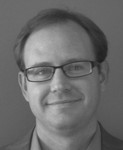
Josef Dufek
Josef Dufek was awarded the 2012 James B. Macelwane Medal at the AGU Fall Meeting Honors Ceremony, held on 5 December 2012 in San Francisco, Calif. The medal is for “significant contributions to the geophysical sciences by an outstanding young scientist.”
Citation
Joe Dufek is an extraordinary young scientist whose research is characterized by deep intellectual content and rigor. He has contributed significantly to our understanding of the dynamics and petrology of magmatic systems, and to physical volcanology, tectonophysics, and planetary volcanism. Even at such an early stage in his career, ‘Joe’s contributions have transformed our understanding of magma chamber dynamics and the physics of volcanic eruption.
Joe was born and raised in Lander, Wyoming. He is a small town boy who greatly alarmed his parents by moving to the big city to do his undergraduate work at the University of Chicago. There, he had the good fortune to be mentored in volcanic petrology by Fred Anderson and Paul Wallace. After graduating from Chicago, Joe matriculated to the University of Washington, where he studied with George Bergantz, who instilled in Joe his keen insights in quantitative petrology, specifically in multiphase flow and eruption dynamics. I knew Joe when he was a graduate student at Washington, and he was then one of those very rare students who are best mentored by not getting in the way of their focused intellectual momentum. Before joining the faculty of the Georgia Institute of Technology, Joe was awarded a Miller Fellow at U.C. Berkeley, and there benefitted significantly from interaction with Michael Manga and his group, gaining a deeper appreciation of the need to develop constitutive relations that incorporate microphysics to accurately model first-order dynamical features of pyroclastic flow.
Joe works on the origin of complexity and the dynamics of magmatic systems at the interface between observational Earth and planetary sciences, and continuum physics. His credibility rests on a keen interest and respect for the observational realm and is framed by awareness that lasting progress requires integration of real-time data, geological deposits, and remote sensing within the rationalizing context of physics and chemistry. He has published important research on particle-particle collisions and their effects on flow in volcanic conduits, on the interaction between mafic dike injection and melting of the lower crust, on multiphase transport processes of pyroclastic flows including the tracking and fate of individual phenocrysts, and the thermomechanical coupling of crustal dynamics to magma chamber processes. Joe is someone who chooses to work on difficult and complex problems that are firmly grounded in observation. He always demonstrates the relevancy of the outcomes of computational models to field observables. He understands instinctively how to creatively formulate and execute a model that informs those observations in a substantive and discriminating way.
Joe was the 2010 recipient of the Kuno Award from the VGP section of the AGU and the 2011 recipient of the George Walker Award from IAVCEI. With the award of the Macelwane Medal, Joe has achieved well deserved recognition for his broad research accomplishments, for his intellectual generosity that fuels an intense collaborative research style, and for the transformative potential his future work will surely have in the fields of magma physics, petrology, and physical volcanology.
–Mark Ghiorso, OFM Research, Seattle, Washington
Response
Thank you Mark for your kind words, and thanks also to AGU and the Macelwane committee for this unexpected honor, and to my nominators for their support.
I feel very honored and touched to receive the James B. Macelwane Medal. And more than anything I feel very lucky because there are many fantastic young scientists. My work would not have been possible without the immense support of mentors and friends who have influenced and taught me a great deal at every step along the way. I have had the chance to interact with many excellent scientists over the last decade, and I really owe them all a debt of gratitude.
My introduction to Earth sciences came from classes as an undergraduate at the University of Chicago. Ray Pierrehumbert introduced me to the world of fluid dynamics and planetary research. I also had the great fortune to meet Alfred Anderson, and through work in his lab and generous discussions, learned much about volcanology. I cannot thank Fred enough for his patient explanations. Through Fred I was given the opportunity to interact with many excellent people at a young age including Paul Wallace and Youxue Zhang.
During graduate school at the University of Washington, George Bergantz taught me a great deal about geology and fluid flow as we examined problems in the lower crust and eruption dynamics. He taught me the importance of always going back to the rock record and delving into difficult problems. I look back fondly on times with Olivier Bachmann and George Bergantz brainstorming at coffee shops and on sunny Greek outcrops. During this time period I also had the opportunity to interact with Mark Ghiorso, and the thermodynamics I learned then influences my research to this day. While in Seattle, Ron Merrill, Kari Cooper, Bruce Nelson, Stu McCallum, Robert Winglee and Chris Newhall and many others were all very influential to me, as were my excellent graduate cohort.
I had the great luck to join the Miller postdoctoral program at Berkeley following graduate school, and my continuing collaboration with Michael Manga has been very fulfilling. Berkeley also introduced me to several amazing young scientists and future collaborators including, Chris Huber, Leif Karlstrom, and Tim Creyts.
Over the last years I have had the opportunity to collaborate with many people who have taught me much including Mark Ghiorso, Mark Jellinek, Dennis Geist, Karen Harpp, Brittany Brand, Ben Andrews, and Rob Lillis among many others. My colleagues at Georgia Tech have been absolutely supportive including our chair Judy Curry, Peter Webster, Irina Sokolik, Thanos Nenes and my geophysics colleagues Andy Newman, Zhigang Peng, Chris Huber, Carol Paty, and James Wray. I especially want to thank my students who work hard and have much potential, including Jenn Telling, Joe Estep, Mary Benage, Ozge Karakas, Cindy Young, and Josh Mendez.
Mostly, I want to thank my parents and brother for their support, and my wife, Carol, for incite, caring, and extreme patience.
–Josef Dufek, Georgia Tech, Atlanta, Georgia
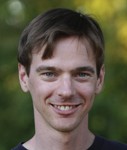
David R Shelly
David Richard Shelly was awarded the 2012 James B. Macelwane Medal at the AGU Fall Meeting Honors Ceremony, held on 5 December 2012 in San Francisco, Calif. The medal is for “significant contributions to the geophysical sciences by an outstanding young scientist.”
Citation
David R. Shelly is awarded the 2012 Macelwane Medal for his revolutionary advances in understanding the nature of tectonic tremor and its role in the earthquake preparation process. His innovations in the study of this subtle “noise” from deep within the Earth has opened a new window into the processes governing the earthquake cycle on major plate boundary faults and the magmatic systems beneath active volcanoes.
Tectonic (aka “non-volcanic”) tremor was initially recognized as an enigmatic seismic signal associated with subduction beneath Japan. David’s innovative use of cross-correlation techniques on continuous waveform data enabled him to discover that tremor consists of many, overlapping low-frequency earthquakes (LFEs) on the subduction interface, rather than being generated by fluid dynamic processes as many had speculated. David discovered migration patterns within the tremor associated with geodetically detected slow-slip events (together known as episodic tremor and slip or ETS), providing a means of tracking the spatial progress of individual slow-slip patches comprising an ETS event.
Turning his attention to the San Andreas Fault in central California, David showed that the tremor is confined to a long, ribbon-like band in the lower crust directly beneath the seismogenic fault and that, as in subduction zones, the tremor consists of many superimposed shear-slip events. This provided the first clear evidence that the central section of the San Andreas Fault extends entirely through the crust as a vertical, strike-slip fault rather than terminating in a lateral decollement at midcrustal depths as many had proposed. David identified a wide range of tremor migration patterns, including asystematic migration away from the eventual epicenter of the 2004 magnitude 6 Parkfield earthquake, which, analogous to subduction zones, may indicate a precursory slow-slip event at depth. David discovered patches of repeating LFEs that display an intriguing array of temporal patterns ranging from periodic to period-doubling to chaotic suggesting that small changes in conditions can produce dramatic changes in behavior as is characteristic of complex systems. He has recently expanded his research to include volcanic seismicity and tremor in major volcanic systems.
Awards recognizing David’s contributions include the AGU Keiiti Aki Young Seismologist Award, the Presidential Early Career Award for Scientists and Engineers, and the Seismological Society of America’s Charles H. Richter Early Career medal. These many accomplishments and accolades have not altered David’s modest, unassuming demeanor. He is a delightful colleague and valued collaborator with a balanced approach to science and life.
–Jeanne Hardbeck, U.S. Geological Survey, Menlo Park, California; and David Hill, U.S. Geological Survey, Menlo Park, California
Response
Thank you, Dave and Jeanne for the nomination and citation, as well as for being enthusiastic collaborators and mentors over the past few years.
This is a tremendous and unexpected honor for me. I consider myself extremely fortunate to have had such positive influences in all aspects of my life, from family and friends to mentors and collaborators over the years. On the personal side, I especially thank my parents fostering a curiosity of the natural world, and my wife Liz for her patience and encouragement.
I have been equally fortunate in my education and early career with the support of many generous mentors and colleagues. I thank Mark Beck for introducing me to research (in physics) during my undergraduate education at Whitman College. My PhD advisor, Greg Beroza, was then willing to take a chance on a student with little prior experience in geophysics, and he provided a potent combination of enthusiasm and insight into earthquake processes. I learned a lot from him and from fellow graduate students at Stanford, as well as from mentors since then such as Satoshi Ide, Roland Bürgmann, Bill Ellsworth, Dave, Jeanne, and many others. Now, as a seismologist at the USGS, I still feel a bit like a kid in a candy shop with so many brilliant and accomplished earthquake and volcano scientists who don’t seem to mind being pestered with questions. I am very grateful to be working in such a stimulating and supportive environment.
I am also grateful for the investments the seismological community has made in shared and open data. The research that collaborators and I have done, which is cited here, has relied heavily on these investments. We are very fortunate to be in an age where data centers provide free and open access to terabytes upon terabytes of high quality seismic data, and it has enabled scientific progress that wouldn’t have been possible otherwise. By being able to access nearly all of the data, rather than just that collected by a single group, it’s a case of the whole being greater than the sum of the parts. I know many people worked very hard to set up this infrastructure, and many people continue to work hard to maintain it. I would like to thank all of the people and organizations that have worked to collect and archive data, as well as the agencies that support these efforts. I think this openness and investment in shared resources is a major strength of the seismological community.
So, I consider myself extremely fortunate to be in a profession where I’m working with brilliant people, studying amazing data, and attempting to answer fascinating questions related to the inner workings of our planet.
–David Shelly, USGS, Menlo Park, California
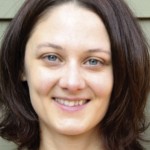
Tanja Bosak
Tanja Bosak was awarded the 2011 James B. Macelwane Medal at the AGU Fall Meeting Honors Ceremony, held on 7 December 2011 in San Francisco, Calif. The medal is for “significant contributions to the geophysical sciences by an outstanding young scientist.”
Citation
Tanja Bosak was born and raised in the small Croatian village of Kumrovec, also the birthplace of the Yugoslav dictator Tito. At the age of 13, Tanja won admission to Croatia’s best high school, MIOC, in Zagreb. To attend MIOC, which specialized in mathematics and computer science, Tanja moved to Zagreb and lived in a state boarding house for teenage girls. Tanja later attended Zagreb University. She intended to major in physics but soon shifted to geophysics. Setting her sights on a Ph.D. in planetary science, Tanja applied to the California Institute of Technology (Caltech) and was accepted. Her first paper, written with Andrew Ingersoll, is on Kelvin-Helmholtz instabilities in Jupiter’s atmosphere.
Atmospheric physics soon became the road not taken. A second research project at Caltech brought Tanja into contact with Kenneth Nealson and Lisa Stein, who introduced her to the wonders of microbiology. Dianne Newman then arrived at Caltech, and Tanja became her first student. Dianne pointed Tanja toward an ideal problem for a geophysicist seeking to reconstruct herself as a geobiologist: the origin of stromatolites. Stromatolites are laminated sedimentary structures that are thought to be Earth’s earliest fossils. Various lines of evidence, most notably, their unusual geometry, suggest that stromatolites record the presence of ancient microbial life, but precisely how has remained a fundamental question. Tanja’s unique contributions to this subject have derived from her desire to explain field observations with insight gained from carefully controlled laboratory experiments and quantitative theoretical models. One thus sees an expression of her early training in physics and mathematics.
In Dianne Newman’s lab at Caltech, Tanja detailed the ways in which microscopic calcite precipitates are influenced by microbes. After postdoctoral work with Ann Pearson and Richard Losick at Harvard, Tanja continued her work on stromatolites as an assistant professor at the Massachusetts Institute of Technology (MIT). Tanja and MIT graduate student Alex Petroff noted that small conical stromatolites tend to be spaced about 1 centimeter apart. They then showed, by a combination of theory and experiment, that the centimeter spacing represents a diffusive length scale associated with a diurnal cycle. These results support the hypothesis that conical stromatolites record the presence of early photosynthetic cyanobacteria.
Conical stromatolites often display bubble-like features of uncertain origin. By growing stromatolites in the lab, Tanja and her students have been able to show that microbial growth around oxygen-rich bubbles results in the preservation of these features. Since oxygen is a by-product of photosynthesis, the onset of preserved bubbles may record the origin of oxygenic photosynthesis.
Stromatolites are but one of Tanja’s interests. A hint of her future can be seen in her recent collaboration with her MIT colleague Shuhei Ono. Sulfate-reducing microbes grown in Tanja’s lab turn out to fractionate sulfur isotopes much more so than previously thought. This simple observation may require a substantial revision of the Proterozoic history of atmospheric oxygen.
For these and other accomplishments, those yet to come, and her uniquely physical approach to geobiology, I am delighted to recognize Tanja Bosak as a 2011 James B. Macelwane medalist.
—Daniel H. Rothman, Massachusetts Institute of Technology, Cambridge
Response
Thank you, Dan, and thank you, AGU, for this honor. Like Dan said, my scientific path so far has had its fair share of lucky turns, so I would like to thank many people who have helped me along the way.
The fortuitous nature of it all really hit me when I tried to trace my scientific roots back to something. Growing up in a small—and I mean small—village in Croatia, I attended the local public school, where math, science, and language classes offered much-needed balance to patriotic songs and stories about President Tito. In high school I thought I might like to be a biologist, but all the ones I knew were working either abroad or as librarians. So I ended up studying physics and geophysics. I thank my parents, Marica and Ivan, for all their support during this time and for not insisting that I become an accountant.
Following a vague notion that I could study other worlds, I went to the Jet Propulsion Laboratory (JPL) for a summer of undergraduate research and then applied to graduate schools in planetary science. Once at the California Institute of Technology (Caltech), I learned about another stunning and bizarre planet: the early Earth. I was lucky that Dianne Newman, my mentor, colleague, and friend, suggested that I work on stromatolites, a project that united biology, chemistry, physics, and the early Earth. Without Dianne’s support, optimism, generosity, and contagious delight in science, I would not be standing here today. Special thanks also go to Joe Kirschvink, the wild child of geobiology.
During my postdoc at Harvard, Rich Losick helped me explore the world of genetics, Ann Pearson guided me in organic geochemistry, and Andy Knoll and Paul Hoffman shared their stories from Earth history. At the Massachusetts Institute of Technology (MIT) I have truly enjoyed working with my new colleagues Dan Rothman, Shuhei Ono, and Roger Summons and with my collaborators Sara Pruss, Francis Macdonald, Dan Lahr, and Hojatollah Vali. Also, luckily, I have had great graduate students, Alexander Petroff and Min Sub Sim, as well as motivated research assistants and undergraduates. Finally, all this would be much less fun without my fellow explorer of bizarre worlds Ben Weiss.
Thank you!
—Tanja Bosak, Department of Earth, Atmospheric and Planetary Sciences, Massachusetts Institute of Technology, Cambridge
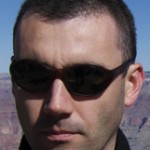
Nicolas Dauphas
Nicolas Dauphas was awarded the 2011 James B. Macelwane Medal at the AGU Fall Meeting Honors Ceremony, held on 7 December 2011 in San Francisco, Calif. The medal is for “significant contributions to the geophysical sciences by an outstanding young scientist.”
Citation
I am honored to introduce Nicolas Dauphas, the outstanding isotope geochemist and cosmochemist of his generation, as a recipient of AGU’s 2011 James B. Macelwane Medal. Nicolas came to Chicago as a postdoc in 2002 after getting his Ph.D. at Centre de Recherches Pétrographiques et Géochimiques (CRPG), in Nancy, France, with Bernard Marty and Laurie Reisberg and 2 years later joined the faculty of the University of Chicago in the Department of the Geophysical Sciences and the Enrico Fermi Institute.
Nicolas Dauphas’s contributions to geochemistry and cosmochemistry are remarkable for their breadth and depth, covering geochemical processes at all scales and times, from age of the galaxy to evolution of ancient and modern igneous rocks. Recently, he and collaborators at the California Institute of Technology (Caltech) discovered that the long-sought but elusive carriers of 54Cr anomalies in meteorites are chromium-rich nanoparticles with huge 54Cr excesses. The discovery of this new type of presolar grain solved a 20-year-old problem. He used the iron and nickel isotopic compositions of meteorites to show that stellar debris containing 60Fe was injected into the solar system early and was well mixed, disproving an earlier assertion of late addition of 60Fe to the solar system. He used the Th/U ratio of meteorites to measure the age of the galaxy and, with Ali Pourmand, recently used Th/Hf ratios and W isotopic compositions to conclude that Mars formed very rapidly, in only 4 million years. He used the correlation of nucleosynthetic isotope anomalies in molybdenum and ruthenium isotopes to conclude that the chemical composition of the feeding zone of planetesimals that came together to form the Earth did not change drastically with time. He developed an elegant model for the origin of the Earth’s atmosphere using two sources, blow-off of initial gases and infall of comets, to explain the elemental and isotopic abundances of all of the noble gases, thereby solving the “missing xenon” paradox. He showed how iron isotopic compositions of mantle rocks might be used to constrain the redox conditions of mantle melting from the Archean to the present. Another recent breakthrough with Fang-Zhen Teng involves documenting diffusive isotopic fractionation of magnesium and iron in olivine in komatiites and the Kilauea Iki lava lake and using isotopic zoning profiles to infer cooling histories. This novel technique has great potential for constraining the histories of many other igneous olivine-bearing rocks.
Nicolas Dauphas has built a superb research group and attracted excellent students and postdocs, several of whom have already gone on to faculty positions. His honors include the Nier Prize of the Meteoritical Society, the Houtermans Medal of the European Association of Geochemistry, a Packard Fellowship, a Moore Distinguished Visiting Scholarship at Caltech, and now the Macelwane Medal. Nicolas Dauphas has a very special combination of curiosity, intuition, imagination, and impressive modeling and experimental skills, and I have no doubt that the best is yet to come.
—Andrew M. Davis, Department of the Geophysical Sciences and Enrico Fermi Institute, University of Chicago, Chicago, Ill.
Response
Thank you, Andy, for your kind words. I first want to extend my gratitude to the individuals who supported me and to AGU for endorsing that nomination.
It is a great and humbling honor to receive the James B. Macelwane Medal from AGU. Looking at the list of past recipients, one cannot help being impressed by the great things that they went on to achieve. I take this award not only as recognition of past achievements but also as inspiration to continue exploring.
I have always had a passion for rocks and geology, which led me to study at the Ecole Nationale Supérieure de Géologie, in Nancy, France. I was being trained as a petroleum geologist when I had the opportunity to attend Bernard Marty’s class on geochemistry; it covered everything from stellar nucleosynthesis to chemical weathering. What kind of scientific field can claim such diverse topics? Bernard did a fantastic job connecting everything, and the following year I started a Ph.D. thesis under his and Laurie Reisberg’s guidance. I discovered that large planetary objects carried isotopic anomalies for molybdenum, which is a refractory element. This took everyone by surprise and was met with some skepticism. Ten years later, though, discoveries of isotopic anomalies for other refractory elements do not raise an eyebrow. Working with Bernard, I also learned about volatile elements, which led me to propose a model involving comets to explain the origin of Earth’s atmosphere. With the models of Pepin and Tolstikhin, it is one of the three quantitative explanations of Earth’s atmosphere. To this day I think that some of the outstanding questions in Earth science lie in the atmospheric composition, and I have strong hopes that measurement of a comet by the Rosetta mission will help resolve these questions.
Since 2002 I have been working at the University of Chicago, first as a postdoc and then as faculty. There I have been surrounded by outstanding scientists who have nourished my thinking: Frank Richter, Andy Davis, Bob Clayton, Larry Grossman, Fred Anderson, Fred Ciesla, Mike Pellin, Ray Pierrehumbert, and David Rowley to name just a few. Geochemists at the University of Chicago have developed a style that is grounded in chemistry and physics, which suits me well. In my group, the Origins Lab, we have developed new analytical techniques and modeling tools that have allowed us to study the origin of the oldest sediments on Earth, to identify microbial iron respiration in sediments, to determine the galaxy’s age, to establish Mars as a stranded embryo, and to constrain the abundance of 60Fe in the early solar system, among numerous other investigations. Students and postdocs have contributed tremendously to these adventures, and I wish to thank them for joining the ship: Vincent Busigny, Ali Pourmand, Fang-Zhen Teng, Paul Craddock, Thomas Ireland, Liping Qin, Haolan Tang, Junjun Zhang, Corliss Sio, and François Tissot.
Once again, let me thank the individuals who nominated me and AGU for the tremendous honor of receiving the Macelwane Medal.
—Nicolas Dauphas, Department of the Geophysical Sciences and Enrico Fermi Institute, University of Chicago, Chicago, Ill.
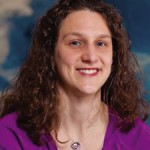
Arlene M Fiore
Arlene M. Fiore was awarded the 2011 James B. Macelwane Medal at the AGU Fall Meeting Honors Ceremony, held on 7 December 2011 in San Francisco, Calif. The medal is for “significant contributions to the geophysical sciences by an outstanding young scientist.”
Citation
Arlene Fiore has contributed significantly to the science of atmospheric chemistry, our understanding of ozone pollution, the global roles of methane in both air quality and climate, the role of intercontinental transport in regional air quality, and global environmental policy analysis. The breadth and depth of her accomplishments are outstanding, with over 50 published papers in the peer-reviewed literature, including 11 first-authored publications.
Her Ph.D. research focused on understanding the sources of background ozone over North America, its contribution to ozone pollution episodes, and different strategies to reduce it. Fiore’s work led the U.S. Environmental Protection Agency (EPA) to lower its estimate of “policy-relevant background” surface ozone and made critical contributions to the development of EPA’s Ozone Criteria Document.
Through analysis of key ozone precursors, Fiore found, unexpectedly, that methane is the most important global precursor and that global anthropogenic methane emissions make a significant contribution to U.S. pollution. Equally important, she showed that reducing methane emissions would both improve U.S. air quality and yield double climate dividends via ozone and methane reductions. She next worked, in collaboration with J. Jason West and others, to quantify the economic and health benefits of methane control and characterize in detail the tropospheric ozone response to methane emission controls and the benefits to climate and air quality. Her research led to the identification of methane emission control as a key priority for ozone abatement in Europe.
Fiore’s work helped foster EPA’s current interest in intercontinental transport of pollution and contributed to the creation of a United Nations Economic Commission for Europe (UNECE) Task Force on Hemispheric Transport of Air Pollution, where she has played a very active role as a coordinating lead author for the ozone modeling interim report, as a task leader for the Photooxidants Model Intercomparison, and as the lead author of a major paper on the multimodel intercomparison of intercontinental transport.
Fiore’s efforts to both communicate within her immediate scientific community and reach out across disciplines as well as to the general public have also been outstanding. Her invited talks have ranged from international and national meetings to university seminars to the U.S. Senate Committee on Environment and Public Works staff to the President’s Science Advisor. She has coconvened four interdisciplinary sessions at AGU, is on the AGU Eos Editorial Advisory Board, and is a cofounder of the Earth Science Women’s Network. She was recently selected as a lead author for the Fifth Assessment Report (2010–2013) of the Intergovernmental Panel on Climate Change.
In summary, Arlene Fiore’s accomplishments are both broad reaching and consistently outstanding. She strives for thorough understanding, is willing to challenge long-standing assumptions, and attacks critical research areas. She enjoys collaboration, selflessly sharing her ideas, data, and model results, and takes seriously her responsibility to explain her findings, not only to her peers in science but also to decision makers and the public. Her previous awards include the AGU James R. Holton Junior Scientist Award and the Presidential Early Career Award for Scientists and Engineers.
—Hiram Levy II, Geophysical Fluid Dynamics Laboratory, National Ocean and Atmospheric Administration, Princeton, N. J.
Response
Thank you, Chip, for the nomination, the generous citation, and your mentorship and career advice, which have proven invaluable at several junctures in my life over the past 8 years. To Tracey Holloway, Daniel Jacob, Michael Prather, V. Ramaswamy, and A. Ravishankara, thank you for your role in nominating me and for sharing your enthusiasm, inspiration, and dedication to atmospheric chemistry. To Ram and Chip, former director Ants Leetmaa, and many others at the Geophysical Fluid Dynamics Laboratory (GFDL), thank you for creating an intellectually stimulating work environment where an early-career scientist can thrive.
I’d especially like to thank Daniel for his willingness to take a chance on hiring an undergraduate researcher for a summer job despite my notably average performance in his course and for the countless hours he invested in teaching me how to conduct research, with an emphasis on the importance of communicating the results effectively. My freshman-year high school Earth science teacher opened my eyes to the world of geoscience, although, admittedly, our trip to Plum Island on a frigid December day rather than a more sensible May beach trip may underlie my pursuit of modeling rather than fieldwork.
Much of my work is collaborative, and so this honor is shared with many people in the Harvard Atmospheric Chemistry Modeling Group, GFDL, the National Oceanic and Atmospheric Administration (NOAA), and beyond, with whom I’ve had the privilege of working. I’m inspired daily by close collaborators, past and present, at GFDL: Yuanyuan Fang, Isaac Held, Larry Horowitz, Jasmin John, Chip Levy, Meiyun Lin, Vaishali Naik, V. Ramaswamy, D. J. Rasmussen, Gabe Vecchi, Jason West, and several summer interns I’ve had the pleasure of mentoring; my new colleagues at Columbia and Lamont; and many others I am neglecting to name here. I acknowledge the Earth Science Women’s Network community for continually inspiring me with their experiences in pursuing science amid the many challenges life presents, including practical advice for navigating the challenges of motherhood and science. I thank my parents for instilling in me a deep love of learning; my husband, Brendan Field, for his unconditional support in every aspect of our lives; and our little girls, who share with us their never ending excitement of discovering something new.
I consider myself incredibly fortunate to love my work. It is an exciting time for synthesizing models and observations as modeling capabilities improve in parallel with expanding observational techniques and networks. At times, this work has intersected with atmospheric science policy, enabling me to participate in assessing the scientific basis underlying U.S. ozone pollution policy and associated international efforts. I thank, in particular, Frank Dentener, Terry Keating, and Joseph Pinto for their support and encouragement of my participation. More generally, I thank all the senior scientists who make time to engage early-career scientists in their activities. Such opportunities foster a strong sense of community, which I believe is essential as our scientific endeavors take us into increasingly cross-disciplinary areas to tackle new pieces of the Earth system science puzzle in the years to come.
—Arlene M. Fiore, Lamont-Doherty Earth Observatory, Columbia University, Palisades, N. Y.
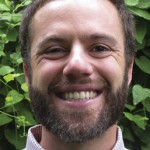
Adam C Maloof
Adam C. Maloof was awarded the 2011 James B. Macelwane Medal at the AGU Fall Meeting Honors Ceremony, held on 7 December 2011 in San Francisco, Calif. The medal is for “significant contributions to the geophysical sciences by an outstanding young scientist.”
Citation
Adam Maloof exemplifies a new breed of field geologist, operationally engaged with geophysics, geochemistry, and geobiology and ranging up and down the geologic column. Adam became a geologist at Carleton College in Northfield, Minn., one of the handful of liberal arts colleges where a disproportionate share of talented geologists get their start. Adam e-mailed me midway through his junior year as an exchange student at the University Centre in Svalbard, on Spitsbergen in Arctic Europe. He asked a generic question about my research and three specific ones on snowball Earth. I didn’t answer the latter but sent three references where answers might be found. Ten days later I received a critique of each paper and three more questions, eliciting more references. After 2 months of this, I offered him a summer apprenticeship in Namibia. Later I learned that getting the papers photocopied in Oslo and mailed to Longyearbyen took 9 of the 10 days.
Before coming to Harvard for graduate work, Adam apprenticed with Joe Kirschvink on a paleomagnetic expedition to Morocco. Joe subsequently opened his lab at California Institute of Technology (Caltech) to Adam and has powerfully influenced his thinking. So, too, have geologist-geochronologist Sam Bowring and astropaleomagnetist Ben Weiss at Massachusetts Institute of Technology (MIT).
Adam’s Ph.D. work had three unrelated parts. First, he showed by soil mechanical analysis that deep sand-wedge polygons at a Cryogenian permafrost horizon, known to have formed near the paleomagnetic equator, do not require a large change in orbital obliquity (to amplify low-latitude seasonality) but could instead have formed in the sublimation zone on a snowball Earth. Second, he proposed a pre-Cryogenian episode of large, rapid, oscillatory true polar wander, based on integrated paleomagnetic, sequence stratigraphic, and chemostratigraphic data from Svalbard. Third, he laboriously tracked down and established a remarkable carbonate δ13C reference curve for the first half of the Cambrian period in Morocco, calibrated with U-Pb zircon dates from interlayered tuffs.
During his Agouran postdoc at MIT, he led landmark expeditions to Lonar Crater, India, finding no evidence for shock demagnetization or impact-induced transient magnetic fields, hypothesized as core-dynamo alternatives for paleomagnetism on extraterrestrial bodies; to Great Bahama Bank, where he documented the acquisition and subsequent destruction of natural remanent magnetization in Holocene tidal-flat carbonates; and to Lake Superior, where he and advisee Nick Swanson-Hysell removed a long-standing obstacle to the acceptance of symmetrical geomagnetic reversals in deep Precambrian time.
At Princeton, new constraints on carbon cycling before, during, and after the Cryogenian glaciations stream from his research group, which also developed MatStrat, free software for plotting and analyzing stratigraphic data. With Susannah Porter and other talented collaborators, Adam spearheaded a chemostratigraphic recalibration of richly fossiliferous early Cambrian sections in Siberia, Mongolia, and south China onto his chronometrically calibrated but poorly fossiliferous reference section in Morocco. The result is revolutionary: The canonical “big bang” of complex life now consists of three distinct pulses, each associated with a reorganization of the carbon cycle and collectively doubling the bang’s duration.
An award-winning teacher, Adam presents his work with style and conviction; visiting his data tables yields the reason for the swagger.
—Paul F. Hoffman, Department of Earth and Planetary Sciences, Harvard University, Cambridge, Mass., and School of Earth and Ocean Sciences, University of Victoria, Victoria, British Columbia, Canada
Response
I found out about the Macelwane Medal a few days after the fact when I ran into cell phone service while fixing a flat tire in the field. My phone was filled with congratulations from many of my friends who are in the audience today. It is easy to underestimate how powerful a little encouragement can be for a young scientist; thank you, Paul, for the nomination, and thank you, AGU, for this encouragement. I am humbled by this recognition and want to acknowledge some of the people who helped me along the way.
At Carleton College, Bereket Haileab and Dave Bice taught me to see that every rock is an awe-inspiring book of Earth history. I went on to Harvard for one primary reason: to study with Paul Hoffman. While Paul turned me into a field geologist, one of the most important lessons he taught me was to read broadly and constantly.
The eighth floor in Massachusetts Institute of Technology’s (MIT) Green Building was one of the most stimulating and generous scientific environments I have ever worked in. As a postdoc, I benefited from the inspiring tutelage of John Grotzinger and Ben Weiss. Sam Bowring became a valued colleague and mentor, whose sage advice I have sought on an almost weekly basis over the past 5 years. New collaborations with paleontologist Susannah Porter, planetary scientist Sarah Stewart, and architect Brad Samuels led to projects more rewarding than I could have imagined.
At Princeton I have been surrounded by gifted and supportive colleagues, like Michael Bender, Tom Duffy, Francois Morel, Satish Myneni, Allan Rubin, Danny Sigman, Jeroen Tromp, and Bess Ward. I also am fortunate to have found funny, reliable, and brilliant friends like Frederik Simons and Blair Schoene to teach classes and conjure up projects with. My students Nick Swanson-Hysell, Catherine Rose, Jon Husson, and Blake Dyer have been the source of many rewards, challenges, and discoveries. Over the years, I benefited immensely from conversations with Dave Barbeau, Tanja Bosak, Claire Calmet, Doug Erwin, David Evans, Ryan Ewing, Josh Feinberg, David Fike, Galen Halverson, John Higgins, Matt Hurtgen, Peter Huybers, Doug Jerolmack, David Jones, Jamie Kellogg, Joe Kirschvink, Andy Knoll, Bob Kopp, Cin-Ty Lee, Kevin Lewis, Peter Moore, Rick O’Connell, Jon Payne, Dan Rothman, Dan Schrag, Adam Soule, John Shaw, Carl Tape, and many more.
While growing up, I sought activities, and eventually an occupation, that would challenge both body and mind while immersed in nature. Now I work in a discipline where more than half the data I collect come from trekking through wild places and observing the natural world. I would not have the courage to follow this path if not for the generosity and love of my parents, Doreen and Bruce Maloof. Finally, thank you to my wife, Pascale Poussart, for challenging the status quo and making every day a new experiment. Trying to emulate her compassion, resolve, and spunk make me a better person.
—Adam C. Maloof, Department of Geosciences, Princeton University, Princeton, N.J.
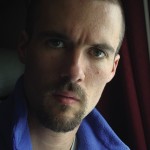
Christian Schoof
Christian Schoof was awarded the 2011 James B. Macelwane Medal at the AGU Fall Meeting Honors Ceremony, held on 7 December 2011 in San Francisco, Calif. The medal is for “significant contributions to the geophysical sciences by an outstanding young scientist.”
Citation
Christian Schoof is a glaciologist with an impressive foundation in applied mathematics who has solved one of the most important and challenging problems of ice sheet dynamics. Words like “elegant” get debased by overuse, but Schoof’s astonishing work on ice sheet grounding line dynamics is both elegant and profoundly significant. The central issue is how the internal boundary between grounded ice sheets and floating ice shelves moves around and whether this motion is subject to instability. This important question has been dodged in most large-scale ice dynamics models, which, in essence, paste together a model of ice sheet mechanics and a model of ice shelf mechanics. Schoof is the first to describe, correctly and for all time, the smooth physics that connects these two entities. In doing so, he has demonstrated that grounding line dynamics need not be stable and that the belief that they are neutrally stable (hence unable to deliver surprising responses) is simply wrong. As a measure of the relevance of this contribution, the Summary for Policymakers in the 2007 Fourth Assessment Report of the Intergovernmental Panel on Climate Change concluded with the much quoted statement, “Dynamical processes related to ice flow not included in current models but suggested by recent observations could increase the vulnerability of ice sheets to warming, increasing future sea level rise. Understanding of these processes is limited and there is no consensus on their magnitude.” Schoof’s work is targeted at removing these uncertainties by closely scrutinizing and, where necessary, correcting the physical basis of numerical ice dynamics models.
Schoof’s most recent contribution on the subglacial hydrology of ice sheets strikes out in a new direction. Alarming images of surface meltwater plunging into the depths of the Greenland Ice Sheet and evidence that this water input can accelerate the rate of ice flow have helped to inspire an apocalyptic literature on the dangers of Greenland meltdown and rapid sea level rise. Schoof shows that part of this concern is based on misconceptions about how subglacial water affects ice sheet flow. By putting together what is known about the contrasting physics of subglacial channels and of spatially distributed subglacial cavities, Schoof has captured the physics of both drainage elements in a single equation that respects the physics yet can switch from one limit to the other. By doing so he shows that high rates of water supply can actually decelerate ice flow: It is the rate of increase rather than the magnitude of the water supply that gives rise to accelerated flow.
Christian Schoof is a gifted physical scientist who can see far into the heart of challenging fundamental problems and then, with great skill, apply mathematics to crystallize new truths. He is making singular and enduring contributions to glaciology by leading the science in directions in which others cannot go. By concentrating on problems that are both important and mathematically challenging, he is setting a path uniquely his own yet fundamentally rewarding to the rest of us.
—Garry Clarke, Department of Earth and Ocean Sciences, University of British Columbia, Vancouver, Canada
Response
Thank you, Garry. In response, I can only say that I have simply been very lucky. Glaciology has grown enormously in the past decade, and I would not be here were it not for the many people who have made it such a rich and rewarding field of study. Nor would I be here but for the people who have guided me personally along the way.
Like many beginning graduate students, I went into glaciology primarily because I loved the mountains. Felix Ng showed me how it was possible to combine that with a passion for physics and mathematics. He introduced me to Andrew Fowler, who would become my doctoral supervisor at Oxford and teach me almost everything I know about modeling and who remains one of the biggest influences on my work. Andrew in turn later suggested I work with Garry Clarke at the University of British Columbia (UBC), who continues to be a source of inspiration even long after my postdoc with him has ended.
Along the way, I have benefited enormously from the help of many colleagues. Too many, in fact, to name, mostly because I worry I would leave someone out. I do want to single out Richard Hindmarsh, however, who has always been generous with his support and ideas. In 2005 we found ourselves exploring similar approaches to coupling ice sheets and ice shelves, and had it not been for Richard’s imminent departure to Antarctica, I would have hoped we might publish our work together. This was not to be, as Richard submitted his own manuscript before heading south. In the end, my own paper went just a little further than his. It became the work I am best known for, and it owes a great deal to Richard.
After a somewhat turbulent search for employment, I ended up staying at UBC, where I have been privileged to work in an exceptionally collegial environment. I am especially grateful to Mark Jellinek and Neil Balmforth for their support, as well as to Gwenn Flowers at Simon Fraser University, without whom I would not have been able to start a field program, and to all my undergraduate and graduate students.
Garry characterized my work as unique. I would disagree; I simply found myself in a rapidly expanding field with a background that was, at the time, still somewhat unusual. The enormous growth that glaciology has experienced has also brought with it a new generation that uses the same methods that I do, only they do it better. Perhaps receiving a young scientist award is a sign that it is time to make way for that younger generation, and I am grateful to several postdocs, in particular, for a number of wonderful collaborations: Faron Anslow, Tim Creyts, Dan Goldberg, Ian Hewitt, Alex Jarosch, Sam Pimentel, and Mauro Werder.
My biggest thanks go to my parents, who have supported me throughout, and to my partner, Valentina, and son, Oliver. Research can be a somewhat obsessive and selfish pursuit, and without their long-suffering patience much of my work would never have been possible.
—Christian Schoof, University of British Columbia, Vancouver, Canada
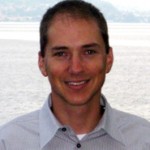
David B Lobell
David B. Lobell, Rosalind E. Rickaby, and Jasper A. Vrugt were awarded the 2010 James B. Macelwane Medal at the AGU Fall Meeting Honors Ceremony, held on 15 December 2010 in San Francisco, Calif. The medal is for “significant contributions to the geophysical sciences by an outstanding young scientist.”
Citation
At 32 years old, David Lobell is a young scientist whose accomplishments might be compared to those of many distinguished senior scientists. David combines remote sensing, statistics, and climate modeling to explore continental—scale human—environment interactions. His contributions span climate change impacts, food and energy security, and agricultural informatics. Exhibiting extraordinary scholarship, David has been both prolific and profound. He is a powerful quantitative researcher with superior disciplinary skills and a proven ability to cross disciplinary boundaries.
When David Lobell speaks, people listen. He has provided expert advice on matters of global significance. David was a featured speaker in Washington, D. C., at a U.S. State Department meeting on adaptation to climate change; in Nairobi, Kenya, on climate change and adaptation in African agriculture; on genetic preservation strategies at the anniversary meeting of the new (“Doomsday”) seed bank in Svalbard, Norway; on climate and crops in Mexico; and on climate change and California agriculture in Sacramento. He is regularly consulted by the Global Crop Diversity Trust (Rome), whose executive director has indicated that David’s work has significantly influenced and redirected global germ plasm collection, preservation, and distribution. David served on the National Academy of Sciences Committee on Stabilization Targets for Atmospheric Greenhouse Gas Concentrations, and he was recently selected as lead author for the chapter on food security in the upcoming Intergovernmental Panel on Climate Change assessment report.
David’s primary research focuses on understanding likely impacts of climate change on crop production. He has systematically quantified climate impacts and uncertainties on food production across the developing world, building probability distributions of climate change effects on food-insecure regions. For the first time, decision makers have critical information about how to adapt agricultural development to various environmental outcomes. David has also worked on the flip side of the climate—food security problem by investigating how agricultural practices can affect regional climate change through the unrecognized influence of irrigation on regional cooling.
David’s second research focus is using remote sensing to understand and improve agricultural practices. This work develops cutting—edge scientific tools to decipher how environmental factors (e.g., temperature, rainfall, and solar intensity) and field inputs (fertilizers and water) affect crop yields. David is pioneering the emerging field of crop informatics by creating novel algorithms for handling large, complex data sets that could revolutionize our understanding of factors controlling crop yields. David has already provided a means not only to improve agricultural productivity but also to do so while minimizing degradation of environmental quality.
Using a suite of quantitative tools, David addresses critical problems at the interface between Earth science and society. His expertise in conceptual and quantitative modeling, clarity of thought, and solid analytical tool kit are extremely likely to lead to further breakthroughs that will not only advance scientific endeavors but also have a tremendous impact on humanity. In closing, this citation would not be complete without noting that David was honored as “Professor of the Game” at the Stanford Women’s NCAA basketball game in February 2010. I hazard to predict that neither this nor the AGU Macelwane Medal will be the final recognition received by David Lobell.
—STEVEN M. GORELICK, Stanford University, Stanford, Calif.
Response
It is a great honor for me to accept this medal. First and foremost, I want to thank Steve for his nomination and citation. Steve embodies the best of Stanford University in many ways: a brilliant scientist who is as committed to service and mentorship as he is to research.
I also want to thank the medal committee for the time they devoted to this process. I’ve always been struck with the energy AGU puts into encouraging young scientists. Thinking back to a student paper award I received 11 years ago, at my first AGU meeting, I realize how much even the smallest of gestures can mean to a young scientist. Today I am grateful that the committee selected me, out of many worthy candidates, to receive this award. And I’m very proud to be a member of an organization that does so much to support its scientists, both young and old.
I know I would not be here tonight without some exceptional people who have helped me along the way. Jack Mustard got me started in research as an undergraduate at Brown University; Greg Asner and Pam Matson guided me through graduate school; Phil Duffy mentored me as a postdoc; and Roz Naylor, Wally Falcon, and Steve continue to mentor me at Stanford. And throughout I’ve had an extraordinary collaborator and mentor in Chris Field. All of these people have challenged me, encouraged me, and believed in me. Even more than their words of advice, it has been the examples they set that have made a difference in my career. It’s hard to go wrong when people like them lead the way.
It is a real privilege and joy to go to work each day at Stanford, where so many colleagues and students have enriched my career. So many, in fact, that I don’t have room to mention them here. Beyond Stanford, I’d like to make special mention of Ivan Ortiz-Monasterio at the International Maize and Wheat Improvement Center (CIMMYT) in Mexico. Without his insights into global agricultural issues, and our many trips into the field, I would not be nearly the scientist I am today.
One thing I’ve learned from this cast of characters is that great science requires a genuine balance of personal confidence and humility—confidence to ask bold questions, pursue new ideas, and communicate them effectively; and humility to keep an open mind, work carefully, admit to mistakes, and be one’s own toughest critic. Any success I’ve had in striking this balance is because of the three people here with me tonight: my wife, my mother, and my father. For that, and the million other ways they’ve helped me, I share this award with them.
So thank you again to the committee for their efforts, and I look forward to doing my part as a Fellow of this great Union.
—DAVID B. LOBELL, Stanford University, Stanford, Calif.
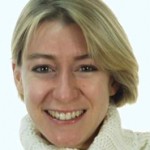
Rosalind E M Rickaby
David B. Lobell, Rosalind E. Rickaby, and Jasper A. Vrugt were awarded the 2010 James B. Macelwane Medal at the AGU Fall Meeting Honors Ceremony, held on 15 December 2010 in San Francisco, Calif. The medal is for “significant contributions to the geophysical sciences by an outstanding young scientist.”
Citation
It is an honor and a great personal pleasure to introduce Rosalind E. Rickaby of Oxford University, recipient of the 2010 AGU James B. Macelwane Medal. Ros has made insightful contributions to the paleoceanography of the glacial and interglacial oceans. She has developed expertise and has applied her insights into marine geochemistry to the study of past oceans, and she has advanced understanding of the physiological and biochemical processes that govern the behavior of key paleotracers. Ros was an undergraduate at Cambridge University and stayed on for her graduate research under my supervision. Her thesis work focused on using trace element incorporation in planktonic foraminifera to assess glacial—interglacial changes in the productivity of the Southern Ocean. Following her Ph.D., Ros moved to the other Cambridge for a postdoc at Harvard with Dan Schrag, and coincidentally encountered Edouard Bard on sabbatical at that time, before she moved to Oxford. In her papers she has shown that the strontium/calcium ratio in coccoliths varies with 400,000-year-long cycles of carbonate accumulation in a way that points to clear secular variations in the rate of continental weathering. She has exploited cadmium/calcium ratios in foraminiferal tests from intermediate—depth cores in the North Atlantic, providing a strong constraint on the mechanism that brought the Earth’s climate out of the last ice age. In a recent paper she showed that the ocean’s deep water was significantly more alkaline during each of the cold glacial stages of the past 800,000 years. This provides a very strong constraint on the mechanism that made atmospheric carbon dioxide (CO2) fall as the Earth’s climate headed into an ice age and then made atmospheric COsub>2 rise on the way out.
The key to her scientific contribution is that she is bringing into the field of paleoceanography an increasingly sophisticated understanding of cellular processes, both physiological and biochemical, that govern the behavior of paleoproxies. At the same time, she can recognize the important questions about past climate and is applying paleochemistry to their understanding in very successful ways. She is extremely creative and can leap from thinking about mechanisms of pelagic calcification to discussing the long-term evolution of ocean chemistry and its impact on climate. She has the combination of curiosity and intellect, which is rare. Notable among her honors are the European Geosciences Union Outstanding Young Scientist Award and the Philip Leverhulme Prize in 2008, and the Rosenstiel Award from the University of Miami in 2009. It is very fitting that the Macelwane Medal has been added to this list. Her superb record of research has already produced several important results. Even more exciting is the work that lies ahead.
—HARRY ELDERFIELD, University of Cambridge, Cambridge, UK
Response
Thank you, Harry, for all your kind words, unwavering support, and gentle persuasion since the very start of my scientific career. I never thought I was good enough to “make it” as a scientist, and while always tantalized by the freedom and imagination of an academic career, I suffered a rather stuttering and indecisive start. My final Ph.D. year was a pivotal point. Weekly Eagle sessions with Tom Rowland, Carrie Lear, Paul Wilson, Ian Hall, and Mark Rudnicki released some steam, but I shall never forget those afternoons exploring the cunningness of cadmium in carbonates and the Southern Ocean, while also losing the (kaleidagraph!) plot in your office. That intellectual challenge, fun, and exploration got me hooked on all questions COsub>2 and on your belief in me. I cannot thank you enough, Harry.
Your quiet approach, though, did not prepare me for the scientific tennis I encountered with Dan Schrag at Harvard as a postdoc, and the constant barrage of thought aces fired at me. I thank Dan for his support and his infectious enthusiasm and curiosity to explore any aspect of the Earth system without constraint. Dan was also kind enough to introduce me to Francois Morel and Paul Falkowski, both of whom really influenced my interest in the crossover between biology and geology, a major thread of my current research. It was also at Harvard that I encountered Edouard Bard, on sabbatical from Provence. Edouard never stops thinking about science, which is inspiration itself. Thanks also to the 6 Marie Ave crowd, who richly enhanced my snow-filled Boston days and convinced me it definitely was not diagenesis.
Somehow, I then landed a “dream job” at Oxford. I thank Gideon Henderson for suggesting I apply, and I thank the faculty for taking the leap of faith to appoint me and being fantastic intellectual sounding boards. Special thanks have to go to Sam Shaw, Conall MacNiocaill, Al Woolway, Tamsin Mather, and Helen Johnson for adding the laughs; to Philip England, an incredible mentor; and to Bob Williams for teaching me about enzymes, metals, and life. I am gradually building a research group, and I want to thank all the outstanding past and present OceanBuggers for their stimulation and for indulging my disorganization and penchant for pain aux raisins! I have been lucky enough to encounter too many phenomenal scientists to name, but I am grateful to Wally Broecker, Ed Boyle, Kate Freeman, Peter Swart, Danny Sigman, Robbie Toggweiler, John Anderson, Jelle Bijma, Gerald Ganssen, Brad Opdyke, Judy McKenzie, Hilary Kennedy, Richard Zeebe, and Tom Marchitto, all of whom have tolerated my interminable questions and allowed me time for discussion.
I am over the Moon and gobsmacked by this honor. Thanks must go to my family, who stuck with me through the ups and downs, of roller coaster proportions; to my furry friend Maxwell; and to my earthmover Big Will. I am indebted to all of my letter writers and to the committee that decided to award this medal to me. I cannot believe that my name could join this list of such prestigious scientists. Being awarded this medal suggests that some, way more qualified than me, found seeds of potential in some of my work. My awesome task now is to try and fulfill their expectations.
—ROSALIND RICKABY, Department of Earth Sciences, University of Oxford, Oxford, UK
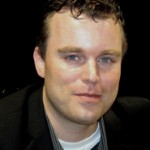
Jasper A Vrugt
David B. Lobell, Rosalind E. Rickaby, and Jasper A. Vrugt were awarded the 2010 James B. Macelwane Medal at the AGU Fall Meeting Honors Ceremony, held on 15 December 2010 in San Francisco, Calif. The medal is for “significant contributions to the geophysical sciences by an outstanding young scientist.”
Citation
I would like to open my citation for Jasper Vrugt with the simple phrase, “Hard work and persistence pay off.” The reason for my starting with this is that I recall back in early 2000, when Jasper came to the University of Arizona as a visiting graduate student from the University of Amsterdam to work with me and my colleague Hoshin Gupta. We found him to be a nonstop workaholic with tons of ideas matched by boundless energy to pursue them. I vividly recall one Christmas Eve, having to go to my office at the University of Arizona, when I noticed a light shining through a crack in an office door. My curiosity led me to discover that there was actually someone in the room working on Christmas Eve, and it happened to be Jasper. In response to my question, “What are you doing here on Christmas Eve, Jasper?” I got the reply, “I am trying to finish a few more simulation runs.” The conversation ended by Jasper saying, “Becoming a famous hydrologist does not come without time and effort.”
Almost 10 years later, I am pleased to be the citationist for Jasper Vrugt as one of the 2010 AGU James B. Macelwane medalists.
Jasper’s contributions can best be characterized in terms of his unique ability of developing novel systems and modeling approaches to address a wide range of Earth and environmental science problems including a variety of issues related to hydrology. Vrugt’s scholarly accomplishment is best reflected in his impressive publication track record in the best journals in a number of disciplines, among them Proceedings of the National Academy of Sciences.
While working toward his M.S. degree at the University of Amsterdam, Netherlands, Jasper tackled a classic experimental method in soil physics: laboratory outflow experiments for assessing soil hydraulic properties. He took a quite different approach to inverse modeling and used numerical experiments to explain why many published studies in the hydrologic literature demonstrated the nonuniqueness of soil hydraulic properties.
Jasper’s work on combining the principles of evolutionary search with the Markov chain Monte Carlo simulation have provided important ways to appropriately and efficiently treat model parameter uncertainty.
Another area of notable contribution is Jasper’s new concept of self-adaptive multimethod optimization. Theoreticians and computer scientists have been trying for years to find a single optimization algorithm that is always most efficient for a large range of parameter estimation problems. Jasper’s creative idea of running multiple search algorithms concurrently that learn from each other through information exchange using a common population of points is perhaps the most elegant way of exploiting the strengths of individual search methods to address the “no free lunch theorem.” Jasper’s body of work on parameter estimation and uncertainty estimation has already led to profound advances in hydrologic modeling and laboratory and field methods.
To close my citation, I congratulate not only Jasper for his remarkable accomplishments as a young scientist but also AGU for recognizing his talent.
—SOROOSH SOROOSHIAN, University of California, Irvine
Response
I will never forget my excitement on 17 October 1998 as I boarded an Icelandair Boeing jet at Schiphol Airport, Netherlands, and headed off for the beginnings of an unimagined future. I had no immediate thoughts of where this journey would ultimately take me. After 10 years of traveling and about half a million air miles, I am excited to receive this prestigious medal and humbled to have my name added to an amazing list of previous winners who have helped shape the Earth sciences. I share this recognition with my family, mentors, friends, students, and colleagues. They exude enthusiasm for my work and research, and this medal is just as much a reflection of their hard work, support, and dedication as it is mine.
The boarding of my plane began a long odyssey of personal, cultural, and scientific discovery in the realm of environmental systems modeling, parameter estimation, Bayesian statistics, nonlinear optimization, and high performance computing. During my Ph.D. appointment in Amsterdam, I morphed from a Dutchman to a man of the world, and I was eventually able to parlay an inexperienced researcher and writer into the beginnings of a scientist. My Oppenheimer Fellowship at Los Alamos National Laboratory provided an unprecedented research opportunity and helped me to embrace a career outside Europe, far away from the Netherlands and my childhood friends and family. Currently, my position at University of California, Irvine offers me a challenging and versatile academic life with outstanding faculty and students, all enjoyed under sunny southern California skies.
I am indebted to my nominator, Soroosh Sorooshian, for his unselfishness, his relentless support of young scientists, and being a worldwide ambassador of hydrology; Willem Bouten for his critical attitude, inspiration, and opportunities created; Hoshin Gupta for sharing his brilliant mind; Cees Diks and Cajo ter Braak for their creative ideas; Bruce Robinson for a license to explore; and Jan Hopmans for teaching me how to write and for fostering my roots in Davis. Without your advice and support I simply would not be here.
In closing, I would like to thank AGU and the Macelwane Committee for this award and the platform of scientific discussion and publication the organization provides. I hope that my students and I can continue to produce meaningful contributions.
My success is due to my parents. Their unconditional love and never ending support have been instrumental at all stages of my life. I therefore dedicate this medal to them. Mom, Dad, I’m happy that you are here with my brother and his family to celebrate this moment with me in San Francisco. We have been through it all, and you love me just the same. You are the very best this world has to offer.
—JASPER A. VRUGT, University of California, Irvine
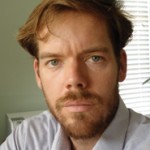
Peter J Huybers
Peter J. Huybers, Miaki Ishii, and Benjamin P. Weiss were awarded the 2009 James B. Macelwane Medal at the AGU Fall Meeting Honors Ceremony, held on 16 December 2009 in San Francisco, Calif. The medal is for “significant contributions to the geophysical sciences by a young scientist of outstanding ability.”
Citation
It is my great honor to introduce Peter Huybers to receive the AGU Macelwane Medal. Peter is an extraordinary climate scientist who has made fundamental contributions to understanding past and future climate change. Peter was an undergraduate at West Point Military Academy. Following several years of military service, he was trained in oceanography and climate dynamics at Massachusetts Institute of Technology (MIT) under the supervision of Carl Wunsch. His thesis work focused on understanding the periodic nature of Pleistocene glaciations. Specifically, he used statistical methods to develop better age models to test some of the different hypotheses about connections between changes in the Earth’s orbital variations and the record of glaciations from deep-sea sediments, emphasizing the role that stochastic processes might have in creating variability in the climate system. During his postdoctoral research with Bill Curry at Woods Hole Oceanographic Institution (WHOI), Peter developed a theory to explain why the 40,000-year period of changes in the Earth’s tilt rather than the more powerful 20,000-year changes in the Earth’s precession of the equinoxes appears most prominently in climate records over the past 2 million years. His explanation—reminding us that the duration of the seasons may be as important to the growth or demise of ice sheets as the peak summer insolation—is both simple and elegant (indeed, so obvious once stated that many of us have wondered why we did not see it for so many years). It is certainly one of the most important contributions to understanding the mystery of the ice ages over the past 2 decades.
Peter’s approach to studying past and future climates is somewhat untraditional in that most of the paleoclimate community focuses on the production of new records of ancient climate, or developing new tools, often with geochemical approaches, to produce those records. Peter brings a very different perspective. Peter knows the paleoclimate and modern climate records in great detail, but he is not a geochemist or a meteorologist; he is trained in climate dynamics, but he is not a dynamicist; he uses statistics and other data analysis techniques, but he is not a statistician. Quite simply, Peter is an Earth scientist. He combines a deep appreciation for geologic and geochemical problems, along with a sophisticated understanding of the physics of the climate system, wrapped together with a sharp and insightful ability to take disparate data sets and interpret them in a statistically rigorous manner. He is also a gentle and kind spirit, engaging students and colleagues in a way that makes collaborations blossom, even with scientists from vastly different disciplines—quite unexpected from a former tank commander. His research interests continue to broaden with his new friendships, exploring provocative new ideas like the role of volcanic emissions of carbon dioxide (CO2) in glacial cycles or the impact that future climate will have on agriculture. He is greatly deserving of this medal not only for the important contributions he has made but even more so for the discoveries that lie ahead.
—DANIEL P. SCHRAG, Harvard University, Cambridge, Mass.
Response
Thank you for the kind introduction, Dan. It is an honor to receive the Macelwane Medal. It is also an interesting coincidence. More than a decade ago I pondered whether to study science or become a Jesuit priest. I don’t regret my choice, but there is some fulfillment in receiving a medal named after an Earth scientist and a Jesuit. Even better, this medal gives me an opportunity to acknowledge the tremendous support I have received over the years.
First, I thank my thesis adviser, Carl Wunsch. He taught me the standards of scientific work through good advice, diligent editing, and an unwavering personal example. I am glad we continue to collaborate. Kerry Emanuel, Ed Boyle, John Marshall, Dick Lindzen, and others at MIT provided a vibrant and challenging education. After graduate school at MIT, I went 70 miles southeast to WHOI as a National Oceanic and Atmospheric Administration postdoctoral fellow and was hosted there by Bill Curry. Bill, Delia Oppo, Jerry McManus, Konrad Hughen, Olivier Marchall, and others at Woods Hole deepened my understanding and appreciation of the climate record.
After Woods Hole, I moved two T stops northwest from MIT to Harvard, initially as an environmental fellow working with Eli Tziperman, which was great fun. Harvard has been warmly welcoming and wonderfully stimulating. Dan Schrag has broadened my understanding of climate, environment, and energy. Charlie Langmuir alerted me to interactions between the solid Earth and climate. Andy Knoll helped me to better teach undergraduate Earth history. Rick O’Connell, Jim Anderson, Miaki Ishii, and Francis MacDonald are wonderful colleagues. I share a floor with Zhiming Kuang, Steven Wofsy, Brian Farrell, Jerry Mitrovica, and Eli Tziperman and could not ask for better neighbors, although I wish Paul Hoffman had postponed retirement. This community of scientists and friends is one of the major reasons I have not strayed far from the Boston area.
Along the way I have benefited from interacting with a range of other idiosyncratically great scientists. Wally Broecker, George Denton, and Richard Alley have lent much inspiration. I thank Mark Cane, Peter Molnar, David Lea, Ray Pierrehumburt, Maureen Raymo, Adam Maloof, David Battisti, Michael Bender, Taylor Perron, Oded Aharonson, and Gerard Roe for many interesting conversations. Jake Gebbie and Zan Stine have been good friends in graduate school and beyond. Cristian Proistosescu, Ethan Butler, Andrew Rhines, Nathan Arnold, Eddie Haam, and Martin Tingley have been wonderful students and postdocs. It has been a great privilege to interact with the Earth science community.
My gratitude would be incomplete if I did not also count my family. My wife, Downing Lu—the proximate cause of why I did not become a Jesuit—has been a source of inspiration and love. I have grown together with her beyond what I would have dreamed of alone. Our son, Pax, is a joy. My parents, Peter and Noreen, have been wonderful parents to me and wonderful grandparents to Pax. My sister, Kat, is a great friend.
Thanks to you and the many more who have made for such good company along the way.
—PETER J. HUYBERS, Department of Earth and Planetary Sciences, Harvard University, Cambridge, Mass.
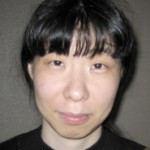
Miaki Ishii
Peter J. Huybers, Miaki Ishii, and Benjamin P. Weiss were awarded the 2009 James B. Macelwane Medal at the AGU Fall Meeting Honors Ceremony, held on 16 December 2009 in San Francisco, Calif. The medal is for “significant contributions to the geophysical sciences by a young scientist of outstanding ability.”
Citation
I have known Miaki Ishii for a long time—half her life—beginning with her undergraduate degree in physics at the University of Toronto. The academic world is marked by a certain transience—you meet incredible young adults of great promise, spend time teaching and mentoring them, and then they disappear into the world. I count myself extremely lucky that one such student—a young woman of singular talent and originality—decided to stay in the academic world of Earth science. So I now have the opportunity to watch her grow, see her make astonishing scientific discoveries, and, on occasion, participate in honoring her achievements, in this case, Miaki’s exceptionally well deserved Macelwane Medal.
Miaki is responsible for at least three transformative results in seismology and geophysics, each of which would have been sufficient to have her considered for the Macelwane Medal. These accomplishments reflect a rare talent for the theoretical and technical aspects of her field and an audacious scientific mind.
As a graduate student at Harvard, her supervisor Jeroen Tromp suggested several possible projects, and Miaki chose the riskiest. Specifically, she began working to estimate lateral density variations in the Earth’s mantle using seismic normal mode data. In a highly cited paper, she concluded that the lowermost mantle is characterized by denser than average material beneath the Pacific Ocean and Africa, thereby providing strong evidence for compositional heterogeneity in that region. Her work continues to be the framework for an energetic discussion at the interface between seismology, geodynamics, and geochemistry. And her perseverance showed that a quiet demeanor belies a very determined spirit.
Miaki next turned her attention to seismic anisotropy of the inner core. She combined normal modes and body waves to isolate a region at the center of the Earth that shows an anisotropy orientation that is distinct from the overlying inner core. The work, with Adam Dziewoński, is in some sense the discovery of a new region of the Earth—the “innermost inner core”—and it provides a fundamental boundary condition on inner core formation and dynamics.
As a postdoc at Scripps Institution of Oceanography, Miaki broadened her experiences, and behind her continued scientific output lies the toil of a committed seismologist. She worked tirelessly to collect Hi-Net data from Japan, leading to a seminal study with Peter Shearer, Heidi Houston, and John Vidale in which the data were back-projected to map the 1200-km-long rupture associated with the Sumatran event of Boxing Day 2004. Miaki’s remarkable analysis showed that this giant event, which led to the tragic tsunami, lasted 480 seconds and was characterized by a steady rupture velocity of 2.5 kilometers per second.
Miaki has worked on many other topics, but my point about breadth is made. Her accomplishments reveal the vision of a brilliant scientist working at the forefront of her discipline. What they perhaps do not reveal is a personality that is humble and self-effacing, a sense of humor that is playful, and a basic human decency that sometimes blunts even my attempts to poke fun at her.
Small things deflect our trajectory in life, and it is possible Miaki could have jumped, as a graduate student, into the world of quantum optics. We would have heard about her nonetheless. All the same, it’s nice that I haven’t had to lament the disappearance of that one fine young undergraduate student—instead, I can, from a very short distance, celebrate her James B. Macelwane Medal from AGU.
—JERRY X. MITROVICA, Harvard University, Cambridge, Mass.
Response
I am honored to be a recipient of the AGU Macelwane Medal. A fortunate life is one that is guided by patient, caring, and supportive mentors, and by that measure I have had a very fortunate life. It would be impossible to mention all of those who have influenced my life, but I would like to thank at least some of them.
First, I would like to thank Jeroen Tromp for converting a naive and stubborn graduate student into a researcher. Jeroen’s remarkable patience and unwavering support continue to help me move forward whenever I encounter problems.
As a graduate student, I had the good fortune to work with two other great seismologists at Harvard, Adam Dziewoński and Göran Ekström. Sybil and Adam Dziewoński have become dear friends, and in addition to rigorous seismology training, they made sure that I received a well-rounded education in American culture, ranging from the proper Thanksgiving dinner to an introduction to western movies with cowboys. My life at Harvard was, and is, further enriched by Renata Dmowska and Jim Rice. Their friendship and support remain somewhat of a mystery to me—I was not their student, nor did I work with them, yet they pampered and continue to pamper me as if I were one of their students.
Working with John Vidale and Peter Shearer has been a wonderful pleasure, and they helped to broaden my scientific experiences and outlook. Both John and Peter continue to inspire and stimulate my work and enrich my life.
My days at Scripps were further highlighted by tremendous generosity and input from Guy Masters, Gabi Laske, and Freeman Gilbert, all wonderful role models.
I am currently working closely with Eric Kiser and Irena Lucifredi, and the experience of being able to teach and be taught by them has been truly rewarding.
I would like to thank Jerry Mitrovica for being such an exemplary mentor for the past 16 years. Jerry has seen me through difficult times, and he has always been remarkably supportive. Also, I would not be a seismologist today if Jerry’s lectures in introductory physics had not convinced me to pursue a career in geophysics over chemistry.
Finally, I would like to acknowledge the patience and support my mother has given me for over 33 years. It must have been difficult to raise a child who got into so much trouble that there would be a call from school nearly every day. I will probably cause more trouble in the future, but I am sure she will continue to stand by me.
The AGU Fall Meeting is always overwhelming with so much information transferred in such a short time, and it is humbling to be reminded of how many important questions remain to be solved in the Earth sciences. Seismology, in particular, will always be an exciting area of research, and I will always be proud to be a part of our community of scholars and friends.
Thank you.
—MIAKI ISHII, Department of Earth and Planetary Sciences, Harvard University, Cambridge, Mass.
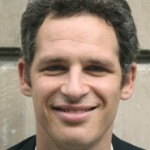
Benjamin P Weiss
Peter J. Huybers, Miaki Ishii, and Benjamin P. Weiss were awarded the 2009 James B. Macelwane Medal at the AGU Fall Meeting Honors Ceremony, held on 16 December 2009 in San Francisco, Calif. The medal is for “significant contributions to the geophysical sciences by a young scientist of outstanding ability.”
Citation
I am delighted to present Benjamin P. Weiss as a recipient of the 2009 AGU James B. Macelwane Medal. Ben is an extraordinary scientist whose career got off to an early start when, as a high-school senior, he was selected as the youngest-ever principal investigator for the Hubble Space Telescope.
As a graduate student at California Institute of Technology studying with Joe Kirschvink, Ben demonstrated that the only truly ancient (~4 Ga) Martian meteorite, ALH84001, was blasted off Mars and transported to Earth without being heated enough to thermally sterilize its interior. This research demonstrated the potential viability of transporting microbes between planets. However, during the frenzy around the announcement that ALH84001 contained magnetofossils indicating ancient bacterial life on Mars, Ben remained admirably objective and published evidence against the presence of bacterial magnetosome chains in this meteorite. He further demonstrated that ALH84001 preserves stable magnetic remanence and showed that the paleointensity of Mars’s early magnetizing field was within an order of magnitude of Earth’s present field. Soon after arriving at MIT, Ben and David Shuster used measurements of argon loss to demonstrate that the surface of Mars over most of the past 3 billion years rose to temperatures just above freezing but was never particularly clement. This result represented a tangible advance in understanding Martian climatic history.
With Franz Baudenbacher, Ben greatly improved the technique of superconducting quantum interference device (SQUID) microscopy, pushing the technology to levels never before achieved in paleomagnetism. With postdoc Eduardo Lima, Ben instituted a new inversion approach that allows the full magnetic moment vector to be derived from the measured vertical component using Maxwell’s equations.
Ben used his recently completed paleomagnetic facility at MIT to document stable remanent magnetization of angrites, a class of basaltic achondrites derived from a parent body from the main asteroid belt. The meteorites reveal thermoremanent magnetization that dates prior to 4.55 Ga and that persisted over a time longer than the expected lifetime of the circumsolar disk. He argued persuasively that the data represent evidence for a core dynamo in an accreting protoplanet, changing the paradigm for how planets accreted from the solar nebula.
Recently, Ben identified the only known ancient Apollo sample of the lunar highlands that was both unshocked and not otherwise magnetically altered subsequent to crustal emplacement. He argued that the ancient age, magnetic intensity, and time scale over which the sample was magnetized provide collectively the first quantitative evidence that the Moon once had a core dynamo. While not the final word, this study goes a long way toward resolving the enigmatic magnetization of Moon rocks.
Ben has revitalized the field of planetary paleomagnetism by improving instrumentation and analysis techniques and addressing confounding problems. His modus operandi of combining paleomagnetism with thermochronometry has allowed him to revolutionize understanding of magnetism in the context of thermal histories of solar system bodies. For an impressive array of discoveries and a rate of scientific progress that makes one a believer in warp speed, Ben is indeed a worthy recipient of AGU’s Macelwane Medal.
—MARIA T. ZUBER, Massachusetts Institute of Technology, Cambridge
Response
Thank you, Maria, and thank you very much to AGU for this recognition. I got into this business of planetary science just after my junior year of high school. That summer, in Ojai, Calif., I heard a talk about how the institute director of the newly launched Hubble Space Telescope, Riccardo Giacconi, had donated a few percent of his observation time to the amateur astronomers of the world. Well, a few of us kids in the audience applied to use the Hubble to look for asteroid satellites, and lo and behold, we were granted a few hours of observing time. The excitement that followed has never left me and is a major reason I am in science today. Thank you to Riccardo and to those at the Space Telescope Science Institute who helped make this possible. And thank you to my parents, who got me to Ojai, and to Earth, in the first place.
Because I had been mainly playing with telescopes, when I got to graduate school I knew next to nothing about paleomagnetism or, for that matter, about rocks. But then I heard about a character named Joe Kirschvink, who had named his son “Magnetite,” who considered it an entirely reasonable possibility that humans have innate magnetoreception (a “sixth sense”), and who was studying a 4-billion-year-old rock from Mars that some people thought contained fossils of Martian organisms. Even though some of this sounded too good to be true, I thought this guy sounded like my kind of advisor. So while I was a second-year grad student, Joe gave me, with virtually no strings attached, exclusive access to his cherished supply of Martian meteorite and a bunch of interesting ideas to look into, and then stepped back and let me run with it. In the meantime he taught me geology, paleomagnetism, and most important, how to take strange ideas just seriously enough that they can get their fair chance to shine. Without Joe’s patience, inspiration, wit, and bottomless support, I would certainly not be standing here today.
I also would not be here without Maria Zuber, Ron Prinn, Sam Bowring, Tim Grove, and the other faculty at MIT. They took a chance by hiring me even though I suspect paleomagnetism was not in their 5-year plan. My ability to make good measurements is founded on the beautiful lab they patiently helped me construct and the collegial and intellectually vibrant environment they have fostered at MIT. Of course, instruments are useless without great users, and for that I am indebted to Eduardo Lima and Laurent Carporzen and the many other amazing scientists and students with whom I’ve been lucky to work. Much of my basic approach for understanding the thermal stability of the rock record was developed in collaboration with my mentor of all things gaseous and noble, my friend David Shuster. Finally, I would be nowhere without the love and honest criticism of my wife and fellow cosmic explorer, Tanja Bosak. Thanks very much for this great honor and for being here tonight with me to celebrate it.
—BENJAMIN P. WEISS, Department of Earth, Atmospheric, and Planetary Sciences, Massachusetts Institute of Technology, Cambridge
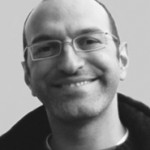
James Badro
James Badro, Emily E. Brodsky, and Diane E. Pataki were awarded the 2008 James B. Macelwane Medal at the AGU Fall Meeting Honors Ceremony, held 17 December 2008 in San Francisco, Calif. The medal is for “significant contributions to the geophysical sciences by a young scientist of outstanding ability.”
Citation
It is a great pleasure to introduce James Badro, aka “Jimi,” of the Institut de Physique du Globe de Paris (IPGP), as a recipient of the 2008 AGU James B. Macelwane Medal. Badro is an exemplar of the current generation of mineral physicists, trained in solid-state physics but with an overwhelming desire to bring this expertise to the study of planetary interiors. Jimi credits a college course, “Geology for physicists,” as the trigger for this transition, and indeed his publications faithfully record this geophysical seduction.
Badro’s signature accomplishment has been characterization of the pressure-induced spin-state transition of Fe in ferropericlase and perovskite observed via synchrotron-based, X-ray absorption spectroscopy. The work, presented in two Science papers, describes a fundamental transition in the chemistry of iron influencing the equations-of-state, phase equilibria, elasticity, and transport properties of the oxide mineral phases constituting the majority of the Earth’s lower mantle, and has changed the way we view the deep mantle. These results have spawned a plethora of investigations by other researchers with numerous AGU theme sessions dedicated to associated theoretical and experimental efforts. Badro’s most recent contribution, authored with his postdoc, A.-L. Auzende et al., describes the variation in Fe-Mg exchange and transition metal partitioning between ferropericlase and perovskite as a function of pressure, and clearly demonstrates the effects of the spin-state transition on lower mantle phase equilibria. Along with the discovery of the post-perovskite phase, the spin-state transition in ferropericlase and perovskite constitutes an important new constraint on lower mantle chemistry.
Elasticity and acoustic wave velocities constitute the nexus between mineral physics and seismology. With his colleagues, Badro has applied inelastic X-ray scattering to constrain the collective properties of planetary interiors. Of particular interest are measurements of compressional sound velocities in light element alloys of iron (FeO, FeSi, FeS, and FeS2). Comparison of model velocities/densities derived from these experimental results and seismic models yields a geochemically reasonable inner core with approximately 2 weight percent Si.
Badro’s energy appears boundless, and the same can be said for his enthusiasm for new techniques to interrogate planetary interiors. In this regard, he has been leading the way in the application of focused ion beam (FIB), transmission electron microscopy (TEM), and secondary ion mass spectrometry to chemical characterization of lower mantle mineral assemblages synthesized in the diamond cell. This methodology holds promise for extending experimental geochemistry to the deep Earth.
Early career awards such as the Macelwane Medal recognize outstanding achievements by young scientists but also strive to predict future scientific leadership. There is little doubt that James Badro is a deserving recipient on both counts. Given his outgoing nature, active intellect, and perpetual energy, Badro is sure to be an important player in the study of planetary interiors for years to come, and it is an honor to present him as one of this year’s Macelwane Medal recipients.
—F. J. RYERSON, Lawrence Livermore National Laboratory, Livermore, Calif.
Response
Thank you, Rick, for that splendid citation, and thanks for your kind and generous words.
Let me first extend my gratitude to the nominating committee you put up, and to AGU for endorsing that nomination. It is a great honor to receive the James B. Macelwane Medal.
Frankly, when one looks at the list of previous recipients, and what they went on to achieve, the feeling is clearly overwhelming and almost intimidating. It is also a great incitation to carry on.
I started off as a physics undergraduate at École Normale Supérieure de Lyon, and I would not even be enjoying myself nearly as much as I am now in Earth sciences had I not picked a class called “Geology for physicists”; from that point on, I knew this would be the way I’d follow. One of the professors was Philippe Gillet, who went on to become my Ph.D. advisor. So my first thank-you goes to you, Philippe, for bringing me over to the bright side. Now, I know many of my colleagues are very dissatisfied with my understanding and my mishandling of geochemistry. Please express any complaints to Francis Albarede, who was my geochemistry professor, and another influential character in Lyon. Thank you very much, Francis.
After my degree, I went on to pursue my research as a postdoc at the Carnegie Institution Geophysical Laboratory, in Washington, D. C. I worked mostly under the guidance of Dave Mao. This is where we first started looking at spin transitions under pressure; and I am afraid this will follow me as a trademark for the rest of my career. I want to express my deepest thanks to Dave for that balance between guidance and freedom that I had during my appointment there, and for being such an amazing and visionary mentor. During my stay in Washington we were dozens of postdocs, interacting like a large family. Many of them went on to become successful academics, and are here today, and I want to salute them and thank them for those great years and for their lasting friendship.
I’ve been working in Paris as a researcher at Centre National Recherche Scientifique for almost 9 years now. I am grateful to the organization for the incredible liberty in managing my research and my collaborations; I’d like to salute my colleagues at the Mineralogy Institute and at Institut de Physique du Globe de Paris, with a special mention of my close collaborators during all those years, Guillaume Fiquet and Francois Guyot.
My main external collaboration today is right here in the Bay Area, at Lawrence Livermore National Laboratory. I want to thank my colleagues in Rick Ryerson’s Experimental Geophysics group, who have come in strong numbers tonight, as well as Ian Hutcheon and Peter Weber. It is a great pleasure to work with you folks.
Last, on a day like this I have a special thought for all the younger fellows I was so fortunate to work with during the past few years, whether as graduate students or postdocs; so a big thank-you to Florent Occelli, Anne-Line Auzende, Julien Siebert, Daniele Antonangeli, Alexandre Corgne, and Eugene Gregoryanz.
Once again, let me thank Rick for presiding over the nomination committee, the members of that committee for their support letters, and AGU, for the tremendous honor of receiving the Macelwane Medal.
—JAMES BADRO, Université Pierre et Marie Curie and Institut de Physique du Globe de Paris, France
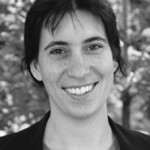
Emily E Brodsky
James Badro, Emily E. Brodsky, and Diane E. Pataki were awarded the 2008 James B. Macelwane Medal at the AGU Fall Meeting Honors Ceremony, held 17 December 2008 in San Francisco, Calif. The medal is for “significant contributions to the geophysical sciences by a young scientist of outstanding ability.”
Citation
It is an honor to introduce Emily Brodsky, recipient of a 2008 AGU James B. Macelwane Medal. Emily has made creative, diverse, and quantitative contributions to our understanding of the physics of earthquake triggering and rupture processes, hydrological responses to earthquakes, explosive volcanic eruptions, and bubble dynamics. Her research has been provocative and profound, challenging colleagues to rethink basic conceptual models. Her academic career has taken her to great institutions such as Harvard, California Institute of Technology, University of Oregon, University of California, Berkeley, University of California, Los Angeles, and currently University of California, Santa Cruz.
Emily is a bold, seemingly fearless scientist willing to tackle tough problems. She takes on major challenges such as determining “what causes earthquakes” with a broadly based approach that cannot be pigeon-holed into any one discipline. She has established an internationally recognized program on the physics of earthquakes and volcanic eruptions, with current emphasis on the processes by which earthquakes initiate and propagate. With strengths in physics and fluid mechanics, expertise in seismological data collection and analysis, and a keen eye for diverse field observations, Emily couples different geological and geophysical processes and analyzes them quantitatively.
Working at the forefront of research on remote triggering of earthquakes and volcanoes by passage of seismic waves from a large event, Emily has obtained part of an answer to the question above: “Earthquakes cause earthquakes.” In other words, the dynamic stress waves from one event can initiate failure of other events. Investigations of this phenomenon have led her to explain groundwater pressure changes caused by shaking from a remote earthquake as the result of flushing of particulate barriers in fractures induced by the pumping action of the seismic vibrations, allowing pore water pressures to change and thereby to trigger earthquakes. Related studies have led to an innovative determination of the evolution of permeability over time based on her observation that earthquake occurrence appears to affect the phase lag between Earth tides and well-pressure changes due to shaking-induced increase in rock permeability.
Emily is among the few to confront the widely held notion that static stress changes are the predominant control on earthquake interactions and triggering. Rigorous assessment of predictions for the static stress model has been pursued, without finding observational support for the attendant prediction of stress shadows. Emily and colleagues argue that the spatial distribution of aftershocks as a function of distance from a main shock varies in proportion to how dynamic stresses decay, rather than how static stresses diminish. These advances raise questions about when an earthquake is better viewed as a foreshock or an aftershock. She is ever willing to go into the field, to participate in deep fault drilling, and to walk the shatter zones of fault outcrops, seeking insights and measurements that help to understand what causes earthquakes.
On the basis of her broad interdisciplinary contributions to our understanding of faulting processes, volcanic eruptions, and hydrologic influences on deformation, Emily Brodsky immediately brings credit to the American Geophysical Union’s Macelwane Medal and will continue to do so long into her future career.
—THORNE LAY, University of California, Santa Cruz
Response
Thank you, Thorne, and thank you, AGU. It is a great honor to receive this medal. One of the greatest privileges of receiving this medal is having the opportunity to thank people publicly. Science, at least for me, is very much a group activity. I could not possibly be here without the people who shared and fostered so many ideas over lunch, coffee, wine, and field trips. These casual and sometimes not so casual conversations have been the core of the creative process, and I thank all of you for making it such a stimulating and enjoyable process thus far.
I owe the greatest intellectual debt to my advisor, Hiroo Kanamori, whose enthusiasm entrained me into studying earthquakes even though I came to graduate school swearing not to do seismology. Your gentle prodding pushed me somewhere fascinating, and I keep wondering how to emulate it as I begin to advise. I have also been lucky in my other mentors, collaborators, office mates, and scientists-next-door who have helped me wander all over the planet and somehow get some science out of it. You’ve always been willing to poke holes in my latest theories and have time for the random questions.
Thank you to my students and postdocs: Karen Felzer, Rebecca Harrington, Kevin Lu, Amir Sagy, Mai-Linh Doan, Heather Savage, Jean Elkhoury, Darcy Ogden, Nicholas Van der Elst, Jake Walter, and Jacqui Gilchrist. You are the reason I get up in the morning. It is your energy and curiosity that make this all worthwhile. Thank you for always pushing forward. Every day we are one day closer to knowing why earthquakes happen.
I would never have gotten started without the encouragement of my parents, who were and are unwavering in their support of learning.
I would like to thank especially my husband, Francis Nimmo, for sharing every day and everything with me, even this medal.
—EMILY BRODSKY, University of California, Santa Cruz
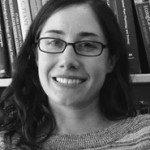
Diane E Pataki
James Badro, Emily E. Brodsky, and Diane E. Pataki were awarded the 2008 James B. Macelwane Medal at the AGU Fall Meeting Honors Ceremony, held 17 December 2008 in San Francisco, Calif. The medal is for “significant contributions to the geophysical sciences by a young scientist of outstanding ability.”
Citation
I am pleased to cite Diane E. Pataki for the 2008 AGU James B. Macelwane Medal. Diane is recognized for her research using stable isotope and flux measurements of plants to explore coupled water and carbon cycles. She is recognized for using this understanding to lead in the study of human-ecosystem interactions, particularly the importance of water, energy, and carbon cycle dynamics in urban systems. Diane’s work has drawn new attention to the importance of including urban ecosystems in the larger efforts to understand global change impacts on the world’s ecosystems and on carbon-water cycles. Her research also highlights the benefits derived from developing bridges and links among physical, biological, and social scientists.
As society faces questions of how to cope with future climate changes, Diane’s efforts and leadership have delivered novel and groundbreaking research that identifies how human-managed ecosystems may store and release carbon, water, and energy. This work also provides a mechanistic understanding of the patterns of energy and fuel use in urban areas that can be used to improve our modeling of fossil fuel emissions, likely the most uncertain term in predictions of future CO2 levels.
In other publications, Diane has contributed significantly to our understanding of how physiological controls influence plant function in nonnative environments. Trees in urban environments, particularly those in the rapidly urbanizing portions of the southwestern and western United States, operate far outside the conditions of their normal habitats. Here differences in fundamental water-loss patterns and responses to changing conditions (for example, water availability) make very clear the importance of physiological controls on plant function. Pataki led a research team that has been able to show consistent differences in transpiration losses from ring-porous versus ring-diffuse tree species. This elegant work links evolutionary biology to plant physiology, and plant function to geographical distribution, and is a new insight with ramifications for how plants will respond to changes in precipitation patterns. This work has been extended to understand what controls observed “woody encroachment” in the Owens Valley of California, another region where human water needs, nutrient availability, and land use interact to alter ecosystems.
Vision and leadership are two skills that Diane has brought to bear on understanding how coupled carbon-water-energy cycles will be affected under climate change, particularly in human-dominated landscapes. Diane’s ability to forge productive collaborations among social, physical, and biological scientists is a key to her success today and a positive indication of the great advances we can expect from her in the future. Receiving the Macelwane Medal is a fitting recognition for Diane, whom I regard as one of the brightest young stars in biogeosciences today.
—JAMES EHLERINGER, University of Utah, Salt Lake City
Response
Thank you very much, Jim, for your kind words, and for all of your inspiration and support.
I sincerely thank AGU for this award. It’s a very great honor to be in the company of those who have received this award before me. The AGU annual meetings have always been a dynamic and receptive environment for discussing new research, and over the past few years it’s been very exciting to participate in the Biogeosciences section as it has grown.
My interest in environmental research started with a group of outstanding educators at Barnard College. We all know that great teachers make all of the difference, and I certainly learned that at Barnard. Peter Bower, Joe Liddicoat, and Helen Young are still my role models for teaching, and every day I spend in the classroom I try to pass along at least a little bit of their inspiration to my own students. I would like to thank my graduate and postgraduate mentors: Ram Oren and many other faculty members at Duke University’s Nicholas School of the Environment; Jim Coleman, now at Rice University; and of course Jim Ehleringer at University of Utah. Their advice and instruction have been and continue to be invaluable.
I was very privileged to work with the talented and enthusiastic scientists who participated in the International Geosphere-Biosphere Programme Global Change and Terrestrial Ecosystem core project, and its leaders Lou Pitelka and Pep Canadell. I sincerely thank all of my colleagues at University of California, Irvine, who have been so supportive of my work, even when I explored areas of interdisciplinary research that might be seen as high risk and sometimes even unorthodox. My students, staff, and postdocs have contributed enormously to all of my research, and I thank them for all of their hard work.
Finally, I gratefully acknowledge my collaborators at University of Utah, University of Kansas, University of California, Los Angeles, NASA, and the U.S. Forest Service. Recently, we lost a very close colleague, Craig Forster, so I want to give special mention to him. Without his dedication and coordination of our interdisciplinary projects together, several of my research contributions would never have happened. Craig is greatly missed by all of his friends and colleagues.
Thank you again for your nomination and for including me in this community.
—DIANE PATAKI, University of California, Irvine
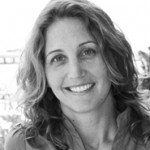
Amy C Clement
Amy C. Clement was awarded the 2007 James B. Macelwane Medal at the AGU Fall Meeting Honors Ceremony, which was held on 12 December 2007 in San Francisco, Calif. The medal is “for significant contributions to the geophysical sciences by a young scientist of outstanding ability.”
Citation
I am pleased and honored to cite Amy Clement for the 2007 James B. Macelwane Medal. Amy’s work has introduced new ways of thinking that altered research strategies; that is, she is an intellectual leader. Not everyone agrees with her ideas, but no paleoclimate scientist ignores them. Amy’s work has been instrumental in changing the way paleoclimatologists think about the tropics and their influence on global climate. The ocean-atmosphere dynamics concepts that she introduced to paleoclimate are now widely used.
Amy’s talk at the 1999 AGU conference “Mechanisms of Millennial-Scale Global Climate Change” showed how the tropical ocean-atmosphere system could react strongly and abruptly to orbital variations. This offered a plausible alternative to the North Atlantic centered view of abrupt—and not so abrupt—climate change. Her work, which draws on a solid understanding of modern climate dynamics, complements her willingness to work with a broad variety of paleoclimate archives and the scientists who produce them. Amy thus links the paleoclimate community with the modern climate dynamicists. The breadth of her scientific understanding is an essential ingredient in her ability to be scientifically persuasive in challenging old paradigms without being argumentative.
In the past decade there has been a dramatic expansion in paleo-ENSO studies. The modeling study of Clement et al. [Paleoceanography, 2000] provided an explanation of how the changes in orbital configuration would affect the coupled ocean-atmosphere dynamics in the tropical Pacific. This paper proposed that though ENSO did not shut down during the Holocene, the cycle was weaker in the early Holocene. This “prediction,” which prompted a new interpretation of the Ecuadorian lake record of Rodbell et al. [Science, 1997], was soon verified by an analysis of fossil corals from New Guinea [Tudhope et al., Science, 2001]. Paleoproxy data published since then are all consistent with this picture.
In other publications Amy has extended these concepts and also addressed a number of other paleoclimate questions, including orbital impacts on the Hadley circulation and the relationship between tropical variations and the thermohaline circulation. She has also addressed a number of important questions about modern climate, including the mean tropical radiation budget [Clement and Soden, 2005], recent changes in the strength of the Hadley cell [Mitas and Clement, 2006], and the reasons for the existence and shape of the tropical warm pool [Clement et al., 2005].
When things go wrong, the ordinary scientist retreats to safe ground while the excellent one turns the problem into unexpectedly deep results. Amy has time and again turned an apparent dead end into something of value. The work she did on tropical thermostats is a prime example: She took a wrong idea of mine and was “lucky” enough to extract something interesting from it. Amy has consistently worked on problems that matter, a reflection of her precocious intellectual maturity and scientific judgment. This Macelwane Medal is fitting recognition of a splendid beginning; I am sure there is much more to come.
—MARK A. CANE, Lamont-Doherty Earth Observatory, Palisades, N. Y.
Response
Thank you, Mark. There is a lot of talk these days about mentoring, and I have not seen a finer example than Mark’s. He has figured out the perfect balance between being “hands-off” and coming in at key moments to say when “just fine” is not good enough. Thank you.
I have been fortunate to be inspired by great minds in two different disciplines: modern climate dynamics and geochemistry. This interaction is almost impossible to avoid at Lamont, where Mark, Wally Broecker, and the Lamont community have created an academic culture that is truly cross-disciplinary. I want to thank my colleagues and friends who have influenced me through their own great accomplishments: Richard Seager, Yochanan Kushnir, Steve Zebiak, Alex Hall. I think of my days at Lamont working with these people as some of the most exciting in my career.
My colleagues at the Rosenstiel School have provided an environment in which I am surrounded by a rich diversity of research on many aspects of climate change: marine ecosystems, agricultural applications, tropical meteorology. I have benefited greatly from exposure to these different areas and look forward to learning more from my colleagues in the future. The support I have received there is unlike any other. Otis Brown, Rana Fine, Bill Johns, Larry Peterson, Claes Rooth, and Brian Soden, among others, have provided intellectual and personal mentoring for which I am extremely grateful.
Finally, I want to thank my family. My parents, John and Mickey Clement, have encouraged my various scientific inquiries from a very young age, and more important, they had the highest expectations for all of their children, under which we have all thrived in different ways. I want to thank my mother-in-law, Marlene Broad, for helping to make it possible for me to be a scientist and a mother. And I thank my husband, Kenny Broad, for always reminding me of what I should (and should not) take seriously, and for our two sons, Jasper and Lincoln. I know my work is appreciated by them at home because Jasper tells me that in addition to this medal, I will also be receiving one toy from his room for being a good scientist.
It is wonderful that the issue of climate change has gotten so much attention lately. I am thrilled to be a part of this field at such an exciting time. To be plainly honest, though, what mainly motivates me is simply that I find this work so much fun. I am honored to receive this medal, and especially for doing something that I enjoy so much. Thank you.
—AMY C. CLEMENT, University of Miami, Fla.
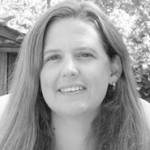
Jeanne Hardebeck
Jeanne Hardebeck was awarded the 2007 James B. Macelwane Medal at the AGU Fall Meeting Honors Ceremony, which was held on 12 December 2007 in San Francisco, Calif. The medal is “for significant contributions to the geophysical sciences by a young scientist of outstanding ability.”
Citation
It is an honor to present the citation for Jeanne L. Hardebeck’s James B. Macelwane Medal, just as it is my privilege to work with her at the U.S. Geological Survey. Jeanne’s success is readily apparent in her research, in the leadership she has displayed after significant earthquakes, in her becoming an associate editor of Bulletin of the Seismological Society of America only a year after receiving her Ph.D., and in her receiving the Richter Early Career Award from the Seismological Society of America earlier this year. But what is it about her that we can emulate? The efficiency of her computer skills is stunning; it can be baffling to watch over her shoulder as she works. But that isn’t the key to her success, and, without her bachelor’s degree in computer science from Cornell, I’m not sure we can do it anyway. She has immersed herself in major controversial topics since she became a graduate student at Caltech: the orientation of stress throughout the San Andreas Fault system, the strength of faults, and earthquake interactions. But taking on major problems is not enough.
Fortunately, Jeanne unintentionally provided me with a succinct summary of why she is so successful. During a conversation in her office, she said, “I don’t need to be right.”
Having worked closely with Jeanne on the stress controversy, these words surprised me not one bit. Over the years, I have never heard Jeanne utter a single biased phrase. Instead, her comments are always tied to data. And her words are mirrored by her research, which builds from the analysis of raw seismograms, to the determination of focal mechanisms—the method she developed with Peter Shearer while a postdoc at Scripps wonderfully encapsulates the approach and wisdom of Jerry Eaton—and on to new methods for inferring the state of stress, all of which lead to comprehensive discussions of seismogenic processes.
And she does it with great modesty and an unassuming nature. But do not mistake her gentleness for weakness. In another conversation, I took a misstep and Jeanne quickly and emphatically demonstrated the errors of my ways by presenting several reasons in a logical progression. Modesty and strength coexist because the foundation is the data.
Her approach is not new, not even to those who study the San Andreas Fault at the USGS; consider this description of G. K. Gilbert:
“It was his habit in presenting a conclusion to expose it as a ball might be placed on the outstretched hand—not gripped as if to prevent its fall, not grasped as if to hurl it at an objector, but poised on the open palm, free to roll off if any breath of disturbing evidence should displace it; yet there it would rest in satisfied stability. Not he, but the facts that he marshaled, clamored for the acceptance of the explanation that he had found for them.”
Or as Jeanne more succinctly put it, “I don’t need to be right.” That attitude has allowed Jeanne to be right so many times, makes her a joy to work with, and has certainly made her worthy of this medal.
—ANDREW MICHAEL, U.S. Geological Survey, Menlo Park, Calif.
Response
Thank you, Andy, for those kind words. They are particularly meaningful coming from you, because of how much I have learned from you about the importance of honoring the data, in particular the value of statistics in separating real patterns in the data from apparent patterns created by the human brain.
It is an honor to receive the Macelwane Medal. Many people have contributed to my success, and to my enjoyment of geo-physics, through what they have taught me, through their support and guidance, and through their friendship. I have time to thank just a few: Egill Hauksson and Hiroo Kanamori of Caltech, Peter Shearer of Scripps, and Andy Michael, Ruth Harris, Tom Hanks, and Bill Ellsworth of the USGS.
That I have a career in geophysics at all is because people believed in me, even when it was far from obvious that I would be successful. I had a bachelor’s degree in computer science and had worked briefly at a start-up, when I decided to make a drastic career change and become a seismologist. My deepest thanks go to my parents, Ellen and Harry Hardebeck, for supporting me through the process of rethinking what I wanted to do with my life. I am also tremendously grateful to the fa-culty of the Caltech Seismo Lab for taking a chance and admitting a grad student with almost no geophysics background, and I am especially grateful to Egill Hauksson for taking me on as his student.
The Caltech Seismo Lab was an exciting environment to learn all the geophysics I had missed, and also how to think crea-tively about scientific problems. The twice-daily coffee hours were often lively debates or brainstorming sessions where grad students could jump right in along with some of the biggest names in geophysics.
Working on my thesis with Egill Hauksson, and later as a postdoc with Peter Shearer, I learned that interesting science comes from getting the right balance between creative thinking and thorough analysis of observations. Too far one way and one is writing science fiction; too far the other way and one is no longer moving the field forward. Or, to paraphrase Don Anderson paraphrasing Richard Feynman, the value of a project is equal to the importance of the problem multiplied by how much you can actually do about it. Working at the USGS, I have learned that there is another factor in that equation: how valuable your science is to society. It’s a pleasure to work with colleagues who are dedicated to making a positive impact on society through research and public outreach, without forgetting that science serves another important role in society, as a way to try to make sense of our world and our relationship to it.
Finally, I wish to thank the entire geophysics community for providing a supportive and cooperative research environment. Is it indeed an honor to be recognized by such an outstanding community.
—JEANNE HARDEBECK, U.S. Geological Survey, Menlo Park, Calif.
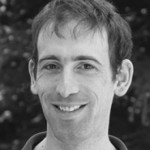
Francis Nimmo
Francis Nimmo was awarded the 2007 James B. Macelwane Medal at the AGU Fall Meeting Honors Ceremony, which was held on 12 December 2007 in San Francisco, Calif. The medal is “for significant contributions to the geophysical sciences by a young scientist of outstanding ability.”
Citation
Francis is an outstanding planetary scientist. He has contributed to the interpretation and modeling of a remarkably wide range of solid bodies, both rocky and icy. His work is characterized by a deep appreciation of the physical processes that control the evolution and appearance of planetary bodies, and a highly developed ability to respond quickly to the remarkable recent flow of spacecraft data about our solar system, perform relevant calculations, and make balanced judgments of competing hypotheses. The strength of his effort and merit for the James B. Macelwane Medal lies in the cumulative impact of his work. The pace and diversity of significant contributions for the past 3 or so years are particularly outstanding. At the risk of naming every solid body in the solar system above a certain size, important contributions have been made to our understanding of Mercury, Venus, Earth, Mars, Europa, Ganymede, Enceladus, and Triton. He has even gotten involved in the interpretation of isotope systematics and their application to our understanding of planetary accretion. I expect I have left something out.
Francis is English; he began his research career with a Ph.D. at University of Cambridge, working with Dan McKenzie on the tectonics of Venus. He subsequently spent some time at California Institute of Technology, at University College London, and at University of California, Los Angeles; he is now well established at UC Santa Cruz. In this career path, he has moved steadily away from collaborations that were mainly with much more senior scientists to diverse collaborations with a large number of scientists, many of whom are more junior, including students. Very briefly, these efforts have included an innovative analysis of the deformation of viscoelastic shells on icy bodies with application to the different kinds of features seen on the surface of Europa and Ganymede; an assessment of the possible role of 40K in the thermal history of Earth’s core, motivated by a possible shortfall in energy sources needed to sustain the geodynamo over geologic time; quantitative models of crustal evolution on Mars and Mercury; and a well-argued case for true polar wander on Enceladus. This work on Enceladus shows many of the abilities that Francis has: the bringing together of several physical ideas (models of ice upwellings, deformation of the brittle layer, resulting true polar wander), a concise and technically outstanding quantitative analysis, and an effective collaboration.
One would not normally expect to see a single scientist develop so many collaborative efforts in such a short time. These collaborations make sense and are a wonderful way to have a large impact in planetary science. His breadth is also expressed in review papers, where Francis shows a well-developed appreciation of the contributions in so many areas.
There are usually more people deserving of the Macelwane Medal than the number awarded. An additional consideration is the impact that the awardee is likely to have in the future. In this respect, Francis is particularly outstanding in the promise that he holds, and I look forward to his future efforts.
—DAVE STEVENSON, California Institute of Technology, Pasadena
Response
Thank you, Dave, and thanks also to AGU and the committee for this unexpected honor, and to my nominators for their support. The list of previous winners, and what they went on to achieve, is frankly intimidating; in my view, this award really recognizes the extraordinary scientific advances made by spacecraft missions in the past decade. Observational constraints in planetary science are usually sparse and disparate, so that unselfish collaboration in research is not so much a choice as a necessity. Even so, my collaborators have been exceptionally generous with their time, data, and talents. Essentially none of my work would have been possible without their help, so I regret having to thank them collectively, rather than individually; they know who they are, though. I have also been exceptionally lucky with my graduate and postdoctoral advisors, Dan McKenzie and Dave Stevenson. They were both always available to dispense sage advice, scientific and otherwise, and were willing to share their opinions on absolutely anything. Now that I am advising students, I appreciate their mentoring skills much more than I did at the time. A final, but very important, person to thank is Professor Emily Brodsky, my wife. She was willing to move institutions, and disrupt her own research program, in order to give mine a chance to get started. I am, and continue to be, extremely grateful, and cannot imagine a better person to share my life with. The organization most central to my work is NASA, 50 years old in 2008 and an outstanding example of AGU’s principles. Not only are NASA data made freely available worldwide, but also NASA allows foreign scientists to take part in spacecraft missions. The only reason I am doing planetary science today is because Dan was a team member on the Magellan mission. One lecture on Venus was enough to convince me that planetary science was much more exciting than any terrestrial topic (even dinosaurs). Two other organizations that greatly helped my early career were Magdalene College, Cambridge and the Royal Society. Both provided research support with almost no strings attached, and were willing to let me spend significant amounts of time in the United States. More recently, my colleagues at University of California, Santa Cruz have been both very welcoming and a source of great intellectual support. Because planetary science is often data-limited, one has great freedom in developing theories, while the time-scales of spacecraft missions mean that it is often the next generation that will prove you wrong! More seriously, the expansion of our knowledge of this, and now other, planetary systems in the past half century has been truly breathtaking, and I hope it will continue in the next. Thank you once again.
—FRANCIS NIMMO, University of California, Santa Cruz
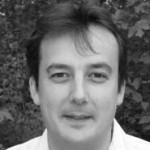
Daniel J Frost
Daniel J. Frost received the James B. Macelwane Medal at the AGU Fall Meeting honors ceremony, which was held on 13 December 2006 in San Francisco, Calif. The medal is given for significant contributions to the geophysical sciences by an outstanding young scientist.
Citation
It is a very great honor to present my good friend and colleague, Dan Frost, one of the three recipients of the James B. Macelwane Medal in 2006. Dan is first and foremost an experimental petrologist who studies problems relating to the mineralogy, petrology, structure, and evolution of the Earth’s mantle and core. He got off to an excellent start during his Ph.D. by studying H2O-CO2 fluids under mantle conditions at the University of Bristol, U.K., under the supervision of Bernie Wood. He then moved to the Geophysical Laboratory at the Carnegie Institution, Washington, D.C., for 1 year where he greatly expanded his experience by studying the stability and equations of state of hydrous mantle minerals using a broad range of high-pressure experimental techniques. He has been at the Bayerisches Geoinstitut, University of Bayreuth, Germany, since 1997 and is a staff scientist responsible for pursuing research, supervising and developing the high-pressure multianvil laboratories, and collaborating with a large number of external users of this facility.
Over the past few years, Dan has contributed to the understanding of a wide range of geophysical issues, including the width and mineralogical structure of mantle discontinuities, the cycling of water in the Earth’s interior, the mineralogy and properties of the lower mantle, early differentiation of the Earth including core formation and magma ocean crystallization, and the composition (light element content) of the outer core. As an example, in one of his most important contributions he showed that a very small amount of metallic iron must coexist with silicate perovskite in the Earth’s lower mantle. The explanation for this phenomenon is the dissociation of ferrous iron to amixture of ferric iron plus metallic iron at high pressure due to the crystal chemistry of silicate perovskite. His contribution provides elegant explanations for the oxidized nature of the Earth’s upper mantle and why the mantle became oxidized during or after formation of the Earth’s core. There may also be implications for the composition of the atmosphere, although these have yet to be explored.
Dan’s scientific productivity has been extraordinary in recent years, with numerous published papers, including four in the journals Science and Nature in the period 2004–2005. This productivity can be attributed to a number of factors. First, he processes the ability to identify major problems that are of broad interest to solid-Earth geophysicists. Second, he is not only an extraordinarily careful and innovative experimentalist but he also has the ability to develop sophisticated thermodynamic models in order to interpret and extrapolate experimental data on a sound basis. Third, his outgoing and sociable personality has enabled him to develop numerous productive collaborations with scientific colleagues from all over the world, including in the United States, Japan, United Kingdom, France, Austria, and Italy.
Dan is still at an early stage of his career, and I anticipate that the future will have much to offer in terms of his scientific contributions. In the meantime, I am thoroughly delighted that he is one of the recipients of the 2006 Macelwane Medal in recognition of his scientific leadership, creativity, and enthusiasm.
—DAVID RUBIE, Bayerisches Geoinstitut, University of Bayreuth, Germany
Response
Thank you, David, for such a kind citation, and thanks to the James B. Macelwane Medal committee and those who wrote supporting letters for their time and consideration. A medal always has two sides, as they say in Germany. On the one hand, it is a really special honor for me to be recognized by such a diverse and eminent organization as AGU. On the other hand, considering the roll call of previous medal winners, one is immediately struck by the great responsibility of in the future not appearing the odd one out on this list.
I am quite sure that I would not be receiving this medal if I had not chosen to do a Ph.D. with Bernie Wood, in Bristol. At the time I was not equipped with the knowledge to make such a good decision, so I consider this to have been pure good luck. I became hooked on doing high-pressure experiments while in Bristol, mainly, I think, because Bernie conveys that sense of excitement and satisfaction from learning something new from an experiment. This is definitely what makes experimental science so much fun for me, and it is such a bonus that I can do it for a living. An experimental habit is quite expensive, however, and I was very fortunate to be able to hone my skills by working subsequently with Yingwei Fei at the Geophysical Laboratory. There is a large amount of what is probably best described as tricks in high-pressure experiments, and Fei is a master of them and passes them on so generously.
It has been a real privilege to spend the past 8 years at the Bayerisches Geoinstitut. In Bayreuth I have learned so much through collaborations with Joe Smith, Steve Jacobson, Reidar Tronnes, and Falko Langenhorst, to name but a few. The word limit here prohibits me from naming all the collaborators and friends who have made my life in Bayreuth so fulfilling and productive over the past 8 years, but I must also mention Christian Liebske, Tiziana Boffa-Ballaran, and Jürgen Konzett. The steady flux of postdocs and other visiting scientists who pass through Bayreuth really ensures that it remains a vibrant and exciting place. The only downside is that over time you see so many friends move on. What has remained constant from the beginning, however, has been the guidance and friendship of David Rubie, who has been always been so generous with his support. I also recognize that the multianvil laboratory would be just a heavy rusting heap without the financial support of the Bavarian State, the DFG, and the European Union Research Infrastructure program.
It is hard sometimes for my wife, Barbara, and our family to understand why my work is so important for me, so it is great to have something tangible to show them as evidence that their support and patience over the past years were at least to some extent worthwhile.
—DANIEL J. FROST, Bayerisches Geoinstitut, University of Bayreuth, Germany
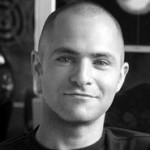
Jerry Goldstein
Jerry Goldstein received the James B. Macelwane Medal at the AGU Fall Meeting honors ceremony, which was held on 13 December 2006 in San Francisco, Calif. The medal is given for significant contributions to the geophysical sciences by an outstanding young scientist.
Citation
Jerry Goldstein is one of the most exciting young researchers in space physics today, and his work has significantly advanced understanding of the Earth’s magnetosphere. In particular, Jerry is widely recognized as the leading authority on the structure and dynamics of the Earth’s plasmasphere, the region of cold plasma of ionospheric origin that is trapped in the inner portion of the magnetosphere.
The foundation for his innovative work on the plasmasphere began at Dartmouth College (Hanover, N.H.), where, under the guidance of Mary Hudson, he performed his thesis research on global oscillations of the geomagnetic field driven by sudden increases in the dynamic pressure of the solar wind. This research provided important observational constraints on the mechanisms by which cold ionospheric plasma fills magnetospheric flux tubes, ultimately forming the plasmasphere.
After Dartmouth, Jerry began a postdoc at Rice University (Houston, Tex.) just as the IMAGE spacecraft was beginning to return the first-ever global images of the inner magnetosphere, including extreme ultraviolet images of the helium component of the plasmasphere. Among the several new discoveries made possible by global imaging was the existence of a distinct plasmaspheric ‘shoulder’ that forms in the early morning sector during magnetic storms and then corotates with the Earth. Jerry, working with Dick Wolf and others at Rice, used the Rice Magnetospheric Specification Model to demonstrate how such shoulders form in response to northward turnings of the interplanetary magnetic field. Until this result was obtained, the plasmapause was generally thought to lie too far inside the magnetosphere to be affected so directly by solar wind conditions.
In 2002, Jerry moved from Rice to the Southwest Research Institute, in San Antonio, Tex., where he is now a principal scientist in the Space Science and Engineering Division. Since that time he has published 37 definitive papers on various aspects of plasmaspheric structure and dynamics and on the interaction between the plasmasphere and other regions. Especially noteworthy is his discovery of the relationship between fast flowing plasma streams in the subauroral ionosphere and the formation and evolution of plasmaspheric drainage plumes during geomagnetic storms. His collaborations with John Foster (Massachusetts Institute of Technology) and Dan Baker (University of Colorado) led to the discoveries of the effect of storm-time plume formation on ionospheric total electron content and of the spatial relationship between the outer radiation belt electrons and the plasmapause, respectively. These latter two accomplishments have important implications for our effort to predict space weather and to mitigate its effects on our communications and navigation systems.
Jerry’s talents and contributions are well appreciated by his colleagues, and he is a frequently invited speaker at national and international meetings. He is one of the most active and influential participants in the NSF-Geospace Environment Modeling program, which aims to create linked, physics-based models to describe and predict the dynamic space environment, from the Sun to the atmosphere. He is generous with his time, insightful in his contributions, and unflaggingly curious about how all the pieces of the solar-terrestrial puzzle fit together. Jerry possesses a remarkable facility in data analysis and modeling and has an uncanny ability to absorb and synthesize disparate concepts and observations into compelling insights that result in scientific breakthroughs. These qualities, along with his infectious enthusiasm, make him a scientific leader in our field today, with great promise for tomorrow.
—JAMES L. BURCH, Southwest Research Institute, San Antonio, Tex.
Response
I thank Jim Burch for his very generous citation, and I extend gratitude to my nominating committee (Michelle Thomsen, Dick Wolf, Mary Hudson, Pat Reiff, and Bill Sandel) and to AGU for generously endorsing my nomination.
I am honored, touched, and thrilled to receive the James B. Macelwane Medal. It seems strange to be singled out for recognition, given that any achievements of mine would never have been possible without the many teachers, mentors, and friends who have helped me along every step of the way. As a student, I was very fortunate to work under the guidance of researchers who are both brilliant and kind: first, my undergraduate advisor, Peter Lesser, at Brooklyn College (New York), and then my Ph.D. advisor, Mary Hudson, at Dartmouth College (Hanover, N.H.). As a postdoc it was my privilege to be hired by Pat Reiff and Tom Hill to work with the extraordinary group at Rice University (Houston, Tex.).
My good fortune continues to this day: collaborating with Southwest Research Institute colleagues (including Jim Burch, Dave McComas, Bill Lewis, and Phil Valek) and many, many others in the community (Maria Spasojevic, Pontus Brandt, Michelle Thomsen, Dennis Gallagher, Stephen Mende, John Foster, Dan Baker,Stephen Fuselier, Richard Denton, Mike Liemohn, Bob Spiro, and Joe Perez, to name just a few) has demonstrated to me the essential contribution of peers to an enduring and fulfilling career in science.
I am deeply grateful to the many outstanding members of our community who have been exceptionally generous with their time, their data, and their knowledge. As a younger scientist I am indebted to the real trailblazers of our field, having relied heavily upon decades of research by pioneers such as Don Carpenter and Dick Wolf, and having taken advantage of the new data and new mission opportunities provided by innovators such as Bill Sandel and Jim Burch. I do not feel as though I have discovered anything new as much as benefited from the wisdom and accomplishments of these far more experienced and talented people.
One of the things I enjoy most about our community is that we value more than anything else the quality of ideas. In science, the message supersedes the messenger, and we all have equal voices and equal opportunities. This attitude has fostered in our field a culture of openness and acceptance that is to me quite precious, on both a professional and personal level. After many years of working side by side with so many excellent scientists, conferences feel not as much like professional occasions as they do family reunions. I have had the rare opportunity to travel all over the world to meet new colleagues and make new friends. I have learned just how much our community values honesty, integrity, humor, and partnership in the search for truth. Indeed I am grateful to be recognized and accepted by such a distinguished group. Thank you very much indeed for this great honor.
—JERRY GOLDSTEIN, Southwest Research Institute, San Antonio, Tex.
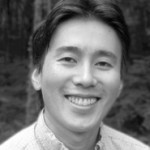
Jun Korenaga
Jun Korenaga received the James B. Macelwane Medal at the AGU Fall Meeting honors ceremony, which was held on 13 December 2006 in San Francisco, Calif. The medal is given for significant contributions to the geophysical sciences by an outstanding young scientist.
Citation
In a 1964 Science essay, “Strong inference,” the biophysicist John Platt elucidated how “certain systematic methods of scientific thinking may produce much more rapid progress than others.” Strong scientists entertain multiple hypotheses, as Thomas Chamberlin advised; they produce predictive models that can be tested and rejected, as Karl Popper required; and they filter out false hypotheses using diagnostic data, as Louis Pasteur so brilliantly demonstrated.
Jun Korenaga has shown how a young scientist can deliberately equip himself to make strong inferences about the solid Earth. As a Ph.D. student in the Woods Hole Oceanographic Institution-Massachusetts Institute of Technology (MIT) Joint Program, he was marvelously ambitious. Not content with a standard thesis project, he conceived an entire research program, for which he recruited not just one or two, but three, advisors—Steve Holbrook, Peter Kelemen, and myself. The problem he chose was the creation of the North Atlantic igneous province during the early Tertiary rifting of Greenland from Europe.
In 1996, he went to sea with Steve on the SIGMA expedition, collecting reflection and refraction data across the southeast Greenland continental margin. He interpreted this rich data set using novel inversion schemes of his own formulation. His results indicated that the thickened basaltic crust was produced by melting at relatively low temperature, at odds with the popular plume-head hypothesis.
With Peter, he considered basalt petrogenesis in more detail. They demonstrated that the trace-element signatures of high-magnesium basalts erupted since the opening of the North Atlantic, when corrected for olivine fractionation and combined with isotopic data, require long-lived major-element heterogeneity in the mantle source. Jun has since shown that this heterogeneity can be explained by subducted oceanic crust buoyantly trapped in the midmantle transition zone and subsequently entrained in the active convection caused by continental breakup.
Numerical modeling of this breakup process constituted the third component of Jun’s thesis. He was able to show how thick cratonic lithosphere can modulate small-scale convection in the upper mantle without reducing convective strength, and he used this mechanism to explain the excess magmatism during North Atlantic rifting.
Jun made rapid progress in numerical studies of convection during his postdocs at MIT and the University of California, Berkeley, deriving new scaling relations for the onset and breakdown of small-scale convection that properly account for the strong temperature and depth dependence of upper-mantle viscosity. These investigations elucidated upper-mantle convection beneath large ocean basins and set the stage for important papers on the structure of mantle plumes, the origin of the Ontong Java Plateau, and a radical reexamination of Earth’s thermal history.
In two influential papers, he explored how the compositional differentiation of oceanic mantle affected convection in the geologic past. Working backward from the present-day system, he argued that hotter mantle results in more sluggish plate tectonics. This unexpected inverse relationship between mantle temperature and heat flux has allowed him to erect a simple model that simultaneously satisfies geochemical constraints on the (low) abundance of heat-producing elements, petrological constraints on the (low) degree of secular cooling, and seismological constraints on the (low) degree of mantle stratification. John Platt, as well as William of Occam, would be pleased with this compelling synthesis.
The conclusions Jun has drawn about Earth’s thermal history are as controversial as they are profound, and it may take a while to know whether he has cut the Gordian knot. But the span of his research and the keenness of his insights illustrate what strong inference is all about. It is very fitting, therefore, that the AGU has awarded Jun Korenaga its 2006 James B. Macelwane Medal for his contributions to the fundamental understanding of mantle dynamics.
—THOMAS H. JORDON, University of Southern California, Los Angeles
Response
Thank you, Tom, for those very kind words. I feel very honored to have been selected for the James B. Macelwane Medal, and I appreciate this opportunity to express my gratitude to my mentors. I first became interested in studying Earth history when I took a course taught by Professor Minoru Ozima, at the University of Tokyo. In retrospect, this starting point is appropriate for my somewhat multidisciplinary style, because his course was called Introduction to Geophysics, but what he actually taught was almost entirely geochemistry.
I have been very fortunate to meet the right people at the right times, and it all seems to happen by accident. When I was a masters student in Japan, I happened to be stuck on a U.S. vessel for about half a year and sailed with Ken Macdonald, Tanya Atwater, Don Forsyth, Dick Hey, and Dave Naar. There I met a few brilliant graduate students like Dan Scheirer, Chaz Weiland, and Yang Shen, and I thought it worth the pain of studying abroad if I could become like them. My advisor, Professor Kensaku Tamaki, generously encouraged me to pursue my enthusiasm.
My life at the Woods Hole Oceanographic Institution and the Massachusetts Institute of Technology (MIT; Cambridge, Mass.) was much more than I expected. As Tom mentioned, I had three supervisors, but my original plan was to work just with Steve. Studying marine seismology was my primary objective, and Woods Hole was a paradise with Bob Detrick, Graham Kent, Ralph Stephen, John Colins, and Dan Lizarralde. But I had to do a second project for my qualifying, and Steve told me his fellow geologist had a nice small project even a geophysics student could easily do. Although it was anything but easy, this project with Peter on the Oman ophiolite turned out to be the most rewarding experience, which forever changed the way I think about science. Working with Peter opened my eyes not only to petrology but also to geodynamics, and Ken Koga, Nobu Shimizu, Henry Dick, Jack Whitehead, and Greg Hirth were always there to help me out.
In the middle of my Ph.D., Steve decided to leave for the University of Wyoming, and I had to find a new supervisor. Rafi Katzman suggested I ask Tom, and I could not thank him more for this wild idea. Tom was a very busy man, and I could see him only twice a year or so, but every meeting was inspirational, with a lifetime supply of fundamental issues yet to be addressed. From him, I learned how to see through superficial complexities and formulate a problem in the purest form. I was also lucky to get to know Shijie Zhong, who happened to be at MIT when I started to work on computational fluid mechanics.
I went to California for a postdoc and had a great time at the University of California, Berkeley interacting with Mark Bukowinski, Michael Manga, Mark Jellinek, and Raymond Jeanloz. Weekly gatherings at the Miller Institute had a unique atmosphere, in which I was compelled to revive my old interest and ponder some nagging issues in the thermal and chemical evolution of Earth.
I am grateful for my mentors, who let me try whatever I wanted to, so I encourage younger generations to be ambitious and expand your horizons, as Earth sciences have so much to offer. Studying such an integrated object like Earth requires more than a collection of specialists.
Now I am at Yale University (New Haven, Conn.), surrounded by interesting characters such as Shun Karato, Dave Bercovici, Jeff Park, Dave Evans, Mark Brandon, John Wettlaufer, Jay Ague, George Veronis, and Karl Turekian. My special thanks go to Shun, who nominated me for this medal. As a geodynamicist, it has been a tremendous privilege to work with the world’s best expert on mantle rheology. I would also like to thank Dave Stevenson, Claude Jaupart, and Slava Solomatov for supporting letters. It is an honor to be recognized by those I truly respect.
Last and most important, I thank my wife, Tomoko, who understands all of my dreams and ambitions and knows how to cheer me up in the most difficult times. Thank you.
—JUN KORENAGA, Yale University, New Haven, Conn.
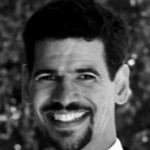
Paul D Asimow
Paul Asimow received the James B. Macelwane Medal at the AGU Fall Meeting Honors Ceremony, which was held on 7 December 2005 in San Francisco, Calif. The medal is given for significant contributions to the geophysical sciences by a young scientist of outstanding ability.
Citation
It is my great pleasure to present my friend and colleague, Paul Asimow, recipient of one of this year’s three James B. Macelwane Medals. Paul is a petrologist interested in the origins and evolution of basaltic magmas, and he is being recognized for a series of profoundly insightful papers on the energetics of decompression melting and how it controls the compositions of the oceanic crust and upper mantle.
The significance of what Paul has done comes from the simplicity of the question that first inspired him: How should we describe the way the mantle melts as it upwells during convection? The importance of the problem is obvious; this is how the Earth makes most of its crust, and so it is the starting point for most of geology. But does it sound like something we already understand? Wasn’t I taught this as an undergraduate? Paul’s first and perhaps most important contribution was to recognize, as a second-year graduate student working with Ed Stolper [California Institute of Technology (Caltech), Pasadena], that the explanation of mantle melting we were telling each other was a Rube Goldberg device masquerading as physical theory.
Paul started solving this problem by stripping the issue to its essentials—an analysis of the energetics of decompression melting of the simplest imaginable chemical system. He began his analysis by identifying the thermodynamic quantities that are conserved during decompression, defining the thermodynamic coordinates in which decompressing systems should be considered, and sorting out the behaviors of solid-state and melting reactions in those coordinate systems. Actually, it is even harder than it sounds. I’m glad there is no question period after this presentation. Paul then added layers of complexity until these principles could be shown to apply to natural systems. I was a postdoc at Caltech during these years and so could look over Paul’s shoulders while he laid these foundations. Unfortunately, all I remember clearly is the uncomfortable feeling of coming to work knowing the person next to me would spend the day recreating the theoretical underpinnings of my field.
During the transition from the end of his graduate studies to a postdoctoral fellowship at Lamont-Doherty [Columbia University, Palisades, N.Y.], Paul went on to show how one could combine his thermodynamic analysis with a quantitative algorithm that incorporates experimental and natural chemical data so that the principles he had revealed could be put to work on practical problems. Collaboration between Paul, Mark Ghiorso [OFM Research Inc., Redmond, Wash.]—creator of the ‘MELTs’ algorithm—and Mark Hirschmann [University of Minnesota, Minneapolis] was key to this work.
Finally, in the years after Paul’s return to Caltech as a professor, he illustrated the power of his analysis by using it to interpret the compositions of peridotites and mid-ocean ridge basalts. Highlights include a reconciliation of apparent inconsistencies in the chemical and mineralogical properties of mantle peridotites, and an explanation of the relationship between the abundance of hydrogen in the upper mantle, the abundances of minor elements in mantle melts, and the differentiation of those melts to create erupted lavas. Paul has subsequently grown several new appendages in the form of field programs and experimental labs, turning him into a sort of petrologic Vishnu.
In summary, the Macelwane Medal is a fitting recognition of Paul’s intellectual leadership and creativity, and I’m sure you will find him a deserving and articulate recipient. Ladies and gentlemen, I give you Paul Asimow.
—JOHN EILER, California Institute of Technology, Pasadena
Response
Thank you, John, and thank you also to the AGU and to the Macelwane Medal committee for this recognition.
At some level I find it quite surprising to be recognized by a geophysical society because I don’t consider myself a geophysicist. However, this apparent curiosity in fact reflects quite well, I think, on the breadth of scientific endeavor that AGU has grown to encompass and on the interactions among disciplines that have resulted.
I began my work on mantle melting as a petrologist, seeking to explain something about rocks, namely, the variations in basalt composition among different mid-ocean ridges. I soon found that I needed the tools of geochemistry in order to bring rigor to the analysis and to make quantitative statements derived from conservation of mass and energy. Then, because melting at mid-ocean ridges affects phenomena ranging from oceanic crustal structure to mantle rheology and beyond, I found my work could be used to constrain a number of geophysical questions. Finally, when I had an opportunity to go to sea and collect samples from the field, I would say I began to qualify as a geologist as well. If this award helps to bring my work on mantle melting to the attention of a broader range of disciplines within geophysics, then it will contribute to an aspect of AGU’s mission much more important than the recognition of individuals and the wearing of tuxedos.
I have previously recognized the intellectual debts I owe to J. W. Gibbs, John Verhoogen, Dan McKenzie, Ian Carmichael, Mark Ghiorso, and Marc Hirschmann. I also want to acknowledge important ideas I have picked up from Charlie Langmuir, who with Emily Klein gave us a sound theory for connecting the chemical and physical variables of mid-ocean ridges; Henry Dick for his tireless and nearly thankless work on abyssal peridotites and their significance in understanding mantle melting; Peter Kelemen and Marc Spiegelman for blazing numerous petrological and fluid dynamical paths that I have felt compelled to retread; and Richard Sack for his incomprehensible yet essential solid solution models.
I also want to thank a number of mentors and collaborators for their faith in me and the time and resources they have committed to my success: James B. Thompson Jr., John Wood, Dave Stevenson, and especially my incomparable thesis advisor, Ed Stolper; Charlie Langmuir, Dave Walker, and John Longhi for hosting my postdoctoral respite at Lamont-Doherty Earth Observatory with yet another set of free reins; Ed Stolper again and the rest of the Caltech Geological and Planetary Science faculty for breaking their own rule against hiring their own students to take me back; my colleagues junior and senior for numerous collaborations, especially John Eiler, George Rossman, and Tom Ahrens; my right-hand man Jed Mosenfelder and my graduate students and postdocs for getting things done despite my lax management; and my wife, Colette, and my sons, Lev and Dante, for helping me keep my balance and find the time for science, life, love, work, and play.
—PAUL ASIMOW, California Institute of Technology, Pasadena
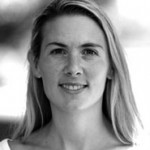
Hope Jahren
A. Hope Jahren received the James B. Macelwane Medal at the AGU Fall Meeting Honors Ceremony, which was held on 7 December 2005 in San Francisco, Calif. The medal is given for significant contributions to the geophysical sciences by a young scientist of outstanding ability.
Citation
It is a great honor to introduce A. Hope Jahren as a recipient of this distinguished award. Hope is an exceptional young scientist who has established an international reputation as a leader in the new field of geobiology. By integrating sophisticated biological techniques and concepts into geological inquiry, Hope is making forefront advances that are en route to a reform in how we view the field of paleoclimatology.
Hope has established this place for herself in the Earth sciences because of her unique interdisciplinary background studying soils, plants, geology, and stable isotopes. She is also highly creative and imaginative. These talents, combined with her hardworking nature, have resulted in a path of remarkable productivity.
Hope’s post-undergraduate experience began with a Fulbright award to Norway in 1992 that subsequently led her to focus her Ph.D. research on biomineralization processes in plants. From her resulting dissertation, she published many papers on isotopic studies of plant biominerals, and this experience clearly shaped her thinking. While editing a book on biomineralization in 2003, I realized that Hope is probably the only person who has done stable isotope work on plant biominerals per se.
During her time at Georgia Tech [Atlanta, Ga.], Hope pioneered the use of carbon isotopes in ancient plant fossils to give information about paleoatmospheres. There were skeptics, but she knew her work had uncovered important findings. She went on to diagnose the second known major methane hydrate release event (117 million years ago), thus establishing methane hydrate release as an episodic event in Earth’s history. These papers led to the GSA Donath Medal.
After relocating to Johns Hopkins [Baltimore, Md.], most of her time was spent on the Axel Heiberg locale, a 45-million-year-old fossil forest [in Canada’s Arctic islands] where her group did field work for three summers. Using stable isotopes, she made findings that startled the community by quantifying the temperature, humidity, weather patterns, and dominant methanogenic soil biological pathways of the site’s ancient paleoclimate.
Building on her background and findings, Hope is now moving the geobiology field ahead yet again. She is combining molecular biochemical techniques with stable isotope techniques in ways that will revolutionize paleontology. To do this, she received another Fulbright award to spend a year at the Botanical Institute of the University of Copenhagen [Denmark] learning DNA extraction, purification, amplification, and sequencing-only a few people have received Fulbrights to two countries. Upon returning, she has become the first person to measure stable isotopes on the DNA of multicellular organisms. Even more remarkably, she is also the first person to extract, sequence, and perform stable isotope analysis on DNA from paleosols.
Hope has well earned her reputation as an intellectual leader in geobiology, and new work has her on a path to become a world authority over the next 10 years. Her contributions are all the more remarkable when one considers the disciplinary breadth and communication that this kind of research requires; and the urgency of advancing paleoenvironmental science to a focus on genetic information combined with insights from stable isotopes.
Finally, it is always great to see these awards go to wonderful people such as Hope. She is a delightfully clever person with a fun sense of humor. As you might expect, she is also a compassionate teacher. It gives me great pleasure to present her to you as a very worthy recipient of this year’s James B. Macelwane Medal.
—PATRICIA M. DOVE, Virginia Polytechnic Institute and State University, Blacksburg
Response
I am honored to be a recipient of the 2005 James B. Macelwane Medal, and glad to have this opportunity to thank the many people who provided me with opportunities, encouragement, and motivation these many years. There are many special people who went out of their way to help me grow at various points in my journey. To my teachers and mentors at the University of Minnesota-Larry Edwards, Chris Paola, David Kohl-stedt-I am grateful for the encouragement and attention you gave to me. To the CICERO [Center for International Climate and Environmental Research-Oslo] group at the University of Oslo [Norway], thank you for letting me come home and use my language. To my advisors and mentors at the University of California, Berkeley: Terry Chapin, Pam Matson, Ron Amundson, Raymond Jeanloz, Jim Kirchner, all of whom helped me in different ways.
To my young colleagues at Georgia Tech-Joe Montoya, Trish Dove, Dana Hartley, Phillippe Van Capellen, Lars Stixrude, Kavita Philips-I am glad you were there while I was there. To my colleagues at the University of Copenhagen: Ole Seberg, Gitte Petersen, John Mundy, and Eske Willerslev, who patiently taught me the art of molecular biology and phylogeny.
To the faculty of the Johns Hopkins University, especially Steve Stanley, David Veblen, Dimitri Sverjensky, Peter Olson, and Lynn Roberts-I value your support and encouragement every day. To my brilliant coauthors Nan Crystal Arens [Hobart and William Smith Colleges, Geneva, N.Y.] and Leo Sternberg [University of Miami, Coral Gables, Fla.]. I am fortunate to share and shape your ideas, as you do mine.
Along this road, I have received mentoring from so many: Isabel Montañez, Crayton Yapp, Sam Savin, Yang Wang, Libby Stern, Carolina Lithgow-Bertelloni, Greg Retallack, Cinzia Cervato, Lynn Walter, Andy Elby, Tim Bralower, Phil Meyers, Cathy Skinner, Bill Schlesinger, Steve Macko, and so many more. I have had the great fortune to work with talented and dedicated students: Maggie Neff, Amy Abdallah, Steve Porter, Scott Werts, Stephanie Harbeson, Lev Horodyskyj, Jon Wilson, Lori Cabena, Moses Rifkin, Kristen Sanford, and more my pride in you grows every year. I have worked side by side for more than 10 years now with the best scientist I know: my technician Bill Hagopian [Johns Hopkins University]. I would not, and could not, do this work without him.
I hold dear the regard my friends and family have given me along the way. I love my two guys, aged 18 months and 408 months, who comprise one focus of my newly elliptical life. Thank you again. Thank you sincerely.
—A. HOPE JAHREN, Johns Hopkins University, Baltimore, Md.
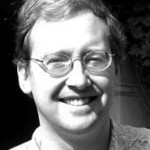
James Tremper Randerson
James T. Randerson received the James B. Macelwane Medal at the AGU Fall Meeting Honors Ceremony, which was held on 7 December 2005 in San Francisco, Calif. The medal is given for significant contributions to the geophysical sciences by a young scientist of outstanding ability.
Citation
It is indeed an honor and a privilege to present the citation for James T. Randerson’s James B. Macelwane Medal.
Jim Randerson’s scientific contributions focus on the very difficult problem of determining the fate of CO2 put into the atmosphere by fossil fuel burning. Currently, just under half of the carbon humans emit to the atmosphere accumulates there; a portion of the rest dissolves in the oceans. The remainder, which varies in magnitude from year to year and over decades, is thought to be taken up on land, though the mechanisms responsible for this uptake have remained an enigma. Jim uses observations and models to test hypotheses about what factors control the uptake and loss of carbon by land ecosystems, which put his research at the heart of one of today’s most debated issues in global environmental change.
Jim began work in biogeochemistry as an undergraduate at Stanford University [Calif.] in 1991, when he became a research assistant to Chris Field at the Carnegie Institution of Washington [Stanford, Calif.]. During this period, Randerson helped develop the Car-negie Ames Stanford Approach (CASA) model, one of the first global biogeochemistry models. In subsequent Ph.D. thesis work with Chris Field and in a postdoc with Inez Fung at the University of California, Berkeley, Randerson applied CASA in innovative ways to better understand the global carbon cycle.
Among the insights this work has produced are a demonstration that observed variations in CO2 and carbon isotopes are inconsistent with the hypothesis that the global biosphere is growing faster due solely to CO2 ‘fertilization,’ a deeper understanding of the processes that shape the seasonal cycle of atmospheric CO2, and a demonstration of the importance of fire in the rapid rate of rise of CO2 during the 1998 El Niño event. What is truly innovative and unique in Jim’s approach to these problems is his ability to understand disparate data sets, and combine them with modeling to provide answers to well-posed and timely questions.
But there is more. As a new assistant professor at Caltech, Randerson made the relatively radical move from being mostly a modeler to starting his own measurement program involving stable isotopes and eddy covariance measurements of energy, carbon, and water exchange between boreal forests at the atmosphere. His goal was to constrain some of the sensitivities in the models of ecosystem carbon balance in high-latitude systems, in particular the role of fire, which was not well incorporated in biogeochemical models. Jim’s measurements in boreal forests of Alaska and Siberia are providing much needed measurements of the physical and biogeochemical feedbacks between land surface and atmosphere.
Jim Randerson is a caring and thoughtful mentor to his students. He is a delightful colleague who is generous with his time and ideas, and his enthusiasm for a problem is infectious. He is conscientious in his service to the scientific community, as attested to by two Editor’s Citations for Excellence in Refereeing for Global Biogeochemical Cycles. In summary, Jim is a very special person, a valued colleague, and a brilliant scientist, and is truly deserving of the honor bestowed by the James B. Macelwane Medal.
—SUSAN TRUMBORE, University of California, Irvine
Response
Thank you, Sue, for that very generous citation and also for your enthusiasm and commitment to strengthening the biogeosciences within AGU. Your research has inspired me, and it is wonderful to now work closely with you. I also thank Michael Prather for nominating me and other faculty within the Department of Earth System Science at the University of California, Irvine for their collegiality and support.
I am deeply honored to receive the Macelwane Medal. I share this medal with extremely talented collaborators, postdocs, and students I’ve had the privilege of working with over the last decade. The Macelwane Medal represents an affirmation of our work together. This is especially true for my first group of Ph.D. students, including Nicole, Lisa, Nir, and Zhonghua. I also share this with my collaborators, including the GFED fire team, scientists working on the Delta chronosequence and at the Northeast Science station in Cherskii [Republic of Sakha, Russia], and colleagues at Caltech and the National Center for Atmospheric Research.
I thank my mentors who have helped me develop as a scholar and scientist. These include Chris Dickerson and Margaret Maple for teaching me how to think creatively and independently in high school, Scott Jenkins and Dave Skelly for introducing me to oceanography and for letting me hang out at SIO [Scripps Institution of Oceanography, San Diego, Calif.] during summers, and Jim Simpson [SIO] for building my analytical skills. I am indebted to Chris Field for his generosity with his time and advice as a graduate advisor and for, among other things, rescuing me from a snowfield behind Mount Conness, [Calif.], on a field trip in 1994. I also thank my postdoc advisors, Inez Fung and Terry Chapin-Inez for providing me with much needed perspective on how to navigate as an assistant professor and Terry [University of Alaska, Fairbanks] for serving as a role model of how to conduct oneself while doing fieldwork. The Fung/Mooney/Sellers NASA IDS [Interdisciplinary Science] team on biosphere-atmosphere interactions created a unique and truly remarkable context for learning about the Earth system and one that had a profound influence on my development as a young scientist.
Continuing a thread from Sue’s citation, it is interesting to consider that some fields within the geosciences, including my own, are rapidly transitioning from a state of being data-poor to being data-rich. On good days this makes it incredibly exciting to study global change, given the large and diverse data streams now available from satellites, the sequencing of genomes, and expanding air, land, ice, and ocean sampling programs. On other days I find the possibility of such a trend a little daunting, with respect to how I spend my time and to how best to train the next generation of students. In this regard I’m grateful to my advisors for providing me with a sense of how difficult and valuable it is to take the time to identify important questions.
It means everything to me to be able to share this with Kathleen-my spouse and soul mate. I’m grateful for the tremendous support I’ve received from my family, including Kathleen, my sister, Maria, and my mom, Laurie, all of whom are here tonight. Finally, I thank my father, Tremper, who was unable to join us, but whose love and support made it possible for me to become a scientist.
—JAMES T. RANDERSON, University of California, Irvine
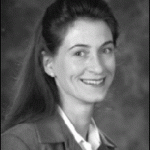
Robin M Canup
Robin M. Canup received the Macelwane Medal at the 2004 Fall Meeting Honors Ceremony on 15 December, in San Francisco, California. The medal is given for significant contributions to the geophysical sciences by a young scientist of outstanding ability.
Citation
It is a great honor to introduce Robin Canup as a recipient of this distinguished and richly deserved award. Robin studies the formation of planets and their satellites—a subject of intrinsic significance and current fascination. As astrophysicists accumulate evidence of planets around other stars, the question of how to make a solar system like our own has yet to be answered. This tough and complex issue has been tackled by geochemists, but just as importantly by a select number of theoretical astrophysicists who deduce the dynamics of accretion. Robin is a relatively new player in this elite group, but her work has put her at the forefront. There are several important contributions one could highlight.
Her research started with a tidal accretion model that she developed with Larry Esposito, which allowed her to explain some of the rings and moons of Saturn, but also enabled her to demonstrate that an extended protolunar disk would be required to produce our Moon outside the Roche limit. Together with Ida and Stewart, she followed this with N-body simulations of lunar formation and demonstrated that accretion of the Earth’s Moon could have taken as little as a few months.
With Hal Levison and her student Craig Agnor, she performed direct N-body simulations of terrestrial planet accretion. These were the first to utilize modern numerical methods to analyze the large impacts defining the main stages of terrestrial growth, and they confirmed and refined the statistical approach previously utilized by George Wetherill. Following this, Robin, together with Al Cameron and Bill Ward, showed how the mass and angular momentum of impact-ejected material scaled with various impact characteristics. Canup and Asphaug then published their highly regarded 2001 Nature paper demonstrating that a single impact from a Mars-sized object is capable of simultaneously producing an Earth with its final mass, a disk capable of yielding an iron-depleted, lunar-mass Moon, and an Earth-Moon system with its current angular momentum.
Robin has now taken on the formation of the Galilean satellites. Previous models could not reproduce their properties in the light of improved compositional and dynamical constraints. Robin and Bill Ward now have proposed an alternative model in which the satellites form during a protracted period of slow gas inflow into orbit around Jupiter at the end of accretion. This has important implications for the chemistry of these objects.
Linking chemistry with the physics of accretion will be a major feature of this field in the future. Robin and others are already working on this, and the end result should be a proper understanding of how to make a solar system like our own.
Robin Canup is an outstanding scientist who tackles tough issues of deep scientific interest with highly original approaches. She is a wonderful communicator and has an enthusiasm for her science that is inspiring. She has already been recognized by other societies, and in 2002 she was the recipient of the Harold C. Urey Prize of the AAS. It gives me great pleasure to present her to you as a very worthy recipient of this year’s James B. Macelwane Medal..
—ALEXANDER HALLIDAY, ETH Zentrum, U.K.
Response
Thank you Alex, for this very generous citation. It is a great, and to be honest, humbling, honor to be recognized for one’s work by such a large and diverse organization as the AGU. I will do my best to live up to the expectations associated with this award and its distinguished list of previous recipients, and I thank my nominators and the committee for their efforts and support.
I owe a debt of gratitude to many individuals who have helped to shape my personal and professional life. My parents instilled in me a love of science and creative pursuits, and were unlimited in their support of all of my varied interests, from science fairs to ballet classes. Wonderful teachers at Duke—Alex Schramm, John Kolena, and Horst Meyer—inspired and encouraged my interest in physics and astronomy. I remember vividly the afternoon I first interviewed for a graduate research position with my eventual thesis advisor, Larry Esposito. He asked me a list of questions about my relevant experience, and even though I had essentially none, he still hired me, and offered support and wise guidance throughout graduate school.
I am fortunate to have spent the last 6 years as a member of SwRI’s Department of Space Studies in Boulder, Colorado. Our director, Alan Stern, has created an incredible environment for planetary research from which I have benefited greatly, and the talented and energetic people in the group are a joy to interact with. It has been my particularly good fortune to work with Bill Ward, who has been very influential to me as a colleague, mentor, and friend.
I am indebted to NASA and NSF, on whose support I have directly depended for a decade. It is a pleasure and privilege to be able to work in planetary science, a field in which discoveries are ongoing, new ideas and exciting debates abound, and which often captures the imagination and interest of the public as well. Finally, and most important, I thank my best friend (and husband), Rick Mihran, for his inspiring sense of life and 12 wonderful years.
—ROBIN M. CANUP, Southwest Research Institute, Boulder, Colorado
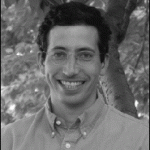
Daniel Mikhail Sigman
Daniel Sigman received the Macelwane Medal at the 2004 Fall Meeting Honors Ceremony on 15 December, in San Francisco, California. The medal is given for significant contributions to the geophysical sciences by a young scientist of outstanding ability.
Citation
Danny Sigman is a talented and imaginative geochemist with extraordinarily broad interests. The focus of his research has been on nitrogen, which is commonly the nutrient whose availability limits the fertility of ecosystems on land and in the sea.
In his graduate work with Mark Altabet at Woods Hole, and in his time since at Princeton University, Danny has developed ingenious new techniques for analyzing the nitrogen isotope composition of environmental materials. He and his collaborators have applied these methods to atmospheric chemistry, biogeochemistry, and paleoclimatology. Meredith Galanter, working with Danny and Chip Levy, characterized the source of nitrate in precipitation at Bermuda, distinguishing natural and pollutant nitrate, and suggesting that lightning is an important nitrate source.
Ben Houlton, working with Danny and Lars Hedin, compared the isotope composition of fixed nitrogen entering and leaving Hawaiian ecosystems. They found compelling evidence that a large fraction of nitrogen passing through was lost by denitrification. Karen Caciotti, Bess Ward, and Danny collaborated on a pioneering study of phylogenetic variations in N isotope fractionation.
Angie Knapp and Peter DiFiore, along with Danny, have made extensive studies of nitrate isotopes in seawater to delineate physical and biological sources of N in the euphotic zone. This work is enhanced by their analyses of the oxygen isotope composition of nitrate, never before measured in large numbers of samples. Combining the two properties allows one to determine rates of the four major processes affecting the nitrogen balance of the oceans: uptake and remineralization of nitrate, nitrogen fixation, and denitrification.
Danny and his collaborators have also dabbled successfully in ice core research, archeology, and bacterial evolution in the Precambrian. In a paper written as a graduate student, Danny (along with Dan McCorkle and Bill Martin, Woods Hole) made a compelling argument that one could not invoke changes in low-latitude biological productivity to explain glacial-interglacial variations in the CO2 concentration of air. This conclusion stimulated renewed interest in the Southern Ocean as the key region regulating atmospheric CO2 on glacial-interglacial timescales, and Danny has helped lead the effort to evaluate this possibility.
He and his longtime collaborator Gerald Haug have demonstrated that the polar oceans were far more stratified during glacial times than today. They have argued that this stratification suppressed the ventilation of the deep ocean and contributed to lower atmospheric CO2 concentrations during the ice ages, an idea Danny is currently investigating with ocean general circulation models.
He and his collaborators are also studying the isotopic composition of organic nitrogen in sediments as a way of understanding the role of Southern Ocean mixing and biology on the CO2 concentration of the ice age atmosphere. His integration of modern biogeochemistry and paleoceanography in the Southern Ocean is important and distinctive. Danny’s wonderful research efforts are matched by his terrific teaching and his contributions to his department, university, and the broader scientific community. He is admired by his undergraduate classes, devoted to his students, and appreciated by his colleagues at Princeton and elsewhere.
—MICHAEL L. BENDER, Princeton University, N. J.
Response
Michael, I cannot match your penetrating intelligence, but I have still strived to follow your example. So I am greatly honored by your citation. Please bear with me as I acknowledge those who have made this day possible for me.
I am proud to owe my fundamental worldview to my parents, who have approached every aspect of their lives with humanity and contemplation. Given their example, it is easy to understand why my sister and I followed their footsteps into academics.
Since my introduction to the Earth sciences at Stanford, I have never looked back. Still, the early appeal of the field was greatly enhanced by the energy and generosity of the Stanford faculty. My most vivid memories are from that time of discovery.
When I applied for a summer student fellowship at the Woods Hole Oceanographic Institution, Dan McCorkle began our relationship by sending me a copy of Tracers in the Sea. Rather than putting me to good use in the lab that summer, Dan sat me in front of a computer and told me to build a model of the ocean carbon cycle. In a matter of hours, I was hooked. As a graduate student under Dan’s wing, I learned the skills on which I rely today. I brought enthusiasm and some measure of creativity to Dan’s door, but he taught me the essentials of scientific rigor.
I remember sitting on a dirty couch in the MIT student center, jittery with excitement over an NSF proposal by Mark Altabet and Roger Francois to use the nitrogen isotopes to reconstruct past changes in surface ocean nutrient conditions. Since that time, Mark has worked to engage me in the inherent richness of the nitrogen cycle, a topic that reaches broadly across disciplines. Mark also instilled in me the importance of method development, and I have tried to inherit some of his characteristic resourcefulness.
I am indebted to Ed Boyle, John Edmond, and Francois Morel, whose courses were the basis of my graduate education, and to WHOI scientists such as Scott Lehman, Lloyd Keigwin, and Bill Martin, who provided a less formal education. I owe close friends to that time, including my colleague Jess Adkins, who continues to inspire me with his independent vision and his intense and tireless intellect.
One of my great pleasures is my long-term collaboration with Gerald Haug, a cherished friend. Gerald, endowed with inexplicable intuition and a uniquely broad perspective, values collaboration above all else. It has come to the point that neither of us can recall who thought of which idea.
I have been educated and aided in innumerable ways by my colleagues at Princeton, including Michael Bender, Anand Gnanadesikan, Lars Hedin, Simon Levin, Francois Morel, Satish Myneni, Steve Pacala, George Philander, Jorge Sarmiento, Robbie Toggweiler, and Bess Ward. I must also thank Dan Schrag, a brilliant and dynamic scientist who nevertheless puts enormous energy into the development of his younger and less interesting colleagues. I thank Brigitte Brunelle, Greg Cane, Karen Casciotti, Peter DiFiore, Julie Granger, Meredith Hastings, Ruby Ho, Ben Houlton, Angie Knapp, Moritz Lehmann, and Becky Robinson, who, as graduate students, postdocs, and technicians, have been my closest scientific partners over the past five years. Finally, I am inexpressibly grateful to my wife, Ellyn, and my daughter, Hana, who keep me in shape by questioning my wisdom on virtually every subject. Thanks.
—DANIEL SIGMAN, Princeton University, N. J.
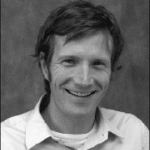
David W J Thompson
David W. J. Thompson received the Macelwane Medal at the 2004 Fall Meeting Honors Ceremony on 15 December, in San Francisco, California. The medal is given for significant contributions to the geophysical sciences by a young scientist of outstanding ability.
Citation
Dave Thompson has exploded onto the climate scene. His first paper was published just six years ago, but he is already one of the most respected climate diagnosticians in the world. His work on the northern and (more recently) southern annular modes of climate variability has transformed our understanding of middle- and high-latitude climate, especially with respect to the interactions between the stratosphere and the troposphere. His findings have strongly influenced both the study of anthropogenic climate change and weather forecasting—two very different subjects that often seem to be at opposite poles of the atmospheric sciences.
Dave is a supremely talented individual who has already made many outstanding contributions. He is, by any standard, a leader, not a follower, and a superior researcher (not one who produces mundane results). Even as a graduate student, his research hit at the heart of key problems for global climate: the nature and trends of the Arctic oscillation, a central feature in the climate of the Northern Hemisphere and a major mode of stratospheric variability. Dave’s 1998 and 2000 papers revealed trends in the Arctic oscillation over the past 50 years. Through careful statistical analysis, he convincingly linked the trends to previously recognized aspects of stratospheric variability. His 2001 Science paper further revealed that the trends in the Arctic oscillation are strongly linked to regional warming at the surface.
More recently, Dave has turned his attention to the opposite pole. In a series of stunning papers, he and his colleagues have established that the Antarctic oscillation has an even more profound influence on climate than does its Arctic counterpart. His papers demonstrate that the anomalous cooling that has occurred over Antarctica is associated with trends in the polar circulation pattern, and further link this unusual behavior with the emergence of the Antarctic ozone hole, providing a remarkable illustration of how human activities that modify the stratosphere can also affect the tropospheric climate. Through this work, a foundation has been laid for quantifying the causes of recent climate change and predicting their future, a prospect of great interest to scientists and policy-makers alike.
Dave is an unusually clear and engaging speaker, and an excellent teacher. I have had the pleasure of watching him begin his teaching career, including his advising of graduate students. His classes are packed with students whose striking enthusiasm for their studies is driven by his lucid, passionate, and even charismatic lectures. His advisees model themselves after him to a degree that is unusual for a younger faculty member. He inspires them, and they are lifted by it. He is going to have an enormous influence on our field through his teaching and advising, in addition to his outstanding research achievements.
The AGU’s James B. Macelwane Medal is a fitting acknowledgment of Dave Thompson’s lofty achievements and even higher potential.
—DAVID A. RANDALL, Colorado State University, Fort Collins
Response
Thank you, Dave, for that generous introduction. You have had an important impact on me over the past few years, and I sincerely appreciate your kind words.
I feel awkward and humbled to receive this saward. I don’t envy the Macelwane award committee, as I know there are a number of other young scientists—many of them good friends of mine—who deserve such recognition. But as one of those good friends recently told me, “Get over it; there are worse feelings to have.” And that’s certainly true. So I’d like to sincerely thank the committee and those that nominated me for their consideration.
I don’t have time to thank all of the people who have enriched my life as a scientist. Before I mention any names, I’d first like to thank the atmospheric sciences community as a whole for providing a supportive environment for young scientists. Since I entered this field, I have received an enormous amount of support and friendship from colleagues at all stages of their careers. That support is a major reason why I have so much fun as a scientist. And after all, it’s all about having fun.
A few names come to mind.
I feel lucky to have had so many great teachers and mentors throughout my life. I’d like to thank my eighth grade teacher, Mr. Brands, for teaching me that discovery is fun. And Alex Hoehn at the University of Colorado, for giving me the opportunity to do research when I was an aimless, cynical undergraduate student. It was only through undergraduate research that I realized science is a lot more fun than taking exams. Of course, I’d like to thank my Ph.D. advisor, Mike Wallace. Mike inspires me not only because of his scientific insight, but also because of his enthusiasm, patience, and integrity.
Mike will always be an important person in my life. In recent years, I’ve been fortunate to learn from David Randall, who has patiently helped me adjust to life as a university professor; Susan Solomon, a wonderful mentor, colleague, and friend; and Mark Baldwin, a great friend and colleague who also introduced me to the joys of Spongebob Squarepants.
I’d also like to acknowledge all of the faculty, staff, and students in the Department of Atmospheric Science at Colorado State University for creating a comfortable and supportive work environment; the faculty in the Department of Atmospheric Sciences at the University of Washington for teaching me much of what I know today; my current graduate students for teaching me more than they realize; and the many friends and collaborators who have made science so enjoyable over the past 6 years, including Rene Garreaud, Dan Vimont, Warwick Norton, Nathan Gillett, Gabi Hegerl, David Lorenz, Alex Hall, Nicki Gruber, and Var Limpasuvan.
Finally, I’d like to thank my parents for giving me such a good start in life; my brother, Andy, for his lifelong friendship; and, of course, my soulmate and best friend, Steph Malsack, for simply being Steph. Steph is a social worker and in my view, has the “real job” between the two of us. I think that in a perfect world, medals such as this would be given to anyone who chooses to devote their life to helping other people.
I said that I feel awkward and humbled to win this award, and that’s true. But I have to admit, it feels pretty good as well. I feel truly honored and lucky. Thank you again.
—DAVID W. J. THOMPSON, Colorado State University, Fort Collins
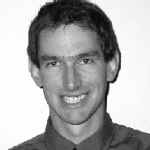
Kurt M Cuffey
Kurt M. Cuffey was awarded the Macelwane Medal at the AGU Fall Meeting Honors Ceremony, which was held on 10 December 2003, in San Francisco, California. The medal honors “significant contributions to the geophysical sciences by a young scientist of outstanding ability.”
Citation
“Whom the gods wish to destroy they first call promising.’ Kurt Cuffey avoided the risk of being called promising by seeming to skip a career stage–transforming himself from graduate student to internationally recognized scientist so rapidly that few can recall if he endured a period of apprenticeship. By the time he received his doctorate from the University of Washington in 1999 he had 14 research publications to his credit, the majority of these having nothing whatsoever to do with his thesis topic and everything to do with his scientific curiosity and intellectual rigor.
“Kurt’s colleagues regard him as the brightest young glaciologist in the world today and one of the most influential thinkers to emerge in glaciology and paleoclimatology in the last decade. He has a seemingly magisterial understanding that spans glaciology at all scales–from the fine details of ice fabric and chemistry to the scale of global biogeochemical cycles. He is perhaps best known for his studies unifying ice core paleoclimatology and ice sheet dynamics and has been at the forefront of research on the isotopic stratification and climate record preserved in polar ice cores.
“Among many accomplishments, Kurt has pioneered the use of borehole thermometry to obtain a temperature calibration of the oxygen isotope record in ice cores from Summit Greenland. Such calibrations are enormously important because they permit the isotopic time series to be reliably converted to a record of surface temperature variation. Using this paleothermometer, he demonstrated that the temperature changes were much larger than previously assumed and that the switch from glacial to Holocene conditions was associated with a 15°C warming in central Greenland. This research and subsequent studies deliver the bad news that the climate system is capable of large and rapid changes which are amplified in polar regions.
“Another significant contribution concerns the relationship between the records of atmospheric carbon dioxide and temperature in the Vostok ice core from East Antarctica. Covariation of carbon dioxide and temperature is an obvious feature of the data, but the crucial scientific question is whether the atmospheric CO2 concentration is a climate forcing or expresses an environmental response to changing thermal conditions. The postulate that CO2 is an important forcing is seemingly contradicted by a mismatch between the temperature and CO2 records at the onset of the last ice age evidence that challenges the common wisdom about greenhouse gas influences and that could be put to mischievous use. By a shrewd analysis Cuffey and Vimeux laid the question to rest. Science like this is not just at the cutting edge, it has a cutting edge.
“Kurt Cuffey’s research is driven by questions, not methods. He uses a great range of appropriate tools with skill and precision, from finite elements to chain saws, but his primary research tool is his mind. His breadth and creativity are astonishing. I join Kurt’s many admirers in paying tribute to his scientific achievements in the certain knowledge that the past is prologue to a brilliant future.”
—GARRY CLARKE, University of British Columbia, Canada
Response
“Thank you, Garry, for that delightful citation. Your keen insights and effortless urbanity are an inspiration for the rest of us in glaciology and Quaternary science. I am honored to have you speak on my behalf.
“One of the best aspects of these awards is the opportunity they provide to highlight connections within the geophysical community. Allow me to accept the Macelwane Medal and thank the AGU by simply recounting my massive indebtedness to some of our esteemed colleagues.
“As an undergraduate at Penn State, I met the amazing Richard Alley, who plows new tracks across the intellectual landscape with the unstoppability of a Yukon mining dredge. Generous and kind, Richard jump-started my research career and convinced me that glaciology is a field with many exciting and important questions. Such was the depth of my undergraduate research involvement that many people now think I was Richard’s graduate student.
“They are wrong, of course. I subsequently spent 7 years in graduate school at the University of Washington, engaged in a multitude of explorations glaciologic and geomorphologic. No single person can make a perfect graduate advisor. I solved this problem by, de facto, having four advisors: Bernard Hallet, who defies convention by being both broad and deep; Charlie Raymond, master of all things glacial and a model for rigor in the Earth sciences; Ed Waddington, another glaciologic master whose open-door policy offered abundant access to his expertise; and Howard Conway, consummate field scientist and my candidate for single most generous individual in the academic world.
“In pursuit of the broad intellectual life, I subsequently joined the faculty of UC Berkeley’s Department of Geography, an eclectic mix of remarkable and curious minds. This group of (mostly) social scientists accurately perceived the power and importance of the geophysical approach to environmental scholarship. Though a specialist in urban landscapes and Latin America, chairman Michael Johns has been particularly adept and vigorous in strengthening this facet of our department. I am equally grateful for my strong ties to many of the superb environmental scientists at Berkeley, especially Bill Dietrich, Jim Kirchner, Inez Fung, and Mary Power.
“Almost all the work I do is collaborative in important respects, and I celebrate this fact. Without collaboration, I would have accomplished little research of significant value. In particular, I warmly thank Shawn Marshall, Francoise Vimeux, and Jeff Kavanaugh for stimulating and productive interactions over the past 5 years. Our work emerges from the rich tradition of ice dynamics and ice core research epitomized by luminaries like Garry Clarke, Bob Bindschadler, Sigfus Johnsen, Jean Jouzel, and many others.
“Finally, no accounting of my indebtedness, however abbreviated, would be appropriate without thanking my parents, who instilled in me an appreciation for the power of learning and for the beauty of Earth. Their values and encouragement prepared me to walk into Richard Alley’s office 15 years ago.
“I thank all of you, and I look forward to many more years of exploration and learning together, and conversing in the cavernous halls of Moscone Center.”
—KURT M. CUFFEY, University of California, Berkeley
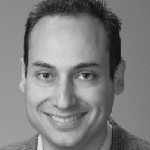
Guido Salvucci
Guido D. Salvucci was awarded the Macelwane Medal at the AGU Fall Meeting Honors Ceremony, which was held on 10 December 2003, in San Francisco, California. The medal honors “significant contributions to the geophysical sciences by a young scientist of outstanding ability.”
Citation
“Guido Salvucci exemplifies the tenets of the AGU Macelwane Medal—recognition for exceptional contributions by a young scientist. He has made research contributions in diverse topics in hydrologic science, and he has opened up new frontiers several times in his young career.
“His signature is a deep and intuitive solution to unresolved problems that have been around in the discipline for decades. The solutions are invariably simple and free of obfuscation and jargon. They demonstrate an intuition for physical processes and a skill to extract just the right amount of analytics to make a contribution stay and speak to many.
“Guido has tackled some of the most fundamental problems in hydrologic science and provided breakthroughs where walls once stood. Especially noteworthy are his contributions to (1) understanding the significant role of climate, soils, and terrain in organizing the pattern of hydrologic exchanges; (2) understanding the effects of rate-limitation processes in soil physics; (3) unraveling the role of time perturbations and spatial scale in water balance; and (4) inferring land surface fluxes from remote sensing measurements.
“Early in his career Guido engaged an age-old problem in hydrology dealing with the spatial pattern of exchanges between surface water and groundwater systems. Guido developed and tested an innovative conceptual framework for characterizing these patterns that emerge from the interactions between terrain, surface flux to atmosphere, and subsurface flow.
“Another area of notable contributions by Guido is remote sensing of land surface fluxes, for example, evaporation. Evaporation, the core driver of linked water, energy, and biogeochemical cycles over land, is not monitored such to allow mapping. In a series of studies Guido offered a truly remarkable solution that is based on fundamental physics of the problem and does not rely on parametric assumptions. He shows that the transition from potential evaporation—limited by available energy—to reduced evaporation—limited by water in the root zone—is detectable from transitions in spectral reflectivity in the visible range and emission in the thermal range. He combines the knowledge of the transition timing derived from soil physics to show that the rate of evaporation in each regime is predictable. This is a remarkable achievement that again sets the standard for future contributions in this field.
“Guido has recently created new value for historical observations using remarkably clever conditional sampling. In this way he has managed to unravel the dependence of evaporation and recharge/discharge losses on soil moisture from measurements of precipitation. The solution is fundamentally independent of the scale of observation. The breakthrough allows the estimation of the state control on fluxes without any parameterization assumptions and using available measurements.
“Award of the Macelwane Medal is a recognition of Guido’s contributions and a recognition of the medal’s standards. Guido is a respected colleague who is known for his modesty and personal integrity. I have the added pleasure of witnessing Guido as a father, a husband, a son, and a friend, all of which he performs with exceptional virtue.
—DARA ENTEKHAB, Massachusetts Institute of Technology, Cambridge
Response
“Thank you, Dara, for those kind words and for sharing your friendship with me for so long. And thank you to all of those who nominated me and to the selection committee that chose me to receive this medal. I hope I can live up to its expectations.
“There are many other people I want to thank tonight, all of whom have in some way helped me to be up here. Professionally, I want to thank a group of fantastic professors at NYU’s Department of Applied Science: Marty Hoffert, Mike Rampino, and Tyler Volk. I haven’t spoken to them in 14 years, but I want them to know that the Earth-systems program they taught was infectious. Were it not for their enthusiastic teaching, I would be a structural engineer today.
“At the Parsons Lab of MIT, I had the good fortune of working with Peter Eagleson and Dara Entekhabi, both of whom are deeply creative and critical thinkers. They exemplified mentorship by sharing their love of hydrology, giving me guidance when I needed it and freedom to explore ideas, all the while providing lots of professional encouragement and personal friendship. The faculty, staff, and students of the Parsons Lab have a special chemistry that I will remember fondly. Every once in a while I call Dara to see if he could use a somewhat older and perhaps overpaid research assistant.
“This was also when I met my wife, Amy, whose distracting charm almost got me kicked out of graduate school (I got a C in probability and statistics that semester). To make a long story short, Eagleson let me stay, and Amy became my best friend, strongest supporter, and the love of my life.
“At BU, I have been lucky to work with great graduate students and faculty in two diverse departments, Geography and Earth Sciences. Being the only hydrologist at BU could have been lonely. Instead it has provided me with close friends, great graduate students, and unexpected collaborations with time series econometricians, remote sensing scientists, and climatologists.
“Last but not least, my grandparents and parents provided me with a wonderful home, strong role models of unselfish hard work, and continuous love and support. And now seeing my own children grow and become curious about the world has been a thrill. Jack is curious about what the ‘dirt’ on the moon looks like, and Zoe has been making Venn diagrams about family food favorites! I think we might have two more AGU members in the family. They are both proud of me for winning this medal, and their pride is a source of joy.
“All of us here work in a field where we are constantly being reviewed, anonymously and critically, on each paper we write, class we teach, and idea we propose. As we all learn early on from our mentors, it is a field that requires thick skin. And for whatever reason, what typically sticks in one’s memory are the most recent review and the most critical one. This recognition, however, will always stay with me. Thank you for this honor.”
—GUIDO D. SALVUCCI, Boston University, Mass.
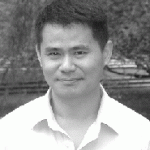
Lianxing Wen
Lianxing Wen was awarded the Macelwane Medal at the AGU Fall Meeting Honors Ceremony, which was held on 10 December 2003, in San Francisco, California. The medal honors “significant contributions to the geophysical sciences by a young scientist of outstanding ability.”
Citation
“In April of 1968, over one million babies were born in China. Lianxing Wen was one of them, and based on his early academic record, he was probably the smartest. He won the National Mathematics Competition at the age of 13, which allowed him to enter college early. He graduated from the University of Science and Technology of China at the top of his class before he was 20, and somewhere along the way, he developed a Richard Feynman grin.
“Lianxing’s talents and diversity of interest are well represented in his first 20 papers, ranging from theoretical seismology to the development of geodynamic models containing three–dimensional viscosity. Many scientists are slowed down by overspecialization and are not broad enough to make major discoveries. Lianxing excels in all those fields, and combines theory and data of all types into a meaningful interpretation of what is inside the Earth. He has targeted three major problems concerning the deep Earth: mantle convection, nature of the core–mantle transition, and the fine structure at the top of the inner core.
“To understand the configuration of the Earth’s convection, he has conducted a thorough assessment of tomographic images containing patterns of cratonic roots, down–welling slabs, and upwelling hotspots. His models demonstrate rather forcefully that simple whole–mantle convection does not work and that it must be broken up into smaller–scale regional convection. To sharpen tomographic images, he addressed the issue of waveform modeling and found that tomographic or one–dimensional–like models cannot explain the rapid variations observed from broadband arrays. To treat this waveform data, he introduced new modeling tools containing a mixture of analytical and numerical codes. Essentially, where the Earth is simple (PREM–like), he uses relatively fast propagating analytical approximations, and where it is complex he resorts to full–numerical methods. This modeling effort led him to examine the African Array data that were collected for upper mantle studies. While the upper mantle data did not produce much excitement, the lower mantle data revealed extreme travel time jumps in the near vertically traveling SKS phases and delays of Sdiff by over 20 seconds. The Pdiff waveforms, along nearly identical paths, appear PREM–like or normal. Lianxing argues that such extreme changes in bulk velocity characteristics along with suggested density anomalies strongly support chemical heterogeneity. He proposes a broad chemically distinct structure at the core–mantle boundary extending from beneath the mid–Atlantic (Cape Verde) to the Indian Ocean (Kerguelen). The implications of his discovery on convection and the genesis of the African superstructure are being widely explored by him and others.
“Lianxing Wen’s work on the outer–inner core boundary is similarly provocative. These studies are mostly observational, but unprecedented in completeness and detail. He argues that there is a regional dependence between PKIKP and PKiKP which can be interpreted in terms of a laterally varying inner core where velocity anomalies mimic those at the core–mantle boundary. This has implications on how the dynamo works, so don’t be surprised to see his next paper on this subject.
“For these contributions, Lianxing Wen is most deserving of this medal.”
—GEORGE V. HELMBERGER, California Institute of Technology, Pasadena
Response
“Thank you, Don, for your generous citation. I am deeply grateful to the American Geophysical Union for this award. It is a great honor to accept this recognition and to have the opportunity to thank those responsible for my standing up here.
“My fortune started when I went to the University of Science and Technology of China (USTC) for my undergraduate study. At USTC, I was surrounded by remarkably talented classmates and a dedicated faculty. I received my basic training in physics and mathematics, and I learned what are needed for becoming a good scientist: self–confidence, persistence, and dedication.
“I was first captured into seismology by Zhenxing Yao, when I moved to the Chinese Academy of Sciences (CAS). Professor Yao inspired me with exciting seismology projects and eventually introduced me to Caltech. At CAS, Tianyu Zheng provided me advice and encouragement, and gave me generously financial assistance for my trip to Caltech.
“At Caltech, Don Helmberger and Don Anderson profoundly influenced my thinking and the way I do science. I thank Don Helmberger for the opportunity to work with him. Indeed, it is my pleasure to honor the Helmberger scientific family with this fourth Macelwane Medal. Don taught me the beauty of deciphering every wiggle of seismograms, and I was inspired by the biweekly meetings with Don, Michael Gurnis, and their students. Having the privilege to work with Don Anderson significantly expanded my horizons. I started with a small class project with him, quantifying the volume of materials that have been subducted in the past 130 million years, and went on to mantle convection problems. Don encouraged my interest in many subjects, among them the geochemical ‘DUPAL’ anomaly, which I later noticed geographically correlates with the compositional anomaly near the core–mantle boundary.
“On a postdoctoral fellowship, I arrived at the Carnegie Institution of Washington (CIW), at a time when the Kaapvaal seismic group just acquired a large amount of seismic data in southern Africa. The Kaapvaal seismic group generously made the seismic data available to me before it was officially released. I thank Sean Solomon for his care, encouragement, and guidance, and I thank Paul Silver for patiently explaining his different views and for his friendship. At CIW, I was fortunate to reunite and collaborate with my best friend, my USTC classmate Fenglin Niu, and I wish to recognize him here for his insights and friendship.
“Stony Brook provides me an intellectual playground. I owe my colleagues a debt of gratitude for such a collegiate and supportive environment where I can concentrate on my research and teaching. Bill Holt has been a great mentor and collaborator and he and Troy Rasbury have been good friends to my family. Don Weidner, Bob Liebermann, Teng–fong Wong, Dan Davis, Scott McLennan, and my students expand my horizons.
“I could not have succeeded, though, without my family. My lovely wife, Mei–Lan Yeh, endures my long working hours and cheers me up in stressful moments. My 4–year–old son Kevin keeps me laughing and renews my energy. It is their love that makes this occasion possible.
“Finally, I thank all of you for being my inspiring peers and for sharing this moment with me.”
—LIANXING WEN, State University of New York, Stony Brook
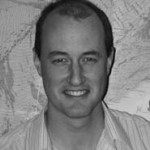
John M Eiler
John M. Eiler was awarded the James B. Macelwane Medal at the AGU Spring Meeting Honors Ceremony, which was held on 29 May 2002, in Washington, D.C. The medal recognizes significant contributions to the sciences by a young scientist of outstanding ability.
Citation
“It is a great pleasure to present my friend and colleague John Eiler to receive one of this year’s Macelwane awards. John’s specialty is the application of stable isotope geochemistry to elucidate processes and conditions on the Earth and other planets. I think that the best way to introduce him is to tell a story about how he stumbled into one of his many projects, since it says a great deal about how he works and what is special about him.
“After receiving his Ph.D. from the University of Wisconsin, where he worked with John Valley on the diffusive re-equilibration of oxygen isotopes in granulites, John came to Caltech as a postdoc to work with Sam Epstein and me on the fractionation of carbon isotopes between vapor and silicate melt. But his work took an important detour not long after his arrival. A group of us got together weekly to discuss a paper we have all read. One week, the group met in my office to discuss a paper that reported the important result that radiogenic Pb and Nd isotope enrichments in lavas from the Pitcairn seamounts in the South Pacific are correlated with 18O-enrichments. This represented compelling evidence for the recycling of sediment into the mantle sources of these lavas by subduction. At the time, the results of this paper were described as the ‘smoking gun’ for recycling of sediments into hot spot magmas. For a variety of reasons, the group was dubious about the result (to be honest, I thought the paper was pretty good!). As the group was breaking up, John stated that the right way to approach this problem would be to apply the then-novel technique of laser fluorination to olivine: This would have the advantage of dealing with an abundant mineral in relatively unfractionated basalts that could be isolated so as to avoid alteration (and of simplifying corrections for any oxygen isotope fractionation that might have occurred on mantle melting or subsequent crystallization). Ken Farley, who also attended the reading group, replied that he had a series of olivine-bearing samples from Pitcairn Island and that if John was serious about this, he could actually do the measurements on these samples. John, Ken, and I stayed behind after everyone else left, and John designed a project doing oxygen isotope analyses via laser fluorination of olivines from Pitcairn Island. John quickly did the analyses in John Valley’s lab back in Wisconsin and demonstrated that at least for the Pitcairn hot spot there is no correlation between oxygen isotopes and the radiogenic isotope signature, and thus that the skeptics in the reading group were right.
“With this as a start, John expanded this small project to a wide range of investigations of oxygen isotopes in magmas from all the major basaltic igneous environments (mid-ocean ridges, subduction zones, ocean islands, and continental flood basalts), discovering important correlations between oxygen isotope ratios and other geochemical parameters (including the much sought-after ‘smoking gun’ of subducted sediment, with its distinctively high 18O/16O). A key to this was the use of the laser fluorination techniques pioneered by Zach Sharp, John Valley, and others, which allowed small amounts of sample to be analyzed with a precision better than 0.1 per mil, thereby opening up a whole new world based on what previously were variations in oxygen isotopes that were too subtle for detection. This work adds up to a remarkable contribution, providing a powerful new tracer for distinguishing the origins of various mantle reservoirs. Simply put, John has used his expertise with laser fluorination and his geological insight to make landmark contributions to our understanding of the nature and origin of chemical and isotopic heterogeneity of the Earth’s mantle.
“I believe that the work I have described here tells us a great deal about this young scientist: John’s willingness to pursue boldly a new direction that sprang from as unlikely a source as our reading group (and it is important to emphasize that he had at this point essentially no research experience in igneous geochemistry), his rapid conversion of this idea to a reality, and the range of insights he has subsequently obtained are all indicators of a remarkable scientist.
“I cannot fully convey the broad range of topics on which John has worked and continues to work. He has been willing to tackle a wide range of new problems outside his nominal areas of expertise, ranging from the question of the conditions of formation of carbonates from meteorites from Mars, to the development of the ion microprobe as a quantitative tool for oxygen isotope analysis, to the study of isotope fractionations between mineral surfaces and gaseous CO2 and H2O and their implications for the cycling of volatiles on Mars, to the study of hydrogen isotopes in chondritic meteorites, and to the development and application of a new technique to measure D/H ratios on very small amounts of molecular hydrogen from the atmosphere. His fearlessness in attacking this range of problems in Earth and planetary sciences, his ability to get things done on a very broad front, and his magic touch at finding interesting and important results are astounding.
“In summary, John Eiler is emerging as one of a small group of leaders in the next generation of geochemists. In my view, the Macelwane Award is well-deserved recognition by our community of his energy, intellectual courage, insight, accomplishments, and potential. Moreover, as I’m sure you will see from his acceptance, all this is wrapped up in a disarmingly folksy and extremely likeable package. Ladies and gentlemen, John Eiler.”
—EDWARD M. STOLPER, California Institute of Technology
Response
“Thank you, Ed; it is a great honor to receive this distinguished award and doubly so to get it at the hands of someone who has been so instrumental in shaping both our disciplines and my career. I’m very grateful to the American Geophysical Union and to Macelwane Medal nominators and selectors for recognizing the work of my colleagues and me. Perhaps the best purpose of junior scientist awards is to encourage people early in their careers to live up to their potential; I appreciate this encouragement and will keep it foremost in my mind in the years to come.
“One of my first reactions on learning I would be given the Macelwane Medal was to look at the list of past recipients-if you haven’t looked yourself, it’s impressive, intimidating, really-and to check what they said. They generally give a biography of sorts, so I’ll do the same. I started my career as a hired porter, hauling canoes and catching fish for Beloit’s Hank Woodard on his field trips to the Canadian shield. The fishing was the only part I took very seriously until I followed my future wife to the University of Iowa. There I met Tom Foster and Mark Reagan, who nurtured my scientific interests, convinced me I could be good at this job, and packed me off to graduate school in Wisconsin where I worked for John Valley. John had a tremendous influence on me. He taught me the ethos of a lab scientist, introduced me to the idea of scientific debate, and gave me a foundation of classical training that I call on to this day. He also provided unfailing support to my research after I left Wisconsin. I also must recognize the help I received during this period from Lukas Baumgartner, who first taught me how to be quantitative about problems, and both Colin Graham and John Craven, who nursed me through many weeks of ion probe work at the University of Edinburgh.
“Naturally, I thought I’d learned all there was to know by the end of graduate school. I was wrong, of course, but couldn’t see it until coming to Caltech as a postdoc. This place had, and continues to have, an indescribable effect on me. It surrounds one with amazingly talented people, many of whom have created new disciplines out of whole cloth, doing a kind of science I hadn’t known existed. Ed naturally deserves the most credit for influencing me, since he was an almost daily mentor throughout my years as a postdoctoral fellow. He is largely responsible for whatever taste in scientific problems I might have learned. Ken Farley was also key to my development then, and continues to be my model for what a young professor is supposed to do. Of course, Hugh Taylor and Sam Epstein have been a constant and inspiring presence; I don’t think a week goes by when I don’t find myself wondering what they would have done with some problem with which I’m faced. More generally, the institution as a whole is a supportive, collegial place where the love of science colors everything you do. I would also like to recognize the host of talented students and postdocs who are responsible for much of the science I’ve been involved in since starting a lab.
“It is customary in these speeches to provide a quotation from a role model. I’ll give you two from my senior colleagues at Caltech, who are known for getting right to the point. You will have to guess who they are; I have to live with these people after all. One once asked, ‘So what can you do that I can’t?’ I suppose you could take that several different ways; I decided it meant young scientists have to bring something new to the table, and I have tried to follow it as often as possible. The second asked ‘You know all those retired old guys? Well, they made plate tectonics. What are you going to do?’ There is no easy answer to that one, but the idea is inspiring nonetheless. I like to think he was saying we are not in the business of chipping away at solved problems-we’re supposed to be explorers and revolutionaries. I don’t know if I can be either, but I appreciate being told I should try.
“I would like to acknowledge my wife, Jane-the lovely woman in the black dress up here at the front-and my children, Maddy and Kate. Jane is almost entirely responsible for the fact that I can pass for an adult and sustains me in all sorts of ways. My children naturally run me ragged, but also keep me young-childish, really-and excited about the world.
“Finally, I would like to recognize all of you, both for coming out to help us celebrate this occasion and for being an inspiring community of colleagues. Thank you for this recognition, for your confidence, and for your help.”
—JOHN M. EILER, California Institute of Technology
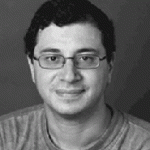
Gabriel George Katul
Gabriel George Katul was awarded the James B. Macelwane Medal at the AGU Spring Meeting Honors Ceremony, which was held on 29 May 2002, in Washington, D.C. The medal recognizes significant contributions to the sciences by a young scientist of outstanding ability.
Citation
“Gabriel Katul grew up in Beirut, Lebanon, where he completed his bachelor’s degree at the American University of Beirut. He then came to the United States for graduate school. He obtained his master’s degree at Oregon State University, where he worked with Professor Richard Cuenca on evaporation modeling and measurement. I was then most fortunate to have Gabriel join me at U.C. Davis for his Ph.D. (thanks to recommendations from Richard), where I had just started as assistant professor. Upon his arrival, it was immediately clear that Gabriel was someone extremely special. He had the remarkable ability to quickly define the most critical aspects of a problem and then without hesitation or fear bring the best experimental, theoretical, and modeling approaches to bear. After earning his Ph.D. in 1993, he started as assistant professor at Duke University, where today he is professor in the School of the Environment and the Department of Civil and Environmental Engineering.
“His discoveries on the interactions between the land and the atmosphere with his students and colleagues at Duke rank as some of the most profound and important in the field over the past ten years. His work cuts across both hydrology and meteorology, and he has published extensively in both communities. It is not possible to cover all the important research he has accomplished in such a short period of time, but I will attempt to highlight some critical findings.
“The fundamental issue he has addressed is, How do the coupled physical and evolving biological systems within the land-atmosphere continuum express themselves in biogeochemical fluxes when variations in forcing (e.g., variable precipitation, increased atmospheric CO2, or nitrogen deposition) are active over a broad spectrum of time scales (fractions of seconds to decades)?
“Gabriel has pioneered our understanding of the role of organized multi-scale eddy motion in the transport of heat and water vapor from forested systems. Localized and energy-containing eddy motion were identified from newly-derived Lorentz wavelet thresholding approaches and applied to field measurements his group collected over many forest types. On the basis of his findings, cumulant discard approximations are now used by the micro-meteorological community to construct new closure models for the momentum and scalar flux divergences that explicitly account for the ejection-sweep cycle so crucial in land-atmosphere exchange.
“Gabriel has developed the theory on the role of so-called inactive eddy motion on atmospheric surface-layer turbulence. This theory is the first to explain why surface-layer vertical velocity variances follow the classical Monin-Obukhov similarity theory, but the horizontal velocity and static pressure do not.
“Gabriel and his students have developed, and tested with experiment, forward and inverse models to infer space-time evolution of CO2 sources, sinks, and fluxes within forested canopies. This work is now the basis for CO2 source/sink identification. These models are the first to include ecophysiological theories and enzyme kinetics, radiative transfer schemes, hydraulic theory of plants, novel approaches to modeling canopy turbulence, and water-carbon optimization theories to model stomatal function.
“On a personal note, Gabriel is a wonderful human being and a genuine friend to all his colleagues and students. I am delighted to present Professor Gabriel G. Katul of Duke University, 2002 Macelwane Medalist.”
—MARC PARLANGE, Johns Hopkins University, Baltimore, Md.
Response
“Thank you Marc for your kind citation. I am honored by this award, which I share with many people.
“I was fortunate to start my career with Richard Cuenca at Oregon State University and Marc Parlange at the University of California at Davis as mentors, inspirational colleagues, and friends. With Marc Parlange, much of our effort was dedicated to injecting fluid mechanics into studies of land-atmosphere exchange.
Upon leaving graduate school, I was lucky to join the Nicholas School of the Environment and Earth Sciences at Duke University, where I formed partnerships with many ecophysiologists and ecologists. In particular, I had the pleasure of working with exceptional colleagues like Ram Oren and David Ellsworth whose insights about ecosystem science led us to discover numerous intersections between ecology and fluid mechanics, and which further led to exciting manuscripts on coupled water vapor and carbon dioxide exchange between forests and the atmosphere. Early on, we realized that the combination of fluid mechanics, ecology, and hydrology needed new statistical tools to unfold the multi-scale biological and physical system. While I wish to claim credit for a higher order design at this junction, the facts remain that luck brought me in contact with Brani Vidakovic at Duke University. His expertise and enthusiasm on multi-scale analysis was crucial to numerous papers utilizing wavelet transformations and information theory.
I was also fortunate to end my graduate work at U.C. Davis and start my professional career with John Albertson, a colleague and friend whose insights and guidance on almost all aspects of fluid dynamics and statistical mechanics I had to consult before any real progress was made on more than 30 manuscripts. Most importantly, I wish to acknowledge the contribution of my graduate students Cheng-I Hsieh, Chun-Ta Lai, Mario Siqueira, and Karen Wesson whose team spirit, enthusiasm, and optimism to tackle almost any research problem created a unique spark in our research.
“Thanks again to the Macelwane Medal committee for their confidence and to the American Geophysical Union.”
—GABRIEL GEORGE KATUL, Duke University, Durham, N.C.
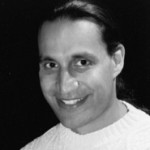
Michael Manga
Michael Manga was awarded the James B. Macelwane Medal at the AGU Spring Meeting Honors Ceremony, which was held on 29 May 2002, in Washington, D.C. The medal recognizes significant contributions to the sciences by a young scientist of outstanding ability.
Citation
“I am pleased to give the citation for Michael Manga for the James B. Macelwane award. Michael is an outstanding young scientist who has made significant contributions to geophysics. He also reflects Macelwane’s deep interest in teaching and encouraging students.
“I especially enjoy being at a university where I interact with unusually creative and able students, who quickly move on to become creative, able, accomplished, and respected colleagues. Michael made the transition from student to colleague early in his graduate career, and I have continued to learn from him ever since. He is a gentle person and teacher, who is quiet and reserved while being direct and honest. He possesses deep physical insight, analytic ability, and a nose for getting to the essence of a problem through a combination of experiment, analysis, numerics, and observation.
“Michael has been incredibly productive, and his 60 or so publications attest to his broad interests and abilities. His contributions cover experimental and theoretical fluid mechanics (16 papers), mantle flow and convection (10 papers), properties of magmas and volcanology (11 papers), flow of groundwater and hydrology (14 papers), and planetary science (four papers) and diamond anvil research (four papers). In each area, his contributions have been original and important. He combines careful (and sophisticated) fluid mechanics with insightful application to geophysical observations and understanding physical processes.
“Michael came to graduate school from McGill with his own source of curiosity. He saw the relevance of what he was learning in courses in Earth science, engineering, and math, and put the ideas together to produce new insights and results. He came up with his own questions, and sought advice when he needed it-then he would go off to solve problems. He did the major part of his work with Howard Stone, who is an inspired teacher and mentor. Michael was an inspired student. Under Howard’s guidance and inspiration, Michael started state-of-the-art boundary integral calculations to investigate the dynamics of bubbles and diapirs. He sought out the G. I. Taylor style of fluid mechanics, and did elegantly simple experiments to extend his insight into the mechanics of rising bubbles that he had already addressed numerically. I believe that he may have gone beyond Taylor when much later he demonstrated waves of rising bubbles in foam by distributing glasses of Guinness at an AGU session.
“As a Miller Fellow at Berkeley, Manga ex-tended his interests to diamond anvils and hydrology. As a grad student, he had noted the numerous ads in Eos for hydrology positions. Perhaps this inspired him to start work in this area (although I really think the first-rate colleagues he had at Berkeley did it).
” After moving to the University of Oregon, Manga did some laboratory convection experiments, and investigated the transitions of convective patterns. He used the experimental results to analyze the development of thermal boundary layers, and has related this to simple models that account for the observations. This style-laboratory experiments, numerical calculations or simple fluid mechanical models, and extrapolation to geophysical problems-is characteristic of his work. He also addressed more problems in volcanology, and started field projects in hydrology (with his wife Susan as a field assistant). He used spring and streamflow rates to investigate subsurface flow processes, including time scales for flow, heat transport, and characteristics of subsurface aquifers. Since returning to Berkeley in 2001, Manga has maintained his remarkable productivity.
“Manga is a gifted teacher and advisor and mentor of graduate students. He engages students and introduces them to new problems and ideas as well as to other faculty. He started giving undergrads hands-on experience when he was still at Harvard, where he received rave reviews as a teacher. He is generous with his ideas and advice, and takes the time to straighten out misconceptions that others may have, even if he has to write a paper to do it. He is known for his scholarly and high-quality teaching style, and has received the Ersted Award for Distinguished Teaching at Oregon.
“I take great pleasure in having Michael as a former student, a colleague, and friend. I only wish that I could keep up with him!”
—RICHARD J. OCONNELL, Harvard University, Cambridge Mass.
Response
“When the beige AGU envelope arrived in February, I eagerly opened it expecting to read yet another letter thanking me in advance for agreeing to serve on some vitally important AGU committee. Learning that I was selected to receive the Macelwane Medal was a pleasant surprise, to say the least. It is indeed an honor to accept this recognition, and I share the honor (but not the medal) with all my collaborators because our science, perhaps more than ever before, is a cooperative venture.
“My teachers and collaborators, and even some administrators, played key roles in making me stand up here. This is not the place or time to thank everyone by name, but I do want to point out the vital role that unselfish mentoring by others played in my professional development. My first exposure to scientific research, beginning in junior high school, was provided by the Macoun Field Naturalist Club at the Natural History Museum in Ottawa. Academic and government scientists, in particular Stephen Darbyshire, spent evenings and weekends helping us explore and appreciate the natural world. In fact, my first two written scientific contributions were based on these experiences. As an undergraduate physics major, I quickly became captivated by the unsolved and yet strangely understandable problems in the geophysical sciences. And I was fortunate that my undergraduate advisor, Jafar Arkani-Hamed, was willing to spend so much time helping an undergraduate learn how to write and debug code, and ultimately how to do research. My graduate advisors, Rick O’Connell and Howard Stone, taught me to appreciate rigor and critical thinking. My postdoc advisor, Raymond Jeanloz, introduced me to the human side of science. And, once I found a job, Kathy Cashman, Dana Johnson, and my wife Susan provided models for how to maintain balance in an academic life.
“A large part of my academic life involves teaching. I am often asked by students and their parents which part of my job I like better: research or teaching. I think this question conveys a misunderstanding of our responsibilities as faculty members, and perhaps reflects our collective shortcomings in communicating with our students and the public. I have always found that my involvement in research is essential in order to convey the excitement of our field and to thoughtfully answer questions. I am not ashamed to admit that a large fraction of my research ideas and new research directions have grown out of teaching and questions from perceptive students. Most important, it is through interactions with students that I am forced to understand and appreciate our science. For this reason, I am especially grateful to my 16 different student co-authors, who have given me the opportunity to vicariously share the joys of discovery and the pain of disappointment. Their enthusiasm and questioning continually remind me that while much has been learned, there is much more to be discovered.
“I feel fortunate to have had the opportunity to study the Earth and other planets. As my 4-year-old son Max explained to his kindergarten teacher on the morning I wrote this acceptance, ‘Daddy studies rocks and red hot lava; that is pretty cool, but not as cool as being a paleontologist.’”
—MICHAEL MANGA, California Institute of Technology
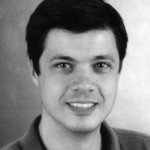
Vassilis Angelopoulos
Vassilis Angelopoulos was awarded the James B. Macelwane Medal at the AGU Spring Meeting Honors Ceremony, which was held on 29 May 2002, in Washington, D.C. The medal recognizes significant contributions to the sciences by a young scientist of outstanding ability.
Citation
“Any discussion of Dr. Vassilis Angelopoulos’ contributions to space physics must begin with ‘bursty bulk flows,’ or BBFs. His Ph.D. thesis work was the first to identify this phenomenon, but more important, to understand its critical importance to energy flow in Earth’s magnetosphere. He has the remarkable ability to blend a keen theoretical eye with a knack for data analysis, which has served him well throughout his professional career. His Ph.D. and subsequent work provided a stunning new context for theorists and experimentalists alike and helped establish a renewed sense of progress in magnetospheric physics, an area that, in retrospect, had remained stagnant for many years. The term ‘BBF,’ now squarely associated with Angelopoulos, is a new paradigm by which space physicists view the dynamics of the Earth’s magnetotail.
“Dr. Angelopoulos’s BBF insights breathed new life into many old problems. He showed that energy transport in the magnetosphere is accomplished by short-lived, spatially localized pulses of energy flow from the Earth’s magnetotail toward the near-Earth environment. His recent work tied these flows directly to geomagnetic substorms, a phenomenon that has long been a geophysical enigma. He identified a new class of underdense bursty flows that were postulated to relieve the puzzle of the so-called ‘pressure balance inconsistency’ in the Earth’s tail, a long-standing theoretical problem. These latter flows he linked to activations of the poleward edge of the auroral oval, another phenomenon in auroral physics that defied simple explanation. His work on BBFs revitalized interest in the near-Earth neutral line model for substorms and tied together, in a quantitative and unifying manner, substorm physics with the global plasma circulation in Earth’s space environment.
“In a more theoretical realm, Dr. Angelopoulos showed that the magnetotail’s instantaneous circulation pattern is ~10 times more variable than its average and exhibits non-Gaussian probability distributions, explainable as intermittent turbulence. This work renewed interest in plasma turbulence and in the role of self-organized criticality and thereby contributed significantly to understanding phenomena and resolving theoretical dilemmas that had been open for twenty or more years. In short, his research did not merely push the discipline ahead in one focused area; rather, it helped reshape our comprehensive view of magnetotail physics and, more generally, the physics of magnetized plasmas.
“In addition to being a proven theorist and data analyst, Dr. Angelopoulos reinvented himself one more time to become a recognized experimentalist. His contributions to geophysics as an experimentally minded scientist have already been significant. Dr. Angelopoulos has repeatedly pointed out that both the bursty bulk flows and the instantaneous plasma fluctuation field are spatially undersampled with present satellite missions. He has been a strong advocate of a new line of space missions to explore the wave number space of magnetospheric plasma processes, termed ‘constellation class’ missions. He has vigorously pointed out the importance of dense multi-point sampling of magnetospheric plasmas at grid-size ranges of 0.5-10 RE. Dr. Angelopoulos also established his own experimental program to help identify the technologies needed to enable such missions; as such he became an expert in small satellites.
“Dr. Angelopoulos has been a strong community advocate for missions whose objectives extend beyond his own interests. He suggested the formation, and participated in the deliberations, of a NASA science and technology definition team that delineated the scientific objectives of future multipoint missions. He also helped mobilize the science and technology community on this matter (for example, by organizing a special Fall 1997 AGU Meeting session on the magnetospheric constellation missions), and he edited a book that incorporated the community’s suggestions.
“In short, Vassilis Angelopoulos’ accomplishments belie his youth. He is an internationally recognized theoretician, data analyst, and experimentalist with a paradigm-changing accomplishment already to his credit. He is a leader among leaders.”
—CHARLES F. KENNEL, University of California, San Diego
Response
“I am deeply honored by this award and humbled by the legacy of previous recipients. It is a great pleasure to be nominated by Charlie, my scientific father. Charlie’s influence transcends the realm of science because by inspiring he brings out the best in you. I felt like the strangest 10-year old on the block when I would devour aviation and space magazines while vacationing in the Greek islands. Charlie taught me to appreciate how privileged we scientists are to be able to work on something we care so deeply about. I only wish I had known this back then. He also taught me that despite common perception, scientists are an utterly social breed. This honor indeed is a reflection of my profound and strong interactions with a distributed network of peers.
“At UCLA, Ferd Coroniti, Margy Kivelson, Bob McPherron and Chris Russell (another Macelwane awardee) each had a unique influence on my thinking. In particular my discussions with Charlie and Ferd on transport, turbulent flows, reconnection, tearing and ballooning modes, helped guide my analysis of BBFs using AMPTE data which Wolfgang Baumjohann was providing and enthusiastically helping interpret, albeit remotely. Supported by an IGPP/LANL grant, we proceeded to incorporate ISEE data, only to verify, to our amazement, the repeatability of our conclusions on the burstiness of magnetotail transport, on the average equatorial flow profile and on the turbulent nature of the instantaneous flow pattern. During multiple visits to LANL I interacted with a resourceful and stimulating science team. In particular Peter Gary’s contagious affection for the plasma dispersion function and Jack Gosling’s insight on electrostatic analyzers brushed off and stuck. I can undoubtedly trace the seeds of my subsequent evolution in ideas derived from these graduate school experiences as molded by our daily discussions with Charlie.
“At APL, I was introduced to the ISTP program, the Geotail satellite, and energetic particle detectors. I was fortunate to be in the company of accomplished instrumenters Don Mitchell and Nick Paschalidis and keen phenomenologists Tony Lui, Dave Sibeck and Victor Sergeev, then visiting from Russia. Amongst APL’s avant-garde engineers the ideas about feasibility of spacecraft and instrument miniaturization took hold; their importance for the field’s post-ISTP future became apparent. They were reinforced by frequent discussions with Boston University’s Harlan Spence and George Siscoe.
“Recently at SSL, I have been blessed by interactions with a group of engineers that know instruments and spacecraft inside-out and in a ‘holistic’ way. The lean academic environment forces each person to wear many ‘hats’ and encourages innovation. This cultivates the traits necessary for spacecraft miniaturization and Constellation class missions. The availability of data from Geotail, WIND, FAST and POLAR (and more recently Cluster) provided the necessary scientific ammunition to promote multipoint sampling. Forrest Mozer is my mentor and source of tremendous encouragement. Thanks to him I was able to advance my science objectives in self-organized criticality, in probing the scale-size of flow bursts, and more recently in monitoring electromagnetic coupling between the tail and the ionosphere, while simultaneously evolving in the area of instrumentation and mission design. Chuck Carlson and Bob Lin were critical in this shift, eagerly providing advice and continuously sharing experiences.
“I am forever indebted to my parents who selflessly encouraged and endured the loss of a child to science abroad. I am grateful to my wife, Mary, for her support during my frequent absence from home and absent-mindedness at home.
“I would not be here today without the American society’s openness: it empowered me, through a Fulbright fellowship, to strive to fulfill my dream. Acceptance and, indeed empowerment of diverse cultures within a competitive entrepreneurial environment are American ideals that we scientists are effective missionaries of, through our international social networks. These ideals were best portrayed by the demeanor and attitudes of my UCLA office mate and friend Max Hammond who tragically perished on September 11. But Max’s spirit does live on in the hearts and minds of all scientists. It is the active propagation of these ideals, never to be taken for granted, that will win the ideological war of the 21st century. To this American spirit I mostly credit this award; in its name I would like to accept it.”
—VASSILIS ANGELOPOULOS, Space Science Laboratory, University of California, Berkeley

Daniel P Schrag
Daniel P. Schrag received the Macelwane Medal at the 2001 Fall Meeting Honors Ceremony on 12 December, in San Francisco, California. The medal is given for significant contributions to the geophysical sciences by young scientists of outstanding ability.
Citation
“My perception of Dan’s intellectual character leads me to start with his personal Precambrian. Dan’s education began at the Columbia Greenhouse Nursery School and Manhattan’s West Side Montessori School. From third grade onward he attended the schools operated by the Ethical Culture Society, a bastion of progressivism founded in 1878 by Felix Adler. The high school is the Fieldston School, where the physics laboratory is named after one of the alumni, J. Robert Oppenheimer.
“He was first listed as an author on a scientific paper during his sophomore year in high school, and during his senior year he was a national finalist in the Westinghouse Science Talent Search. That early work dealt with cellular immunochemistry. Earl Zimmerman, in whose lab Dan worked at the Columbia University College of Physicians and Surgeons, had given Dan responsibility for a small portion of a large project. It turned out to be more complicated than expected, but Dan was not inclined to give up. Moreover, the lab ran democratically and there was a great deal of interaction. Dan spoke up, worked hard, and, in spite of his youth, progressed from nuisance to productive collaborator to stimulating friend. A pattern was thus established.
“That privileged education worked, to say the least. It yielded a perpetually young man for whom thinking and science are fun. Influences from those of us who came later have been collegial rather than didactic. Dan enjoys nothing more than a discussion of, or, better, a debate about, ideas. This usually begins, and continues, with a challenging of assumptions. He’s not defensive and doesn’t mind being wrong. You’ll feel better about the conversation if you don’t mind being wrong either. Dan makes large leaps in thinking and catalyzes them in others.
“As an undergraduate at Yale, Dan was hooked on geology when Danny Rye told a class that people made progress in understanding the Earth if they were willing to ‘think outrageously.’ He completed majors in both geology and geophysics and political science. His senior theses dealt with a problem in economic geology and with changing interpretations of the politics of Robin Hood. He hoped to join the Congressional staff, but Danny and Brian Skinner encouraged him to try graduate studies. Dan chose Berkeley. There, he found a stimulating and challenging mentor in Don DePaolo.
“In his work, Dan combines a mastery of observational and analytical technology with a deep and insightful understanding of major problems in the Earth sciences. This duality appears first in his dissertation, which dealt with diagenetic effects on oxygen isotopes in marine carbonates and related effects on pore waters. With advice from Frank Richter, Dan modeled the relevant processes and ultimately reconstructed the abundance of oxygen-18 in seawater at the Last Glacial Maximum. The resulting dissection of temperature and ice-volume signals showed that earlier estimates of ocean temperatures had been much too warm and provided new mass budgets for the Laurentide and Fennoscandian ice sheets.
“Dan accepted an assistant professorship at Princeton and, with his coworkers, produced highly resolved records of seasonal variations in the abundance of radiocarbon in surface waters of the tropical Pacific. In work with Mark Cane and his students, Dan showed that these unexpectedly large and previously unrecognized signals could be cleanly interpreted in terms of changes in the circulation of surface waters.
“Moving to Harvard 3 years later, Dan quickly joined forces with Paul Hoffman to study the enigmatic carbon isotopic variations that accompany the geologic evidence for widespread, sea level glaciation at tropical latitudes during the late Proterozoic (Joe Kirschvink’s ‘Snowball Earth’). Mass balance required that nearly all carbon added to the sedimentary inventory during some time intervals be in the form of carbonate rather than organic material. Eliminating the impossible, an unproductive ocean on a planet with wide temperature contrasts, Dan happily explored the outrageous. His suggestion that the cap carbonates are the products of a prompt oceanic titration of atmospheric carbon dioxide has been the key to an entirely new view of this crucial interval of Earth history.
“For these accomplishments, others that I do not have space to mention, and, most of all, for accomplishments that lie in the future, I am pleased to recognize Daniel Schrag as a 2001 Macelwane medalist.”
—JOHN M. HAYES, Woods Hole Oceanographic Institution, Mass.
Response
“Thank you, John, for your kind words. It is claimed that Sir Isaac Newton once said, ‘If I have seen further it is by standing on the shoulders of giants.’ I think he was speaking of Galileo, who died in the same year that Newton was born.
“I don’t mean to make any comparison with Newton or with Galileo—but one of the wonderful things about receiving the Macelwane medal is that it gives me the opportunity to thank some of the people who have lent their shoulders to me in the last several years. Whatever contributions I have made, they have all been with the help and support of others. Some have been giants, some have been teachers, some have been students, most have been friends. The full list is far longer than what I can read to you here, but I will try now to mention a few. I know that it can be quite dull to sit here and listen to a long list of names, but it is important to me to say these names, so please bear with me.
“In my second year at Berkeley, I was a floundering graduate student, with little self-confidence, and little enthusiasm for geology or science in general. Don DePaolo had faith in me when few people did. He returned my confidence and rekindled my passion for science. Many of you are probably aware of Don’s brilliant mind, and his incredible scientific intuition, but I can attest as well to his patience, his kindness, and his great generosity. One of the great gifts that Don gave me was a trip the University of Chicago to meet Frank Richter. During that and several later trips I took to Chicago to work on modeling, Frank opened my eyes to the joys of discovery, and raised my expectations for what I should achieve. He was critical and supportive, and always approached science with curiosity and good humor. These two mentors, Don and Frank, together and separately, encouraged and inspired me. Most of all, they taught me how much pleasure one can get from working on a scientific problem, and I wish to thank them for that most of all.
“But Don and Frank have not been the only mentors who have guided me. Michael Moore, a graduate student with me at Berkeley, took me to Indonesia, introducing me to coral reefs, thoughts about El Niño, and a love for field work in remote places. John Hayes invited me to Indiana for a semester as a post-doc, and opened my mind to the possibilities of analytical geochemistry. Paul Koch and Francois Morel looked after me as new faculty at Princeton, and expanded my views of science with their broad intellects and deep curiosity. Mark Cane patiently taught me about the oceans and climate, among other things, and continues to be my most important sounding board for new ideas. Michael Bender has listened to my ideas, always offering insight and perspective. And Wally Broecker, encouraged, inspired, and critiqued me through the years, and remains a great influence on me as he is to many others.
“And there have been many others. First, there are my students and post-docs, Heather Stoll, Tom Guilderson, Keith Rodgers, Konrad Hughen, Jane Alexander, Katharina Billups, Pascale Poussart, Ros Rickaby, Sasha Van Dusen, and MaryLynn Musgrove, not including scores of undergraduates. Each one deserves specific thanks for their scientific contributions, for all they have taught me, and for their patience with me. Ethan Goddard has been my laboratory manager at Harvard, and contributes his kind and gentle spirit to everything that is done in my group.
“I thank my mentors at Yale: Danny Rye and Brian Skinner.
“At Berkeley, I was taught by an exceptional group of graduate students, Rick Murray, Don Snyder, Dave Montgomery, Jay Pulliam, Tom Johnson and several others. They provided the core of my education in geology, and the source of much fun and adventure.
“As a graduate student, I was new to paleoceanography, but intent on promoting some controversial and perhaps even threatening ideas. Among the young paleoceanographers, three people, Lowell Stott, Jim Zachos, and Howie Spero, made time for me. It might have been easier to brush aside a brash young student, but they were patient, and helped introduce me to a field I had little contact with at Berkeley.
“At Princeton, I had exceptional colleagues including Jorge Sarmiento, George Philander, Tony Dahlen, Guust Nolet, Carlos Martinez Del Rio, Dan Rubinstein, and others.
“And at Harvard, my colleagues have created for me an intellectual playground. Paul Hoffman has been a friend and teacher, and a companion on the continuing scientific exploration of the snowball Earth. And my daily interactions intersect with so many: Mike McElroy, Steve Wofsy, Brian Farrell, Jim Anderson, Andy Knoll, Missy Holbrook, Rick O’Connell, Jeremy Bloxham, John Shaw, John Holdren, Bill Clark, and recently Ann Pearson. Each one of you contributes to the excitement I feel when Max and I walk to work every day.
“As I hope you can tell, for me, science is a social process. By this, I don’t mean the social context for our science, the relationship between understanding the Earth and the fate of human society, although this has always been of great interest to me and a motivation for some of my work. What I mean is that doing science is a social process. Ideas are created and refined from conversations with others. Arguments are framed, assumptions are questioned, but all through time spent with colleagues and friends, and hopefully with respect and good humor. There are so many people to thank for this: Jeff Severinghaus, Gidon Eshel, Ralph Keeling, Gideon Henderson, Edouard Bard, Lou Derry, Jess Adkins, David Lea, Maria Zuber, John Grotzinger, Dianne Newman, Doug Erwin, Sam Bowring, Ed Boyle, Lee Kump, Gerry Ross, Jerry Mitrovica, Arjun Heimseth, Peter DeMenocal, Dave Battisti, Jean Lynch-Stieglitz, Lonnie Thompson, Paul Falkowski, Jerry McManus, Danny Sigman, Harry Elderfield, Sandy Tudhope, and so many more. It is these people that continue to make science so much fun. To return to Newton, let me simply say that by putting our shoulders together, we all see further. And enjoy the ride a lot more.
“Again, thank you for this great honor.”
—DANIEL P. SCHRAG, Department of Earth and Planetary Sciences, Harvard University, Cambridge, Mass.
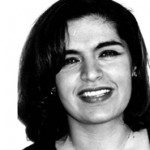
Azadeh Tabazadeh
Azadeh Tabazadeh received the Macelwane Medal at the 2001 Fall Meeting Honors Ceremony on 12 December, in San Francisco, California. The medal is given for significant contributions to the geophysical sciences by young scientists of outstanding ability.
Citation
“It is my great pleasure to join in recognizing Dr. Azadeh Tabazadeh’s talent, accomplishments, and promise as memorialized in the Macelwane Medal. Azadeh is noted for her many applications of physical chemistry to problems of importance in atmospheric science. She is an inspiring young scientist, willing to help others as shown by her wide collaborations in the community, but also very forceful in presenting her own ideas.
“Dr. Tabazadeh first came to the atmospheric science community’s attention through her graduate work at UCLA with Howard Reiss and Rich Turco. She initially explored the role of volcanic eruptions in injecting chlorine compounds into the stratosphere. Volcanic gases are rich in chlorine, which if it all reached the stratosphere would overwhelm the anthropogenic contributions of chlorine to the stratosphere. Therefore, reductions in anthropogenic chlorine emissions such as occurred in the Montreal Protocol would have been fruitless. Azadeh showed that the chlorine would be removed by precipitation in the moist rising volcanic column before it could enter the stratosphere. This paper ended twenty years of debate about this subject through its thorough analysis and plausibility.
“Azadeh then turned her attention to polar stratospheric clouds, the agent responsible for the formation of the Antarctic ozone hole. These clouds were originally thought to be composed of solid hydrates of nitric acid. However, observations seemed to be inconsistent with such hydrates. She examined the physical chemistry of sulfuric acid/nitric acid/water mixtures and showed that ternary liquid solutions could exist in the stratosphere. This paper, as well as independent studies by others, paved the way to understanding the behavior of a large fraction of these clouds. Such understanding has been one critical factor in the ability of the science community to convince policy makers that loss of ozone in the polar regions was understood, and that regulations of harmful chemicals could be justified.
“I was fortunate to collaborate with Azadeh after she moved to NASA’s Ames Research Center in 1994. She is now a member of the research staff at Ames. Azadeh was the recipient of a Presidential Early Career Award for Scientists and Engineers in 1998, which resulted in a visit to the White House. During the past several years, Azadeh played a significant role in a number of analyses of satellite data that shed further light on the properties of polar stratospheric clouds and their impact on stratospheric chemistry. For example, her work with Michelle Santee challenged views widely held in the stratospheric chemistry community concerning the mechanisms by which nitric acid is removed from the stratosphere. Such denitrification is a critical component in predicting the loss of ozone in the stratosphere during the next hundred years. Azadeh showed the importance of denitrification to continued and expanded ozone loss in the Arctic as greenhouse cooling lowers stratospheric temperatures. She provided the first physical-chemical theory of how large particles nucleate which allows a quantitative examination of the denitrification process. She has also inspired and challenged a number of laboratory studies of aerosol physical chemistry, which has helped in the rapid expansion of this area of research.
“Dr. Tabazadeh’s work has not been limited to the stratosphere. She has made important contributions to understanding the formation of ice in the upper troposphere, a critical issue in cirrus cloud formation. In addition, she has investigated the removal of nitric acid from the upper troposphere by its interactions with clouds and with mineral or organic aerosols. These papers are important contributions both to atmospheric chemistry and cloud physics.
“Azadeh has made major contributions to geophysics already in her career. She is energetic, willing to challenge accepted dogmas, and daring enough to overturn them. Moreover, she is an unselfish collaborator who is already working with a broad array of other scientists to help them with their studies. For these reasons, Azadeh is deserving of recognition through the Macelwane medal.”
—OWEN B. TOON, Atmospheric and Oceanic Science Program, University of Colorado, Boulder
Response
“Thank you very much, Brian, for your overly generous citation. I know that I am standing here tonight because a distinguished group of scientists decided that I deserve to receive this honor.
“It has been a privilege for me to work and collaborate with Brian Toon, a former NASA senior research scientist. Brian is not only a brilliant scientist, but he is also a very kind person with a gentle and encouraging personality. His character along with the depth of his scientific knowledge made it possible for me to start trusting myself early on in my career. Jack Kaye, the director of Earth Science Research Program at NASA headquarters, has been a true supporter of my work since my early days in graduate school. When you are as young as I was and some high-profile program director at NASA believes in your work, then you too will start believing in yourself. I am also grateful to Estelle Condon, my boss, for working so hard to make sure that our efforts at NASA Ames are recognized and appreciated by the scientific community. Overall, this medal truly belongs to NASA for continuously encouraging and supporting my work over the last decade.
“I also thank my husband, Mark, for his love and support and our children, Dionna and Daniel, for bringing so much joy into our lives. Dionna once asked me, ‘What do you do at your work?’ I told her, ‘I am a scientist.’ She asked, ‘What is that?’ I told her, ‘I study the clouds, rainbows, and many other interesting things that you often like to paint.’ She said, ‘Well, I also like to paint dinosaurs, and I don’t think I want to be a scientist. I want to be a bone collector when I am all grown up.’ Luckily, what she meant was to take all her friends to a desert (and not a cemetery) to dig for dinosaur bones. She also tried hard to convince me not to worry too much about those clouds because they are always there in the sky for everyone to see, whereas dinosaur bones are hiding in the sand waiting for ‘little’ people (like her) to find them. At last I told her, ‘If you work really hard, you will be the most famous grown-up bone collector on the Earth.’ In fact, as a little girl my favorite toy was a rare chemistry kit that my uncle Mahmoud brought back from Germany when I was about 7. I use to put the white coat and goggles on and pretend that I was a famous magician who was able to make anything, despite the fact that my little sister Afshan became hysterical whenever she saw me as a magician. My mother accidentally broke the goggles (beyond repair) after a few days. Later, my father’s reading glasses replaced the goggles, and he had to constantly wipe my fingerprints off his glasses. However, he let me get away with it because he knew that I really wanted to play this game, and my little sister was also very excited to see me wear his glasses. Ironically, that fictitious magician is a real chemist today, and our daughter too can transform a bone collector into a paleontologist if she sets her mind to it. So if you happen to know a little girl who has big dreams, make sure she knows that what she wants or pretends to be today can be her tomorrow when she is all grown up.
“Last but not least, I sincerely thank my parents for giving me a second chance in life. Nineteen years ago, a couple of years after the Islamic revolution in Iran, it was just a dream for a young woman to even think of pursing a career in science. In 1982, they left their aging parents (whom they never saw again), their relatives, their friends, and the life they built together for almost 20 years so that my siblings and I could have at least a decent chance in life in the United States. It is because of their unselfish sacrifices that I am living today the life of my dreams.
“In closing, I feel extremely fortunate for being able to share my thoughts with many magnificent colleagues and my life with a wonderful family. Who could ask for anything more!
“I thank the AGU for this great honor, and I thank all of you for your attention.”
—AZADEH TABAZADEH, NASA Ames Research Center, Moffett Field, Calif.
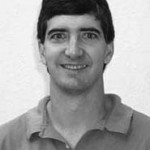
Scott C Doney
Scott C. Doney was awarded the James B. Macelwane Medal at the AGU Fall Meeting Honors Ceremony, which was held on December 17, 2000 in San Francisco, California. The medal recognizes significant contributions to the geophysical sciences by a young scientist of outstanding ability.
Citation
“‘A man of genius makes no mistakes. His errors are volitional and are the portals of discovery.’ — James Joyce, Ulysses (1922).
“After collaborating with Scott Doney for the past 14 years I know what Joyce meant. When working with someone as bright as Scott it inevitably happens that you just don’t understand. And because we’re trained skeptics the question immediately arises, ‘has our friend and colleague made a mistake?’ But we’re wrong; we just didn’t see the portal through which people like Scott had already proceeded. Certainly this is what we reserve these awards of ‘outstandingness’ for; those whose insight lead through the portals of discovery.
“Where should I begin? Scott’s scientific talents are many and varied; go to any bibliographic database and search on ‘Doney,’you’ll find the fruits of his talents shining out from more than 40 (at last count) peer-reviewed journal articles and book chapters. Scott has displayed his prodigious talent in tackling topics of oceanographic interest such as: transient tracer measurement and modeling, oceanic ventilation time scale calculation, denitrification rate estimation, irreversible thermodynamic quantification of air-sea gas transfer, coupled physical-biological modeling dynamics, advances in upper ocean boundary layer modeling, diurnal cycling of photochemical species, ecosystematic modeling of biogeochemical processes, exploration of mesoscale variability in satellite data, global climate system modeling, trace-nutrient limitation of the global carbon cycle, the list seems to go on and on. The overarching theme of Scott’s research is his desire to better understand and model the response of the marine biogeochemical system to climate variability and to predict potential climatic feedbacks via the exchange of CO2 and other radiatively or chemically important gases between the atmosphere and ocean.
“Our collaboration began shortly after Scott came to the Woods Hole Oceanographic Institution as a newly minted Bachelor of Arts (magna cum laude) from the University of California, San Diego. This collaboration, which began at the white board, continues to this day.
“As part of his Ph.D. thesis in the MIT/WHOI Joint Program, Scott worked with Bill Jenkins on the distributions of transient tracers to infer the workings of basin scale circulation and water mass ventilation in the North Atlantic. This work with transient tracers resulted in a clear demonstration that the deep western boundary current is not a single ribbon of flow (as the popular press prefers to display), but, rather, a complicated system of recirculation cells that have enormous import for the implications of how climatically important, anthropogenic tracers (such as CO2) are stored in the deep ocean.
“After completing his thesis, Scott went inland and took up modeling global climatic systems at the National Center for Atmospheric Research, always with an eye to what the data are telling us. Scott and many of his colleagues are working to include, as realistic as feasible, ecosystem dynamics into physical models of all dimensionalities. Starting from simple models applied to the Bermuda area Scott’s coupled physical-biological ecosystem-based models have branched out from one-dimensional to two- and three-dimensional model frameworks of global and regional extent. This modeling activity has led to research using satellite data as one constraint on the patterns emerging. Using geostatistical techniques to quantify mesoscale variability, Scott has clearly demonstrated that this is a direct outgrowth of the interactions of physical and biological processes operating in the upper ocean.
“The above is just a small fraction of Scott’s scientific endeavor, so you might think Scott has no time for anything outside his scientific research. Not so. Scott gives back to our community enormous portions of his intellect and energy driven by an earnest desire to ensure that the insights we gain today are not lost tomorrow. He’s on more committees than I can remember (or think humanly possible); he teaches (upon request) at the University of Colorado, Boulder; and advises several postdocs at NCAR. All of these activities are full of a selfless, non-promoting drive to ensure that the younger scientists around him are encouraged and that we gain understanding of our world so that projections from climatic modeling are based on sound science.
“Scott sees deeper into, knows more about, and synthesizes more significant oceanographic information than most oceanographers I know today. It is my great pleasure to present to you Scott C. Doney, the AGU James B. Macelwane 2000 medalist.”
—DAVID M. GLOVER, Woods Hole Oceanographic Institution, Woods Hole, Mass.
Response
“Thank you, Dave, for that flattering citation, and I am honored to receive the Macelwane Medal. But it is a particular pleasure to have been nominated by Dave Glover, a good friend and colleague since my very first day of graduate school at Woods Hole nearly 15 years ago. Few people have the privilege to devote their lives to something they love. I have been fortunate to turn my fascination as a kid scrambling around the tide pools in southern California into a lifelong adventure (and paying career). No one works in a vacuum, and in my case I am indebted to a host of colleagues, friends, and mentors. Most of you know who you are, so if I forget anyone, please accept my apologies.
“From the time I was very young, my family encouraged my curiosity in science and nature, for which I am ever thankful. With the help of my great aunt, I participated in the SEA program as an undergraduate, drawing my attention from premed back to oceanography. My first exposure to the actual workings of science came through a summer internship at NASA Goddard Institute for Space Studies with Inez Fung and Michael Prather. I met Wally Broecker in a corridor of Lamont that summer and quickly found myself on an oceanographic cruise, dragging large blocks of ice around the deck (and only subsequently running instruments).
“I cannot imagine a better place to study graduate oceanography than the MIT/Woods Hole Joint program. I owe my thesis advisor, Bill Jenkins, a tremendous thanks for teaching me by his example how to think, and all of the members of the WHOI Helium Isotope laboratory for their support and assistance. Despite being 6000 feet above sea level and a thousand miles from coast, the National Center for Atmospheric Research has been a great place to pursue oceanography. I am especially grateful to my two postdoc advisors (Bill Large and Jim McWilliams) and other unofficial mentors (Dave Schimel, Rana Fine, Don Olson, Hugh Ducklow, Inez Fung, Peter Gent). My numerical modeling research would not be possible without the hard work and talents of the NCAR oceanography and ecosystem dynamics section members (particularly Gokhan Danabasoglu and Nan Rosenbloom) and my own research group (Keith Lindsay, Joanie Kleypas, Keith Moore, Ivan Lima, and Roger Dargaville).
“I have been fortunate to collaborate with a great group of scientists (and friends!!) including John Bullister, Ray Najjar, Rik Wanninkhof, Dennis McGillicuddy, Dave Siegel, and many others too numerous to mention (at least in 500 words). I would like to specifically thank all of the participants of the Joint Global Ocean Flux Study program, which has provided the field observations, intellectual community, and scientific vigor upon which I have built much of my recent modeling research. My work would not have been possible without the support of many dedicated program managers at NASA, National Science Foundation, and National Oceanic and Atmospheric Administration as well as the NCAR management. Finally and most important, I want to thank my wife, Andrea Gosselin, who has graciously and (most of the time) cheerfully put up with all of the late nights, long cruises, and excessive travel.”
—SCOTT C. DONEY, National Center for Atmospheric Research, Boulder, Colo.
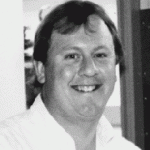
Erik H Hauri
Erik H. Hauri was awarded the James B. Macelwane Medal at the AGU Fall Meeting Honors Ceremony, which was held on December 17, 2000 in San Francisco, California. The medal recognizes significant contributions to the geophysical sciences by a young scientist of outstanding ability.
Citation
“One of the fine moments in the life of a doyen is watching the young shoulder a mastery of our craft and step ahead into the future. Erik Hauri is one such young, and the future is in very good hands.
“Shall I tell you about Erik’s science, or shall I tell you about Erik? Much of the former is in the journals–let me add the latter to the written record. My favorite story about Erik recalls our first meeting. I was at MIT, but with the firm intent to leave in several years. Erik was about to graduate from the University of Miami and was visiting various Ph.D. programs, interviewing them for their strengths and weaknesses. As he sat in my office, I felt I had to tell him directly that I would only be at MIT for 2 more years, in case my presence there was a strong factor in his decision. ‘Oh, that’s OK,’ he said, ‘I think I can learn all you have to teach in 2 years’! I took that to mean that he was confident and a fast learner, not that I was only 2 years deep! Fortunately, I moved to the Woods Hole Oceanographic Institution, and Erik entered the MIT/WHOI Joint Program. He got his 2 years to learn my offerings, but I got 4 years to learn with him and those were some truly memorable years. I should add that Erik raced through the program in 4 years, not the usual 6–maybe I’m only 4 years deep?
“Another story is related to my principal predictor for future success in isotope geochemistry: 1) how soon a graduate student starts traveling to collect samples in the field and 2) the product of time spent in the field times money spent. Erik easily excelled at both. Initially, his thesis project was to compare isotopes in basalts from “end-member” mantle domains with isotopes in mantle xenoliths erupted in the basalts. Of course, he chose to work first on the High-U/Pb (HIMU) and Enriched Mantle 2 (EM2) mantle end-members, which occur in purest form in Polynesia (why not on Jan Mayen or Spitsbergen or Bouvet?–a perplexing question). The trip was initially planned for 2 to 3 weeks, but then, every Friday, I would get a telegram from a new southwest Pacific island saying ‘lots of interesting rocks, but can you wire some more money’? This went on for so long (3 months!), I actually began to think Erik had abdicated isotope geochemistry in favor of a career in sociology and anthropology. Of course, the unsung heroine in this was Erik’s wife, Tracy!
“Soon after Erik finally returned home with possibly a ton of basalt, news of the negative-ion Os isotope mass spectrometry technique began to circulate by geochemical tom-tom (pre-e-mail days). Erik immediately jumped on the idea, reconfigured our NIMA-B mass spec for negative ions and was running Os two days later. With the help of Greg Ravizza’s NiS chemistry, Erik seamlessly added Os to his thesis plate, and 1 year later published the first data on oceanic island basalts that showed a coupling between Os and the other heavy isotopes (Sr, Nd, Pb).
“Simultaneous with this flurry of analytical geochemistry, Erik decided that plume theory, on which the isotopic taxonomy of the mantle was heavily dependent, had too many geophysical loose ends, so Erik embroiled himself in fluid dynamics with Jack Whitehead. Through an artful combination of theory and Karo syrup, Erik and Jack derived evidence for entrainment of deep mantle into plumes; and from this came Focus Zone (FOZO) (Erik was not responsible for the acronym, just the concept; he enlisted me as the acronym consultant!). Erik thereby demonstrated that the prevailing tendency of geophysicists to poach in “isotope country” could be inverted, and this has been one of his hallmarks over the ensuing years. While isotope geochemistry is rife with its own collection of dimensionless numbers, some of Erik’s papers go so far as to discuss isotope ratios and Damköhler numbers in the same sentence!
“So Erik, I offer this beacon for your continued guidance, borrowed from the Spanish poet Antonio Machado:
“Caminante no hay camino, Se hace camino al andar.” (Traveler, there is no path, the path is made by walking.)
“For the wonderful knitting of geochemistry, experimental petrology, and fluid dynamics together into the larger tapestry of the Earth, I commend Erik H. Hauri to you as a Macelwane 2000 medalist.”
—STANLEY R. HART, Woods Hole Oceanographic Institution, Woods Hole, Mass.
Response
“It is with deep appreciation and gratitude that I receive this honor. In looking back at the impressive list of past Macelwane recipients, I’m struck at the caliber and breadth of these scientists and the impact of their work, and I’m humbly grateful that someone decided that I should be placed among them. Isotope geochemistry is a field of science dedicated to obsessing over the accuracy and precision of the relative abundances of atoms in all manner of objects, and it has always been populated, it seems, by a more than generous portion of Earth and planetary science’s lunatic fringe. History has shown that the mass spectrometry lab has classically been a focal point for kooks, rabid individualists, high-flying idealists, hopeless romantics, amateur alchemists, and others with a shaky hold on reality. As you can imagine, to a nascent scientist such as myself, thinking about graduate school and a Ph.D., this made the field of isotope geochemistry immensely appealing. I believe it is this unique combination of mental deficiencies and physical requirements that makes isotope geochemistry a field full of great ideas and inspired thinkers. I am grateful to have been granted the opportunity to represent the field in some small way here tonight.
“Isaac Newton said, ‘If I see further, it is because I have stood on the shoulders of giants.’ It is my deepest pleasure to personally thank some of these giants. First and foremost among the giants is Stan Hart, an advisor without peer and apparently without a credit limit for his spectacularly hapless student in the South Pacific. You can be assured that Stan is more than 4 years deep; however, I should point out that he is the only person I have ever been able to convince of the merits of sending rocks home by air freight. I suspect he really just didn’t want me ranting around the lab for 3 months waiting for the rocks to show up! For these mercies and many, many others, I am forever in his debt. Nobu Shimizu is a geotherapist of the highest caliber and showed me clearly how the relative abundances of atoms could be used to say something concrete about a volcano, a planet, a solar system, or a galaxy. The late Cesare Emiliani introduced me to isotope geochemistry while I was an undergraduate at the University of Miami, and I have him to thank for the manic pleasures of physical chemistry, differential equations, and statistical mechanics. Thanks also to Fred Nagle and Jerry Stipp, who introduced me to the joys of fieldwork and the freedoms of the hills.
“It is my understanding that this award is not one given simply for a nice Ph.D. thesis, and an enormous amount of credit goes to the DTM geochemistry group for supporting my most recent research ambitions. Rick Carlson, Steve Shirey, Conel Alexander, Fouad Tera, Lou Brown, and Larry Nittler took a chance on another osmium guy with only one publication, and I hope that I’ve been worthy of the opportunity they provided me. There are many places with talented people, but few places with truly great groups. The DTM geochemistry crew is a great group and is made even better by the efforts of Jianhua Wang, Mary Horan, and Tim Mock. I also owe a substantial debt of gratitude to Carnegie’s president, Maxine Singer, for her outstanding support of our efforts in geochemistry, and to our estimable director Sean Solomon for being such a wise and forward-thinking leader of our department.
“I owe as well a great many debts of gratitude on the personal side. I thank God that I have been given sufficient insight to make a living through science and raise and support a wonderful family all the while. Although no one in the Hauri clan had ever previously graduated from college, the unshakable optimism of my parents, Karen and Larry, inspired me to chase a dream and pursue something that I would enjoy every day of my life.
“Finally, my gorgeous, wonderful wife of 13 years, Tracy, has endured every late night and every day away from home that I have, but entirely without the insulating benefit of the scientist’s obsession and compulsion which are necessary parts of the crucibles of graduate school, postdocs, and the tenure track. Tracy toiled while I studied, kept us up when I was down, cracked me up when I was cracking up, and put me back on track every time I lost the route. Together with our three beautiful children, Kevin, Matty, and Michaela, she is the rock upon which my house is built. I’ve already received a lifetime of unquestioned love and support, most of the time without deserving it. This award is her award, too. Thank you very much.”
—ERIK H. HAURI, Carnegie Institution of Washington, D.C.
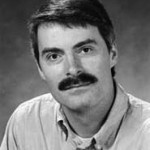
Quentin C Williams
Quentin C. Williams was awarded the James B. Macelwane Medal at the AGU Fall Meeting Honors Ceremony, which was held on December 17, 2000 in San Francisco, California. The medal recognizes significant contributions to the geophysical sciences by a young scientist of outstanding ability.
Citation
“It is a great pleasure to celebrate Quentin Williams’ selection as one of this year’s recipients of the Macelwane Medal, in recognition of his remarkable achievements and tremendous potential for his contributions to our understanding of the properties of materials under extremes of temperature and pressure. Quentin is known to colleagues and students alike as a hyperactive intellect, with a phenomenal repository of scientific information of stunning breadth as well as endless obscure trivia about history and academia. His academic career launched when he completed his A.B. in chemistry at Princeton in 1983 at the age of 19. He changed coasts to pursue his graduate work at Berkeley, where he worked with Raymond Jeanloz and Ian Carmichael on a large suite of projects. His Ph.D. in geology was completed by 1988. Quentin’s thesis work had already elicited international interest when he then became a lecturer and assistant research geophysicist at U.C. Santa Cruz. He moved onto the faculty at UCSC in 1991 and is now a full professor in the Earth sciences department. In 1993 he was awarded a Presidential Faculty Fellowship, which allowed him to match wits with President Clinton in the Rose Garden. This year, he was also recognized with the Mineralogical Society of America Award.
“Quentin’s creative and prolific research contributions on the behavior of Earth and planetary materials under a vast range of physical conditions have had broad interdisciplinary impact on a variety of forefront topics in mineral physics, seismology, geochemistry, petrology, and structural geology. He combines theoretical expertise with analytic tools such as micro-Raman and infrared spectroscopy, X ray diffraction, and laser-heated diamond cells to conduct ground-breaking experiments on material properties. He has contributed extensively to our knowledge of the thermal and chemical state of the Earth’s core, with the pioneering work in his thesis stimulating extensive investigations throughout the past decade. The UCSC laboratory that he has established for vibrational spectroscopy has targeted the properties of structural transformations in melts at high pressure, again providing impetus for extensive theoretical modeling efforts by many in the mineral physics community. Quentin has also pursued in recent years investigations of hydrous phases and possible reservoirs of water and other volatiles in the mantle.
“A true distinction of Quentin’s research has been his interdisciplinary forays. He has collaborated on developing new models of basalt petrogenesis, drawing on uranium series disequilibria; he has worked on deformation indicators provided by mafic enclaves in Sierra Nevada granites; he has worked on deep focus earthquake ruptures and meta-stable olivine wedges in subducting slabs; and he has worked extensively on possible partial-melting of the base of the mantle as an explanation for the seismically observed ultra-low velocity zone. In working with many colleagues and a broad range of observations from geochemistry, structural geology, seismology, and geodynamics, Quentin has demonstrated remarkable breadth of interest and expertise. He brings this breadth to the classroom, constantly challenging students to think outside narrow disciplinary boxes, and in this manner is instilling an interdisciplinary perspective into all of his students and advisees.
“Clearly, much more is yet to come, and I have no doubt that Quentin will continue to excite and dazzle us with his contributions. For the moment, though, it is a timely pleasure to take a breath and simply enjoy the many ideas and accomplishments that Quentin has laid before us.”
—THORNE LAY, University of California Santa Cruz
Response
“Thank you President McNutt and Thorne for those kind words. I am enormously grateful for this award. My notification of it arrived some months ago in a Federal Express envelope from AGU. Given its source, I assumed that the contents had something to do with a committee, or worse yet, contained something to review. Being a horrible procrastinator, I let the envelope languish on my desk for an inordinately large number of days. When I finally opened it, I was pretty shocked, and as evidence that there are some disadvantages to starting early in science, virtually everyone who heard about the award said something along the lines of, ‘I thought you were too old for the Macelwane Medal.’ In fact, one of my own colleagues, Rob Coe, said to me, ‘How can you still get this award? You’ve been around here forever!’ And indeed, I’ve spent the last 12 years at the University of California, Santa Cruz, initially as a researcher in the Institute of Tectonics and then as a faculty member. I was hired at UCSC along with my wife and closest collaborator, Elise Knittle, without whom I surely would not be here today. My stock-in-trade is mineral physics, the study of the properties of Earth materials, and my colleagues at UCSC have provided an extraordinarily exciting, interactive, and intellectually stimulating environment that has allowed me to explore the many linkages between my own discipline and topics as diverse as seismology, geochemistry, structural geology, and archaeology. Indeed, my early interest in high-pressure silicate melt structure, started during my Ph.D. work with Raymond Jeanloz at U.C.-Berkeley, has evolved into a common theme dealing with the critical role of partial melting in Earth processes. From seismically anomalous, likely partially molten zones at Earth’s core-mantle boundary that may control the formation of mantle plumes, to the melting processes that take place beneath mid-ocean ridges, the structure and properties of melts and partially molten zones permeate much of my research. My interest in these crucial problems of planetary differentiation builds on my early interactions with Ian Carmichael.
“Much of my laboratory work has been spectroscopic in nature: probing the bonding properties of melts and minerals at the extreme pressures of Earth’s interior. Strangely enough, I learned an alarmingly large portion of the skills that I use in this work as an undergraduate in chemistry at Princeton University.
“My students at U.C.-Santa Cruz have been indispensable in these pursuits, and this award is certainly as much a recognition of their efforts as my own. My student collaborators Dan Farber, Craig Lundstrom, Claire Closmann, Jessica Faust, Eli Morris, Phillip Cervantes, Henry Scott, and Murray Eiland have each taken me in new and unforeseen research directions. Throughout, deep Earth and high-pressure problems have proved, and continue to prove, to be fertile ground: the incredible unexplored frontier and intellectual challenges represented by studies of the deep Earth, a region difficult to interrogate and harder to simulate, can’t help but produce an abiding fascination.
“In closing, I have to completely gratuitously mention my 4 kids: Byron, Alanna, Lynette, and Benjamin. I mention them not because they had anything substantive to do with this award, but only because they like to see their names in print almost as much as I like to see mine. Thank you again for this award!”
—QUENTIN C. WILLIAMS, University of California Santa Cruz
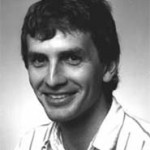
Kenneth A Farley
Kenneth A. Farley was awarded the 1999 James B. Macelwane Medal at the AGU Fall Meeting Honors Ceremony, which was held on December 15, 1999, in San Francisco, California. The Macelwane Medal recognizes significant contributions to the geophysical sciences by a young scientist of outstanding ability.
Citation
“As a chemistry major at Yale, Ken Farley decided to pursue a life in geochemistry. He demonstrated his resolve by doing a senior thesis with me on the distribution of 210Pb in ocean water profiles collected around Antarctica. In his senior year he also went on two expeditions from Scripps with the person who was to be his mentor in graduate school, Harmon Craig. He thereby showed that his interest in geochemistry was indeed serious.
“His impressive thesis work at Scripps was a signal of things to come. He successfully harnessed the powerful tool of rare gas mass spectrometric isotope ratio analysis to the problems of sources of mantle-derived rocks. He showed that putatively primitive materials from the mantle had imprinted in their rare gas complexions both the mantle signature and a surface-derived recycled component. This work has been continued and extended, in collaboration with others, to include all the radiogenic isotopes. The role in defining how the mantle and crust interact as seen in ocean island basalts has been sharpened and set on sensible footing, thanks to his involvement.
“Ken’s attention has recently focused on other fundamental problems of the Earth. His work on the imprint of interplanetary dust on accumulating deep-sea sediments—based on excess 3He measurements—has enlivened the discussion of the variability in cosmic dust flux over time, climate, and sedimentary processes in the deep ocean. He has shown that a stratigraphic history of cosmic dust can be inferred from the 3He indicator. He has also extended his work to understanding the production and retention of 4He in minerals from crustal rocks to infer the history of mountain uplift. Researchers had steered clear of helium in this context, but Ken’s detailed and distinctive approach has changed all that.
“The common property of each of these uses of isotope geochemistry is that Ken does not follow the usual, safe path but, rather, explores relationships required by his thoughtful, heroic nature. His long and diverse bibliography clearly shows the development of ideas since his days as a graduate student, and the papers are all of substance. His research will always be fun to watch. It will never be ho-hum.”
—KARL K. TUREKIAN, Yale University, New Haven, Conn.
Response
“I feel very honored to have been chosen for this award, and I thank Karl Turekian for his kind citation. More than anything else, my receipt of the Macelwane Medal reflects the extraordinary community I have interacted with over the years, and I want to acknowledge those who have made my work possible.
“Like many before me, I was captured into geochemistry by Karl Turekian. Although I was a chemistry major at Yale, a set of random occurrences led me to undertake an undergraduate research project with Karl. After establishing that I was not a refugee from the ‘hard sciences,’ he took me in and sold me on geochemistry. I feel lucky to have been so unexpectedly directed into this field, and I have over the years benefitted greatly from Karl’s wisdom, personal concern, and advice.
“On Karl’s suggestion (a.k.a. order) I chose to work with Harmon Craig at Scripps for my Ph.D. From Harmon and others I learned isotope geochemistry—in particular, the noble gas business that I have adopted as my own. Harmon’s lab was always an exciting (if not easy) place to work, with an impressive diversity of ongoing projects. This diversity made an important impression on me: if all you have is a hammer, then you’d better figure out how to apply nails to every problem.
“When I was offered a professorship at Caltech in 1993, there were many who doubted the wisdom of moving into such a snakepit (“You’re not actually considering accepting are you?”). But after my years with Karl and Harmon, I decided I had already been tested under fire. Fortunately, I have discovered that this reputation is totally inaccurate, and I credit much of my intellectual growth and success to the unique environment at Caltech. It is a pleasure to work at an institution and with colleagues so committed to getting science done. I especially thank Ed Stolper for years of friendship and advice; he provides an extraordinary role model for scientific excellence, integrity, and leadership. George Rossman, Lee Silver, Brian Wernicke, and Don Burnett have spent countless hours explaining to me basic principles beyond my field of expertise, and these invaluable conversations have allowed me to expand my research horizons tremendously.
“The late Gene Shoemaker pointed out the significance of some of my early work on cosmic dust, and his suggestions and guidance led me to a very fruitful area of research. I am sorry that I cannot share my observations with him.
“I owe a debt to past and present members of my research group for their intellectual contributions, discussions, comradeship, and help in the lab.
“A generous Fellowship for Science and Engineering from the David and Lucille Packard Foundation provided me the flexibility to pursue my own research agenda without worrying about the ‘riskiness’ that tends to kill proposals and therefore innovation. It would be wonderful if all junior researchers were allowed such an opportunity to pursue their own ideas.
“Most importantly, I must recognize my family. As a child, my parents never tired of stoking the fires of my curiosity, and I hope I can do as well with my children. My wife Kristen and my two sons, Scott and Ryan, have been an unending source of encouragement, support, and love despite long hours, bad days, numerous out-of-town meetings, and late-night trips to the lab to clean up disasters. I could not have succeeded without them.”
—KENNETH A. FARLEY, California Institute of Technology, Pasadena, Calif.
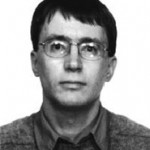
Rainer Hollerbach
Rainer Hollerbach was awarded the 1999 James B. Macelwane Medal at the AGU Fall Meeting Honors Ceremony, which was held on December 15, 1999, in San Francisco, California. The Macelwane Medal recognizes significant contributions to the geophysical sciences by a young scientist of outstanding ability.
Citation
“Rainer Hollerbach is one of the leaders of a very talented group of young theoreticians working on the generation of the geomagnetic field by dynamo action. His work is noted for its originality and thoroughness; its presentation is remarkable for its clarity and lack of obfuscation.
“The Earth’s inner body occupies only about 5% of the core’s volume, and for many years most theoreticians felt that its effect on the dynamics of the core and the generation of the Earth’s magnetic field would be equally small, but—largely through Rainer’s work and that of his collaborators (particularly Chris Jones)—this is now known to be untrue.
“Rotation gives a preferred direction to dynamical processes in the fluid core. This is the basic reason why the magnetic compass needle points approximately to the north. Rotation also gives prominence to an imaginary cylinder that touches the inner core on its equator and is parallel to the rotation axis. This is known as the ‘tangent cylinder,’ and it divides the fluid core into three regions: the northern interior of the tangent cylinder, the southern interior, and the exterior. The dynamics of these regions are rather different, and what occurs in the transition layers between them and near the tangent cylinder is extremely complex but appears to be highly significant to the geodynamo mechanism. Rainer has made these layers his special concern, and his mathematical analyses have brought new insights into the way that they function.
“Most theoreticians, believing the inner core to be unimportant, had modeled it as simply as possible—as either an electrical insulator or a perfect electrical conductor. Rainer was one of the first to investigate, using simplified two-dimensional models, the effect of finite electrical conduction. This led to what is perhaps his best known work, which was in collaboration with Chris Jones and which demonstrated the importance of the electrical conductivity of the inner core on the dynamo operating in the outer core. Rainer and Chris noticed something that had been missed by all previous researchers, but which now in hindsight seems, like all good ideas, to be obvious. They realized that the electrodynamic timescale of the inner core would be long enough to influence the dynamics of the overlying fluid, thus lengthening the effective timescale of MHD processes in the fluid. Their proposal was vindicated in subsequent three-dimensional numerical simulations of the geodynamo.
“Rainer displayed numerical skills in the early development of the Exeter geodynamo model, which led to fresh insights into dynamical processes in the core, some of which may explain how polarity reversals of the geomagnetic field can occur. He has worked on fast dynamos; he has contributed to unrelated areas of fluid mechanics. He is making his mark everywhere, but most of all in geomagnetism. He is, in all respects, a worthy recipient of a Macelwane Medal.”
—PAUL H. ROBERTS, University of California, Los Angeles, Calif.
Response
“Thank you very much, Paul, for that generous citation and for nominating me in the first place. It is a great honor to receive this Macelwane Medal, and I am very grateful for it and for the vote of confidence it represents.
“I have to admit that I stumbled into geodynamo theory more by accident than design. In retrospect, it was the obvious choice for me: my favorite subject as an undergraduate in physics had been Gene Parker’s course on electricity and magnetism, and my favorite subject as a grad student in oceanography had been Rick Salmon’s course on geophysical fluid dynamics. However, at the time it involved quite a few twists and turns. Suffice it to say that I am deeply grateful to my two coadvisors, Glenn Ierley, who first suggested I switch from oceanography to geodynamo theory, and Rick Salmon, who was hugely supportive even after I switched. I wouldn’t be standing here today if it were not for both of them.
“After my Ph.D., I was fortunate enough to get postdoc positions with some of the leaders in the field, first in Britain with Andrew Soward, Chris Jones, Mike Proctor, and David Fearn and then in Los Alamos with Gary Glatzmaier. I feel privileged to have had the opportunity to work with these individuals at a time when we were grappling with some of the most fundamental issues in numerical geodynamo modeling. Working with them was a hugely rewarding experience, and I learned a lot, not only about science, but about collegiality as well.
“It was also during my time in Britain that I first met Paul. In his very generous citation just now, he mentioned that I have made certain contributions concerning the dynamics of the tangent cylinder, but he very modestly neglected to mention that he is the one who first told me about this mysterious tangent cylinder. I remember it well: it was our custom to discuss various problems over lunch in Andrew’s office, and that day I was sketching out how I hoped to include the inner core in our latest model, and Paul, who was visiting at the time, pointed out to me that if I really wanted to treat the inner core properly, I’d also have to think about the dynamics of the tangent cylinder, to which my response was ‘the what cylinder???’ So I’ve learned a great deal from him as well.
“Finally, I’d like to mention that my first exposure to geophysics was through an undergraduate summer job at the Geophysical Institute in Fairbanks, Alaska, where Syun-Ichi Akasofu offered me a job as a programmer, despite the fact that I knew nothing about either programming or geophysics. He said that didn’t matter, that I’d soon learn. I’ll always be grateful to him for giving me that opportunity, and I hope that my subsequent career has justified the faith he had in me then. And so I’d like to close by wholeheartedly endorsing the call that David Bercovici made when he received his Macelwane 3 years ago, that we should all strive to involve undergrads in our research wherever possible. In addition to all the benefits that David mentioned then, who knows, maybe someday one of them will be thanking you in their Macelwane acceptance speech.”
—RAINER HOLLERBACH, University of Glasgow, Scotland
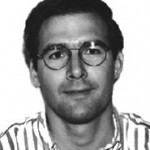
Jeroen Tromp
Jeroen Tromp was awarded the James B. Macelwane Medal at the AGU Fall Meeting Honors Ceremony, which was held on December 17, 2000 in San Francisco, California. The medal recognizes significant contributions to the geophysical sciences by a young scientist of outstanding ability.
Citation
A flagello terraemotus, libera, nos Domine. –Litany of All Saints
(From the scourge of the earthquake, deliver us, O Lord)
This quotation was used by James B. Macelwane, SJ, in his book, When the Earth Quakes
Man is learning to harness for his enquiring use the very wrath of the earth; the tremblings of our vibrant globe are used to ‘X-ray’ the deep interior. Reginald A. Daly, 1928
This quotation was used by Arthur Holmes in his book, Principles of Physical Geology
“Jeroen Tromp has matured scientifically very quickly. In a remarkably short time he has produced several major contributions to geophysics and has earned an international reputation. This has led to his promotion to full professor at Harvard and to the award of the Macelwane Medal.
“Jeroen’s creative impulse became evident when he was still a graduate student at Princeton, only a decade ago. His papers applying JWKB theory and its Maslov extensions to surface waves are elegant and complete. In addition, this work has provided theoretical direction to the more complex problem of three-dimensional wave propagation. The inclusiveness and rigor of Jeroen’s contributions are the marks of an outstanding theoretician.
“Jeroen has written on a variety of subjects, from the structure of the inner core, to surface wave propagation, to uniformly valid body wave theory. It would not surprise me in the least if he were chosen, quite soon, to receive the Inge Lehmann Award for his insightful work on the structure of the inner core. This work amplifies my main point about Jeroen’s research: he is a superb theoretician as well as an expert data analyst. This combination is rare. Some people are adequate, but very few are excellent at both, as is Jeroen Tromp.
“In addition to a body of published research of superior quality, Jeroen (with Tony Dahlen) has published a major treatise, Theoretical Global Seismology, (Princeton, 1998). In my opinion it is outstanding. I read most of it in manuscript form and I believe that it is going to be the primary reference for many decades. The book contains several new results and represents new research as well as a comprehensive presentation of the field. While writing his parts of the book—which are major—Jeroen continued his scholarly research output.
“Most recently, Jeroen has become interested in postglacial rebound and has published a paper (with Jerry Mitrovica) on surface loading on a viscoelastic Earth. It is fitting that he is doing this work at Harvard, where Norman Haskell, with the urging of Reginald A. Daly (himself an early drifter), wrote the first quantitative paper on the subject more than 60 years ago. Thus, as he matures, Jeroen Tromp continues to broaden his interests, always maintaining the first-class quality that we (or at least I) have to come to expect of him.
“That he has been selected to receive the Macelwane Medal is not only an honor and a tribute to his excellence but also a mark of the good taste of the American Geophysical Union.”
—J. FREEMAN GILBERT, Scripps Institution of Oceanography, La Jolla, Calif.
Response
“I am grateful to the AGU for this award and sincerely thank Freeman Gilbert for his elegant and generous citation. Freeman is one of the founding fathers of modern global seismology, and he is also my scientific grandfather. Tony Dahlen, my thesis advisor, earned his Ph.D. under Freeman Gilbert’s and George Backus’ supervision. Needless to say, I consider myself very fortunate to be part of such a distinguished scientific family.
“I am honored to be a member of another venerable scientific family: the Utrecht Seismology Group. This program, first established by Nico Vlaar, later headed by Guust Nolet, and currently under the direction of Roel Snieder, inspired me to become a seismologist and continues to produce an astonishing number of well-trained students. I thank Roel for encouraging me to go to the United States for my graduate education.
“Having read, but not understood, most of Tony Dahlen’s papers, I applied to Princeton. This turned out to be one of the most significant decisions in my life. Tony and I have written quite a few papers together. After I graduated and left for Harvard, we continued to collaborate together on what turned out to be a rather long monograph entitled Theoretical Global Seismology. Over the years we and our families have become very close friends.
“I owe much of my career to my friends and colleagues at Harvard University, in particular, to my geophysics colleagues Jeremy Bloxham, Adam Dziewonski, Goran Ekstrom (who is becoming a Fellow of the AGU this year), Richard O’Connell, and Jim Rice. The Department of Earth & Planetary Sciences at Harvard University provides an exciting, supportive research environment to a dynamic group of scientists.
“For me the excitement of being an academician comes from working together with others. I have been fortunate to collaborate with many talented students, postdocs, and faculty. In particular, I would like to mention my current students Miaki Ishii and Erik Larson (jointly supervised with Goran Ekstrom); postdocs Dimitri Komatitsch, Christiane Stidham (with John Shaw); and Georg Kaufmann and Mark Tamisiea (both with Jerry Mitrovica); my Harvard colleague and structural geologist John Shaw; and my dear friend and Toronto colleague Jerry Mitrovica.
“Finally, I wish to thank my best friend and spouse, Tracey, for her continual love, support, and advice.”
—JEROEN TROMP, Harvard University, Cambridge, Mass.
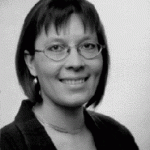
Tuija I Pulkkinen
Tuija I. Pulkkinen was awarded the James B. Macelwane Medal at the AGU Spring Meeting Honors Ceremony, which was held on May 27, 1998, in Boston, Massachusetts. The James B. Macelwane Medal recognizes young scientists of outstanding ability who have made significant contributions to the geophysical sciences.
Citation
“Tuija I. Pulkkinen, of the Finnish Meteorological Institute in Helsinki, Finland, received the degree of Doctor of Philosophy in February 1992. She was the first woman to earn a Ph.D. degree in theoretical physics from the University of Helsinki. Her thesis work was the culmination of several years of intensive analysis and theoretical modeling of the complex, highly time-dependent plasma environment of the Earth. Her thesis was accorded one of the highest honors that can be granted to basic research within the Finnish system. Dr. Pulkkinen completed her doctoral work by carrying out research both in Finland and at the Laboratory for Extraterrestrial Physics at NASA Goddard Space Flight Center in Greenbelt, Maryland. Dr. Pulkkinen has since gone on to make further outstanding contributions in several areas of space research. She is the top young space scientist in her age group and has achieved a level of excellence that is extremely rare for scientists of any age.
“In addition to her Ph.D. degree, Dr. Pulkkinen holds an M.S. degree (University of Helsinki, 1987) and a Licentiate of Philosophy. She recently was accorded the honor of a Fulbright Fellowship and a Visiting Research Scholar position at the Laboratory for Atmospheric and Space Physics at the University of Colorado, Boulder.
“Dr. Pulkkinen’s work combines a remarkably broad array of theoretical tools, mathematical techniques, and analysis methods. She has greatly extended the theoretical models describing the magnetic fields surrounding the Earth, added critically needed time dependence to these models, and compared the theoretical results to a wide array of observational datasets from throughout the Earth’s plasma environs. Dr. Pulkkinen’s papers are models of clarity, conciseness, and thoughtful treatment of issues at the forefront in space plasma physics.
“For the past 2 years, Dr. Pulkkinen’ work has focused on the intriguing issue of energy dissipation at magnetospheric substorm onset. She has become actively involved in magnetohydrodynamic (MHD) modeling of the global magnetosphere and has led several studies that compare data, empirical magnetosphere models, and global MHD simulations. This work has shown both the power of MHD modeling and the deficiencies in such idealized treatments. The lack of thin current sheets in MHD treatments, the failure to handle ion dynamics properly, and the limitations of improper ionosphere-magnetosphere coupling have all been addressed. She has worked with leading MHD simulation teams at the University of California, Los Angeles; the University of Maryland; Los Alamos National Laboratory; Goddard Space Flight Center; and the Naval Research Laboratory to try to improve the global modeling of the magnetosphere using all available tools.
“She has already published over 50 papers in refereed journals, with more than 40 of these in prestigious AGU publications. She has been the lead author or senior co-author on 39 of these papers. Dr. Pulkkinen has published an additional 30 papers in other journals and has delivered some three dozen invited talks, as well as over 150 other presentations with published abstracts at national or international meetings.
“Dr. Pulkkinen has an unparalleled record for a young scientist in the quantity and quality of her oral presentations. Her talks are models of a clear and compelling style. Her presentations are exceptionally well thought out and her talks are invariably fluent and interesting. The more she speaks at conferences and symposia, the more she is sought after as a speaker.
“At a time when most young researchers are just getting established, Dr. Pulkkinen is already exercising extensive leadership skills. She has just been appointed Group Leader for Space Plasma Physics at the Finnish Meteorological Institute. She has management responsibility for 12 scientists and for 7 ground observing facilities throughout northern Scandinavia. She is Chair of Subcommission D3 of COSPAR, Scientific Discipline Representative to SCOSTEP, and Chair of IAGA Working Group III-4, which deals with auroral and polar cap mapping into the magnetosphere. She plays a leadership role on numerous grants from the Finnish government, in addition to her co-investigator roles on satellite and groundbased observing platforms.
“Dr. Pulkkinen’s research and leadership accomplishments are coming forth at an accelerating pace. This is indicative of a career that is headed for tremendous heights. She has already demonstrated outstanding achievements in space research and is one of the preeminent leaders in global magnetospheric studies. The Macelwane Medal of the American Geophysical Union is intended to recognize young scientists of outstanding ability who have made significant contributions in geophysical studies. Tuija Pulkkinen is a young woman who has clearly achieved this exceptional level of accomplishment. She is one of the most eminent and widely recognized researchers in space physics in the world and very deserving of the AGU’s Macelwane Medal.”
—DANIEL N. BAKER, Laboratory for Atmospheric and Space Physics, University of Colorado, Boulder
Response
“It is a great honor to receive the James B. Macelwane Medal, and it is indeed a pleasure to be cited by Dan Baker, who has immensely enhanced my understanding of all aspects of the art of space science. I am particularly happy to be the first Finn to receive the award, and hope that I can contribute to the success of Finnish space science in the future.
“Love and respect for nature grows very naturally in Finland, where forests and lakes are more abundant than urban life. Given my strong interest in pure mathematics from my early teens, the career choice as a scientist was a compromise between the logical and the observable. From my first years at the University of Helsinki it was already clear to me that I wanted to work in a field where observations and theory could work hand in hand.
“After my master’s degree, I started working at the Finnish Meteorological Institute. With excellent expertise and encouraging humor, Risto Pellinen introduced me to a whole host of groundbased observations of the auroral ionosphere available at our institute. I quickly found that my interests were focused on the large-scale processes, especially magnetospheric substorms, and the intercomparison of the groundbased measurements with space-borne magnetospheric measurements. Moreover, I realized that developing models that would facilitate such ground-space comparisons was an area where I had a good chance of making a relevant contribution.
“I visited the Laboratory for Extraterrestrial Physics at NASA’ Goddard Space Flight Center for several months while working on my thesis. I am deeply grateful to Bob McPherron, who was visiting Goddard simultaneously with one of my visits and gave me a unique perspective on substorm research with his detailed understanding of both ground and space measurements and his ability to weave these into a coherent picture of the magnetospheric processes. Dan Baker introduced me to the PROMIS dataset, which was the first opportunity to utilize multipoint magnetospheric measurements together with auroral imaging in the modeling. The empirical modeling work culminated in the prediction of thin current sheet development near the inner edge of the plasma sheet. As these results came at the same time as the first observations, as well as other theoretical predictions of such thin current sheets, they provided a framework for observations of the almost instantaneous response of the inner magnetotail at substorm onset.
“The International Solar Terrestrial Physics Program (ISTP) could not have been better timed for me. The modeling techniques were developed and I had gained experience in utilizing multipoint, multi-instrument observations, and the computer networks suddenly expanded so that data that previously took months to acquire were mine literally with a click of a mouse. A 16-month stay at the Laboratory for Atmospheric and Space Physics at the University of Colorado in Boulder provided a unique opportunity to pursue problems utilizing the ISTP dataset, as well as to interact with the several local groups involved in various fields of space research. The enthusiasm and excitement for scientific problems in the group led by Dan Baker provided an extremely productive working atmosphere when tackling problems in large-scale Sun-Earth physics. I would also like to take this opportunity to thank Mario Acuna and the numerous people at Goddard and elsewhere who have worked innumerable hours to make ISTP the success it now has proven to be.
“In the near future, I look forward to further exploitation of the ISTP and other datasets to extend my understanding of our geophysical environment and the variety of space plasma systems. I also want to contribute to sharing the excitement of science with the general public, especially with children, whose open minds never cease to fascinate me. I would like to acknowledge the role of the Finnish Meteorological Institute, where the Geophysical Research Department has been a tremendous working environment, always supportive of my research there as well as travel abroad. I would like to thank my husband and now 4 year-old son for a rich and happy life outside the scientific world, as well as for their adaptability when science has required long working hours or extended stays away from home.”
—TUIJA I. PULKKINEN, Finnish Meteorological Institute, Helsinki, Finland
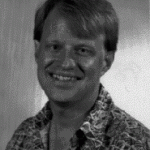
Lars P Stixrude
Lars P. Stixrude was awarded the James B. Macelwane Medal at the AGU Fall Meeting Honors Ceremony, which was held on December 8, 1998, in San Francisco, California. The medal recognizes significant contributions to the geophysical sciences by a young scientist of outstanding ability.
Citation
“As scientists, most of us are privileged to have many happy and fulfilling moments. Among the happiest is the shared enjoyment of recognition of an outstanding young colleague. In awarding the James B. Macelwane Medal to Lars Stixrude, we at once recognize Lars’ exceptional achievements in geophysics and take pride in the knowledge that owing to his clever and persistent prodding, Mother Earth will surely yield some of the secrets we sought to unveil but failed.
“Lars’ unique contributions to geophysics come from a masterful use of theoretical and computational methods in physics and chemistry combined with a deep and broad understanding of unresolved questions concerning the composition, structure, and evolution of the Earth. Most know that Lars is one of a handful of theoretical mineral physicists. He is indeed an excellent practitioner of this difficult field, but there is more to Lars. Those of us who know him well have to agree with Mark Richards when he said that Lars “is virtually a one-man geophysics department.”
“Having his interest in the Earth sparked early by a gifted high school teacher named Bill Harrison, Lars proceeded to build a fertile intellectual foundation by completing a double major in geology and physics. He then joined the University of California, Berkeley graduate program, intending to pursue research in geological tectonics. However, his analytical mind was soon drawn to the mysteries of the deep Earth. Not one to venture onto well-worn paths, he chose theoretical mineral physics, which he saw as a potentially powerful probe of mineral properties under pressure and of temperature conditions outside existing experimental capabilities. A very happy and productive collaboration ensued, in which Lars picked up new ideas at least as quickly as I could supply them. With a prodigious capacity for work, he returned with new ideas that he fully developed in a series of papers on the structure of liquid and glassy silica, the topology of tectosilicates, and the high-pressure thermodynamics of silicate liquids and solids. He went on to assimilate and carefully analyze the available petrologic, mineral physics, and seismic data pertaining to the transition zone and deep lithospheric slabs. The combination of an exhaustive data analysis with theoretical models that are just rigorous enough for the job at hand became a hallmark of Lars’ work that would serve him well in the future.
“Having completed his Ph.D. at the University of California, Berkeley, Lars went on to further develop his already impressive repertoire in the Earth sciences as a postdoctoral fellow at the Geophysical Laboratory of the Carnegie Institution of Washington. Here he embarked on collaborative efforts with Dave Mao, Rus Hemley, and Ron Cohen. A paper with Dave and Rus on lower mantle mineralogy established a new standard for future work. Lars quickly learned computational methods in band structure theory when he became interested in the stability of MgSiO3 perovskite. Some data and model predictions suggested possible temperature-induced phase transformations in this dominant lower mantle mineral. With Ron, Lars showed that the energy needed to change the symmetry of the orthorhombic unit cell is large enough to essentially insure that the distorted perovskite structure is stable throughout the mantle. More recent experiments validated this result. There followed a series of landmark papers that strengthened the status of hexagonal close-packed iron as the stable phase at core conditions and made the daring proposal, based on detailed quantum computations of the elasticity tensor of iron, that a virtually complete alignment of the anisotropic hexagonal grains of iron accounts for the observed cylindrical anisotropy of the inner core. Since then, he has applied this technique to compute the pressure dependence of the elastic anisotropy of forsterite, a mineral that boasts 28 atoms per cell and 14 degrees of freedom. Lars has brought us a long way from the quantum mechanics of simple cubic salts.
“In the few short years since his graduation, Lars has helped to realize the promise that careful theoretical investigations can sharply illuminate the behavior of materials under extreme conditions and can help to predict consequences of specific planetary models, while pointing out fruitful avenues of experimentation and field observations. His contributions to the structure of the transition zone, the chemistry of the lower mantle and the physics of the inner core, and the addition of seismic anisotropy as a realistic diagnostic of mineral composition and mantle are truly impressive. There are others who are able to make very competent first principles calculations, but none do so as creatively for the benefit of geophysics. He is one of the very rare individuals endowed with a combined grasp of geology, geophysics, and fundamental computational physics, and the necessary motivation and energy to capitalize on them fully. He is the exemplary multidisciplinary Earth scientist.”
—MARK BUKOWINSKI, University of California, Berkeley
Response
“Francis Bacon said that ?No pleasure is comparable to the standing upon the vantage ground of truth,” but at this moment, I must disagree. For the joys of science are both private, as when on the threshold of discovery a new picture emerges from the cloak of obscurity, and public, when the discovery is shared with friends and colleagues. I am bound to say that for this moment, there is no greater pleasure than when one’s contributions, however small, are recognized by one’s peers.
“I am deeply grateful to the American Geophysical Union for this award and honored that I have been recognized in this way. Be assured that I have been humbled by the experience. In looking over the history of past recipients, I feel there are none to whom I would dare compare myself. May I see this recognition as a spur to new discoveries; not a destination, but a signpost along the way and a hint that the direction might be true.
“My greatest thanks to Mark Bukowinski, for his words that were too kind and for his profound influence on my thinking as my research advisor in graduate school. Far more important than the skills of geophysics and solid-state physics that I learned from him, though these have been invaluable, has been his uncompromising insistence on careful thought and rejection of easy certainty.
“I feel privileged to have been at the University of California, Berkeley, at a special time. There I felt the excitement of a new adventure in which the richness of the Earth’s interior was being revealed for the first time. I am grateful that throughout my career I have continued to learn from some of the leaders of this endeavor, including Mark Bukowinski, Raymond Jeanloz, and Mark Richards. My appreciation of the Earth’s interior and of the still young field of mineral physics was deepened by my visit to the Geophysical Laboratory, where I had the pleasure of working with Rus Hemley, Dave Mao, and Ronald Cohen. To Ronald Cohen I owe a special debt of gratitude for showing me the power of modern first principles theory and starting me in a direction that I have continued to pursue since. I am grateful also to my former colleagues at the Georgia Institute of Technology for giving me a chance, and to my present colleagues at the University of Michigan for continuing to inspire me and to support my new experimental ventures.
“It was a high school teacher, Bill Harrison, who first awakened my interest in geology and science while I was growing up in Delaware. I remember his boundless enthusiasm for the subject, his dedication to his students, and his message that the power of authority was nothing compared with that of observation. The seeds were planted in fertile ground, for my parents had already instilled in me a lifelong love of learning for its own sake. Without their constant support and encouragement, I would not be here today.
“Finally, my deepest gratitude to my fellow traveler and companion in intellectual pursuit, Carolina Lithgow-Bertelloni. Up the sometimes slippery slopes of career and discovery, she has been far more than muse. Leader as much as inspiration, she has pointed the way and kept our gaze focused on the distant summit. For me, it is our shared journey that invests this honor with meaning.”
—LARS P. STIXRUDE, University of Michigan, Ann Arbor
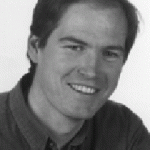
Edouard G Bard
Edouard Bard was awarded the James B. Macelwane Medal at the AGU Fall Meeting Honors Ceremony, which was held on December 10, 1997, in San Francisco, California. The Macelwane Medal recognizes significant contributions to the geophysical sciences by a young scientist of outstanding ability.
Citation
“The Macelwane Medal has the quality of reassuring the geophysics community that the future of our discipline is in good hands. I wish to report today that Edouard Bard provides that assurance in the fields of geochemistry, oceanography, and climatology. Can more be asked?
“The greatest leaps forward in our discipline occur when several approaches to a problem are yoked in the mind of a clever person. While in France, Edouard learned the power of accelerator mass spectrometry in analyzing terrestrial materials for radiocarbon when applied to deep-sea carbonate deposits. He brought this knowledge to the United States as a postdoc at the Lamont-Doherty Earth Observatory. The happy circumstance of coral drilling off Barbados, led by Rick Fairbanks, and the development of precise uranium and thorium isotope measurements by mass spectrometry at Jerry Wasserburg’s Caltech laboratory resulted in the first development of a calibration of variations in atmospheric 14C beyond the range of the tree ring data using data from corals. This calibration not only made possible accurate dating of archaeological artifacts and materials of geological importance but also raised once again the issue of the causes of 14C variations in the atmosphere over time. Edouard’s recent study of the coupling of 14C in trees and 10Be in ice cores, (both radionuclides of cosmogenic origin,) over the past 1,000 years shows the controlling effect of solar activity on the production of cosmogenic nuclides. With this relationship established, the extension to the last 20,000 years is now possible based on the coral data described above.
“However Edouard has long had a commitment to the deep-ocean record thanks to his association with Jean-Claude Duplessy. A critical problem in deep-sea carbonate oxygen isotope records has been the unraveling of how much the glacial cycle variations are due to the storage of low δ18O water in the ice caps and how much to changes in the surface temperature of the oceans. This question is most important for the equatorial seas, where marine paleontological temperature records seem to be at odds with the land-based information on temperature that is based on rare gases dissolved in groundwaters and the changing snow lines on equatorial mountains.
“A technique was developed at Bristol by Brassell and Eglinton based on the double-bond record in alkenones found in the cells of the coccolithophoridae that is responsive to the temperature of the aqueous growth environment: the surface ocean. Edouard’s commitment to understanding the reliability and significance of the alkenone record preserved in deep-sea sediments will go a long way toward resolving the problem of reservoir versus temperature as δ18O controls in tropical planktonic foraminiferan deposits.
“I list these two areas of research to show that Edouard is the person to watch if one wants to learn about how the Earth’s surface climate is recorded over time and how the cosmos influences the climatic and oceanographic tracers found at our planet’s surface.
“Yes indeed, our discipline is in good hands with Edouard Bard. His energy, good thinking, and farsightedness guarantees not only a brilliant future for him but for all of us as well.”
—KARL TUREKIAN, Yale University, New Haven, Conn.
Response
“I am deeply honored to receive this AGU Macelwane medal and particularly happy and proud to be cited by Karl Turekian, one of my scientific heroes.
“My love for Earth sciences started early, in fact as long ago as my memory can recall. My parents cultivated my interest in mineralogy and paleontology and, as a teenager, I spent most of my vacations digging in prehistoric sites and searching for minerals and fossils. After hesitating between studying geology at a regular university and applied sciences in one of the French engineering schools, I found a way to compromise, which was to enter the only engineering school in France that includes the word “geology” in its title (Ecole Nationale de Géologie Appliquée et de Prospection Minière) in Nancy. I later realized that it was merely to work for oil and mining industries and in civil, hydrological, and chemical engineering, but this was the only way to reconcile my parents and to satisfy my aspirations in the future. Fortunately, it allowed me to get exposed to painstaking but rigorous tools in applied math, physics, and chemistry, which enable to truly quantify geological processes.
“I decided that isotope geochronology would be the best way to keep one foot in archeology and the other in chemistry. Thus, in 1985, I joined the new team of accelerator mass spectrometry (AMS) at the Centre des Faibles Radioactivités in Gif-sur-Yvette to prepare a thesis using this technique to measure 14C. From those Ph.D. years I particularly want to thank Maurice Arnold, who taught me the basics of AMS and the painful way to become a careful analyst. The work assigned by my advisor, Jean-Claude Duplessy, was twofold: dating deep-sea sediments and using bomb-produced 14C as a transient tracer in modern oceanography. With a Ph.D. project dealing with Quaternary paleoclimates and the fate of CO2 in the ocean, I inevitably came across the abundant literature of Wally Broecker. The Lamont-Doherty Earth Observatory of Columbia University became the center of my scientific world and, quite naturally, I applied there for a postdoc fellowship.
“My subsequent years at Lamont were very intense, since I was lucky to arrive at a critical time when Rick Fairbanks was planning his drilling off shore Barbados. My second stroke of luck was that there was no accelerator facility at Lamont and thus I was compelled to find something else to do as lab work. At about that time the Caltech isotope geochemistry team published their important papers on Uranium-Thorium dating by mass spectrometry. This was precisely the same approach as using AMS for 14C: counting radioactive atoms directly instead of waiting for them to decay. After some discussions, Rick, Wally, Alan Zindler, Bob Anderson, and Bruno Hamelin all agreed that this would make a good postdoc project and that I could use an old Micromass 30 to implement the new technique and use it to date Barbados corals with high precision. Minor isotopes of uranium and thorium are difficult to measure, and I am particularly grateful to Bruno, who spent days teaching me how to separate and purify these elements and how to analyze them with a thermal ionization mass spectrometer. Without his involvement in this collaboration, we would not have produced the numerous ages of fossil corals that allowed us to study past sea levels and to pursue the calibration of 14C.
“Back in France, Bruno, Daniel Nahon, and Annie Michard convinced me to help them build new geochemistry laboratories from scratch in a newly refurbished building located in the pine woods between Marseille and Aix-en-Provence (CEREGE). This has been a difficult experience that inevitably slowed down our research output but proved to be useful, since we had no real limitations. For example, this allowed me to get involved in applications of organic geochemistry in the field of paleoclimatology. For this recent part of the story I thank my wife and colleague, Frauke Rostek, who now spends most of her working time struggling with gas chromatographs. I also thank Frauke for her love and patience over the years, which allowed her to cope with my torments and anxiety.”
—EDOUARD BARD, Universite d’Aix-Marseille and Institut Universitaire de France
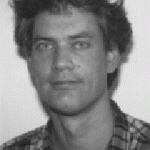
Robert Dirk van der Hilst
Robert D. van der Hilst was awarded the James B. Macelwane Medal, at the AGU Fall Meeting Honors Ceremony, which was held on December 10, 1997, in San Francisco, California. The Macelwane Medal recognizes significant contributions to the geophysical sciences by a young scientist of outstanding ability.
Citation
It is my great pleasure to present Robert Dirk van der Hilst as the 1997 recipient of the James B. Macelwane Medal of the American Geophysical Union. By virtue of his significant scientific contributions, Rob has established himself as an outstanding young scientist of great potential.
“My collaboration with Rob began in 1987 when Guust Nolet and I successfully applied for a NATO grant to support joint research on problems in seismic tomography. As a result of this collaboration, Rob produced, largely by his own efforts, a series of enormously important research papers that advanced our understanding of a fundamental problem in solid earth geophysics: Do the upper and lower mantles function as independent convective systems or does large-scale material flux occur between them? This issue is a long-standing one, with major implications for the thermal and chemical evolution of the planet. For years, there were few real constraints on this problem, but Rob’s elegant studies using seismic tomography to see how cold, and therefore higher velocity, slabs behave near the boundary between the upper and lower mantle at 670-km provided a breakthrough in this important area of research. His results showed that some slabs penetrate this discontinuity, whereas others deform in a variety of fascinating and complex ways. These results have become crucial to all discussions of mantle dynamics and deep earthquakes. Rob’s beautiful color images are thus standard parts of talks and papers by almost any researcher on these topics.
“Rob’s recent paper, “Evidence for deep mantle circulation from global tomography,” published in Nature, can be seen as the culmination of years of effort and may have finally put to rest the debate about layered versus whole mantle convection. His development of high-resolution results for the entire mantle provides convincing evidence of features in the lower mantle related to past subduction, i.e., the 660-km discontinuity is not a barrier to flow. He has been able to interpret these results using mantle flow simulations and reconstructions of past plate motion that are derived from paleomagnetic data.
“Rob’s education at the University of Utrecht gave him a solid background in geology and theoretical geophysics, with applications to seismology, tectonophysics, and geodynamics, that prepared him well for a broad range of research. While working as a Postdoctoral Research Fellow with David Gubbins at the University of Leeds, Rob’s budding career did not go unnoticed. Among several posts offered to him at that time was one in Australia to work with Brian Kennett, where he initiated a new study of the seismic structure of the lithosphere and mantle beneath Australia. The SKIPPY seismometry experiment was really Rob’s brainchild and satisfied his tectonic interests while employing new and complicated interpretation techniques. The rest is history, as a sequence of successful SKIPPY deployments resulted in new data that has not only revolutionized our understanding of the geodynamic evolution of that continent, but has also profoundly influenced our general understanding of continental assemblage. It is not surprising, therefore, that after this solid beginning as a research scientist Rob was only recently heavily recruited and accepted for a post on the faculty of the Massachusetts Institute of Technology.
“Rob is diligent and thorough in all aspects of his work. I believe he stands out among peers in his age group because of his unique combination of versatility, intelligence, pleasant personality, and solid background in both physics and geology. His leadership and experience in field work also give him a dimension that is often lacking in young seismologists, but which is needed in the upcoming generation of research scientists in our field. Rob is also remarkably mature in his scientific and personal development. He typically puts the scientific question first and will then search for the best means to answer it. If he decides he has to learn a new technique, or even a new field, he will do so—and he is one of the few who have sufficient background to be able to adopt this style of work with success.
“I am proud to present Robert Dirk van der Hilst as recipient of the James B. Macelwane Medal. As no one else, he has made the important discoveries about the fate of subducting slabs and brought profound new insight to the problem of global circulation. He is truly one of those rare individuals whose work in the few years following his Ph.D. has made an immediate and lasting impact of major proportions. These qualities—together with the breadth of his scientific activities are the material from which medalists are made.”
—E. R. ENGDAHL, U.S. Geological Survey, Denver, Colo.
Response
“Thank you very much, Bob Engdahl, for your generous citation. It is a tremendous honor to receive the James B. Macelwane Medal, and I am particularly pleased to share this moment with you. I am very grateful for the American Geophysical Union and its James B. Macelwane Medal Committee for their confidence and for bestowing this honor on me. I am proud to be one of the few Dutchmen to receive this award, but I realize that many before me would also have been deserving recipients.
“I first learned about geophysics when my tenth-grade geography teacher showed a video on earthquake seismology and plate tectonics. Fascinated by the subject, I asked him after class for more information and he referred me to work by Vening Meinesz and others. (Promoting our science at high schools works!) That was it. A couple of years later I went to Utrecht University—an excellent breeding ground for geophysicists—to learn more about Earth sciences. I did both my graduate and undergraduate work in Utrecht in an exciting period of expansion of the geophysics program under leadership of Nico Vlaar, and later, Guust Nolet and Rinus Wortel. In addition to deciphering the signals from Earth’s fascinating deep interior, I loved working “hands-on” with rocks at the surface, and I thank Reinoud Vissers for sharing his enthusiasm for structural geology during many field hours together in southern Africa and Spain.
“Under the supervision of Nico and Rinus, I began a graduate research project that aimed to study the tectonic evolution of the Caribbean region. We wanted to understand the relationship between plate kinematics at the Earth’s surface and the structure of (and driving forces in) the underlying mantle. This put me on the seismic imaging track that I would follow for many years to come. I was very fortunate to be able to work with Wim Spakman. A graduate student at the time, Wim quickly became the “de facto” advisor for most of my Ph.D. work and by standing on his shoulders I could see further and make the discoveries for which I am honored today.
“Both in Utrecht and later in Princeton, Guust Nolet has been a continuous source of inspiration. His pioneering use of an array of (semi-) portable broadband seismometers (NARS) for continental imaging was a prime example for the seismometry project that I would later run in Australia. Following Guust’s advice, in 1987 I attended a summer school that would change both my personal and professional life. The introduction to Bob Engdahl of the U.S. Geological Survey initiated a decade of immensely rewarding and enjoyable collaboration. The meeting was also the start of my relationship with Alet Zielhuis, who has remained my dearest companion in life and research ever since.
“I first visited Bob at the survey in the winter of 1987 & 1988; I am sure I gained more from that first visit than Bob did (other than him having good laughs about funny Dutch expressions), but we were both excited about the potential for improving seismic imaging by exploiting different types of seismic data. In 1990 we started the challenging task of reprocessing the vast amount of existing catalog data with the objective of improving source location estimates and associated travel times. In the past five years we have used subsets of this developing data set for inversions of mantle structure of selected subduction systems, but the global data set has now also been used in investigations of aspherical structure of the entire Earth’s mantle. I thank Bob for the many years of friendship and unselfish collaboration.
“Working at different institutes in different countries presented me with opportunities to venture out, try new approaches, and look at previous work with a fresh look. I left Utrecht to work as a postdoctoral fellow with David Gubbins at the University of Leeds. I thank him for giving me the freedom to do what I wanted to do, for involving me in the seismometry project he had just initiated in New Zealand, and for introducing me to the truly fascinating world of geomagnetism. In Leeds I studied the fate of subducting slabs of lithosphere beneath the northwest Pacific island arcs, which formed the foundation for my later studies of the influence of relative plate motion on the interaction of downwellings (slabs) with mantle stratification.
“After two years in Leeds, Kurt Lambeck and Brian Kennett persuaded Alet and me to move down under to join the faculty of the Research School of Earth Sciences of the Australian National University. I am indebted to Brian for offering me the opportunity to execute my ambitious ideas for a seismometry project to study the Australian continent and underlying mantle. He gave me the responsibility of managing what is now known as the SKIPPY project and I am proud to say that over the years we pulled off a project that is now in the process of changing our understanding of the continental lithosphere of Australia. The Australian National University proved to be an ideal base for such a study, in particular because of its field-oriented research and outstanding technical staff. Special thanks go to Doug Christie and John Grant, with whom I spent many pleasant weeks on endless roads in the Australian Outback. Among many other friends and collaborators, I want to thank Kurt and Meg Lambeck, Jean and Myriam Braun, Malcolm Sambridge, Geoff Davies, Ross Griffiths, Widi and Lika for the good time we had in Canberra.
“Delighted and proud, I joined the faculty of the Massachusetts Institute of Technology two years ago. MIT is an amazing place for scientific endeavor. It is a privilege and thrill to be here and to work with such gifted students. I thank my Head of Department, Tom Jordan, as well as my other colleagues for the confidence, support, and for creating such a stimulating academic environment. At MIT I hope to continue the use of seismological studies along with other geophysical observables and geological data to address pertinent geodynamical issues. With world leaders in many Earth science disciplines, MIT is the outstanding place for such an integrated approach.
“One of the pleasures of academic life is working with students. At ANU, Sri Widiyantoro (“Widi”) and I worked on mantle structure beneath Indonesia, and Widi was instrumental in the construction of the first global tomography models based on the new data set that Bob, Ray Buland, and I had produced. Widi graduated in 1997 and is now back at his lectureship at Bandung Institute of Technology, Indonesia. Geoff Clitheroe and I used SKIPPY data to show that the seismic anisotropy of the Australian continent is more complex than in many other continents. In continued collaboration with my Australian colleagues, at MIT I investigate continental structure and evolution with Frederik Simons (from Leuven University, Belgium). Hrafnkell Karason (from the University of Iceland, Reykjavik), and I use improved tomographic models to further our understanding of global geodynamical processes.
“Finally, I wish to acknowledge my family. I thank my parents for their love and support and for trying to understand life in academia. (A “classic” by my father many years ago: “How much does a journal like Nature pay you to publish your article?”) Most important, I thank Alet. Her love has enabled me to carry on in trying times and to make the career moves that I made; I know that some of them were not in her interest and that living far away from her family in the Netherlands has been hard for her. I am very grateful for everything she is for me and for our two wonderful children, Marije and Jelle, who bring perspective and joy to our lives. With them I celebrate this award.”
—ROBERT VAN DER HILST, Massachusetts Institute of Technology, Cambridge, Mass.
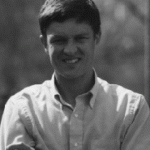
Marc B Parlange
The 1997 James B. Macelwane Medal, given by AGU for significant contributions to the geophysical sciences by a young scientist of outstanding ability, was presented to Marc. B. Parlange at the AGU Spring Meeting Honor Ceremony on May 28, 1997, in Baltimore.
Citation
“As the first-born of a fresh Ph.D., Marc Parlange must have been predestined for a life of research and teaching. He came into the world in Providence, Rhode Island, some 35 years ago only a few weeks after his father had completed his graduate studies at Brown. However, as happens to most of us after graduate school, the family moved on and Marc’s subsequent schooling from early childhood followed all the wanderings of his father’s subsequent professorial career. Marc’s early education took place in Hamden (near New Haven), Connecticut. One year of high school was spent in Seattle, Washington, and the last two years in Brisbane, Queensland, where he then entered Griffith University and in due course graduated from its applied mathematics program. Evidently, all this exposure to multiple cultural environments, together with a strong family home base, allowed him to thrive and made him into the person we honor here today.
“I first met Marc in 1984 after he had come to Cornell to start his graduate work. As I recall it, he came to see me about one of my courses but somehow we digressed and ended up chatting the afternoon away about marathon running and training. In any event, he subsequently made so much progress that, when the time came in 1986, I selected him to accompany me to the Landes region in southwestern France, where for the entire summer we participated as a radiosounding field crew in the Hydrological Atmospheric Pilot Experiment, HAPEX-Mobilhy, to study the atmospheric boundary layer and large-scale surface heat and water vapor transport above the forest. A couple of years later, with his doctorate in hand, Marc started his career as an Assistant Professor at the University of California, Davis, and he is now a Professor at Johns Hopkins University here in Baltimore. It has been an exciting journey to where he is now.
“While most researchers, at least in the early stages of their career, remain focused on one specific topic, Marc Parlange and his associates at Davis have advanced in short order and with remarkable success on a number of fronts. The breadth of his work in hydrology has been truly amazing. I will not even attempt to describe the numerous contributions that led to this Macelwane Medal, but merely sketch a brief outline.
“In the study of evaporation, Marc and his students were able to elucidate further the advection-aridity concept in the presence of oasis effects, the free convective limit over complex natural terrain, and the applicability of similarity at the mesogamma scale. In their studies of the atmospheric boundary layer, they were the first to show the existence of three distinct sublayers for humidity in the surface layer; they quantified the active role of temperature (in contrast to humidity) at small turbulence scales with wavelet statistics, and they developed high-resolution horizontal versus vertical scaling by means of lidar techniques. Turning to turbulence theory, Marc and his coworkers succeeded in quantifying intermittency effects on Kolmogorov theory and describing the spatial structure in the dynamic and dynamic-convective sublayers, again by devising an ingenious wavelet sampling scheme for this purpose. In studies of flow in porous media and groundwater, they produced convincing evidence for the importance of cracked soil horizons in the vadose zone and developed Kalman filter and optimization approaches to characterize soil water flow processes at the field scale, as observed during evaporative desorption and during drainage. Finally, in collaboration with Rick Katz, he succeeded in constructing stochastic precipitation generators, a major advance over conventional approaches, and he was able to bring greater realism to the description of daily precipitation variations than was previously the case.
“In conclusion, his contributions, his intense dedication to scholarship, and his charisma and leadership of his research team have made Marc Brendan Parlange literally outstanding among his peers. I find it difficult to think of anyone more deserving of AGU’s Macelwane Medal.”
—WILFRIED BRUTSAERT, Cornell University, Ithaca, N.Y.
Response
“Thank you very much, Professor Brutsaert, for your kind citation. I feel honored and know full well that I am standing here thanks to many people.
“My academic advisors have all been inspirational. As an undergraduate at Griffith University in Australia, Calvin Rose and Bill Hogarth were the first to expose me to the wonderful world of applied math research. My master’s advisor at Cornell, Tammo Steenhuis, gave me the opportunity to learn about field experimentation when we studied preferential water movement in the hills surrounding Ithaca with Dennis Timlin. My Ph.D. research with Wilfried Brutsaert on regional-scale fluxes over the Landes Forest in France brought more field experimentation opportunities. Our work on the structure of the atmospheric boundary layer has led to much of what I have done since with my students and colleagues at the University of California, Davis and Johns Hopkins University.
“I was delighted to be able to join the U.C. Davis hydrology program where Don Nielsen and Jan Hopmans have created an outstanding center for research and teaching. I am indebted to all my Davis faculty colleagues, too many to mention here, and sabbatical visitors Han Stricker, Marcos Folegatti, and Gerard Kiely, for exposing me to exciting new areas in hydrology and environmental fluids. It has been the greatest delight and thrill working with my Ph.D. students at Davis. My first Ph.D. student, Gabriel Katul, who is now at Duke University, opened up the world of wavelets in the study of land-atmosphere interaction and turbulent intermittency. Bill Eichinger, who is at the University of Iowa now, left nuclear physics and brought lidar to study ocean-atmosphere interaction and cloud formation. Teresa Ortenburger also used lidar in her studies of sea breeze formation. John Albertson, now at the University of Virginia, developed a large eddy simulation (LES) code for atmospheric boundary layer research and carried out the most free convective turbulence measurements ever at Owen’s Valley with Scott Tyler of Desert Research Institute/Reno. Jozsef Szilagyi, now at the University of Nebraska, developed the first of a new generation of distributed watershed models. Here in Baltimore, with Tony Cahill, we are pursuing coupled heat and water subsurface transport, and with Fernando Porte, and Charles Meneveau we are looking at LES subgrid scale flux formulations.
“I was fortunate also to meet Rick Katz from NCAR, who was on sabbatical at Davis in 1990 and with whom I have worked with ever since. Working with Rick has opened up the rich world of statistics and brought a new perspective to much of what we do in hydrology. The team spirit and enthusiasm among my students and colleagues has created a special spark and learning environment that has enabled us to tackle a wide array of problems.
“Last year, I was pleased to join the Department of Geography and Environmental Engineering at Johns Hopkins University. This department, founded by Abel Wolman and built up by Reds Wolman and Charlie O’Melia, has long offered a unique integrated perspective in the environmental engineering arena. My faculty colleagues at Hopkins, too many to name, have been wonderful.
“Most important, I wish to acknowledge my family. Life has been especially wonderful thanks to the love and support of my wife, Mary, who is always enthusiastic and positive through a sometimes hectic lifestyle. Our two young sons, Brendan and Luc, bring perspective and joy to our lives. I thank my parents and sisters, who made me into who I am. One special aspect of living close to my folks at Cornell is being able to continue to work on flow in porous media with my father, Jean-Yves Parlange.
“Thanks again to the Macelwane Medal committee for their confidence and to the American Geophysical Union.”
—MARC B. PARLANGE, Johns Hopkins University, Baltimore, Md.

David Bercovici
Citation
One of the great rewards of academic life is the association with students who stimulate, challenge, and blur the roles of teacher and student. David Bercovici, a James B. Macelwane medalist, was one of those rare students during his years in graduate study at the University of California at Los Angeles. It is even more satisfying when a student like David becomes a respected colleague and close friend. Accordingly, it is a special honor and privilege for me to present the citation for David's Macelwane award. David received his Ph.D. in geophysics and space physics from UCLA in 1989. His dissertation, A Numerical Investigation of Thermal Convection in Highly Viscous Spherical Shells with Applications to Mantle Dynamics in the Earth and Other Terrestrial Planets, constituted David's first major contribution to geodynamics. By adapting a numerical code developed by Gary Glatzmaier to study convective processes in the Sun so that it could simulate convection in the interiors of planets like the Earth, David was able to present a picture of what convection might look like in the Earth's mantle. This was the first time anyone had produced a realistic model of mantle convection, one that accounted for the highly nonlinear and fully three-dimensional nature of convective motions in spherical geometry. Few of us have done breakthrough research as a graduate student and even fewer have had the covers of Science, Nature, and Geophysical Research Letters to our credit even before we received the Ph.D. degree. David Bercovici has done all these things. Believing that he had a good thing going, I tried to persuade David to continue his numerical studies of mantle convection, but he had another agenda; upon receiving his Ph.D., he accepted a postdoctoral appointment at Woods Hole Oceanographic Institution and began a new phase of his career. David apparently did the wise thing by ignoring my advice; after all, he has received the Macelwane Medal. While at Woods Hole and later at the University of Hawaii, where he has been a professor since 1990, David has taken a different approach to studying geodynamics, one that has relied more on simple analytical models and laboratory experiments rather than on large numerical calculations. In these more recent studies, David has displayed unusual intuition and physical insights that probe directly the basic causes and consequences of geodynamical phenomena. One of his recent focuses has been on those elusive yet captivating structures known to solid Earth geophysicists and geodynamicists as `mantle plumes.' David has investigated the possible initiation of mantle plumes from the D layer at the base of the mantle and has found that starting plume heads can stall and linger for times as long as a 100 Myr before lifting off and ascending into the mantle. Before liftoff the large plume heads would appear to seismologists as strong lateral heterogeneity in the structure of D. On their way toward the surface, plumes must first pass through the transition at a depth of 660 km that separates the upper mantle from the lower mantle. David has recently proposed that owing to a possible viscosity contrast between the upper mantle and the lower mantle, a plume head would separate from its trailing conduit upon reaching the base of the upper mantle. The starting plume head would continue its ascent to the surface, and the conduit would form a second plume head at the interface between the upper mantle and the lower mantle that would eventually lift off the interface and rise to the surface. David has offered this theory as an explanation for why some flood basalt provinces display two distinct times of major eruptions separated by tens of million years. He showed that the mechanism works in a simple laboratory demonstration with fluids of different viscosity. David also developed a new gravity-current theory to model the effect of cooling on plume heads spreading beneath the lithosphere. He used this theory to infer that the thermal and chemical anomalies of plume heads can become separated as the plume heads spread; this prediction may account for the spatially separated melting and geochemical anomalies such as the Galapagos and the Marquesas hotspots. All of these efforts are marked by their originality. New ideas generate excitement and open up new research directions, and David's papers on mantle plumes have this quality. A second and major focus of David's recent work is nothing less than the outstanding unsolved problem in geodynamics: How can the theories of plate tectonics and mantle convection be reconciled? In other words, how does plate tectonics arise in a natural, self-consistent way as the surface expression of mantle convection? A fundamental, related question is what causes toroidal or strike-slip motion in a system dominated by buoyancy-driven flow. The answer to this problem is still in the future, but David has written several papers in the last 3 years that have put us on the correct path toward the solution. In fact, he has shown that the answer must lie in the exotic rheological behavior of mantle rocks, in particular that self-lubrication mechanisms, which might arise through the combination of shear heating and strongly temperature-dependent rock viscosity, can produce platelike deformation. He has done this not with a huge and resource-consuming numerical calculation but with simple models that are almost, but not quite, back-of-the-envelope exercises that bring out and clarify the basic physics of the problem. This is classic David Bercovici; he thinks deeply about the fundamental processes in geodynamics and designs a simple theory or laboratory experiment to elucidate the physics. David has done all of this, and more, without any apparent effort. He is the most laid-back, unperturbable, high achiever that I know. Had I not known him before he went to Hawaii, I would attribute his relaxed mode of operation to the atmosphere of the islands. David is down-to-Earth, without airs or pretensions, and the AGU's Macelwane Medal Committee couldn't have chosen a nicer person to receive this award. For all these reasons and others that went unsaid, I am proud to present David Bercovici as recipient of the Macelwane medal for basic and insightful contributions to the dynamics of the mantle and lithosphere. —GERALD SCHUBERT, University of California, Los Angeles
Response
Thank you very much, Jerry, for that generous, perhaps overly generous citation. I am honored to accept this James B. Macelwane award from AGU. There are many people throughout my life whose influence I wish to acknowledge, but of course I'll probably neglect many out of pure oversight. While an undergraduate at Harvey Mudd College, I was greatly influenced by the late Ted Stoddard, a nuclear physicist who was enamored of the physics of the Earth. Ted took pity on a big slow football player and introduced me to the field of geophysics; he undoubtedly thought I'd be able to master it more readily than relativistic quantum mechanics. In fact, Ted Stoddard initiated many other Harvey Mudders into the world of geophysics, such as Greg Lyzenga, Coort Voorhies, and Dave Caress, to name a few. If the truth be told, I was a less-than-mediocre undergraduate student. Not until I was at the University of California at Los Angeles for a year or so did I eventually grow up, most notably through the patience and generosity of Jerry Schubert. Luckily (for me), we shared a pragmatic approach to doing science and a joy of writing that led to a fruitful collaboration. Jerry is an outstanding member of our community, a great example of creativity, productivity, and amazing diversity. I have continued to treasure his friendship and wisdom even after leaving UCLA. My years in graduate school and after were also strongly influenced by my collaborations at the Los Alamos National Laboratory, in particular with Gary Glatzmaier, who to this day remains a close friend. I also gained an experience rare for most graduate students through the Institute of Geophysics and Planetary Physics/Los Alamos Mantle Convection Workshop; there I was able to discuss ideas and get advice from the likes of Rick O'Connell, Peter Olson, and Dave Yuen. The encouragement and support I have continued to receive from Rick, and especially from Peter and Dave, have been extremely important to me. While at Woods Hole Oceanographic Institution for a postdoctoral fellow, I had the pleasure of working with Jack Whitehead and the inimitable and generous Henry Dick. In addition to gaining enough skills in fluid dynamical lab experiments to be dangerous, I obtained from Jack Whitehead the invaluable lesson of when and how to use the simplest models possible, and in turn, how to persuade geologists not to be offended by them. My 6+ years at the University of Hawaii have been outstanding. My colleagues and students there have been a joy to work with. I have gained greatly from discussions, arguments, and friendships with a list of people too long to recite here, although Paul Wessel, Stu Weinstein, and Rodey Batiza deserve special mention. I also owe a great deal to the support of Fred Duennebier and Greg Moore, who jointly (and somewhat haphazardly) nominated me for this award. Although I was often warned about the isolation of living in Hawaii. That is the infamous `rock-fever,' I have personally never felt it. The awesome beauty of my home state never ceases to amaze me, and I always miss it enormously when I travel. I also enjoy seeing my children grow up in a place with such a unique and rich culture and history. I realized one day that we live in a place like no other when my (then 5-year-old) daughter Sarah said that she `wished there could be another salami warning so that she could miss school.' After a minute I realized she was referring to the 4-inch-high tsunami that closed down the state in October of 1994. In the end, I owe much to my mother and father who ran a somewhat bohemian but intellectually stimulating and demanding household. My mother, a psychologist, gave me her common sense and logical abilities, while my father, a screenwriter and novelist, instilled in me a love of writing. However, I don't think my parents ever quite knew what I was studying and often would say, `David, you're a physics major, fix the trash-compactor.' Unfortunately, my father passed away just a few months before I was informed of this award. He would surely have reveled in this ceremony. Naturally, I owe the most to my wife, Julie, who provided an infinite well of support and friendship and love through many hard times in graduate school and afterward, and whose bearing and raising of our wonderful children, Sarah and Hannah, gives me the invaluable perspective that mantle convection is by far and away not the most important thing in my life. Rather than close, I would like to take this opportunity to editorialize a bit, especially since this is a captive audience and Eos is more or less obligated to publish this speech. The last several years have seen a growing antipathy toward basic research by politicians and much of the public. Earlier this year, Neal Lane, Director of the National Science Foundation, implored scientists to essentially hit the pavement and make lay people and politicians aware of the usefulness of basic research. This is an important notion, but also (knowing myself and many colleagues) fairly impractical. For various reasons, most of us are not likely to take time out of our day to write to our congressman. In truth, one of the primary ways in which most scientists contact and serve the public, the most profound method by which we disseminate the fruits of our research, is not by lobbying and popular speeches; it is, and especially at universities, through undergraduate education. Now, I am not about to demand that we teach more undergraduate classes or do a better job of teaching. However, I will suggest a very simple and not very new solution that is mutually beneficial to students, the public, and scientists. It is simply involving, in fact literally hiring, undergraduates in our research projects. Many scientists and institutes do, in fact, take undergraduate research very seriously, and NSF itself has several programs to support such endeavors. Nonetheless, the effort could and should be expanded greatly. There are many extremely important products of undergraduate research. Naturally, it benefits our research projects, and it provides a legitimate link between research and education. Perhaps most importantly, however, undergraduate research gives students firsthand experience in how to apply their education; it lets them witness and participate in the excitement of doing original science, of discovering something new, of learning how to solve heretofore unsolved problems. Although many of these students will not go on to become scientists, they will have gained an important lesson in original thought. From a more practical perspective, they will go on to become voters and possibly politicians themselves. With their research experience, they will know that scientists are not simply selfish eggheads who closely guard the keys to the ivory tower. When undergraduate students are actually gainfully employed on research projects, then the benefits to all are even greater and more tangible. In particular, the financial aid provided by research dollars will be considered kindly by all the powers that be, especially parents. Many people may not understand the research we do, but they will certainly appreciate its value if it helps pay for and improve the quality of their children's education. If the scientists amongst the more than 30,000 members of AGU itself who could employ one undergraduate did, it would actually be equivalent to supporting almost the entire undergraduate student body of a major university. Undergraduate education in this country needs to be reinvented, and our involvement through undergraduate research would be a vital contribution that would be beneficial both to the public and to the survival of basic science itself. Thank you for bearing with me, and I thank AGU and its members for this Macelwane medal and the chance to pontificate without interruptions or questions. —DAVID BERCOVICI, University of Hawaii, Honolulu

Dara Entekhabi

David Roy Hanson

Stephen A Fuselier

Jonathan I Lunine

Jason P Phipps Morgan

Jeremy Bloxham

Daniel Jacob

John Emilio Vidale

Michael Gurnis

David J McComas

Margaret A Tolbert

Eric L Kunze

David G Sibeck

Terry Charles Wallace

Thomas Herring

Roderic L Jones

Thorne Lay

Ellen R M Druffel

Steven M. Gorelick

Paul Segall

Richard G Gordon

Seth Stein

William R Young

Douglas R MacAyeal

Marcia K McNutt

Kevin B Quest

Leslie Smith

Toshio Terasawa

Mary Lou C Zoback

Bradford H Hager

Edward M Stolper

Robert A Weller

William H Matthaeus

Susan Solomon

John M Wahr

Mary K Hudson

Raymond Jeanloz

John H Woodhouse

William L Chameides

Donald J DePaolo

Thomas H Jordan

Rafael L Bras

Donald W Forsyth

Steven C Wofsy

Ronald G Prinn

David J Southwood

Donald J Weidner

Lawrence Grossman

Thomas W Hill

Norman H Sleep

Ralph J Cicerone

Michael C. Kelley

R Keith O'Nions

John M Edmond

Thomas E Holzer

Paul G Richards

Ignacio Rodríguez-Iturbe

Christopher T Russell

Kurt Lambeck

John Lewis

Robert L Parker

Dan P McKenzie

Gerald Schubert

Vytenis M Vasyliunas

Amos M Nur

R Allan Freeze

John M Wallace

Carl I Wunsch

Lynn Sykes

Richard S Lindzen

Michael B McElroy

Manik Talwani

Don L Anderson

Gordon A Macdonald

Klaus Hasselmann

Alexander J Dessler

